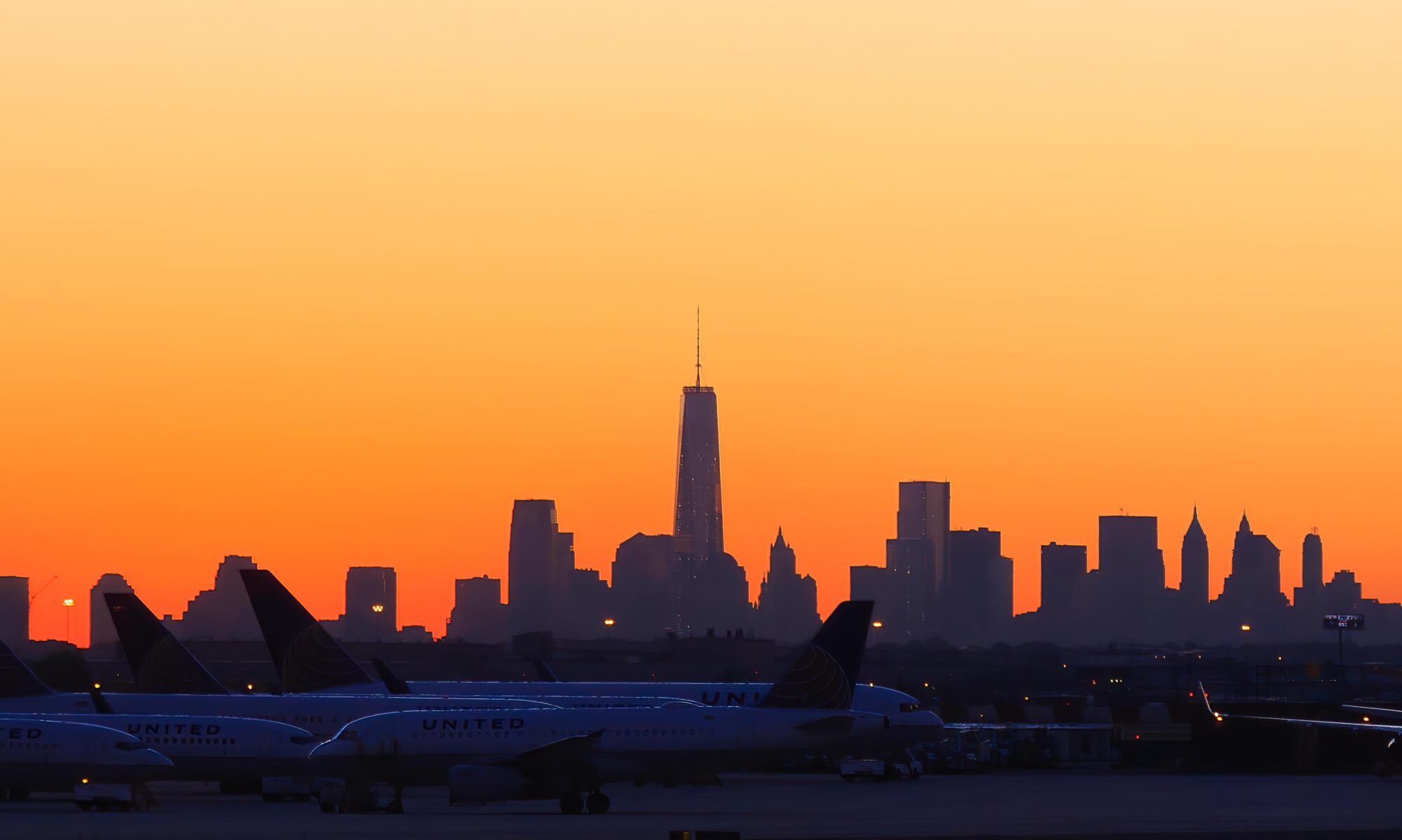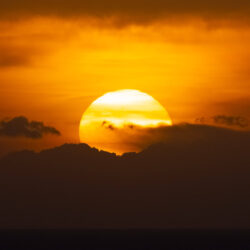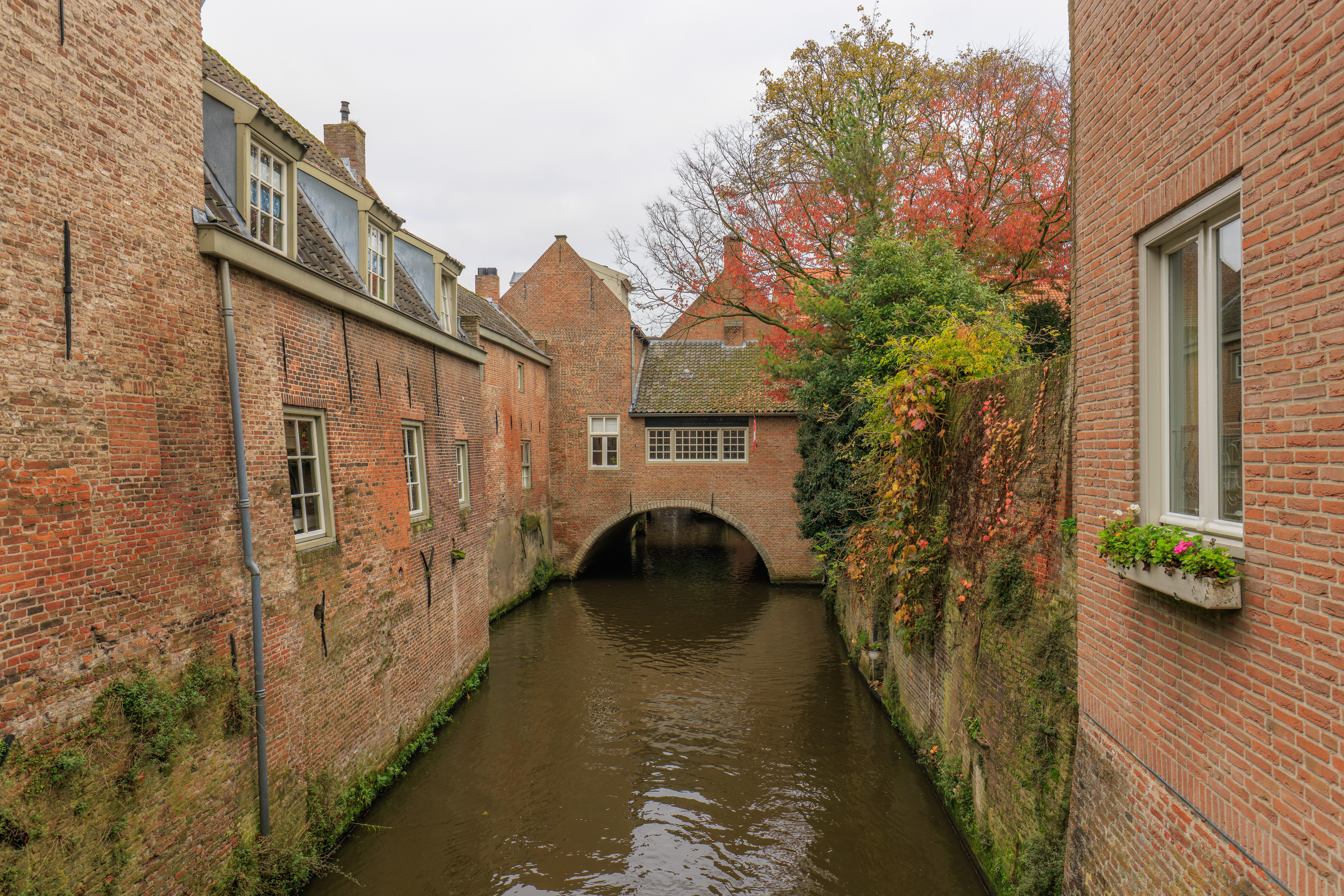After waking up at the Apollo Hotel and having breakfast, we took the train to Den Bosch. Once there, we took a canal tour and visited a museum dedicated to local painter Jheronimus Bosch. We followed up with a quick visit to St. John’s Cathedral before meeting up with a friend.
Morning
After waking up at the Apollo Hotel, we headed to the restaurant for breakfast. It starts at 6:30am on weekdays, which is nice as we prefer to get an early start, particularly during this time of year when daylight hours are limited.
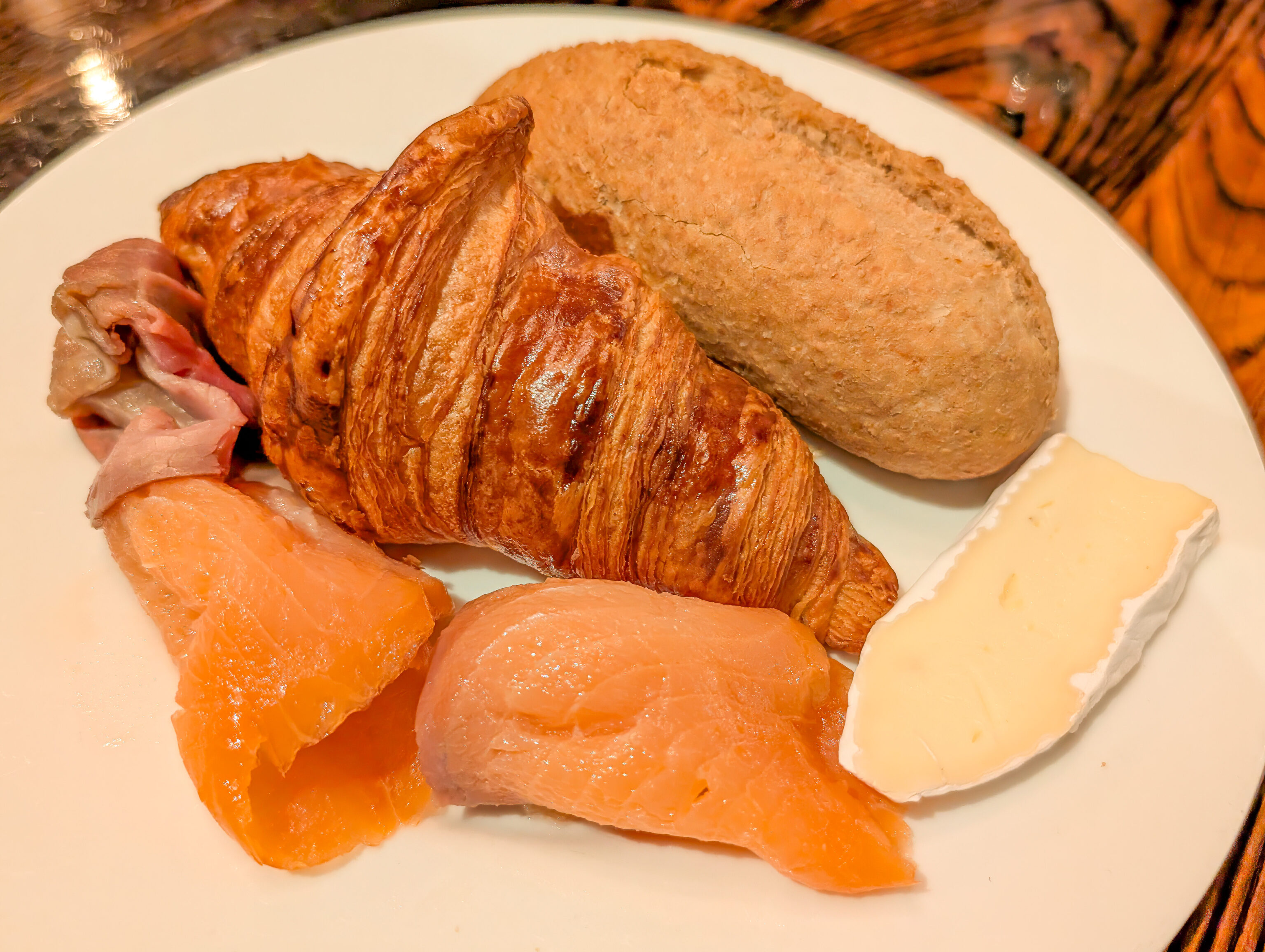
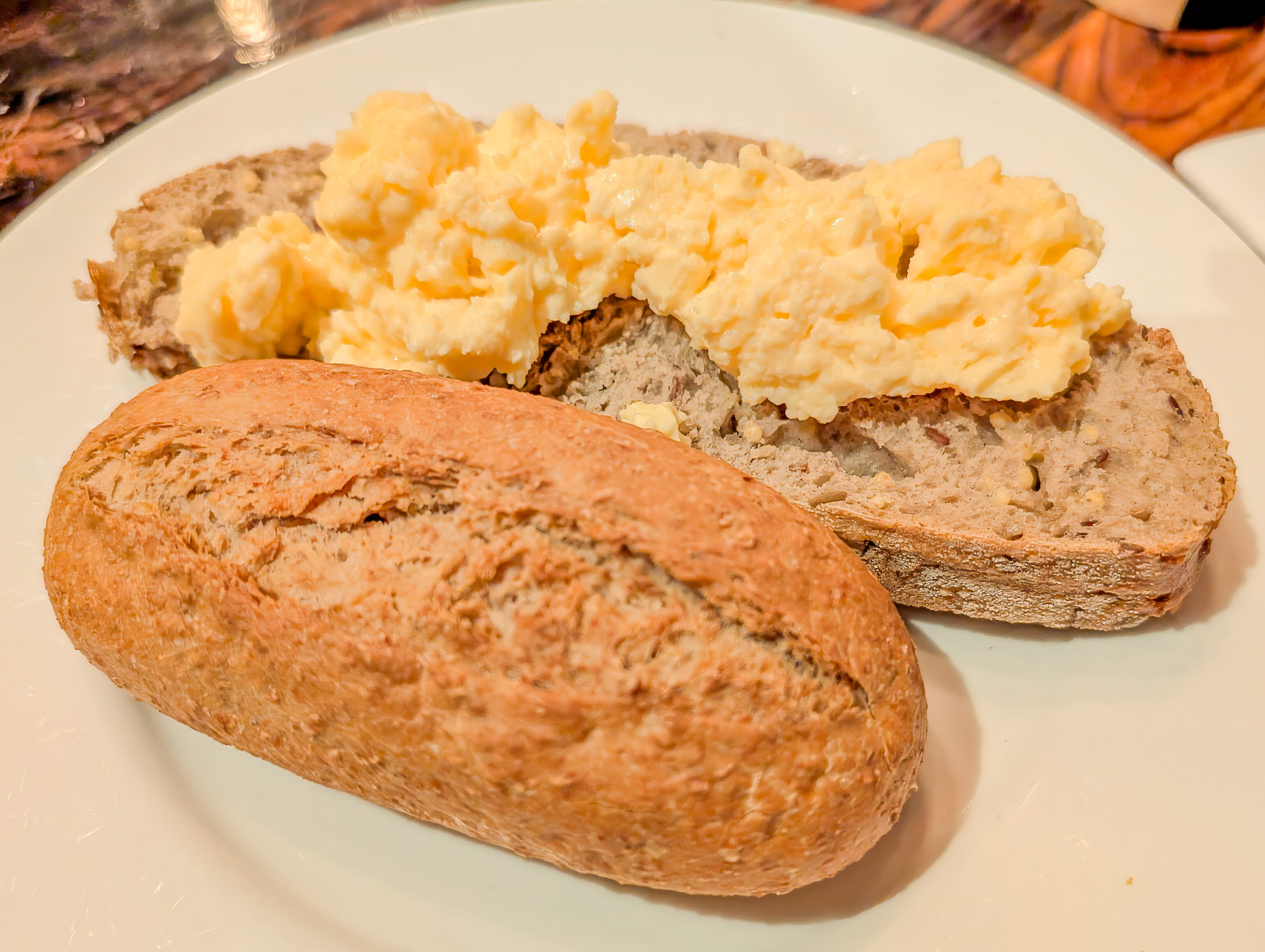
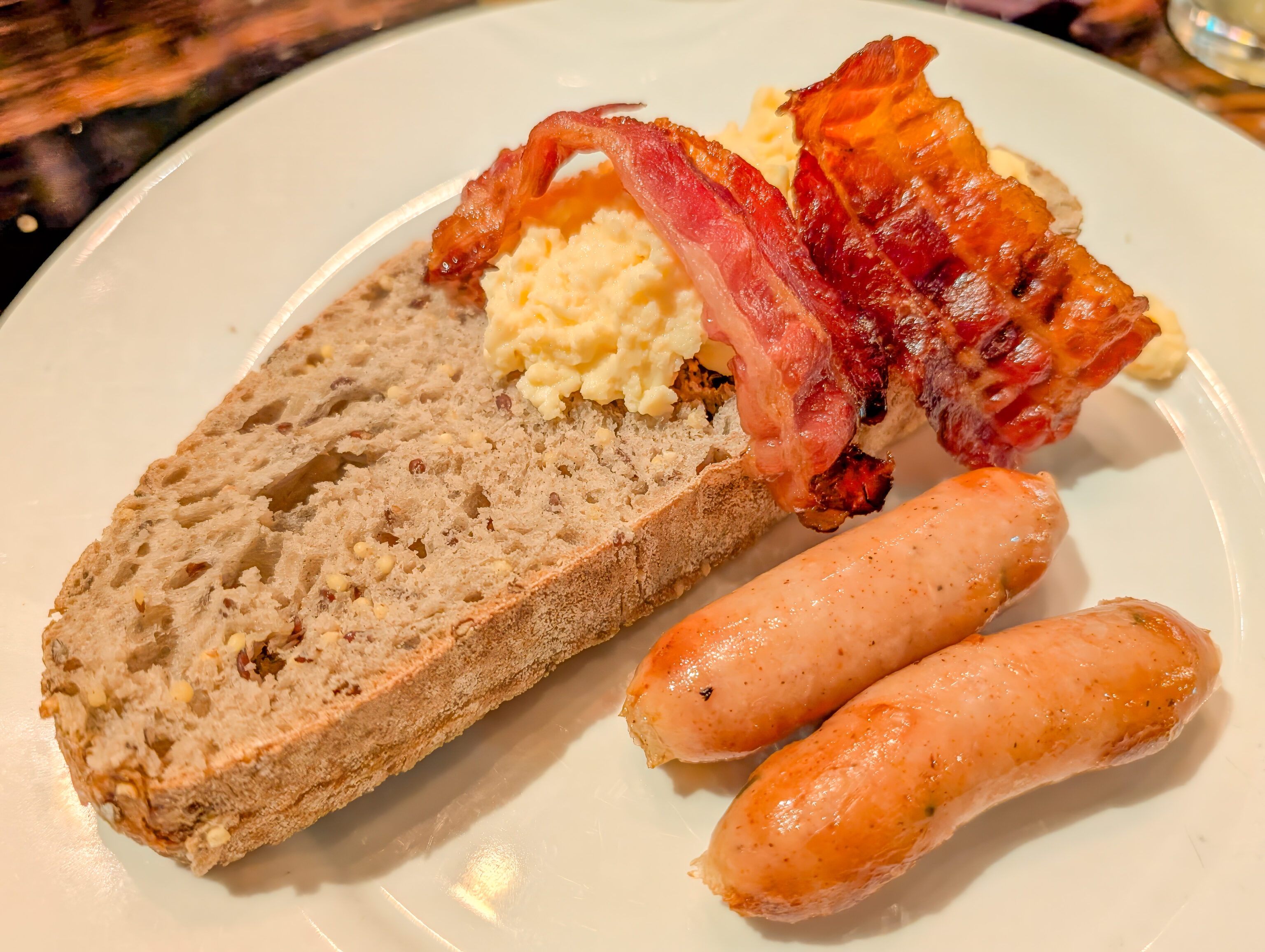
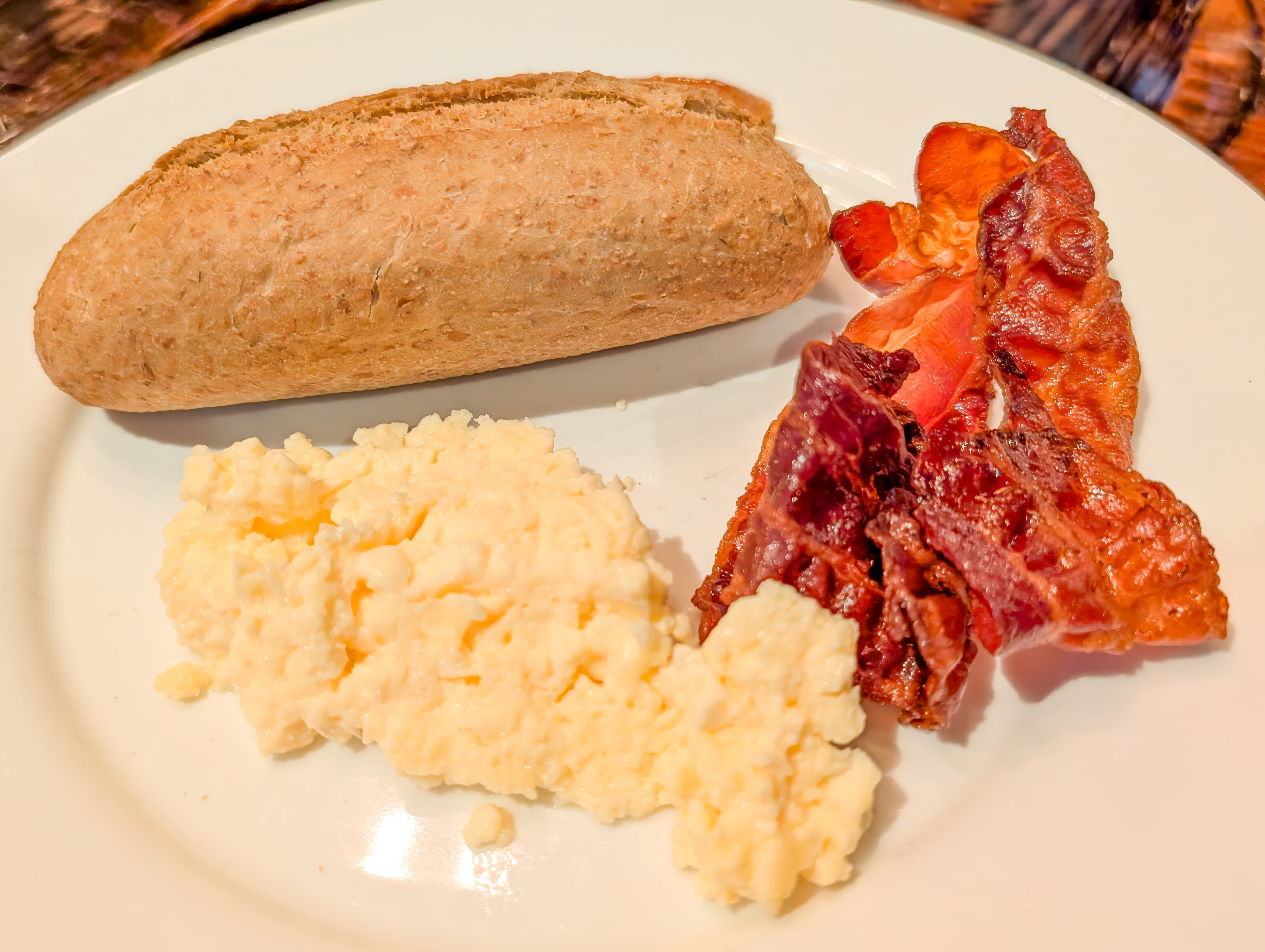
The kitchen was understaffed when we arrived and the hot items weren’t ready yet. So, we made do with some bread and cheese and other cold items. A true continental breakfast as we are on the continent! Hot items began slowly showing up soon though, with eggs initially followed by bacon and sausages.
The bread was excellent, as it often is in Europe. Definitely better than bread in America! The smoked salmon was fantastic as well, again, as it often is in Europe. The slices of beef, probably what we would call roast beef, were much better than expected. The sausages were interesting and a bit different. As for the bacon, well, no American would consider this bacon to be any good! They managed to capture that state where it is hard but not crispy.
Today, our plan is to visit Den Bosch and also meet up with a friend there in the afternoon. So, we began the trip by heading to the nearby tram line 12 stop at van Hilligaertstraat.
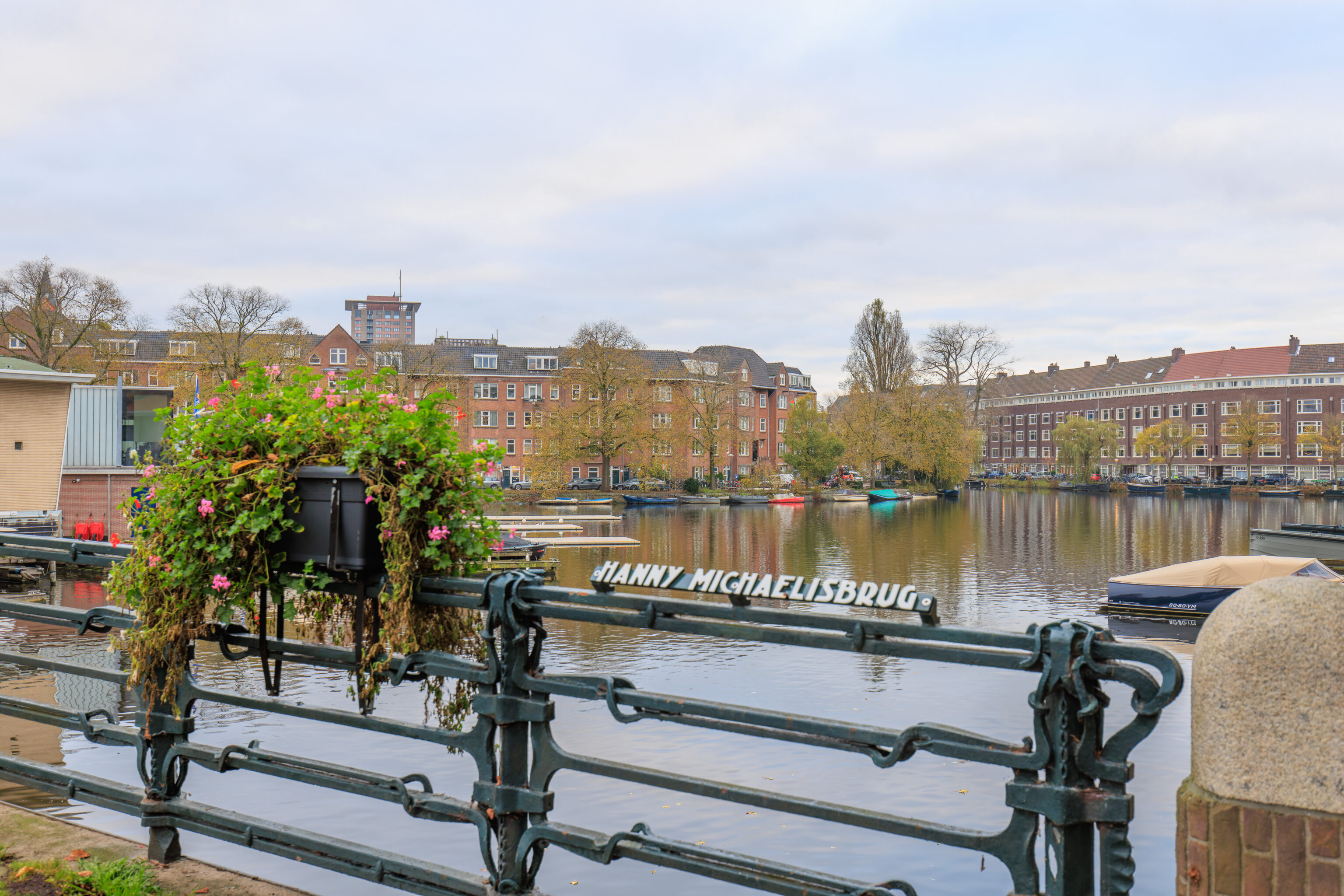
We had some rain yesterday afternoon but this morning, the weather looked good. It was overcast but dry.
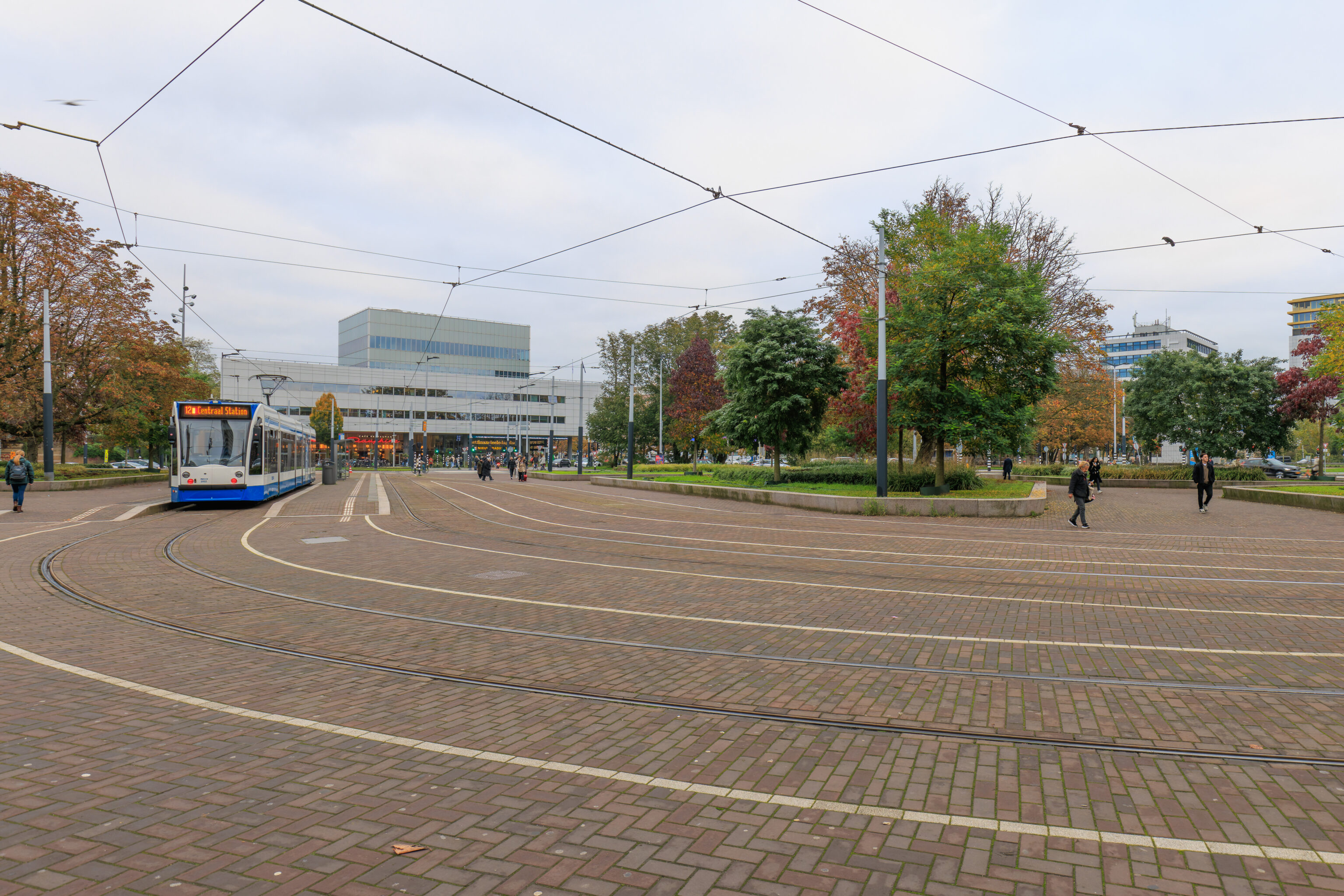
We took line 12 to the end of the line at Amstel Station.
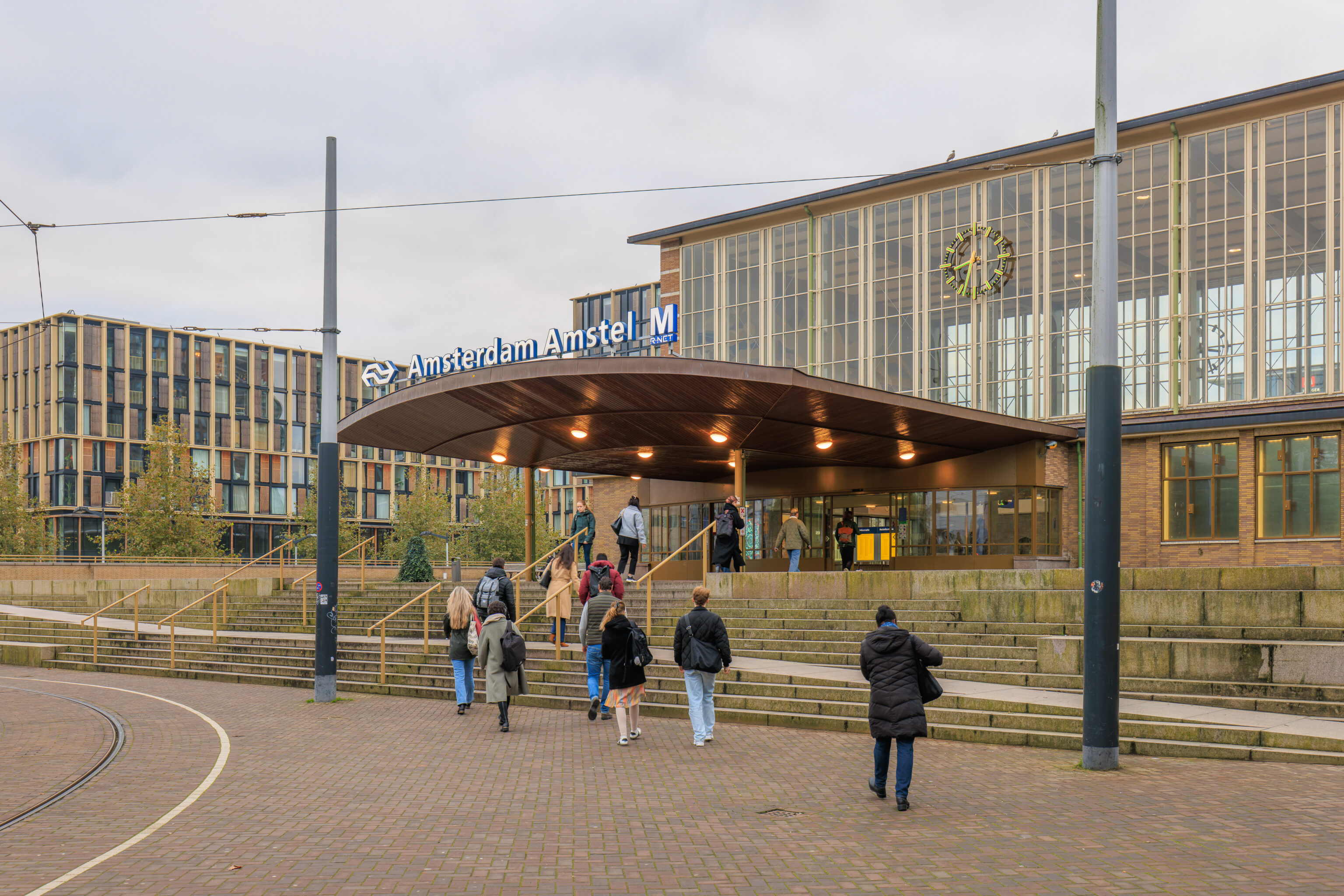
This train station is the city’s major southeastern station. It wasn’t very busy when we arrived at 8:30am. Its more likely that people would be coming into the city during rush our rather than going from the city to this station to head out.
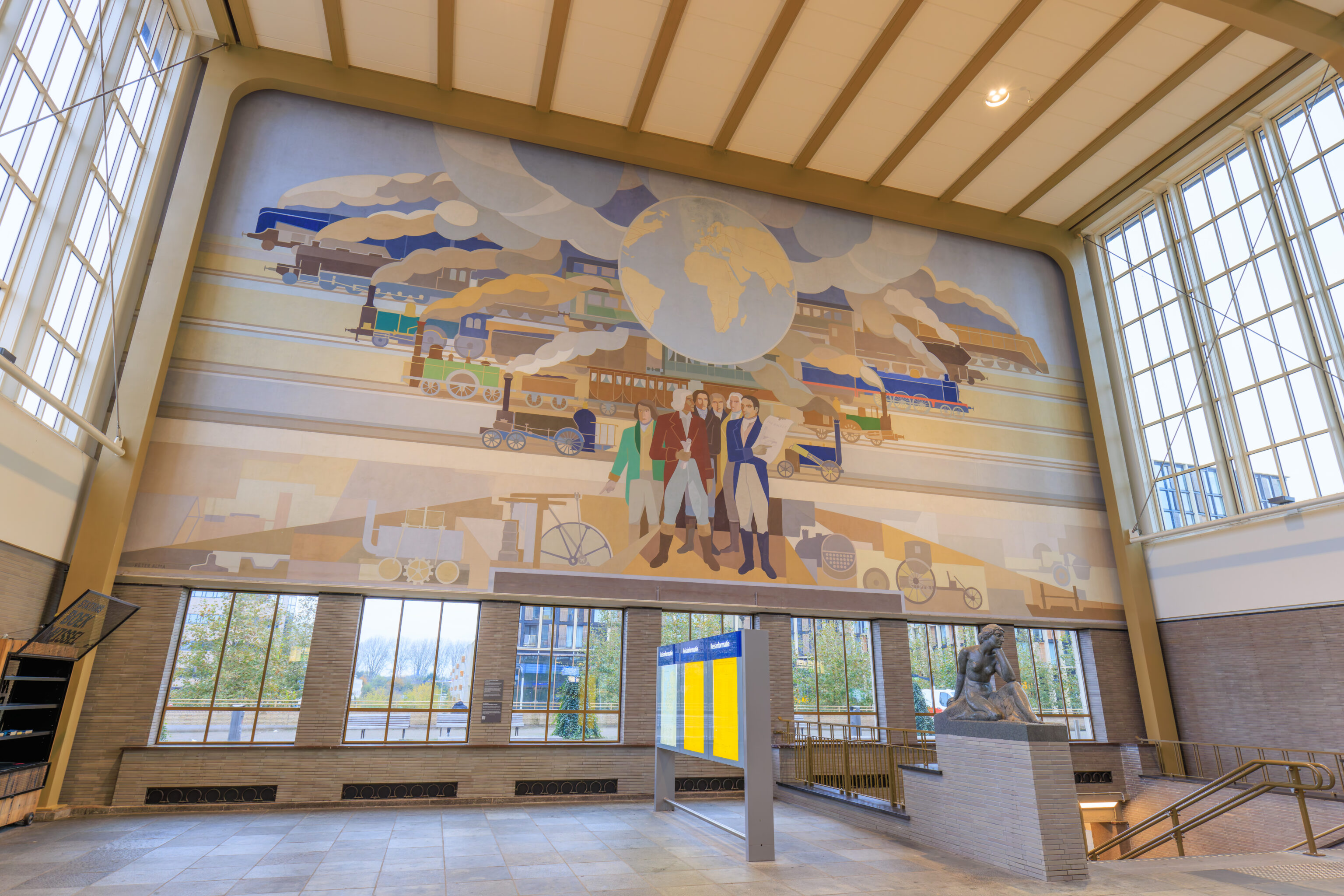
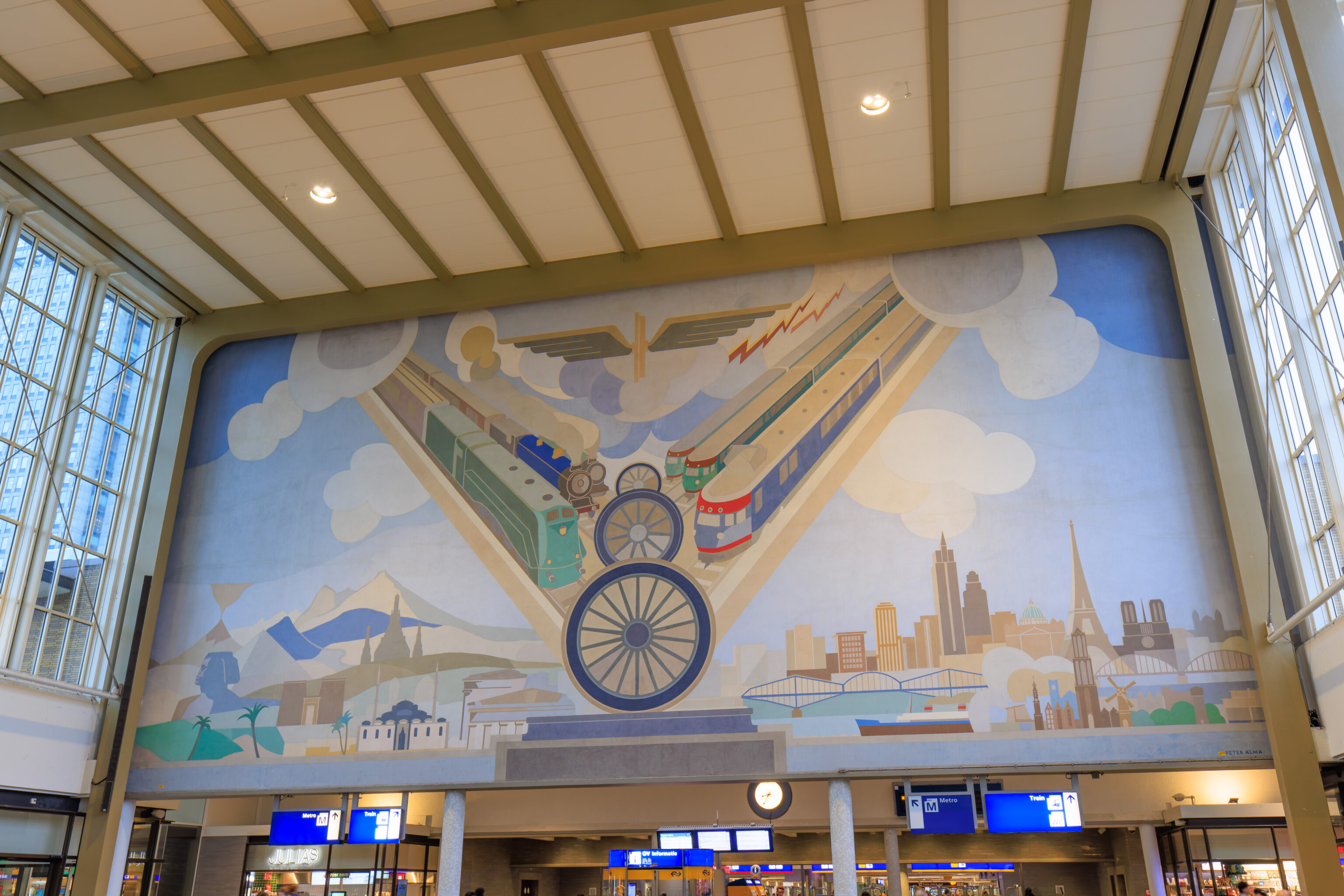
We entered into a small hall which just serves as a large entrance area. There were two grand paintings on either end of the hall. The art was quite reminiscent of what one might expect in the US before the post-war period when automobiles rapidly replaced rail as the dominant form of transportation.
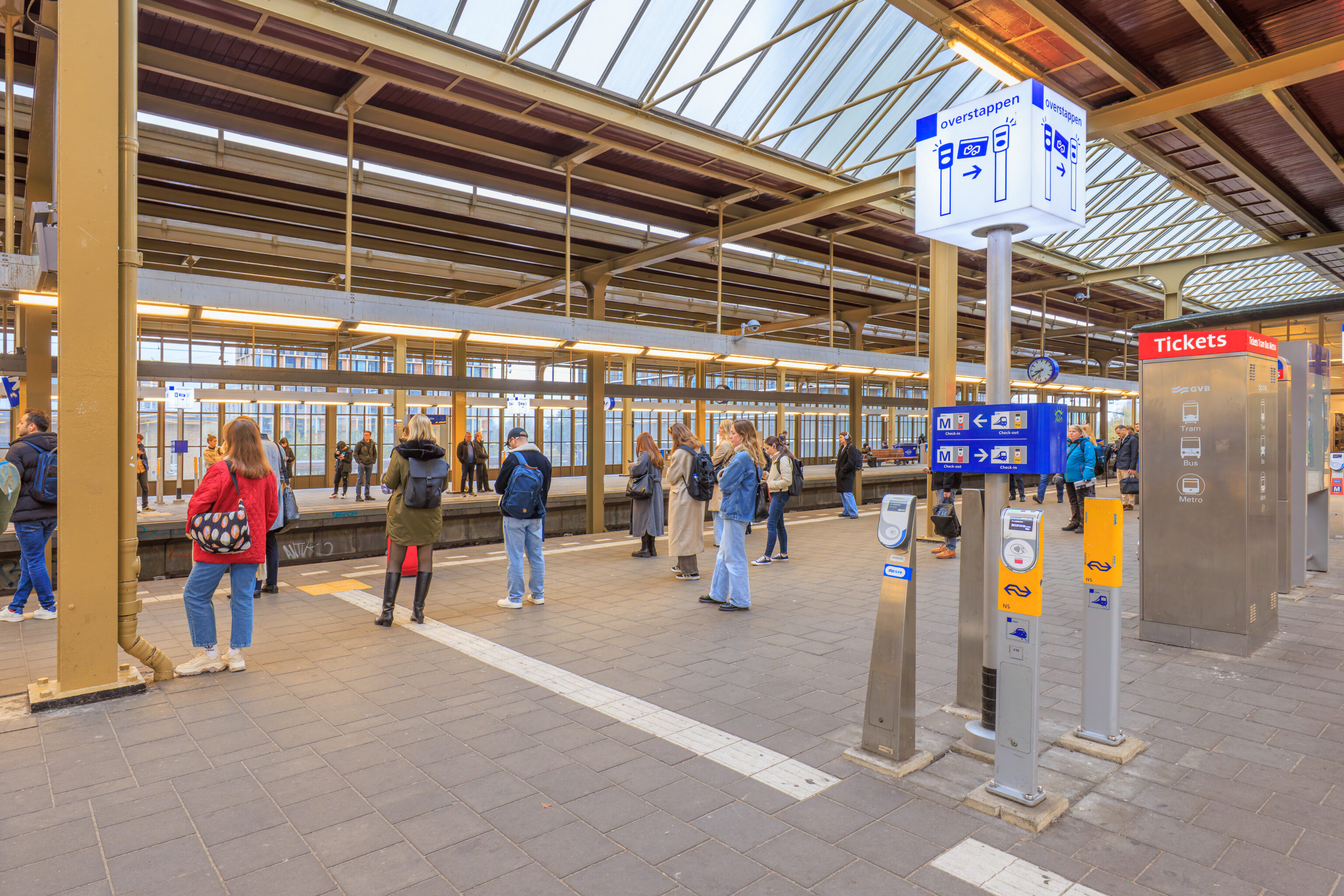
The Netherlands has an integrated payment system which operates either via contactless fare cards or the more or less equivalent use of credit cards. One quirk of this system is that for rail, that is, not trams, you need to tap in and out whenever you enter the system, exit the system, or change operators. That means you need to know the difference between, say, a NS train or a GVB train. You also need to know whose faregate you entered through. But, you don’t need to tap when transferring to a train by the same operator. There are also trains that require the payment of a supplemental fare, kind of like a limited express ticket in Japan, though we did not need this for our trip today.
Den Bosch isn’t too far away, just 50 minutes or so by Intercity train. The national rail system, operated by Nederlandse Spoorwegen, seems to have two types of trains, Intercity for longer distance travel with minimal stops, and Sprinter as more of a local service with more stops and thus a longer travel time.
‘s-Hertogenbosch
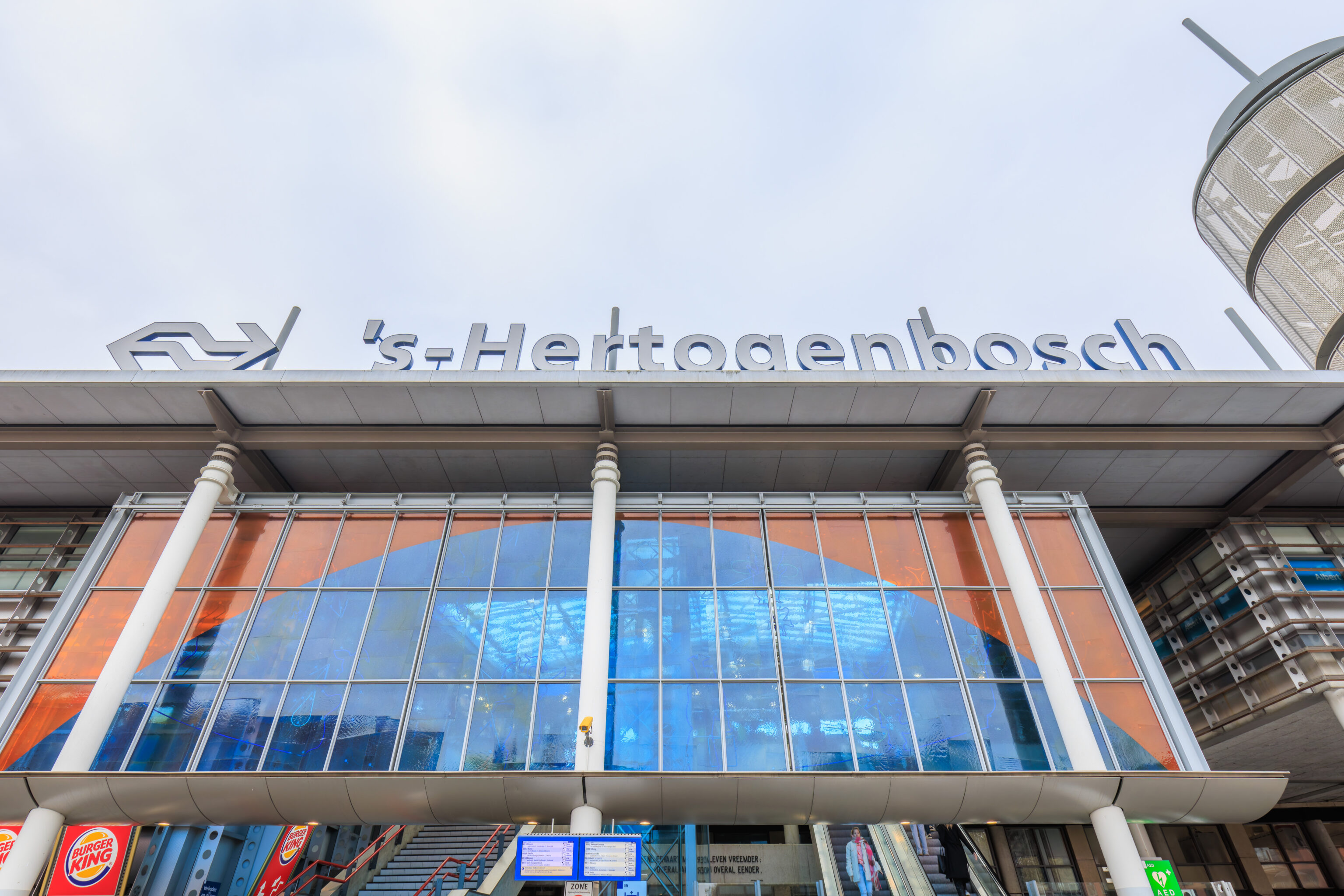
We arrived at Den Bosch at around 9:50am. Den Bosch isn’t the actual name of the city, which may be apparent by the title of this section and the letters atop the station! The formal historic name of this city was des Hertogen Bosch, The Forest of The Duke. Bosch is apparently archaic Dutch for bos, meaning forest.
In modern times, this has become ‘s-Hertogenbosch, with the ‘s being a contraction for des. A Quora answer further explains that the dash is to associate the des with hertrogen (duke) rather than bosch (forest). So, it is The Duke’s Forest, not The Duke Forest.
Thankfully, Google knows that when you search for Den Bosch, you really are looking for ‘s-Hertogenbosch!
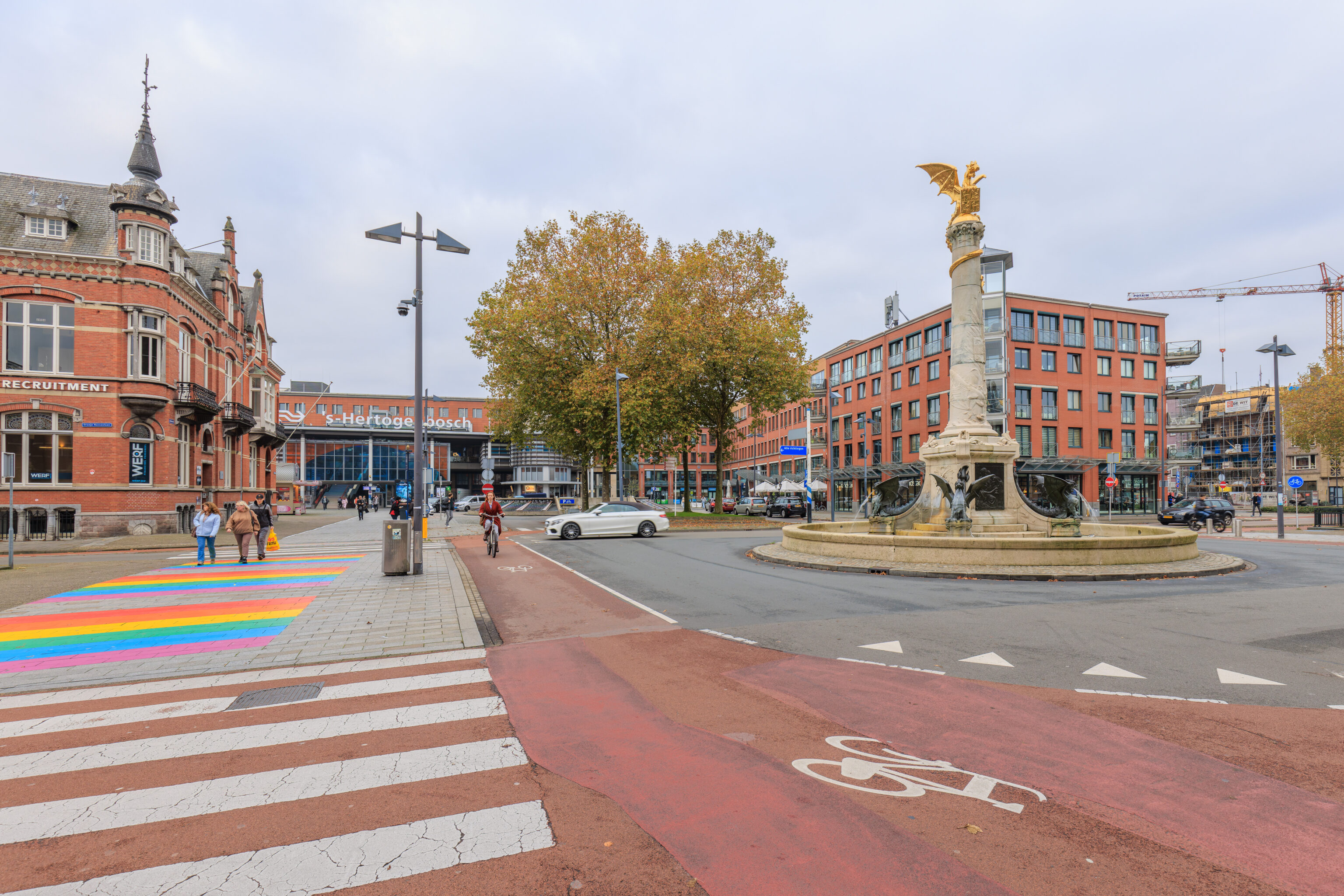
A block away from the train station to the east, we came across an intersection with a traffic circle in the middle. And in the middle of the circle, the was a dragon perched on a stick! There were also smaller dragons spitting water! This dragon is something of a symbol of the city [see The Monumentous and I Becoming Dutch].
There is also a rainbow crossing on the south side of the dragons!
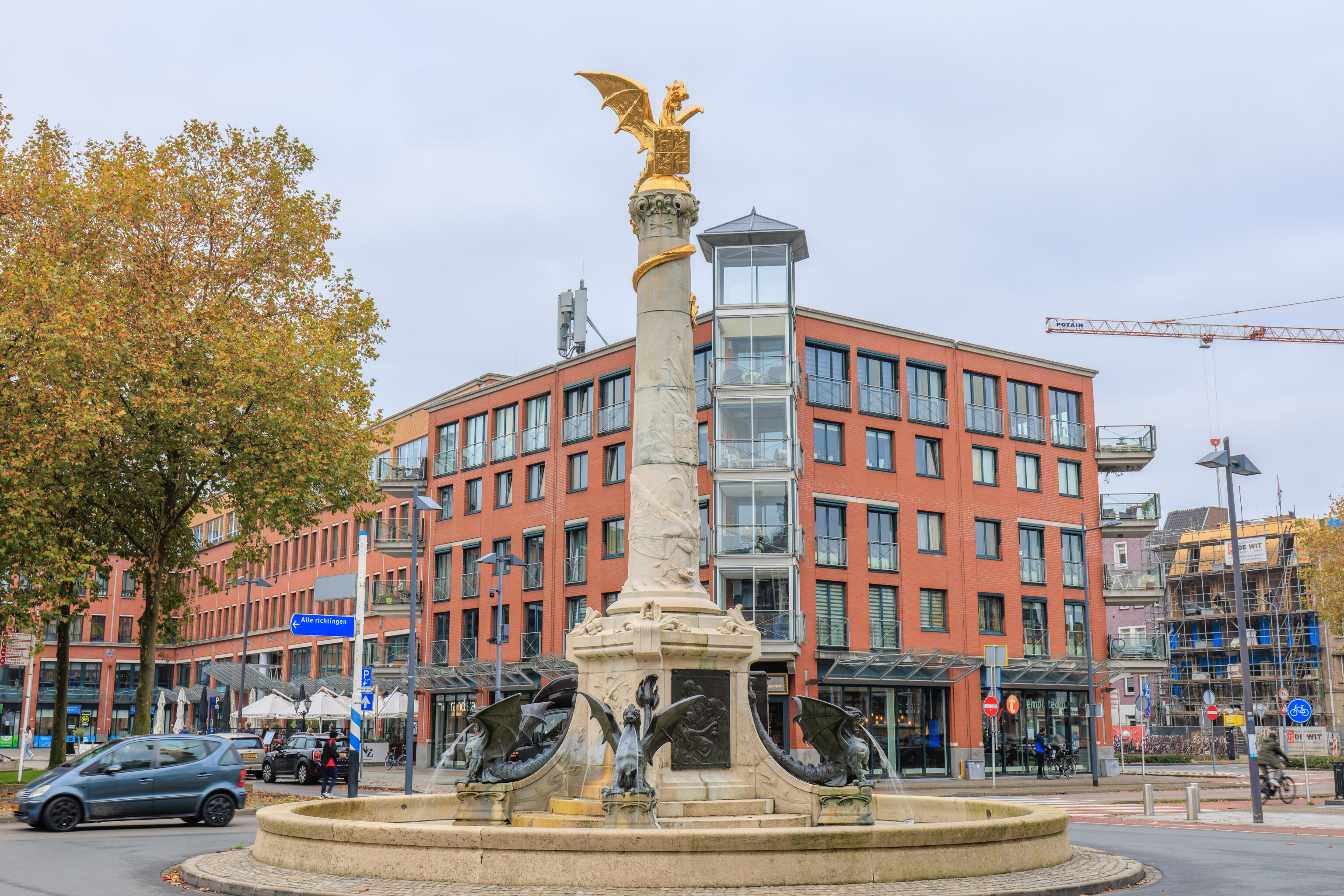
A slightly larger view of the dragon pillar fountain monument traffic circle.
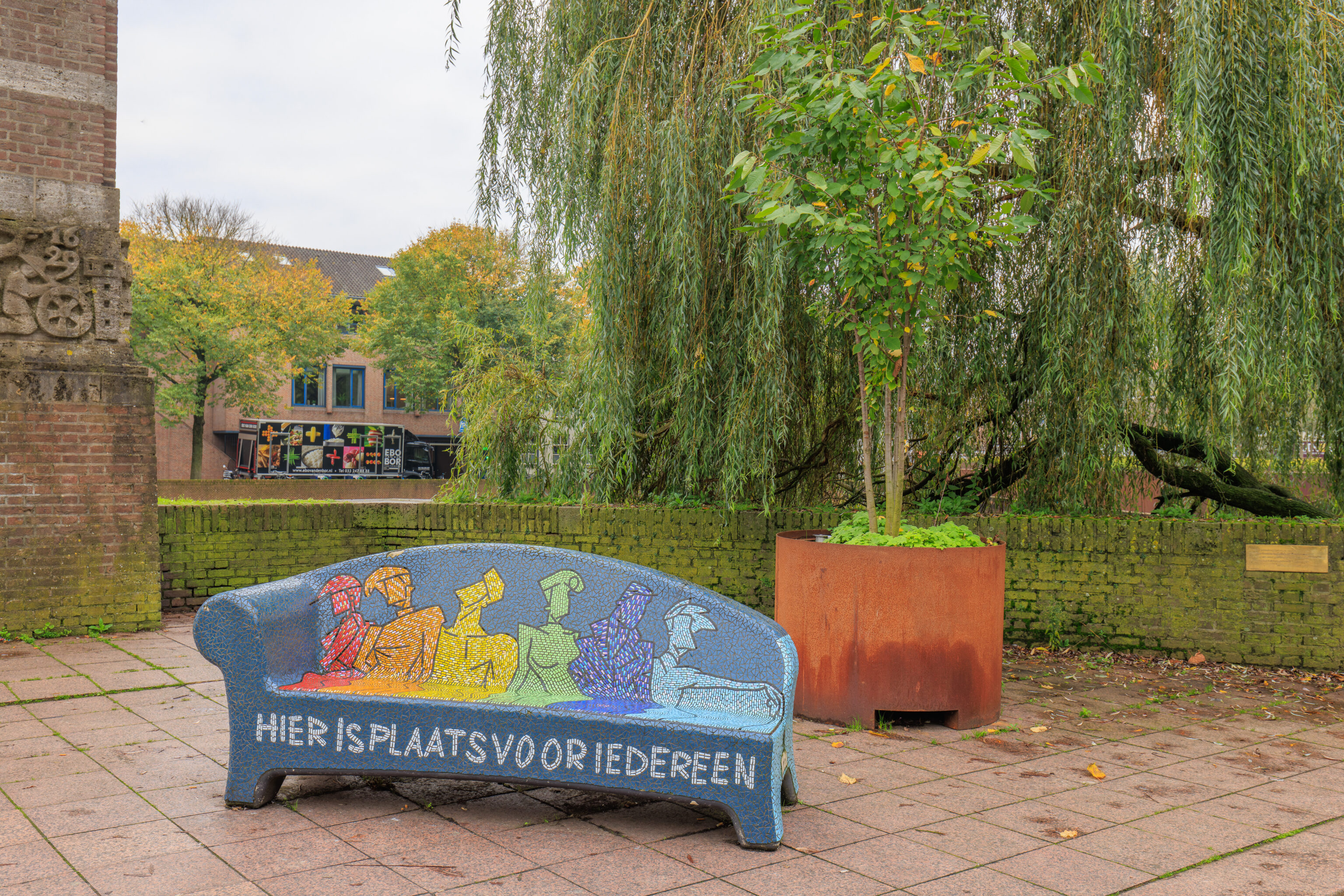
At the next intersection to the east, we came across a rainbow painted bench. “Here is a place for everyone.” Very simple!
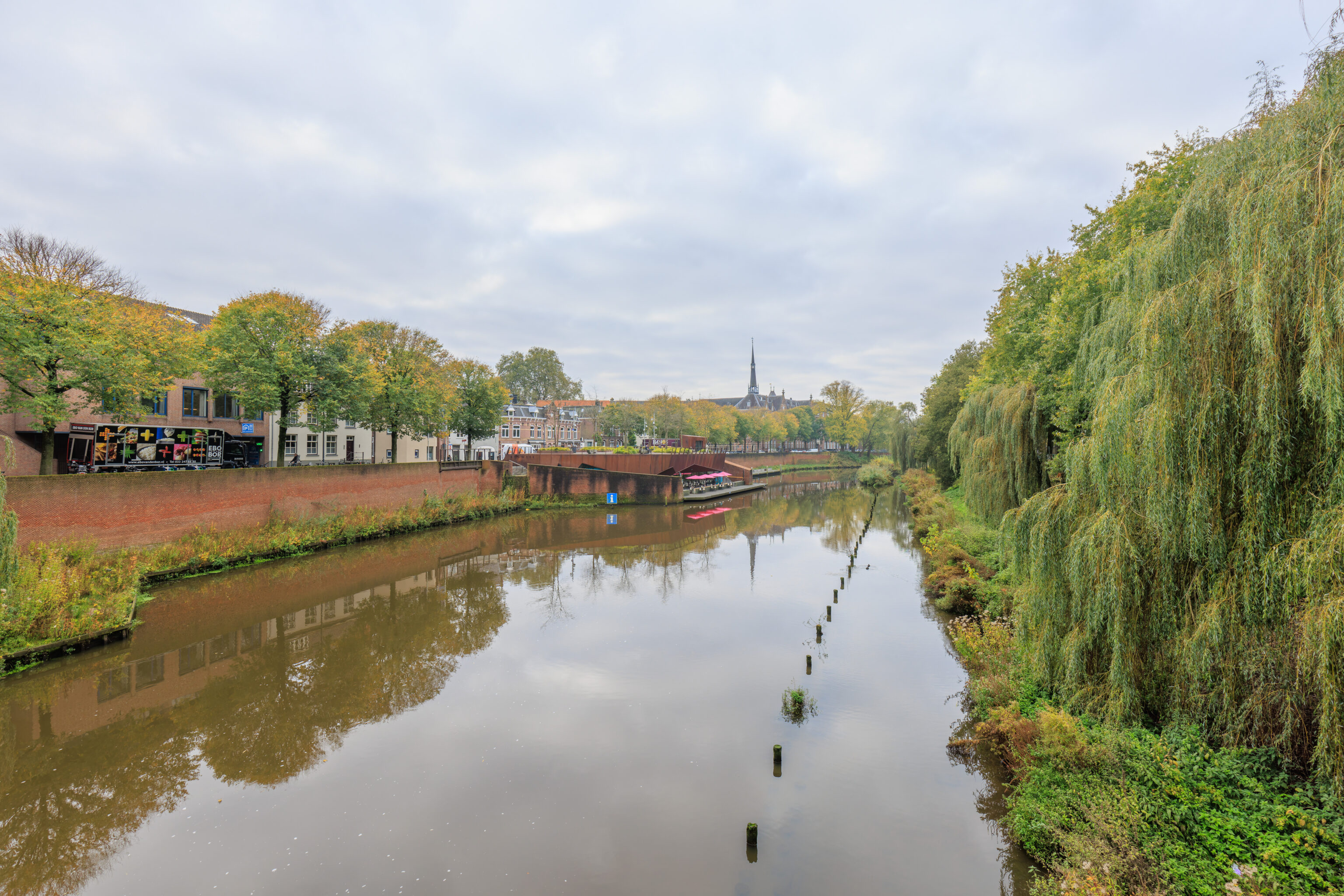
We crossed over a river, or possibly a wide canal!

We scheduled a canal tour here in Den Bosch for 11;20am. However, it was only 10am so we had plenty of time to wander around in the city, but not enough time to go too far.
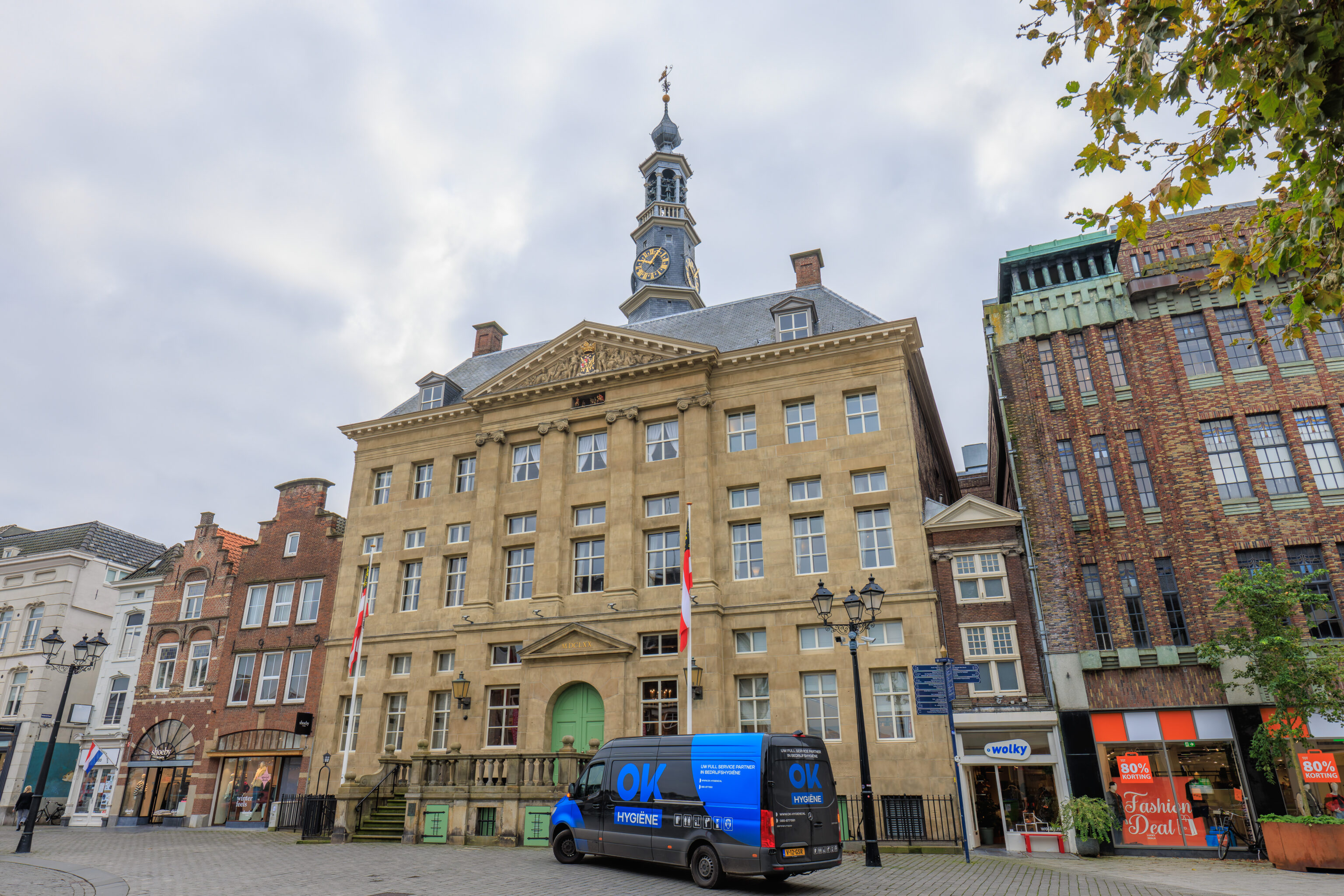
We ended up right in front of the Stadhuis (City Hall). It was at the corner of a plaza which wasn’t too busy at this hour.
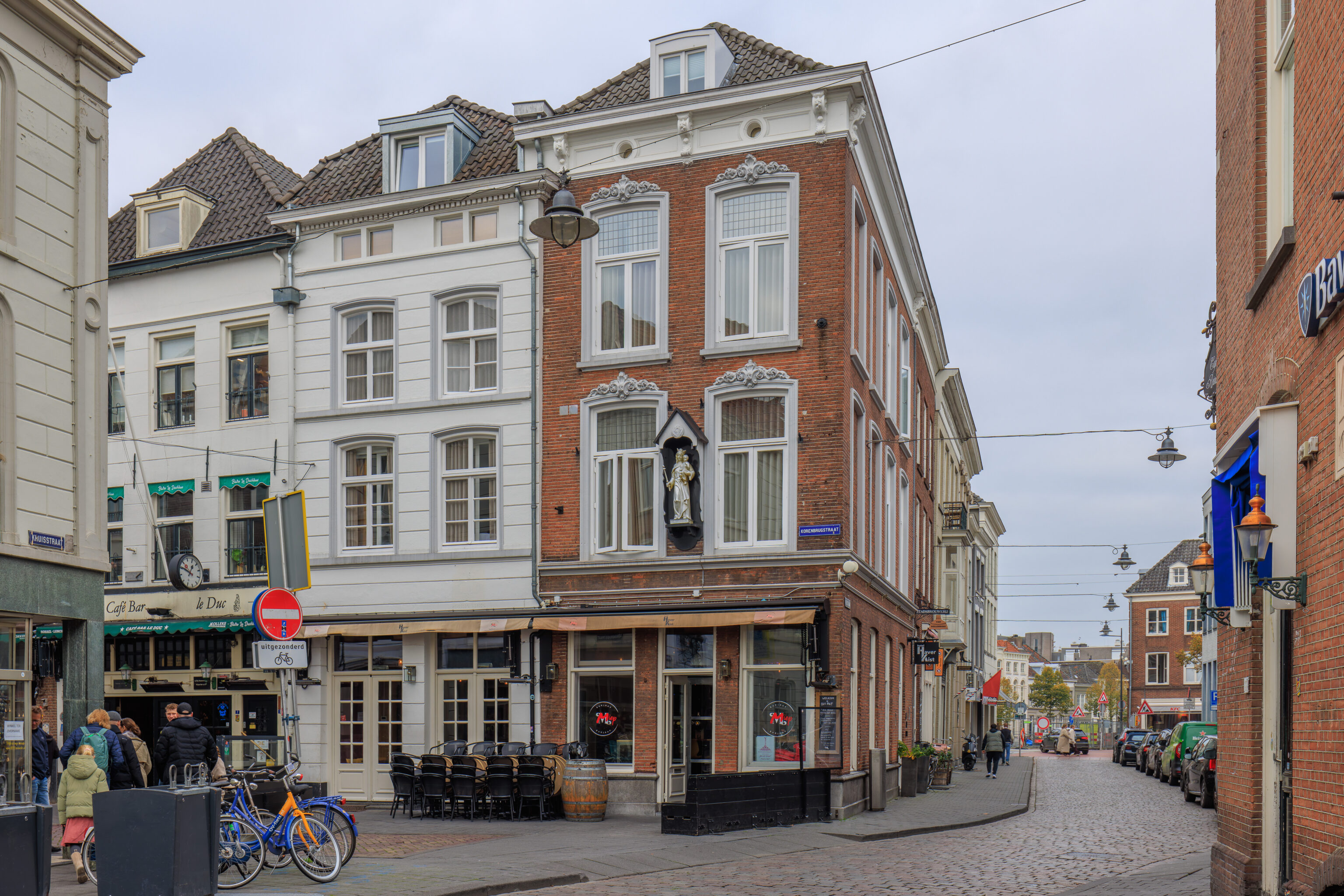
The city had a variety of buildings with various decorations on them. The brick building at the center has a small statue between the windows with small text that seems to read ONS LIEF VROUWKE, or Our Dear Lady in English, which seems to translate back to Onze Lieve Vrouw.
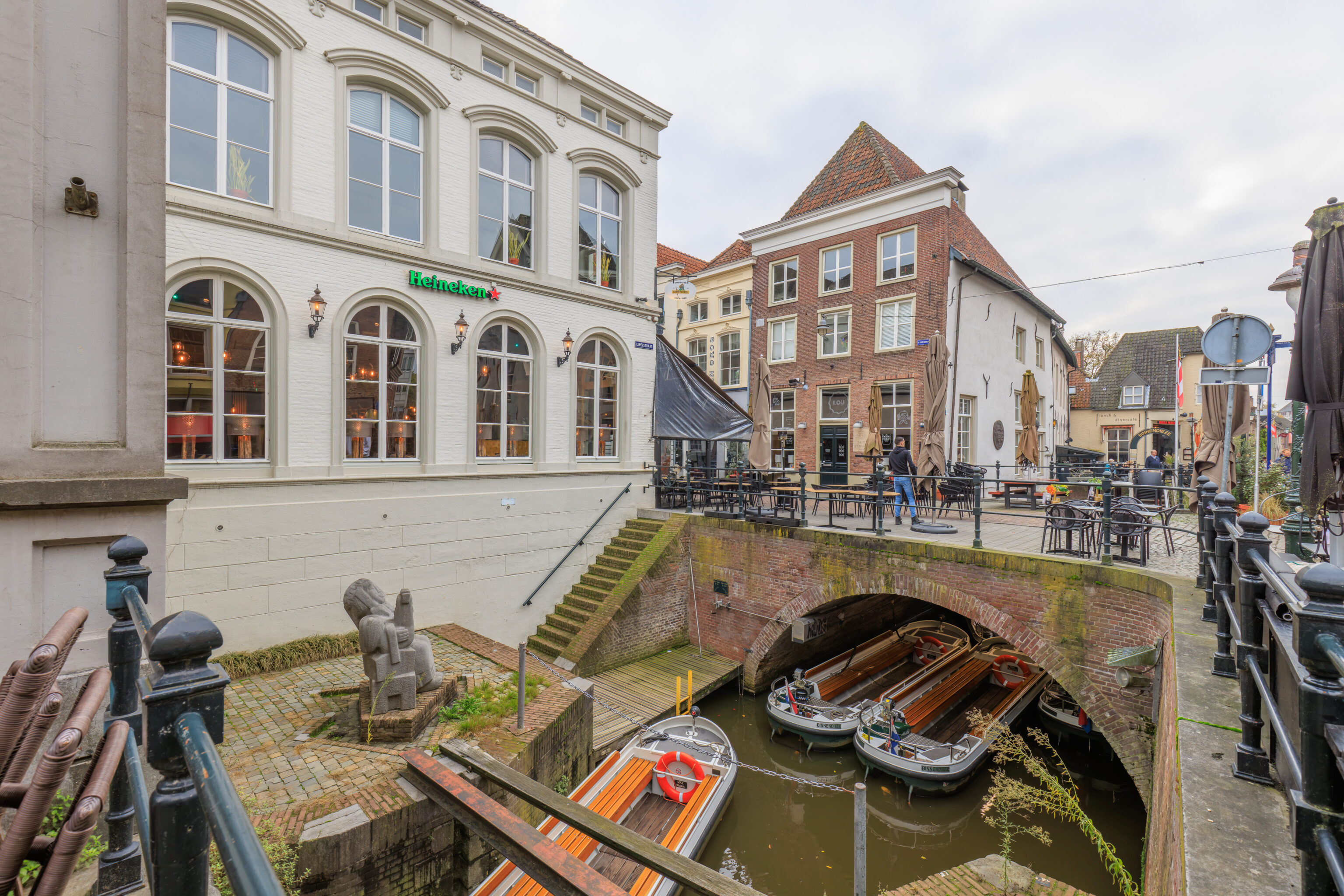
We found where the canal tour departs from with still an hour to go.
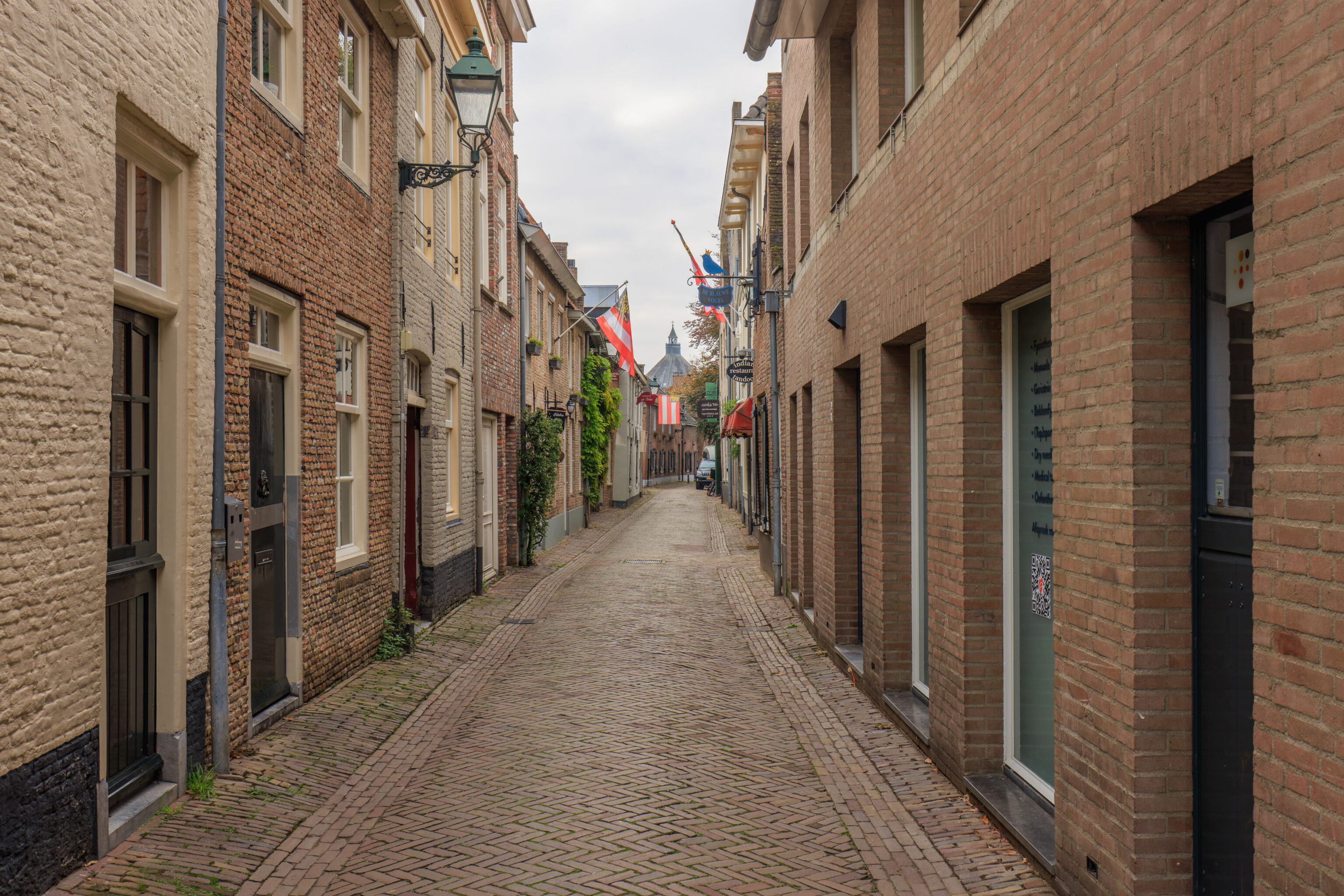
We decided to wander around some more.
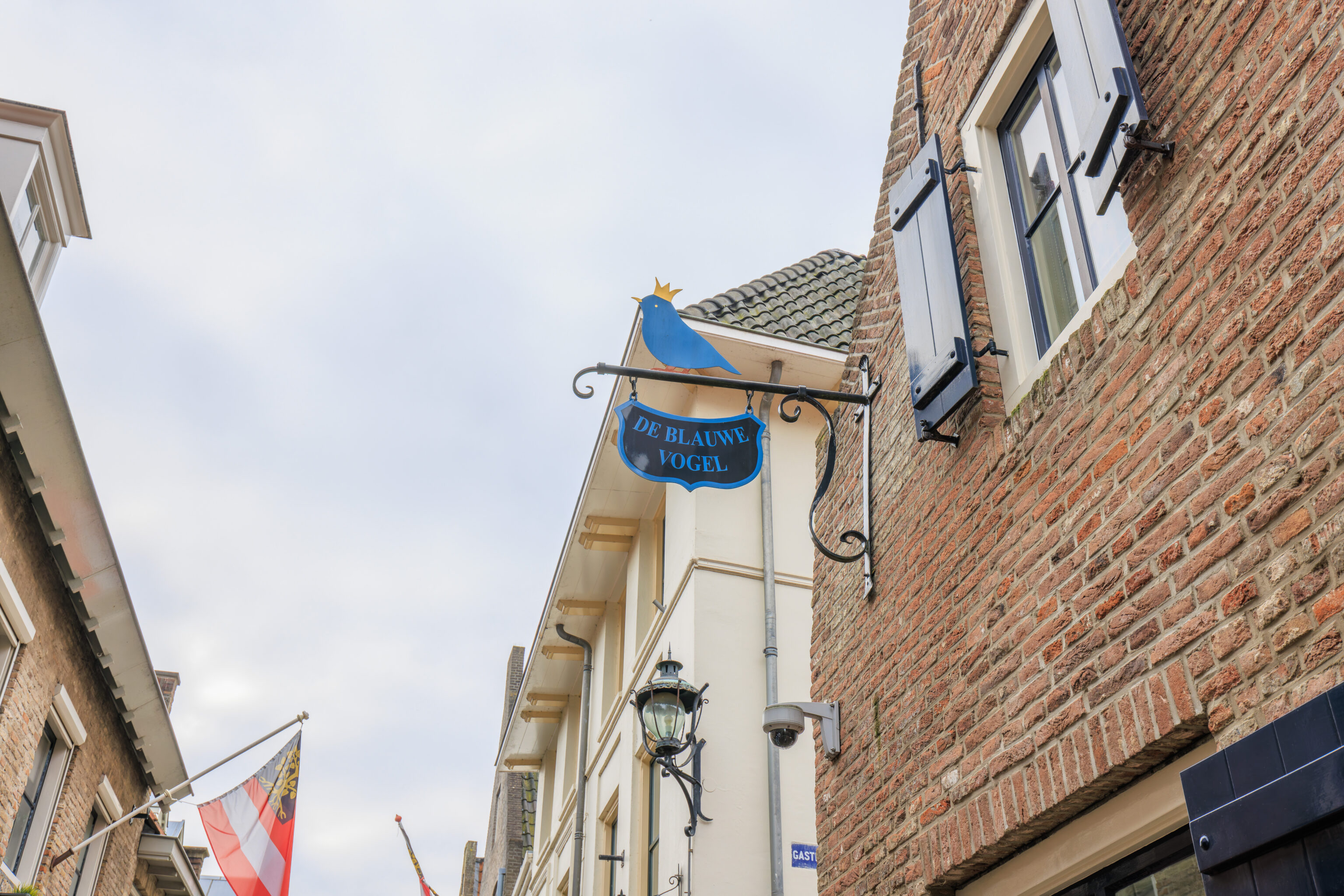
“The Blue Bird”
While there are blue birds in Europe, there are no bluebirds as they are three American species of thrush.
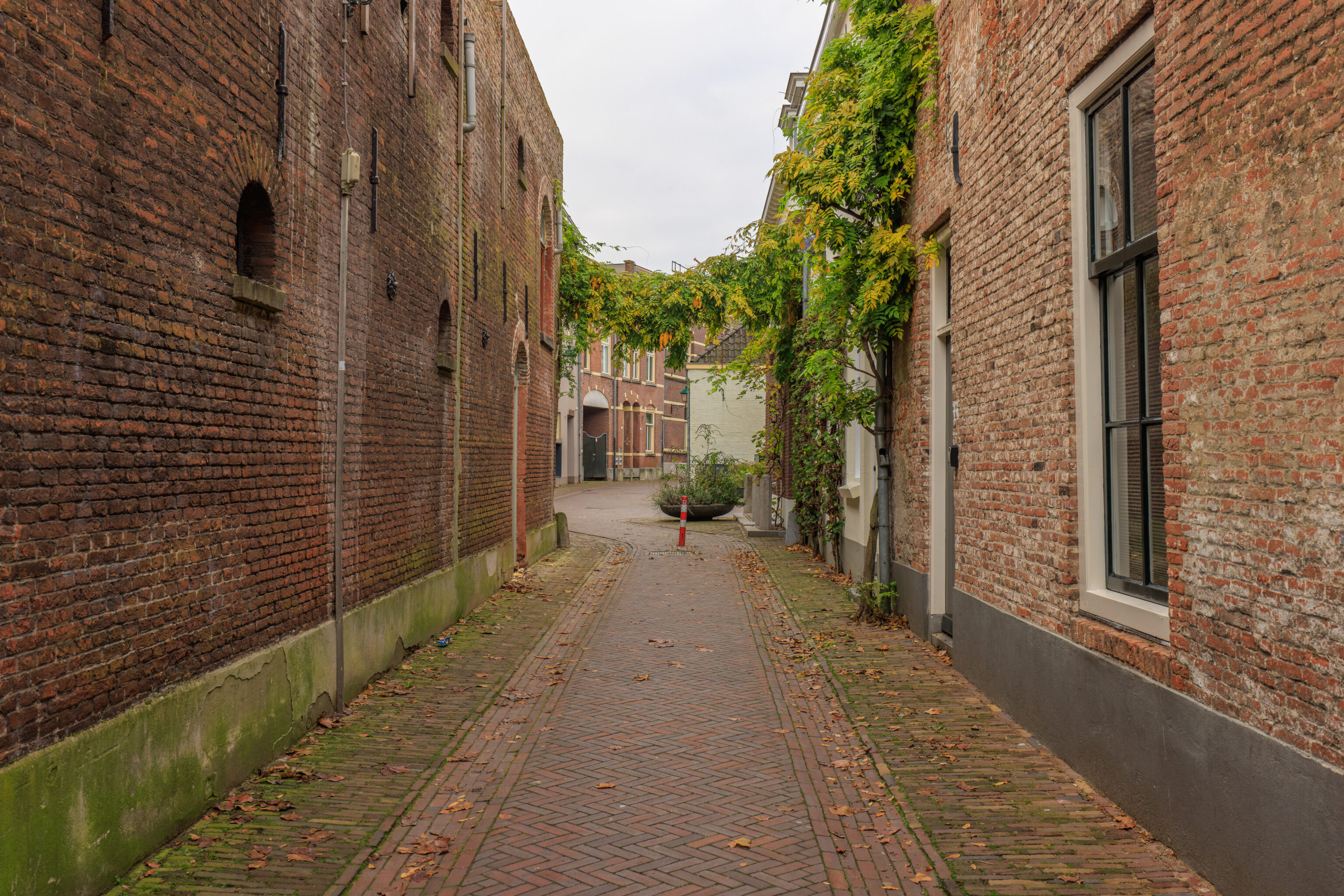
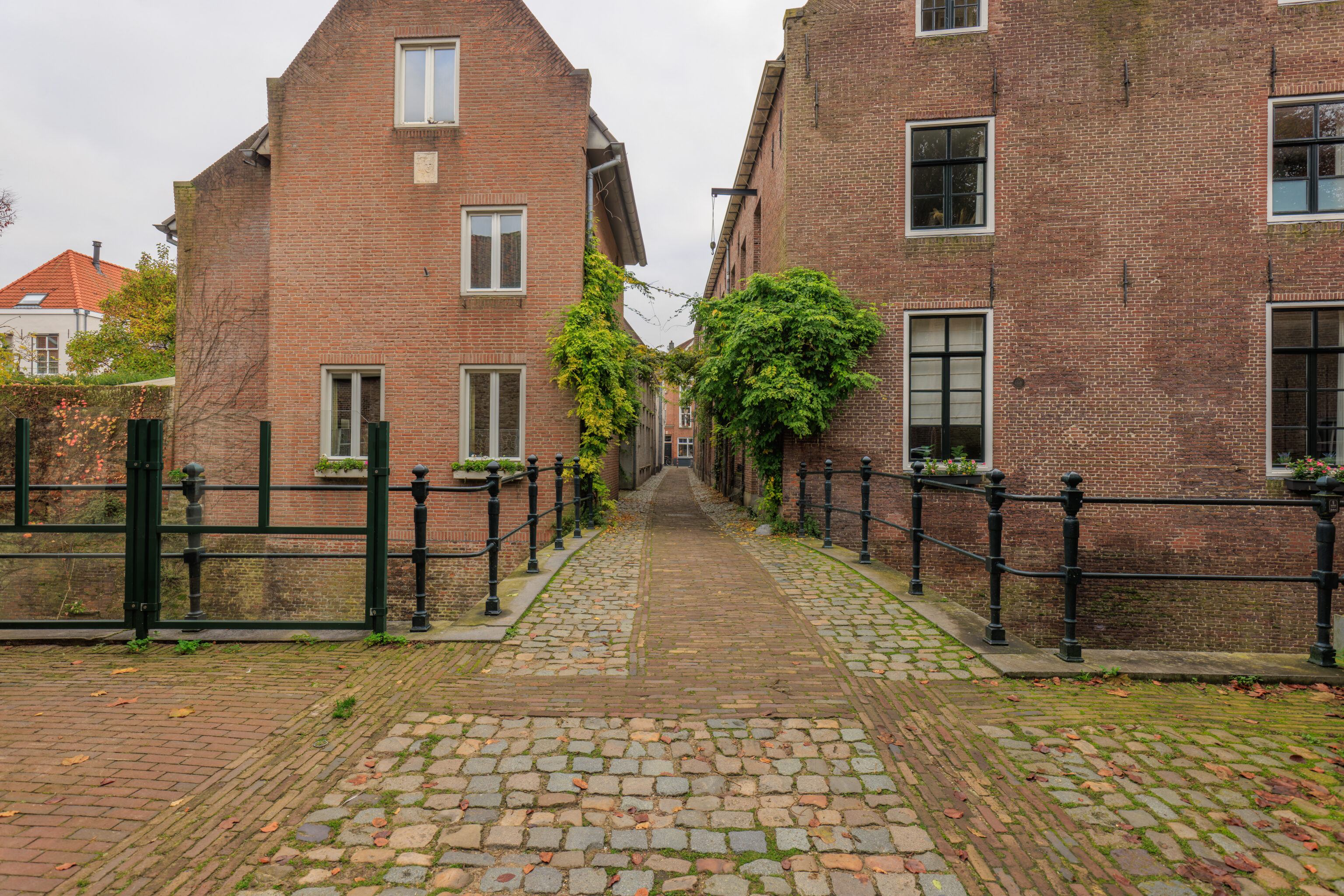
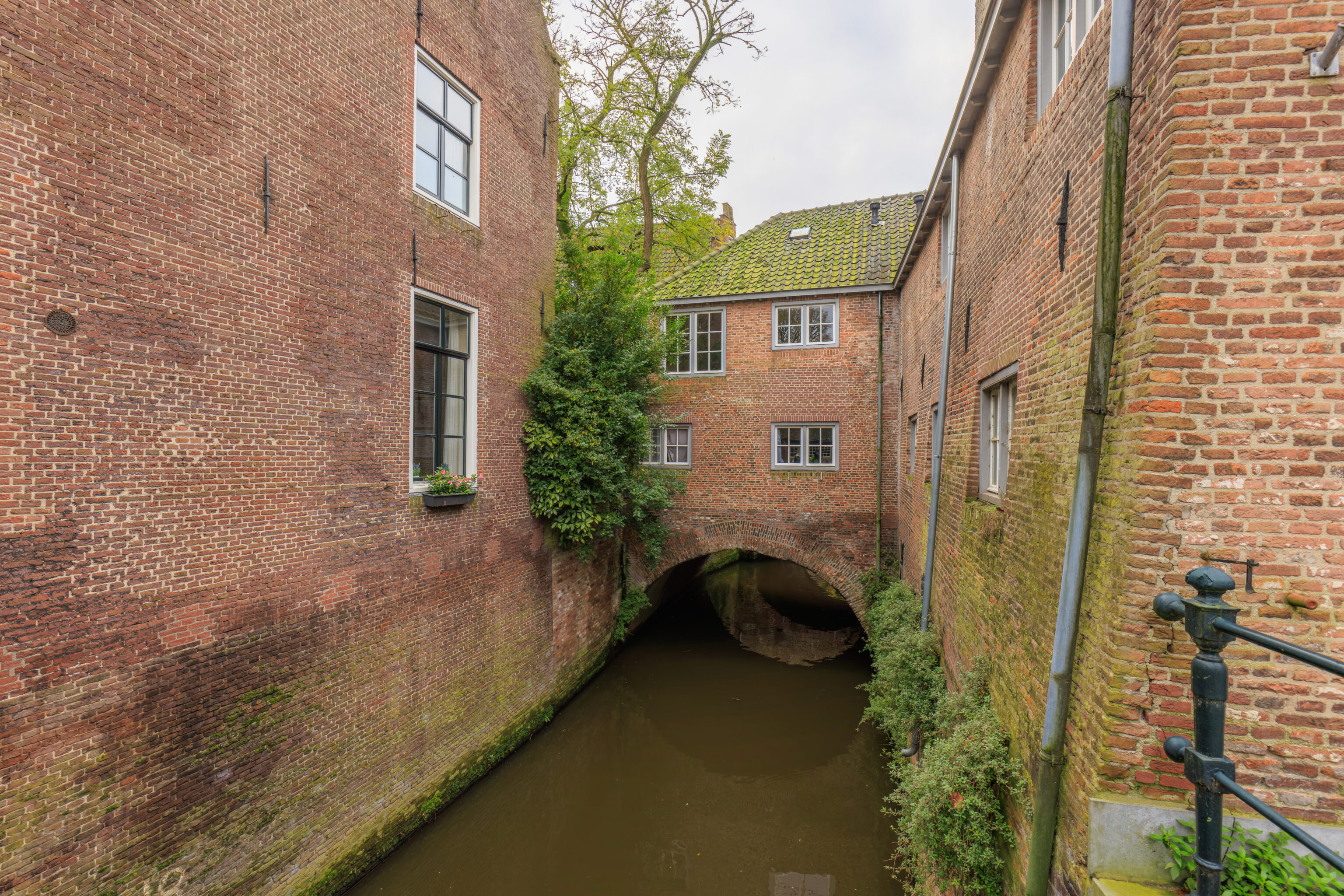
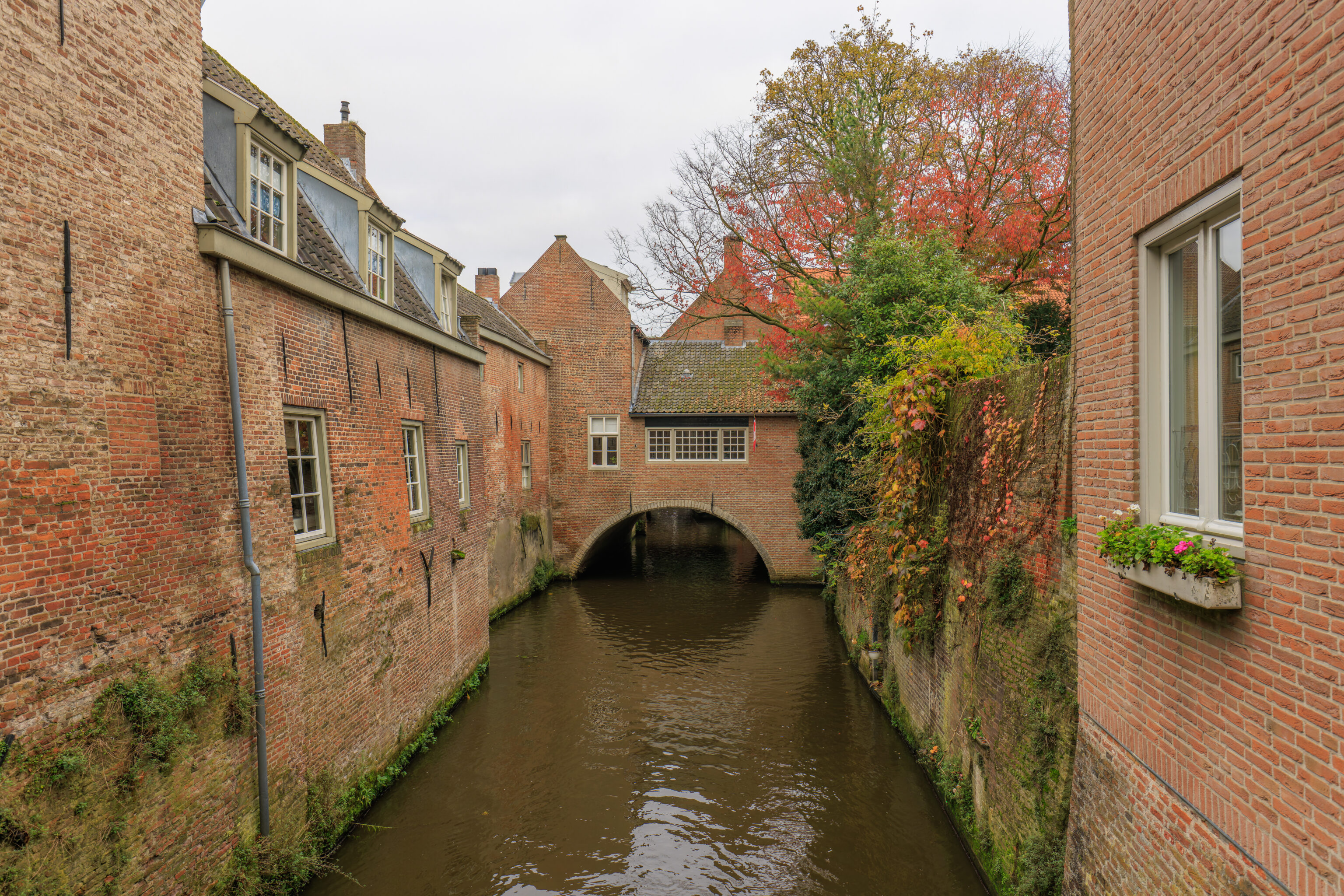
We continued walking through the mostly deserted roads and alleys, passing over the canal that we would soon be visiting by electric boat.
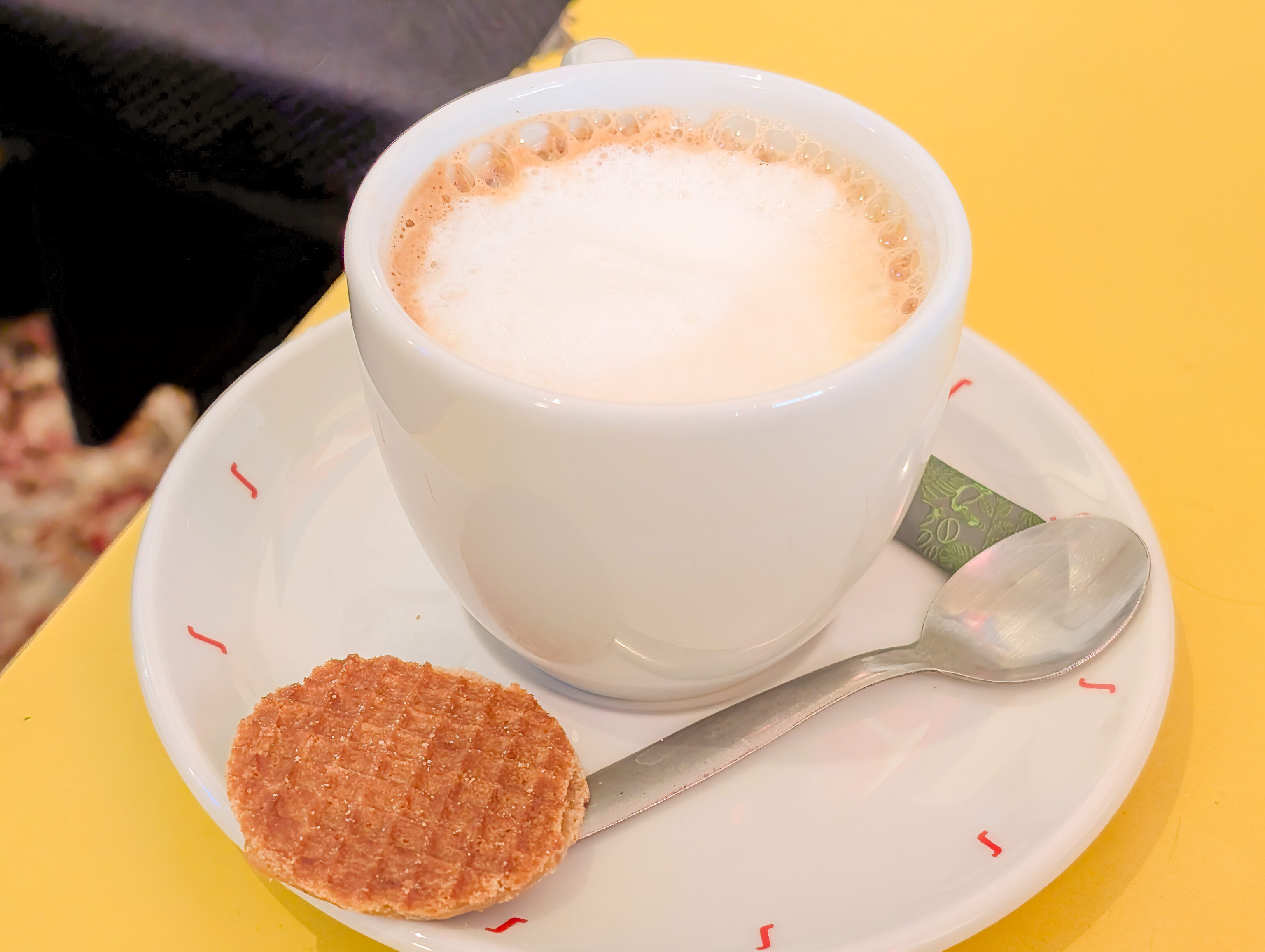
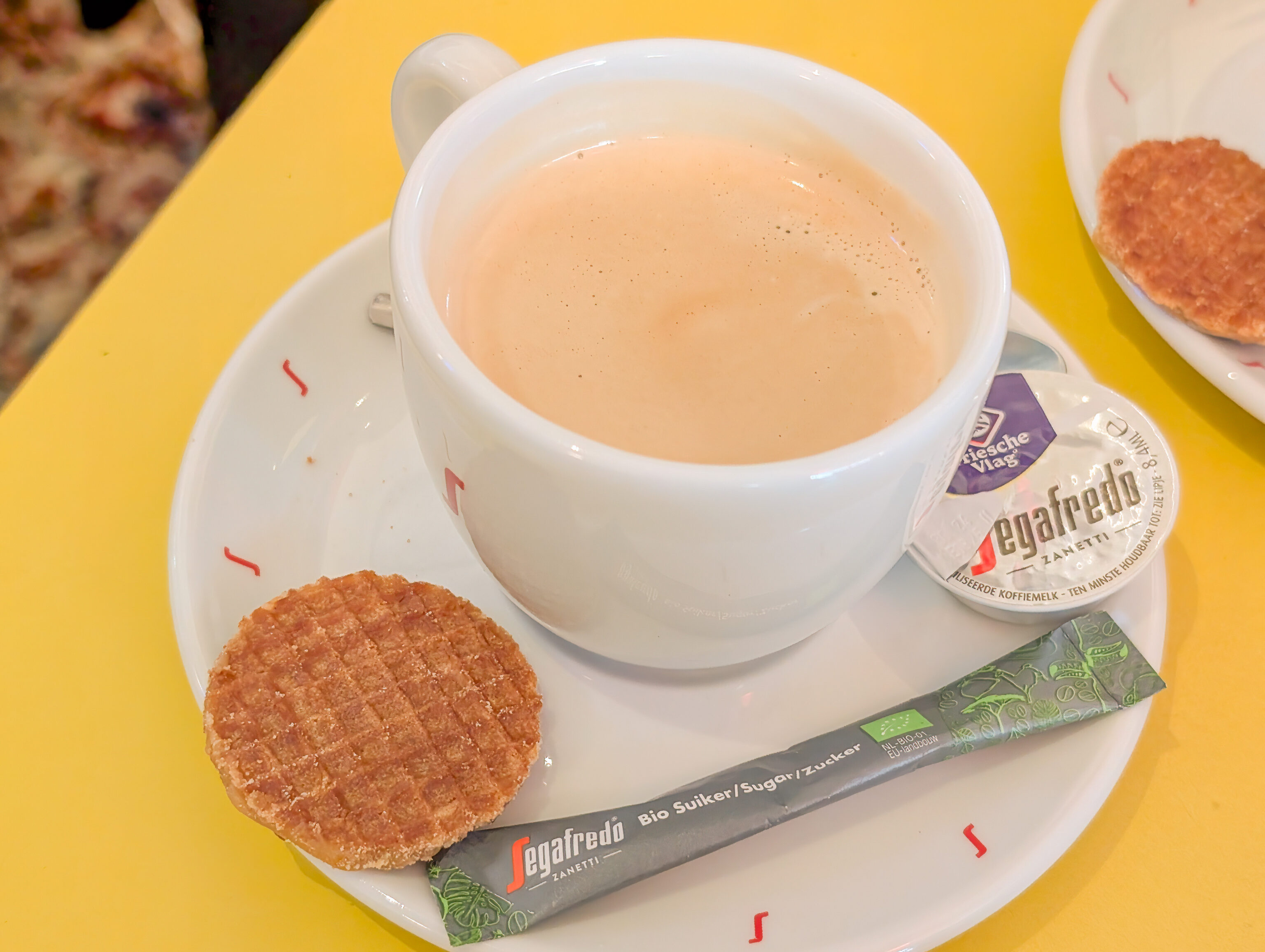
We decided to pop into Café Voltaire, a small coffee shop, for a flat white and a coffee. It was OK, kind of just regular coffee in Europe? So far, nothing has come close to our % ARABICA experience in Seoul.
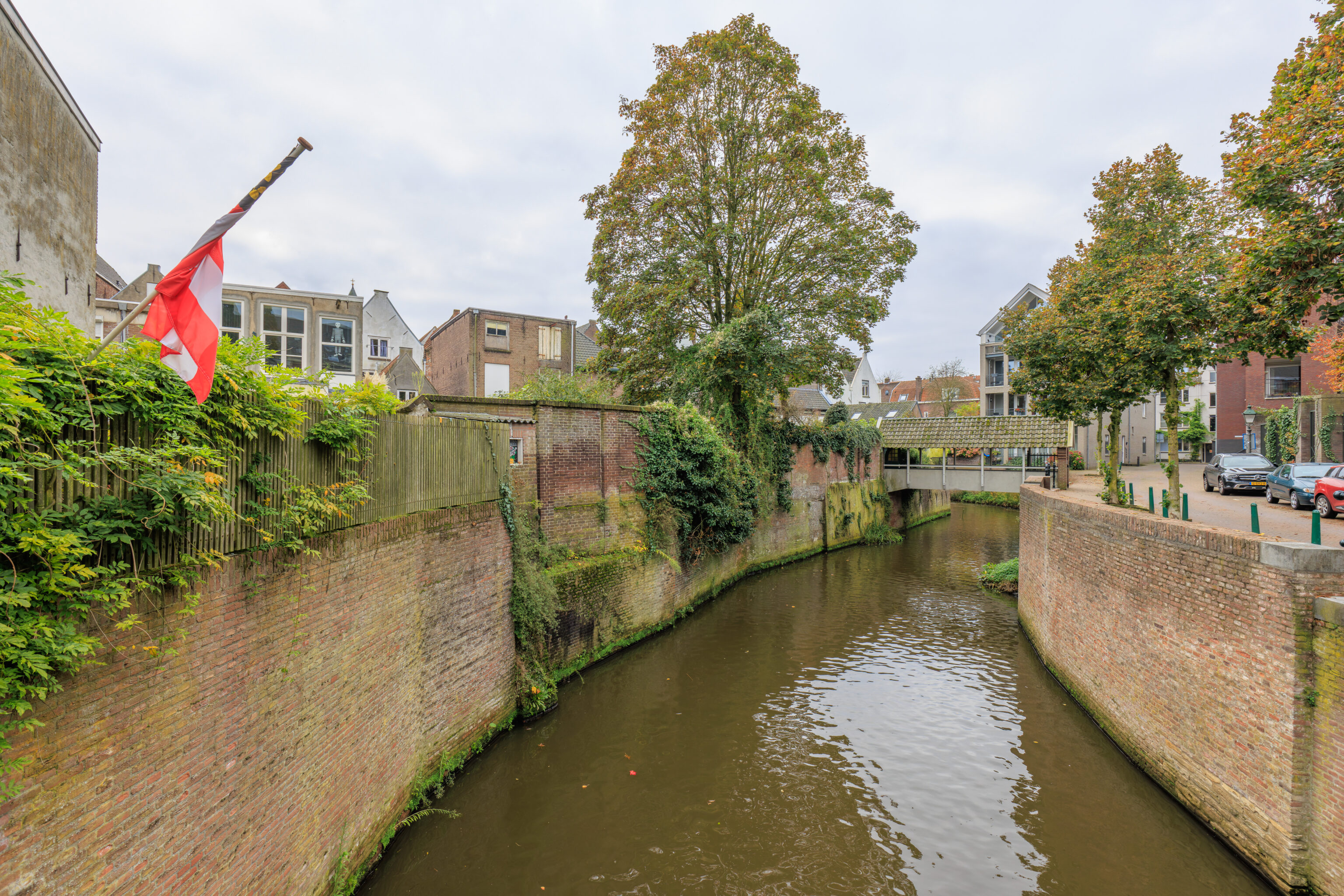
We started heading back to the departure point with 15 minutes to go before the tour.
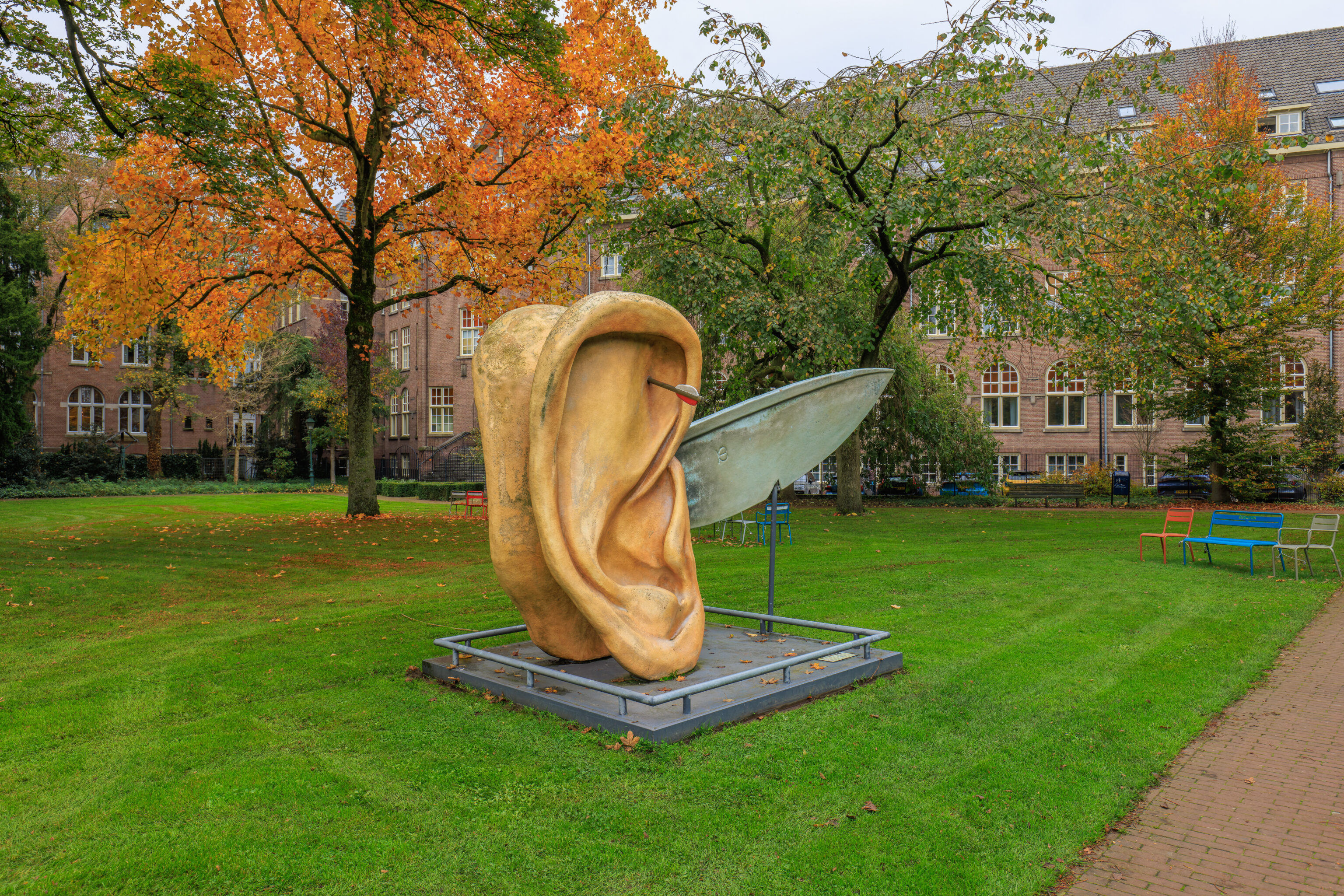
We came across a local park with an odd ear sculpture of an element from a painting by famous local painter Jheronimus Bosch. This sculpture, by K&S Decor :: The Theme Builders, is from 2016 and is described by a small plaque:
This sculpture is a life-size representation based on one of the figures from Jeroen Bosch's most famous painting 'the Garden of Earthly Delights'.
Jeroen Bosch lived from around 1450 to August 1516. He was nicknamed 'de duvelmakere' (the creator of devils) and was known as a painter of satirical representations.
This sculpture is part of a series of sculptures made on the occasion of the painter's 500th anniversary in 2016. The various sculptures are shown in prominent locations in the city of 's-Hertogenbosch.
In the 'Jheronimus Bosch Art Center' (at the Jeroen Boschplein') a permanent overview exhibition about the life and work of Jheronimus Bosch can be viewed.
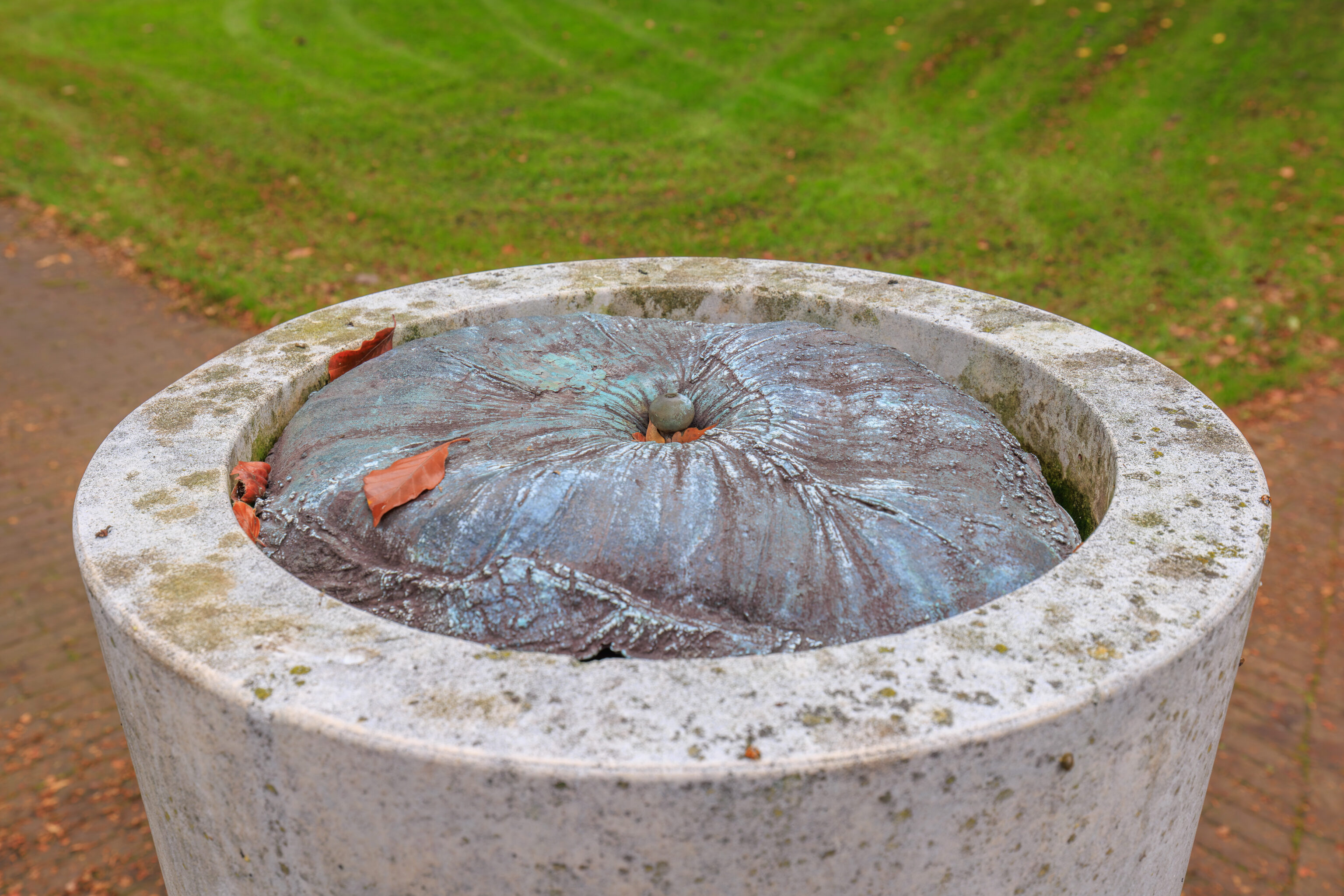
This is probably another element from a Jheronimus Bosch painting.
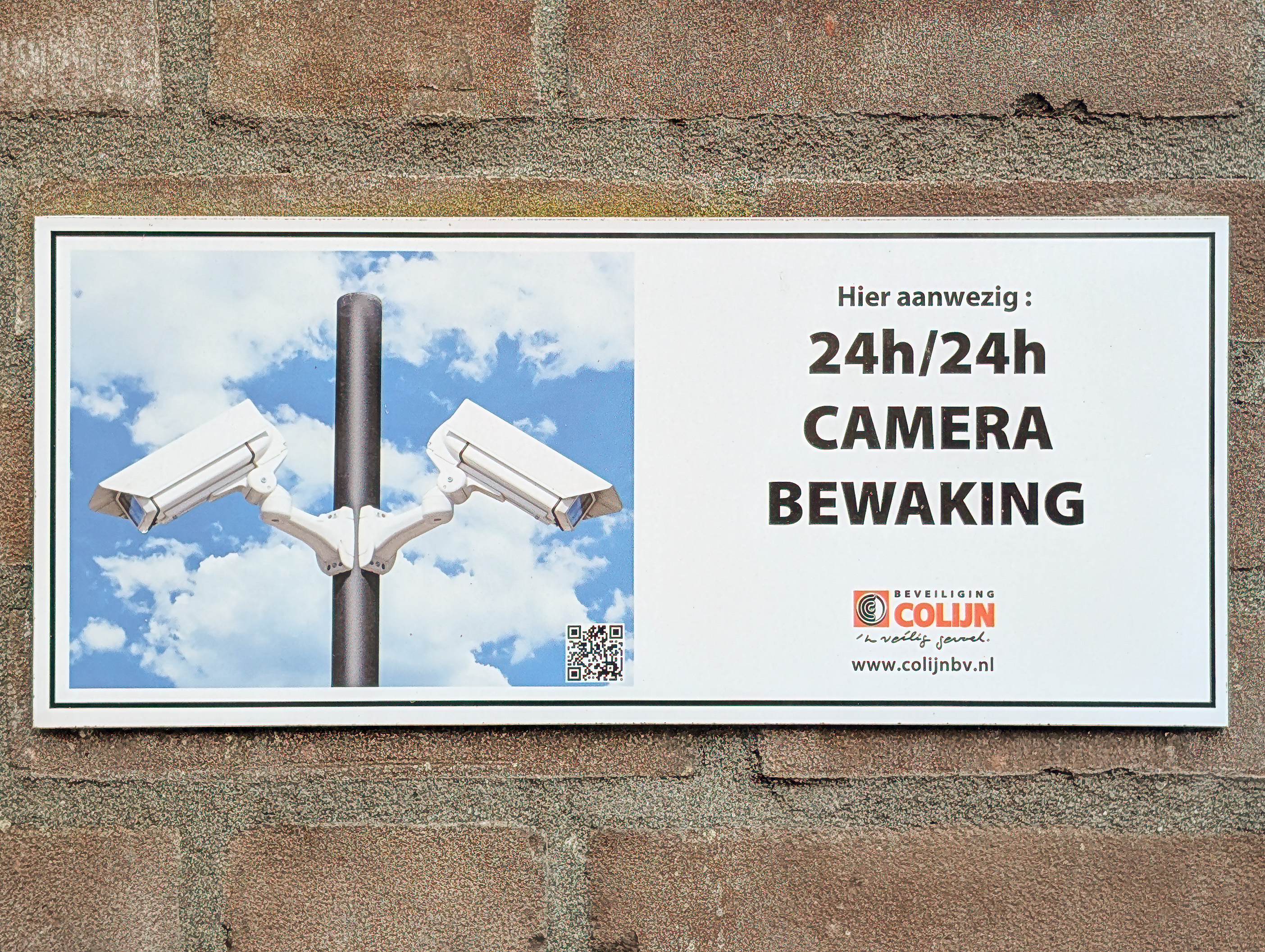
Unrelated to much, but we finally found a Camera Bewaking sign! We first came across this Dutch phrase years ago in Belgium! It sounds funny in English but just means video surveillance. This phrasing was very prominent in Belgium but so far this is our first encounter in the Netherlands. They seem to prefer alternate phrasing.
Historical Boat Tour
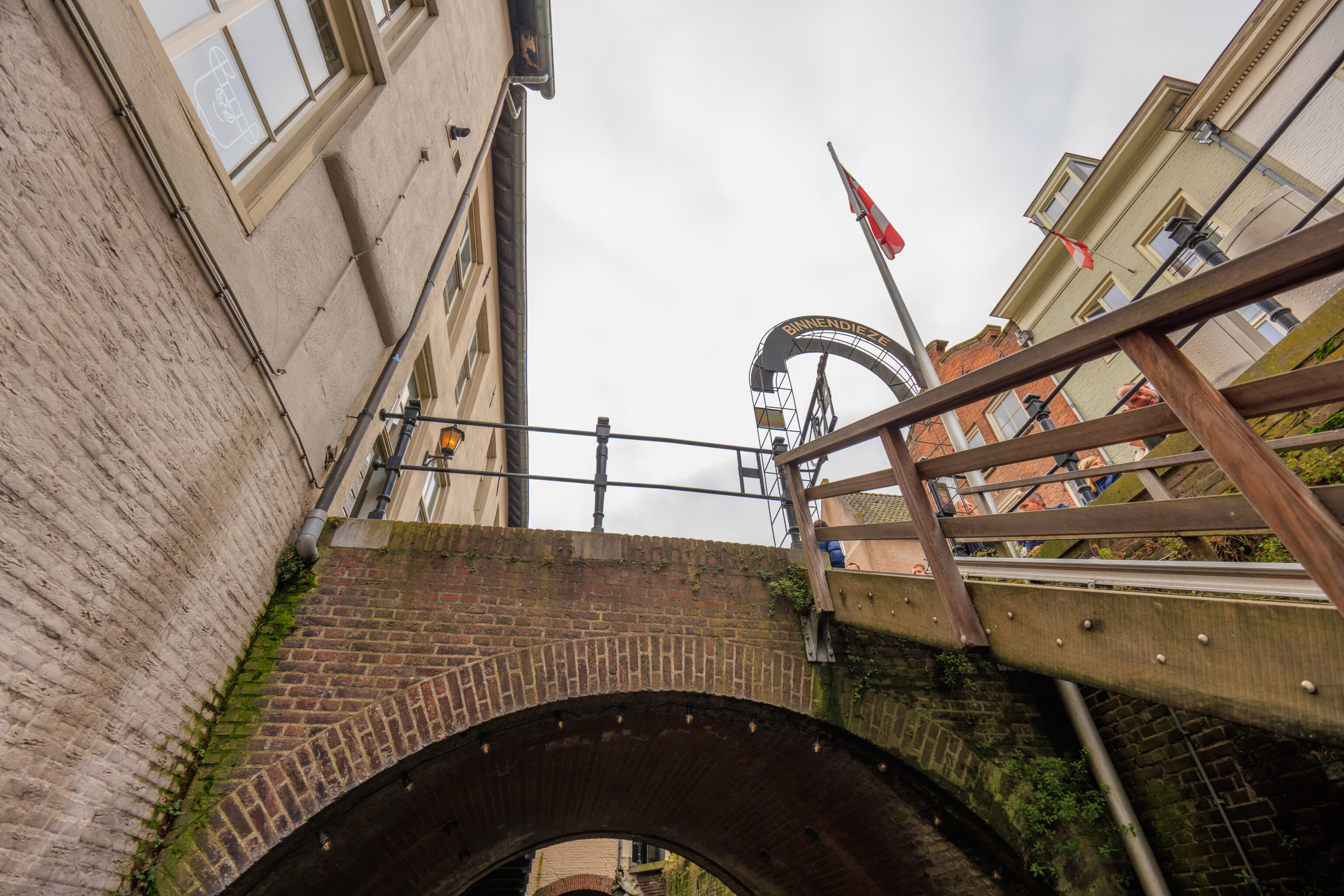
The boat tour that we reserved is the Historical boat tour on the Binnendieze with DagjeDenBosch, which is possibly the only company that does these tours of Den Bosch’s canals. As a foreign tourist, the main limitation of these tours is that they are Dutch only. One unique aspect of the canals here is that they run under many buildings. We decided to do the tour regardless of the language barrier because of this. They have a limited number of tours each day and the boats are small so reserving in advance makes sense. It turns out that today is the last day of the season for this specific tour, though they have others that seem to operate year-round.
The way boarding works is that they call out each group one by one. The first group calls will end up on the front of the boat, and so on. Its not clear how the order is determined so there doesn’t seem to be any way to try and be up front, which really has the best view!
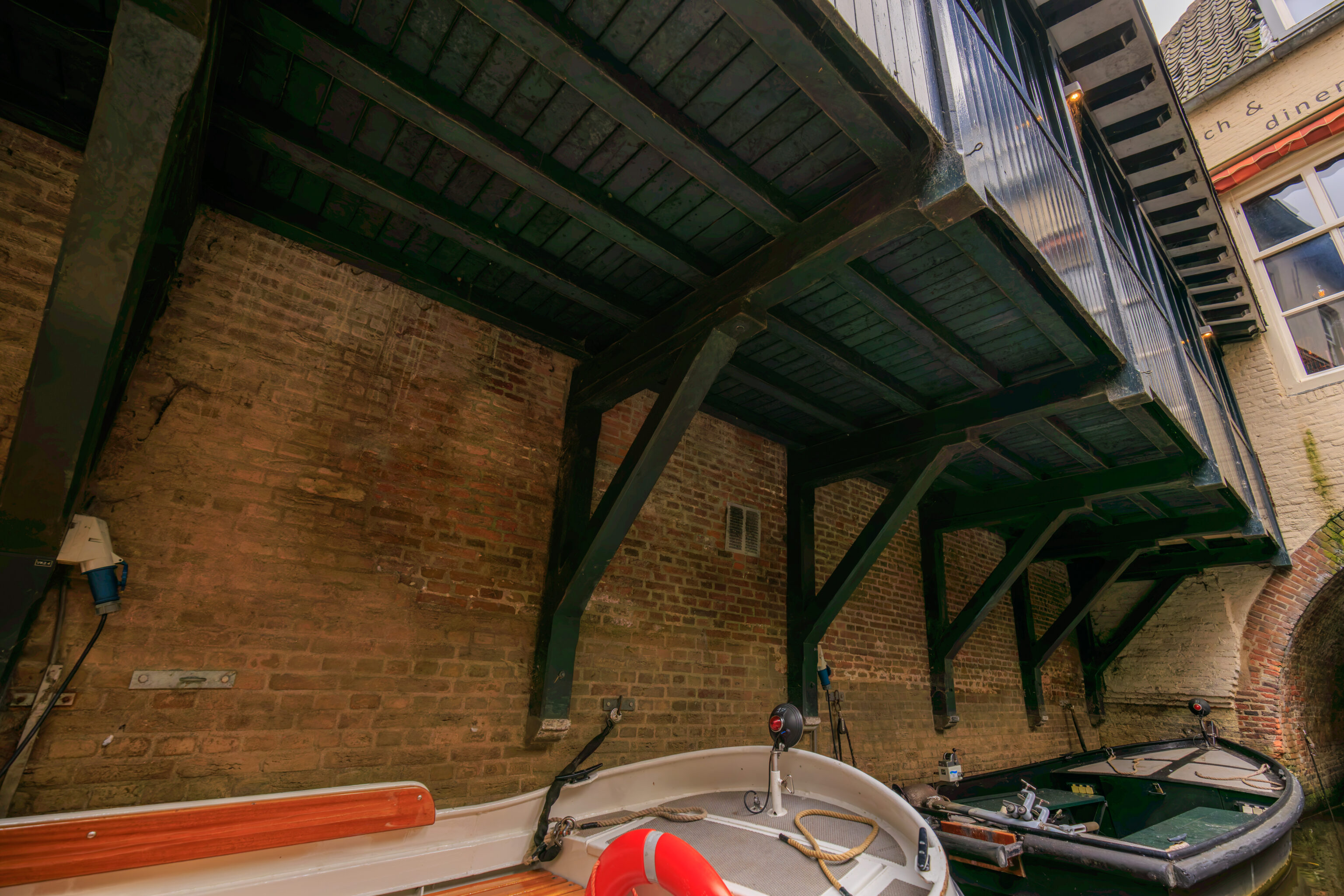
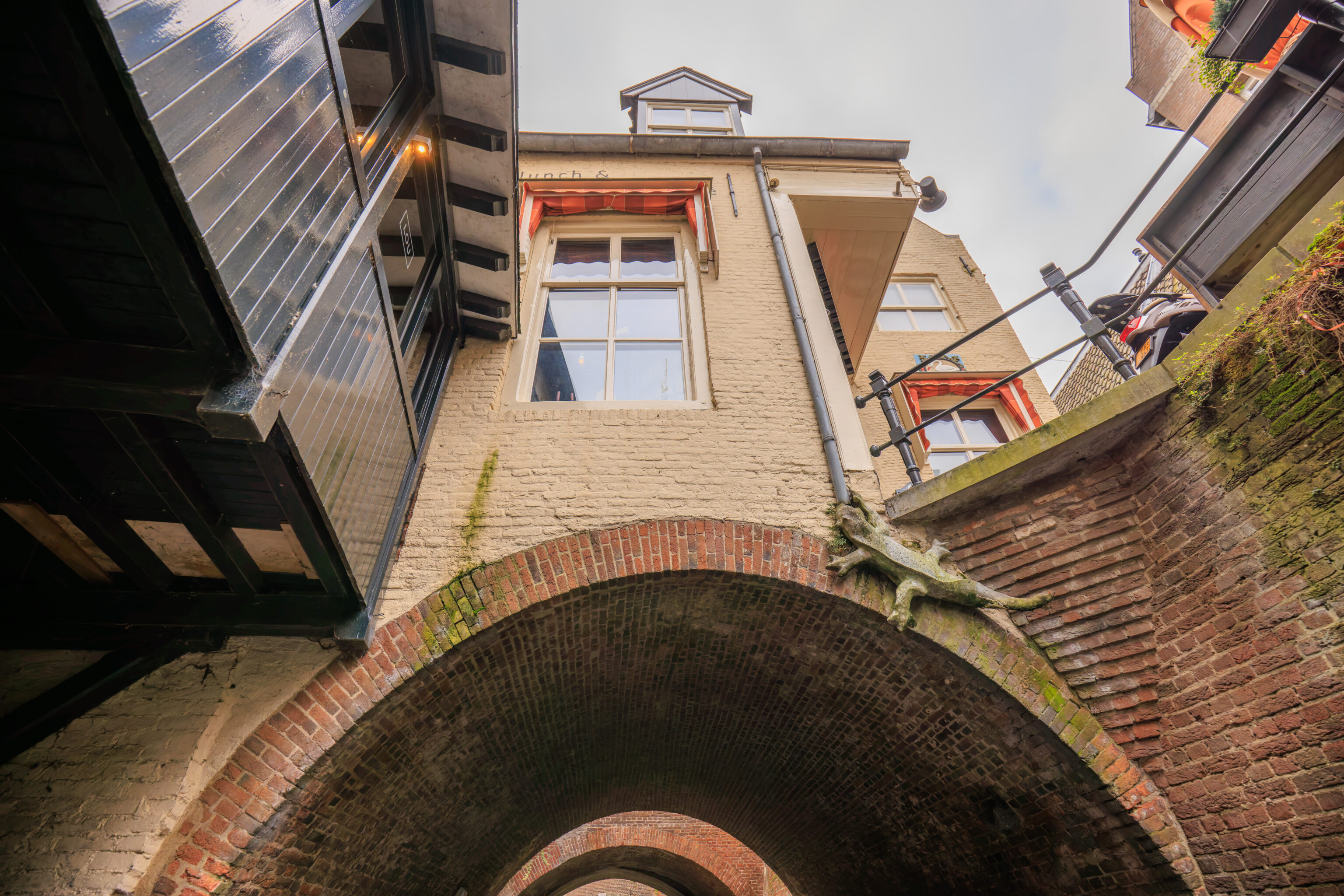
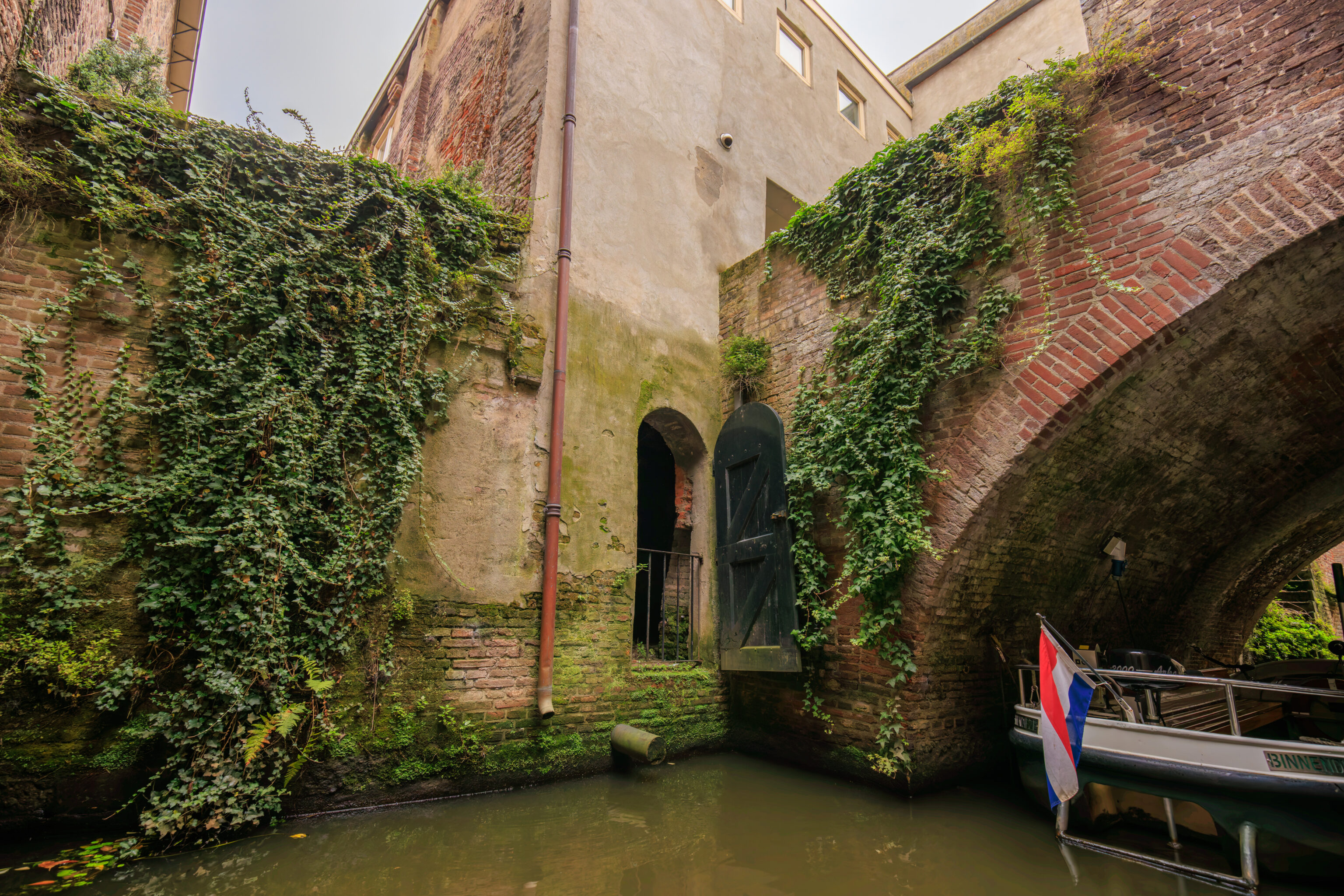
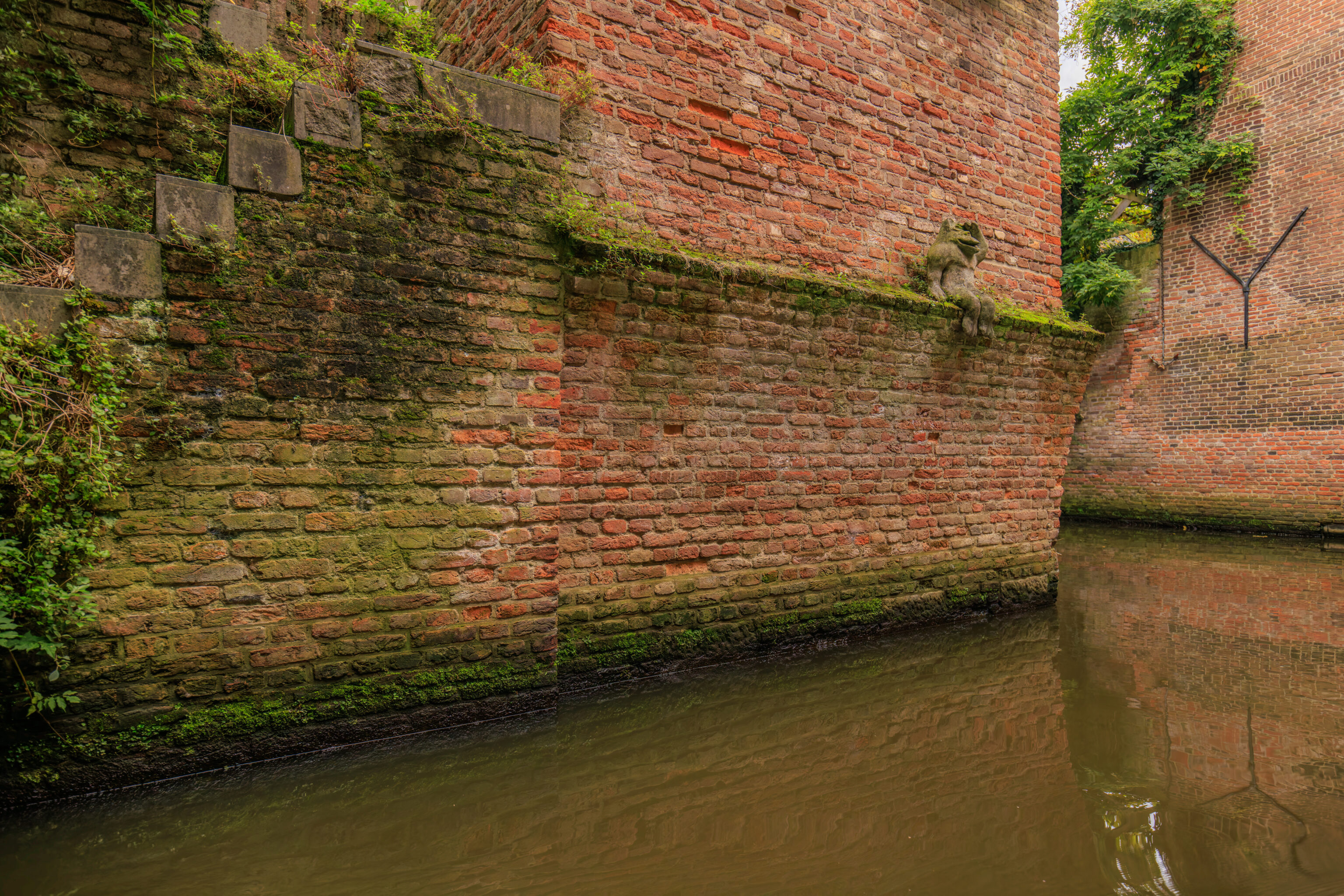
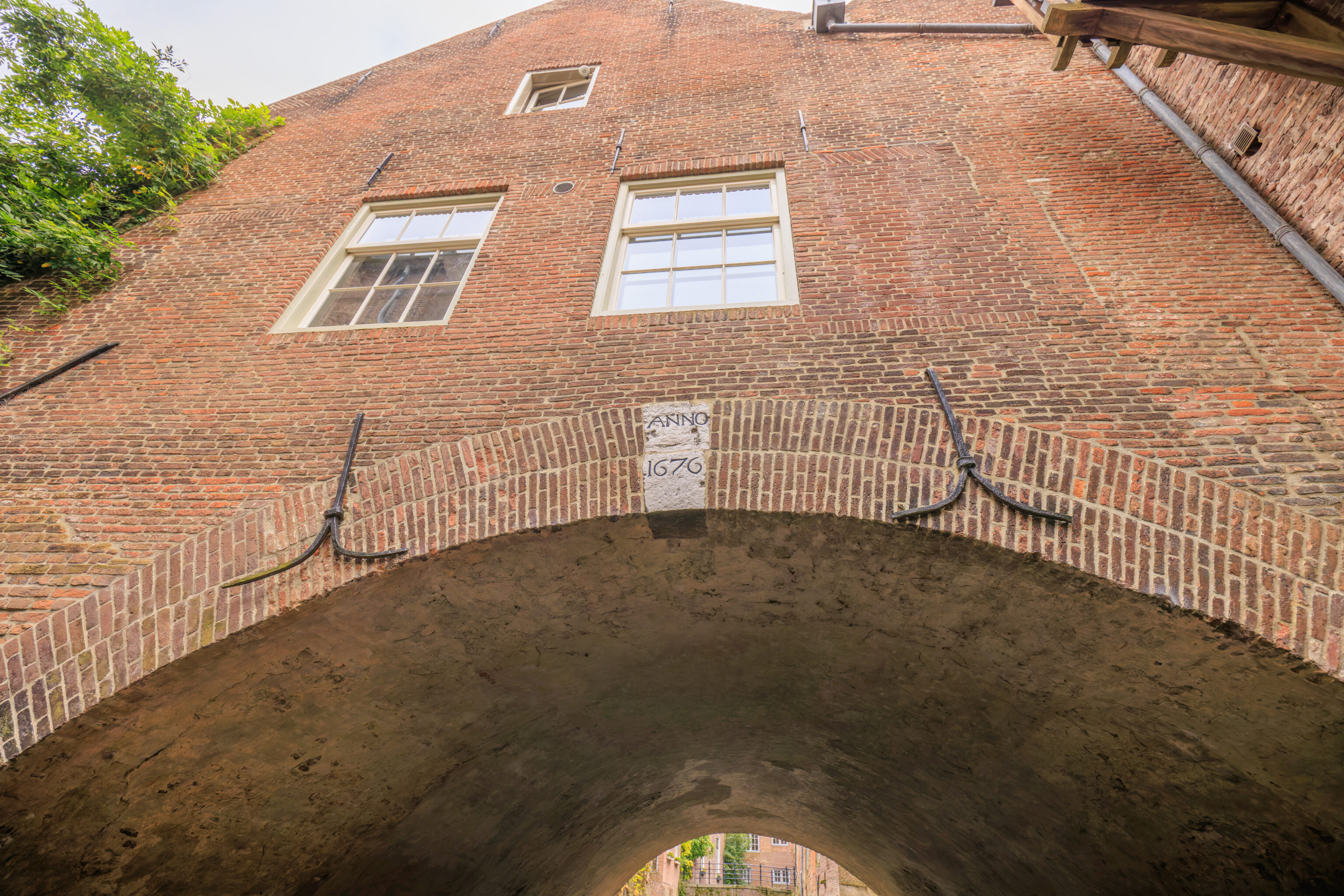
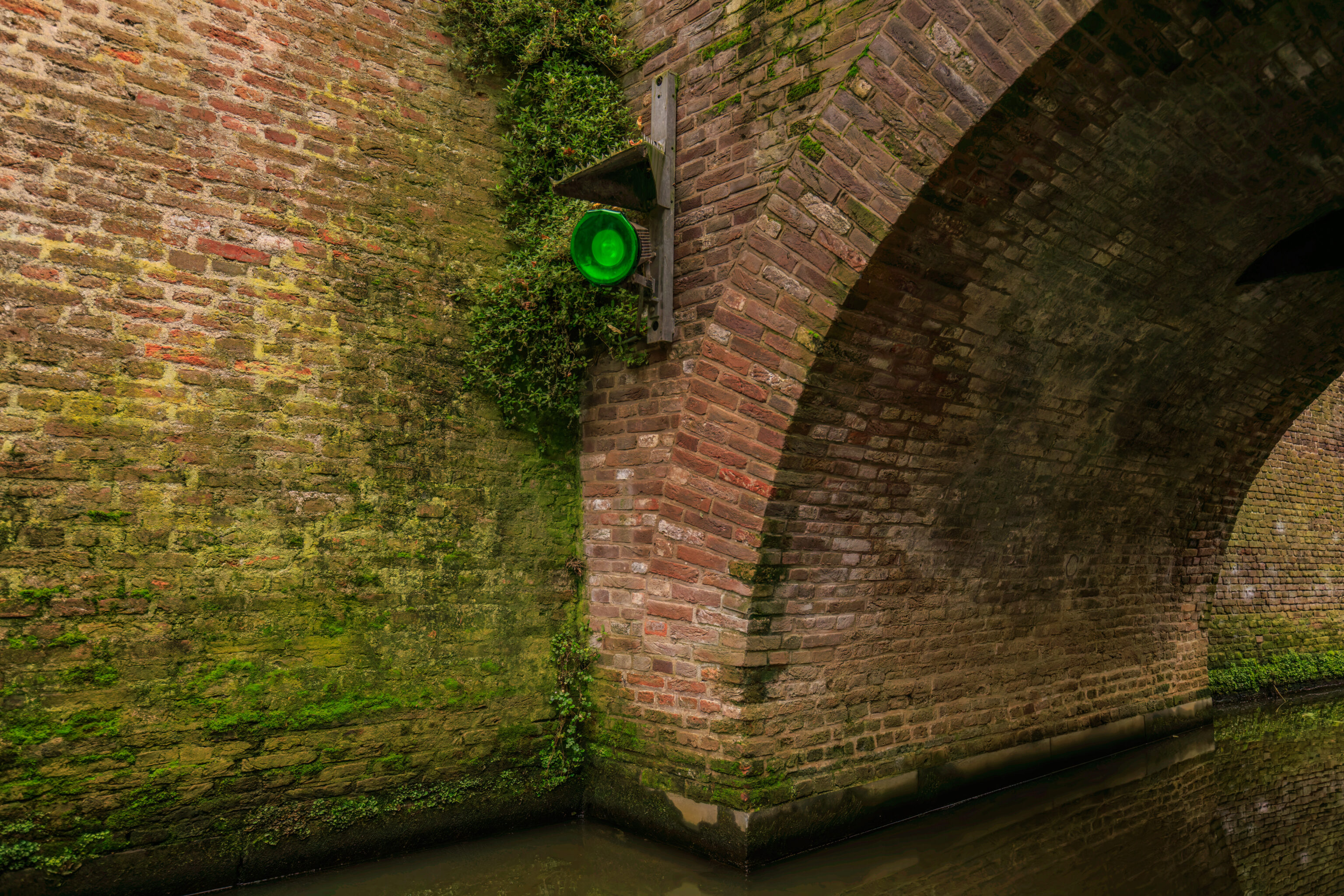
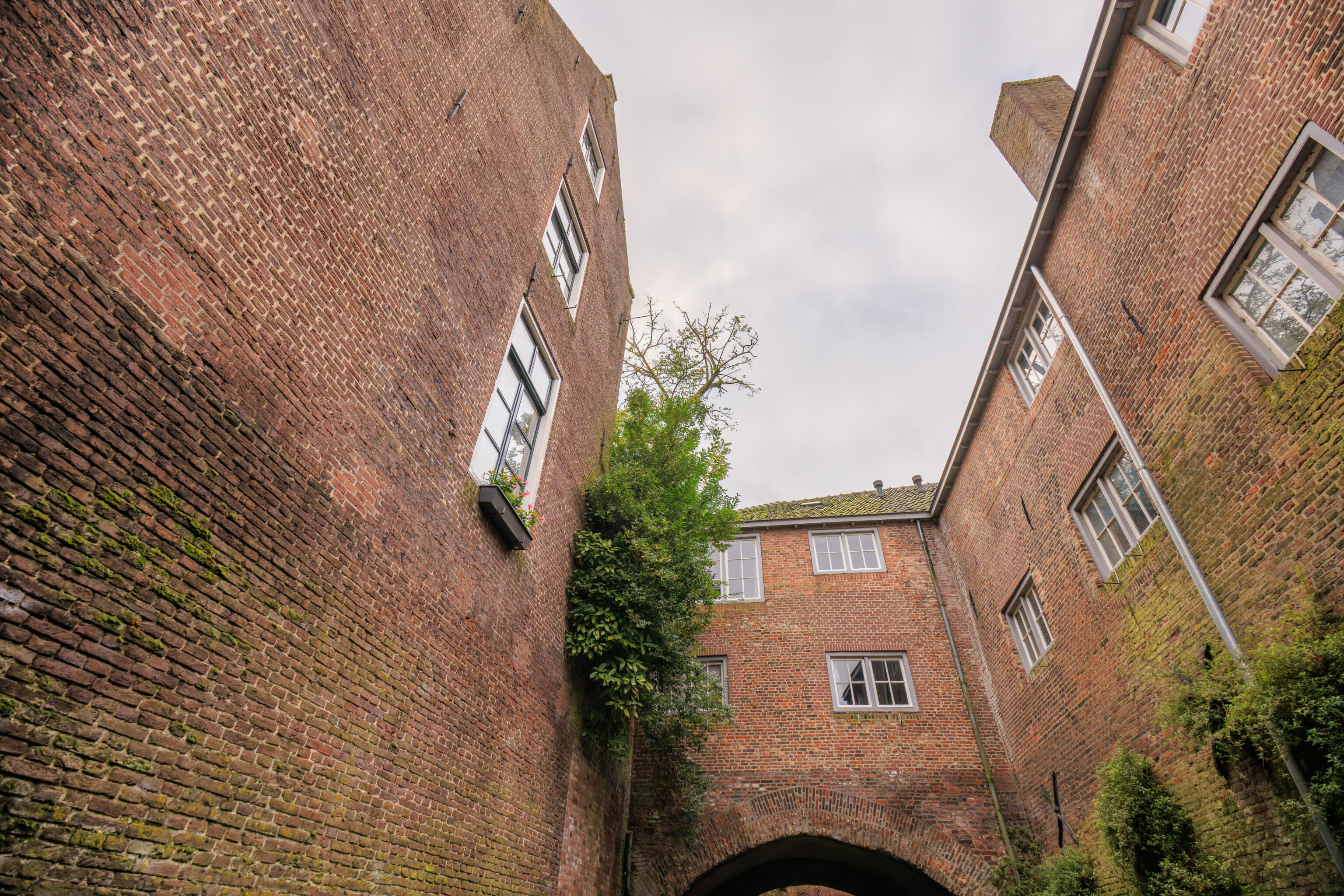
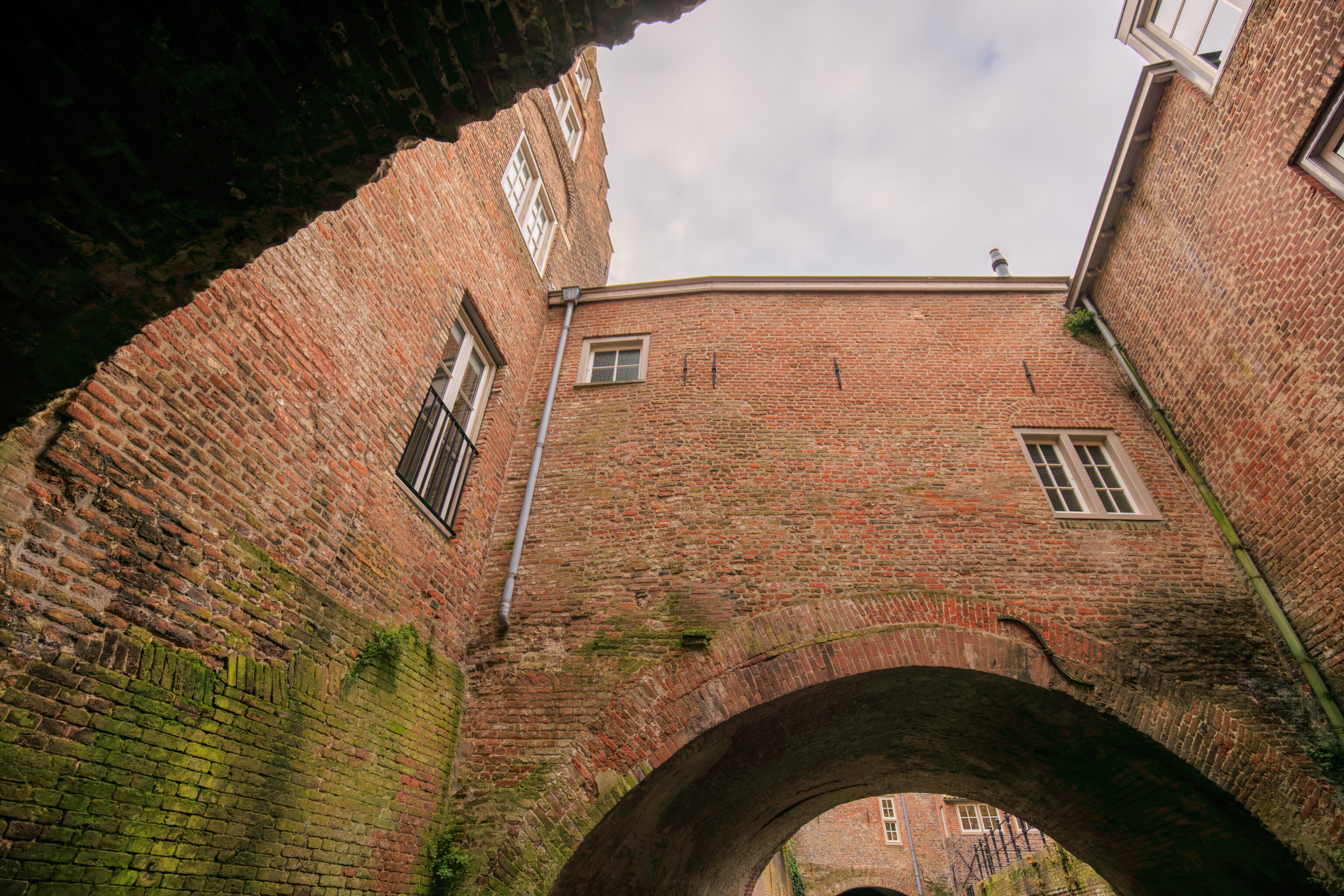
There isn’t really much to write here as we don’t really speak any Dutch, though there are some words and phrases that are recognizable from English and German. The tour guide seemed very knowledgeable and indeed he seemed to speak continuously throughout the entire tour!
Generally speaking, photos that are aimed upwards are facing the front of the boat, and those that are level with the horizon are to the left, and as the Germans would add, in the direction of travel.
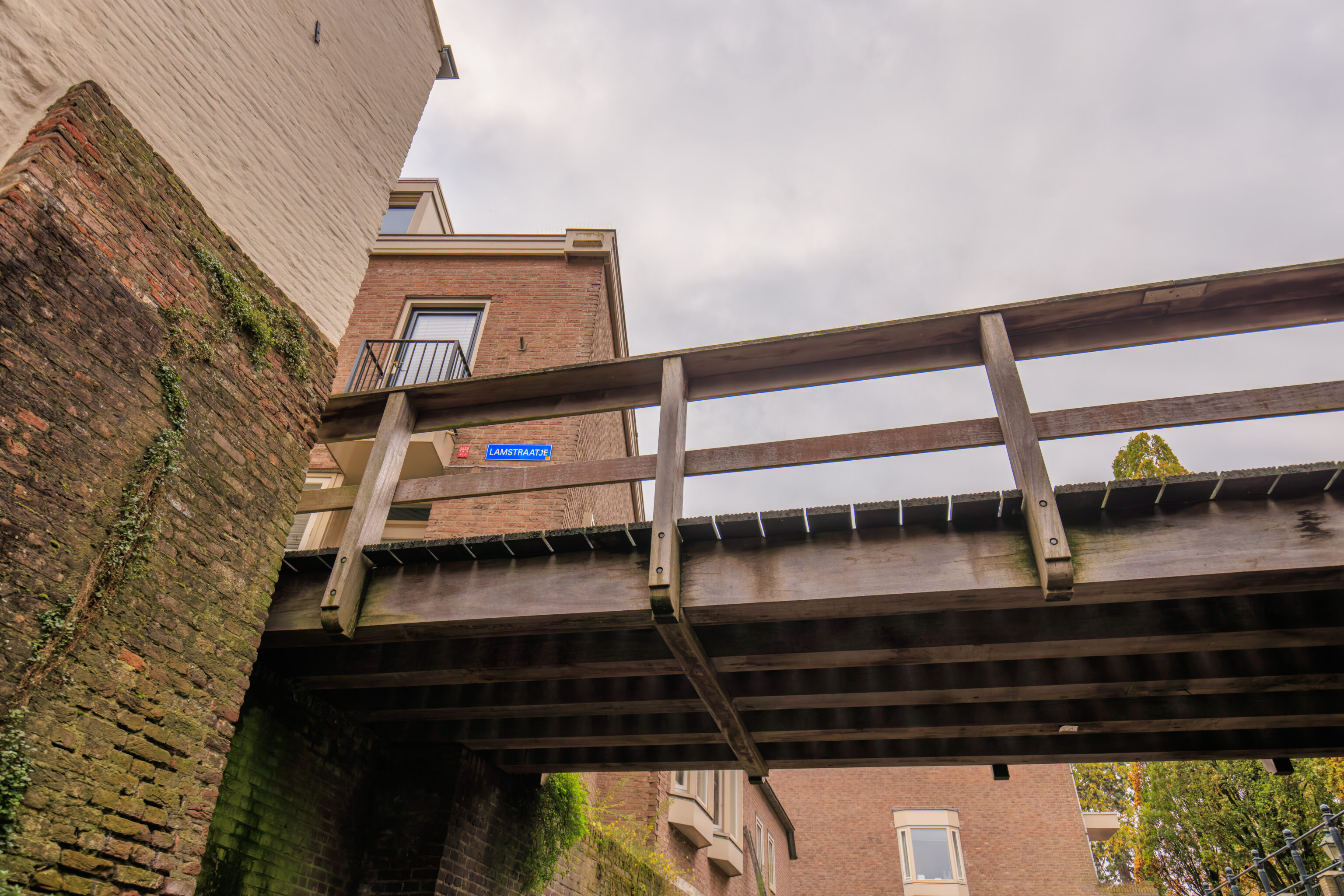
In addition to going under building, we of course went under bridges. We probably walked across this one earlier in the morning while wandering around.
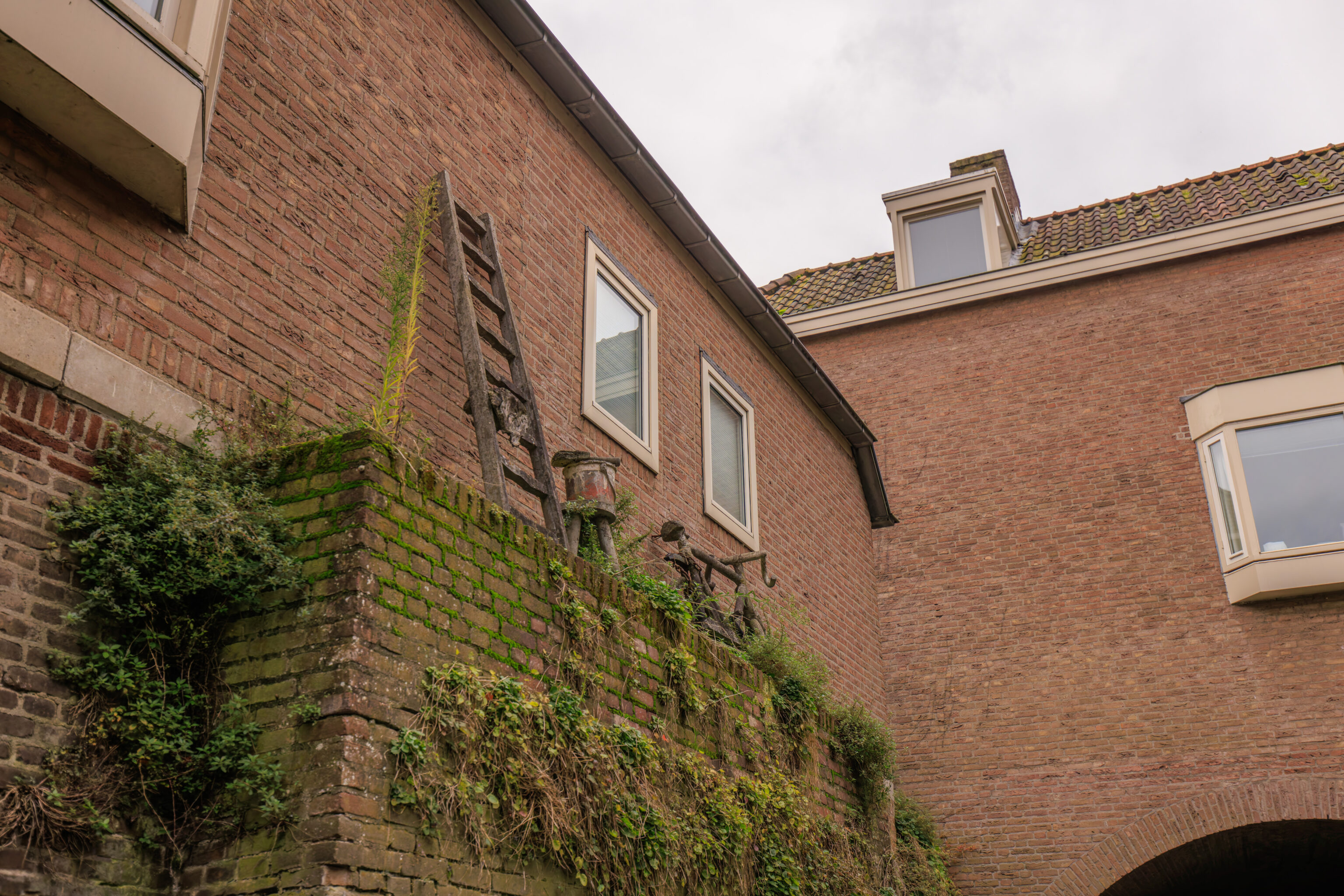
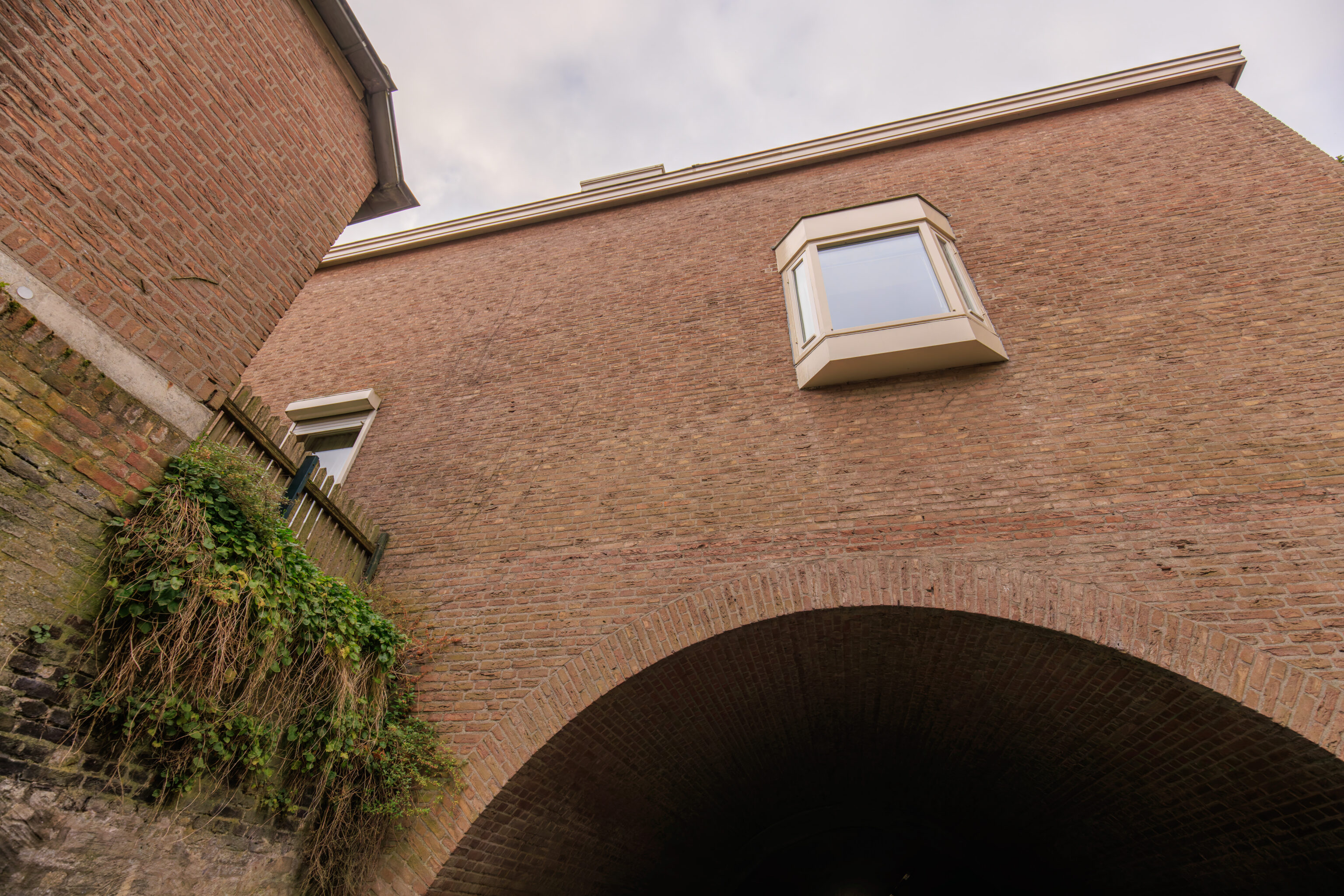
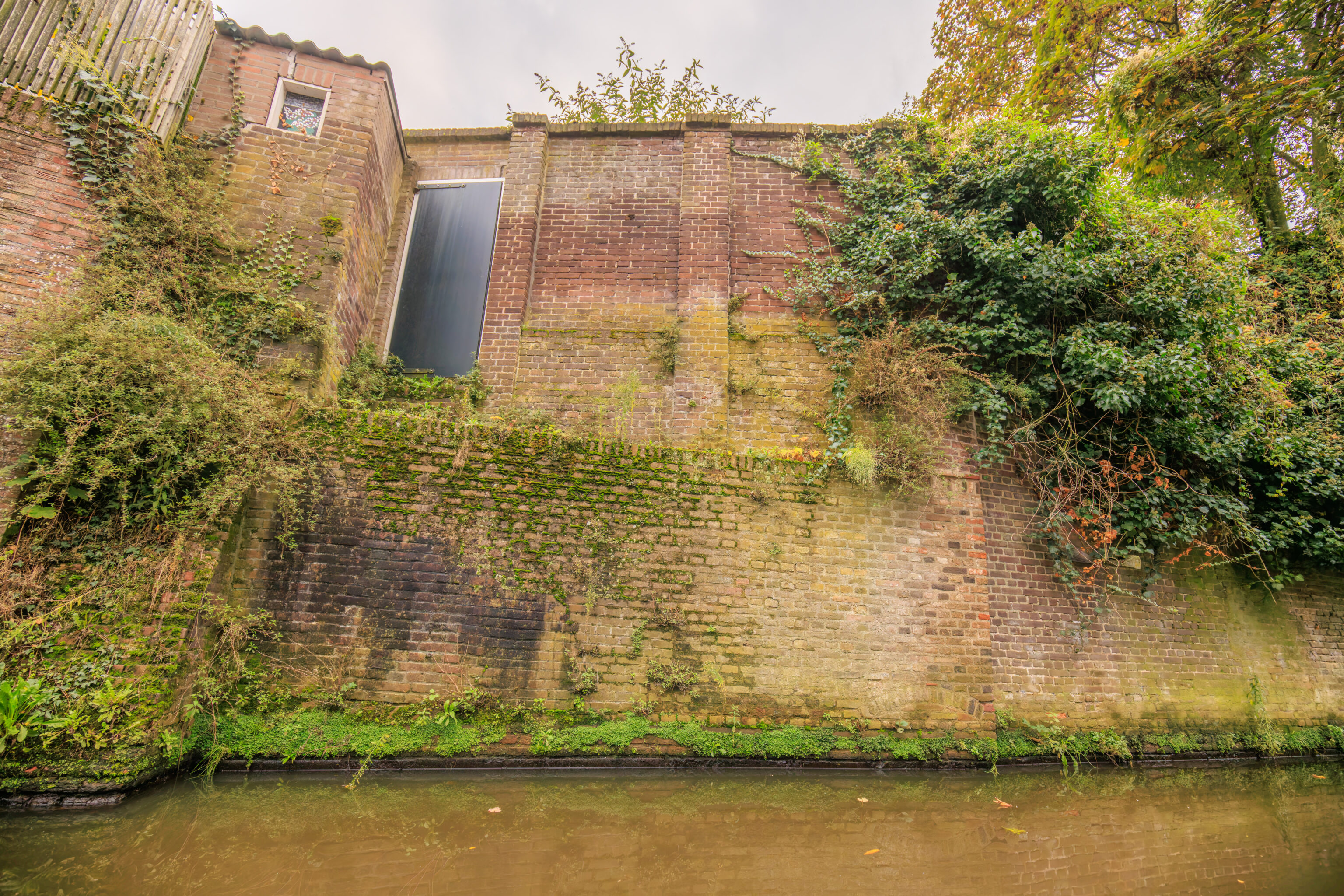
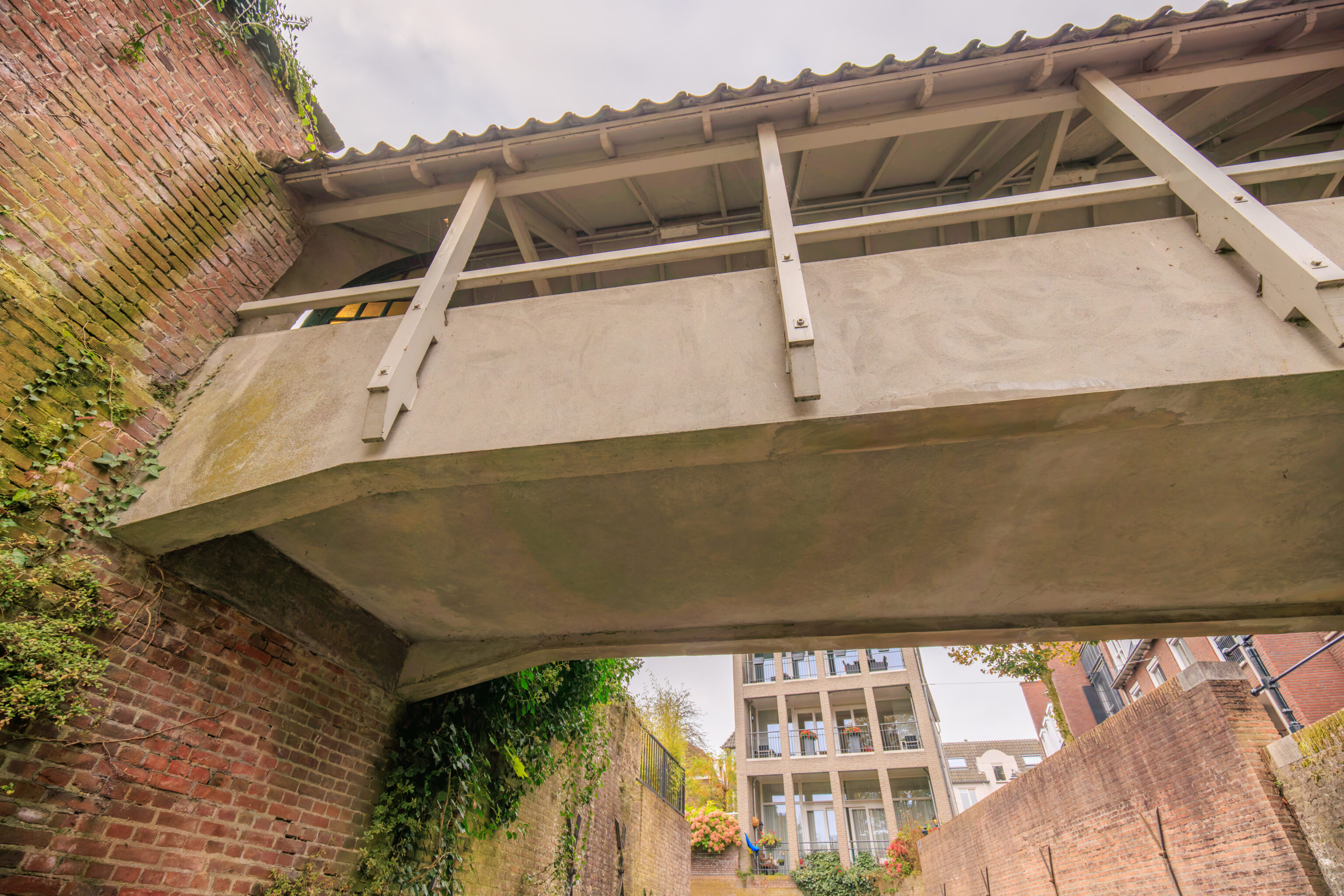
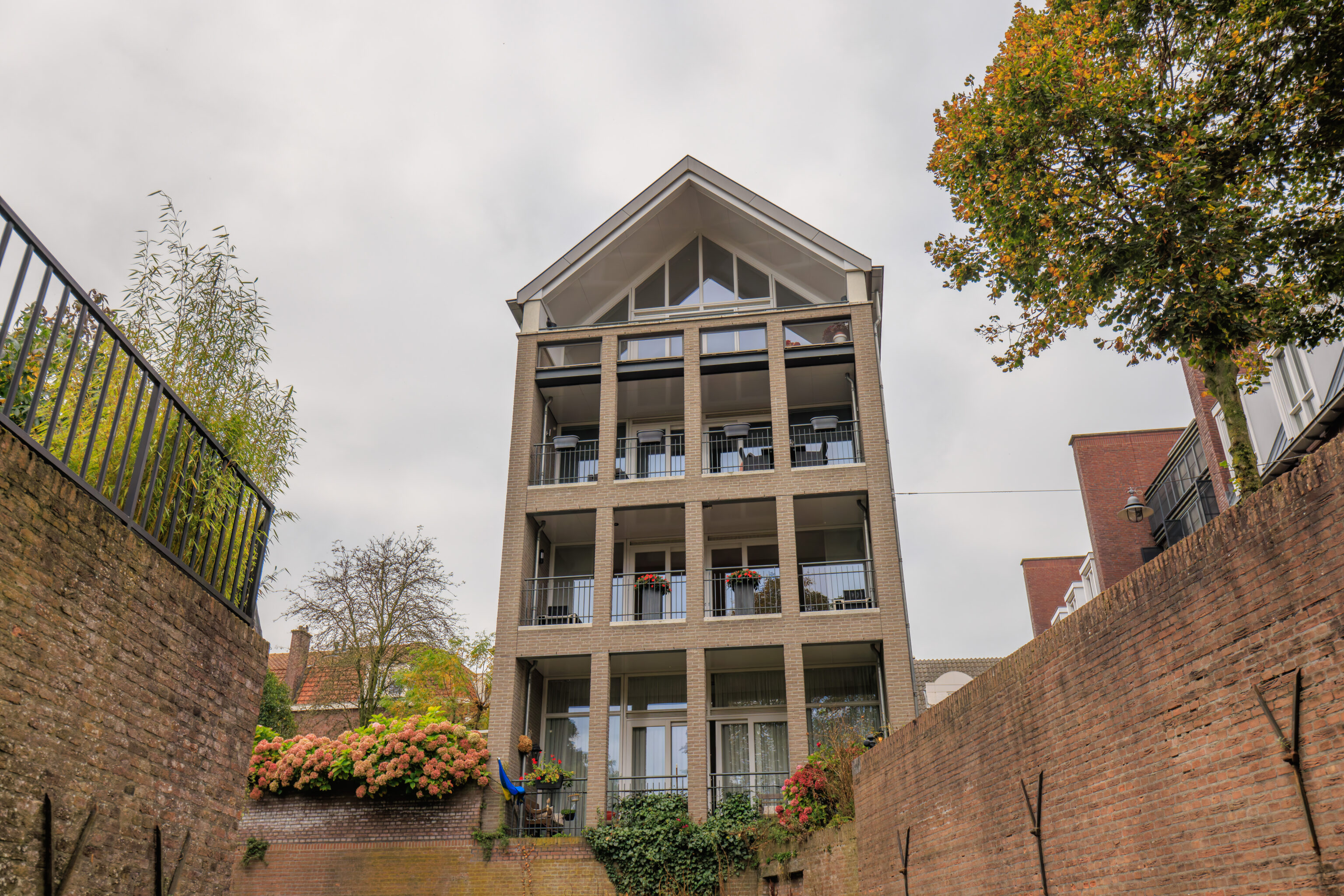
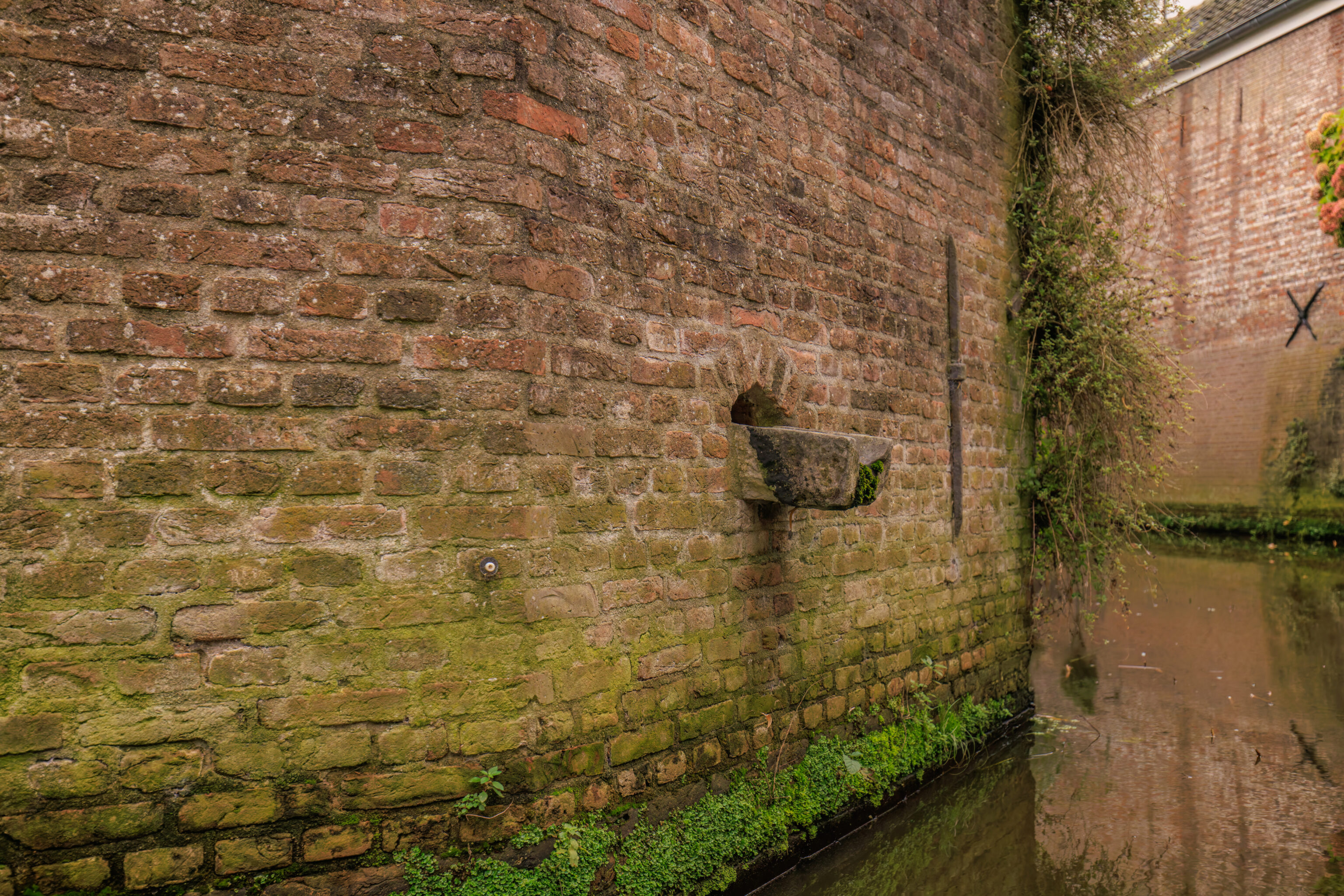
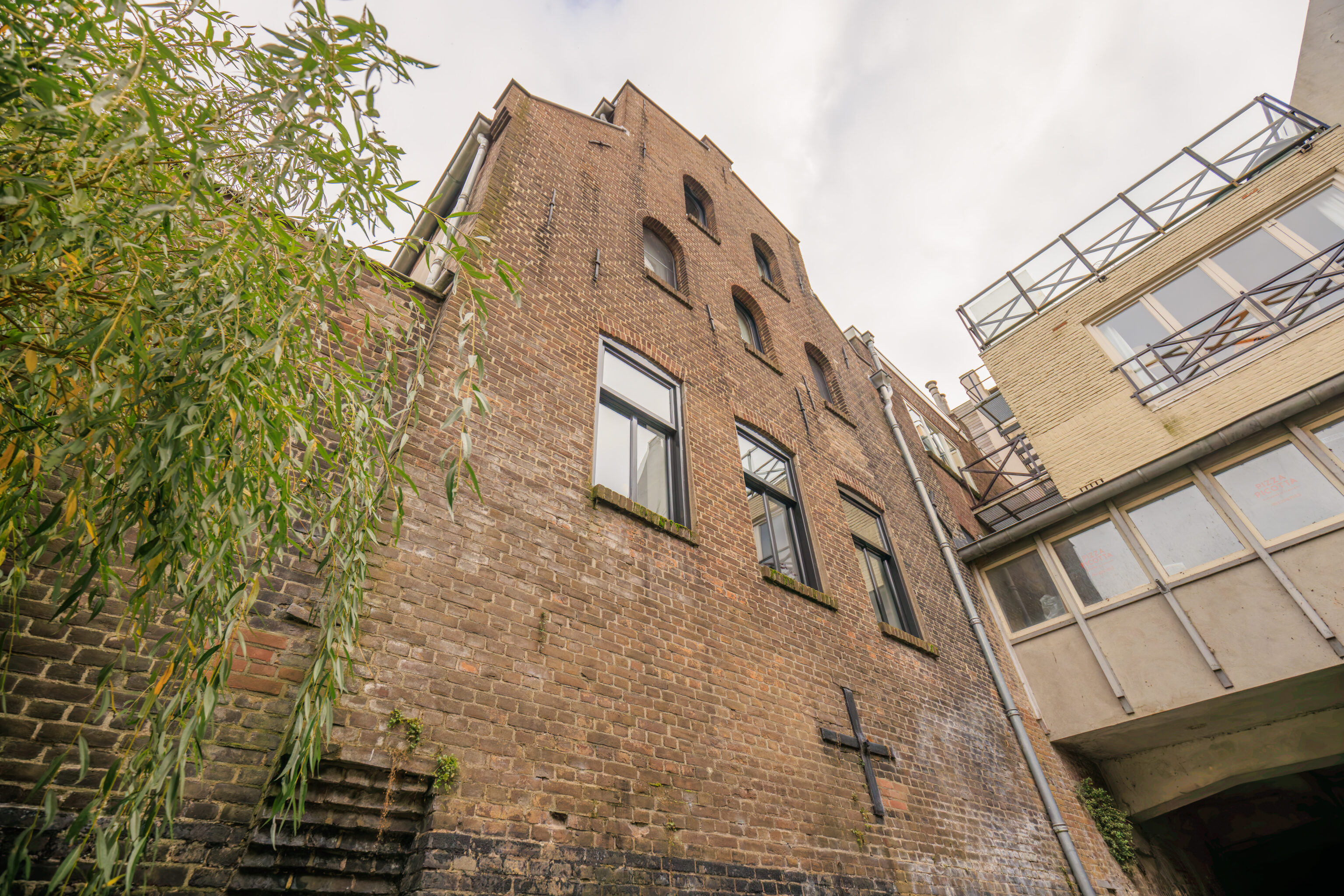
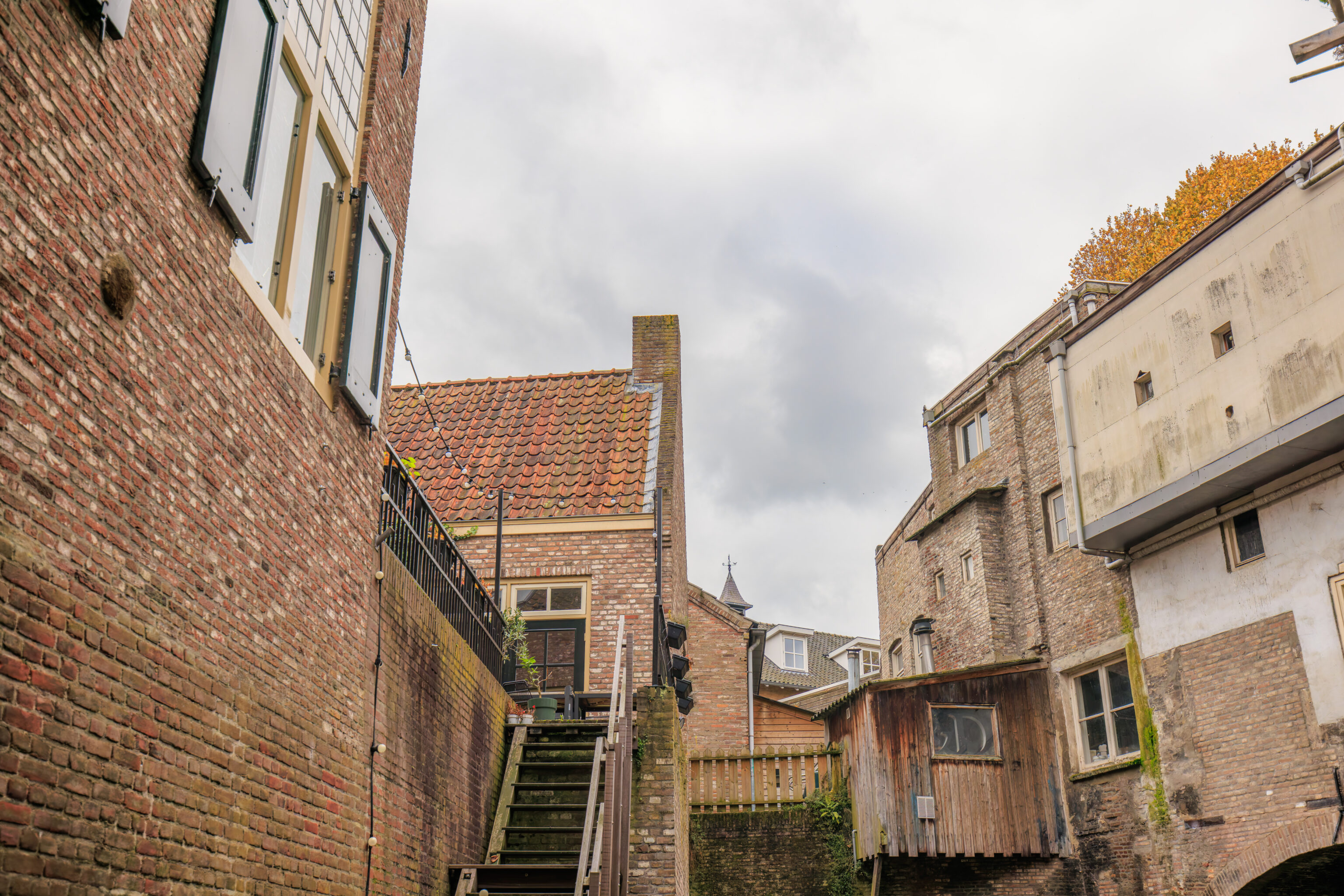
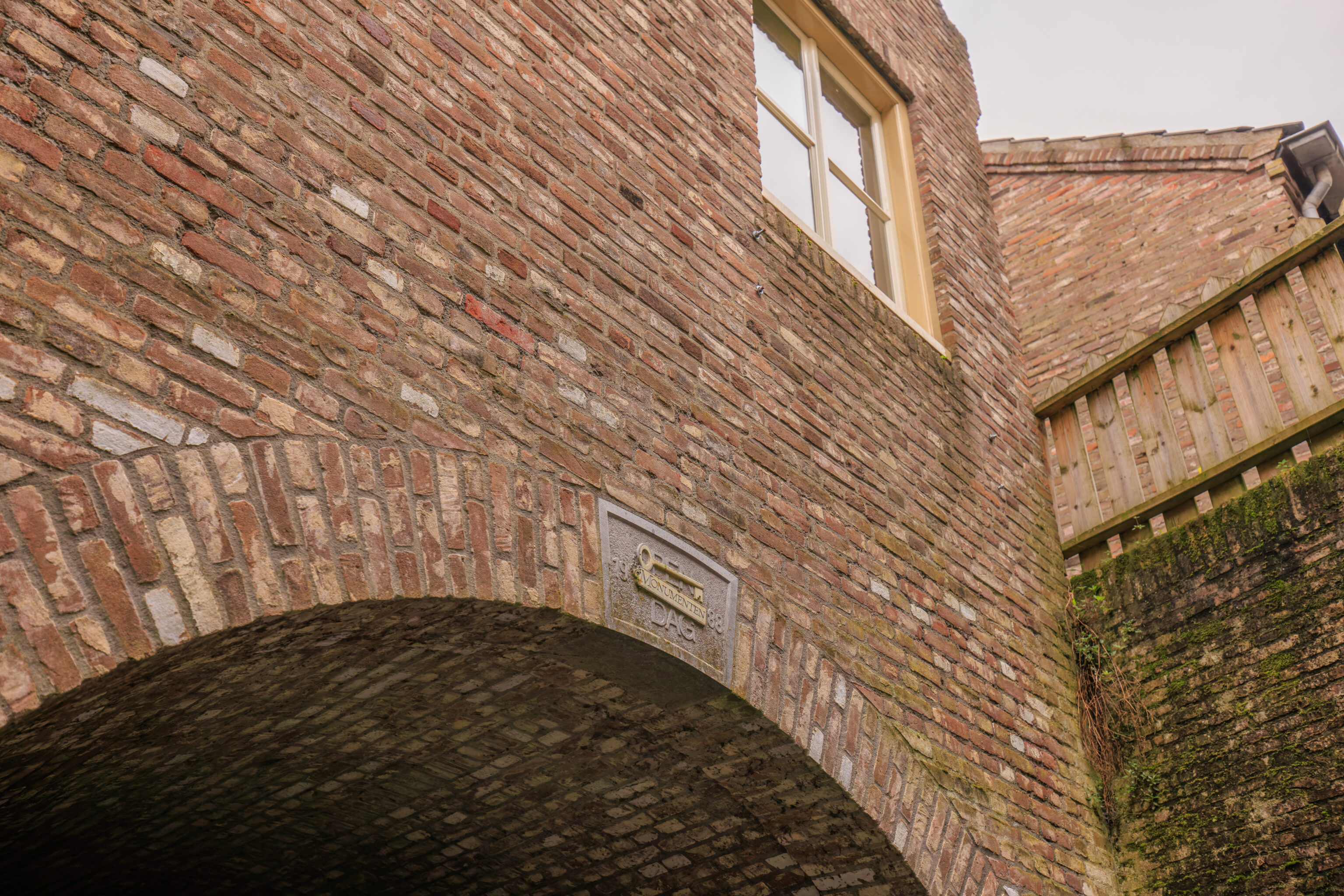
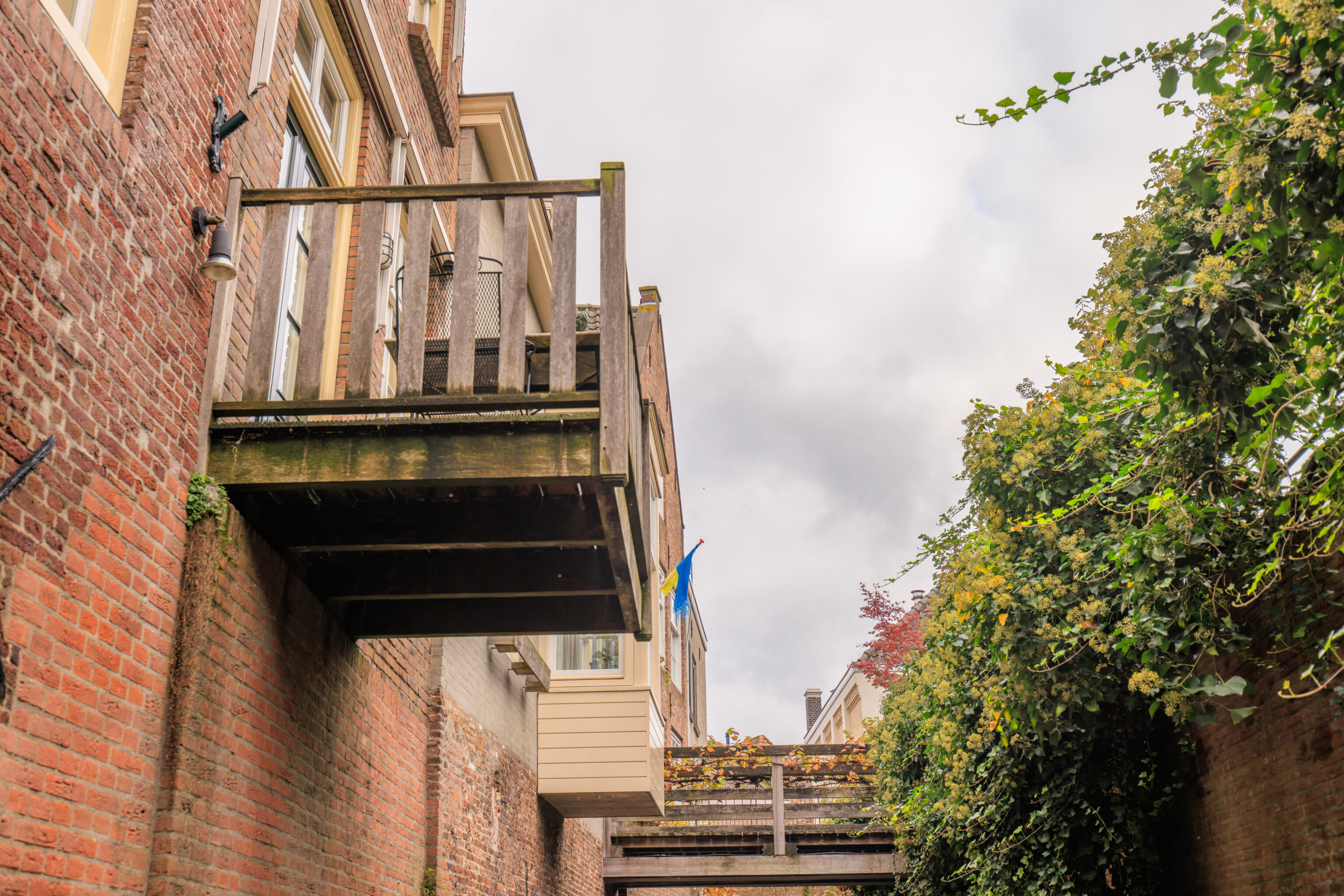
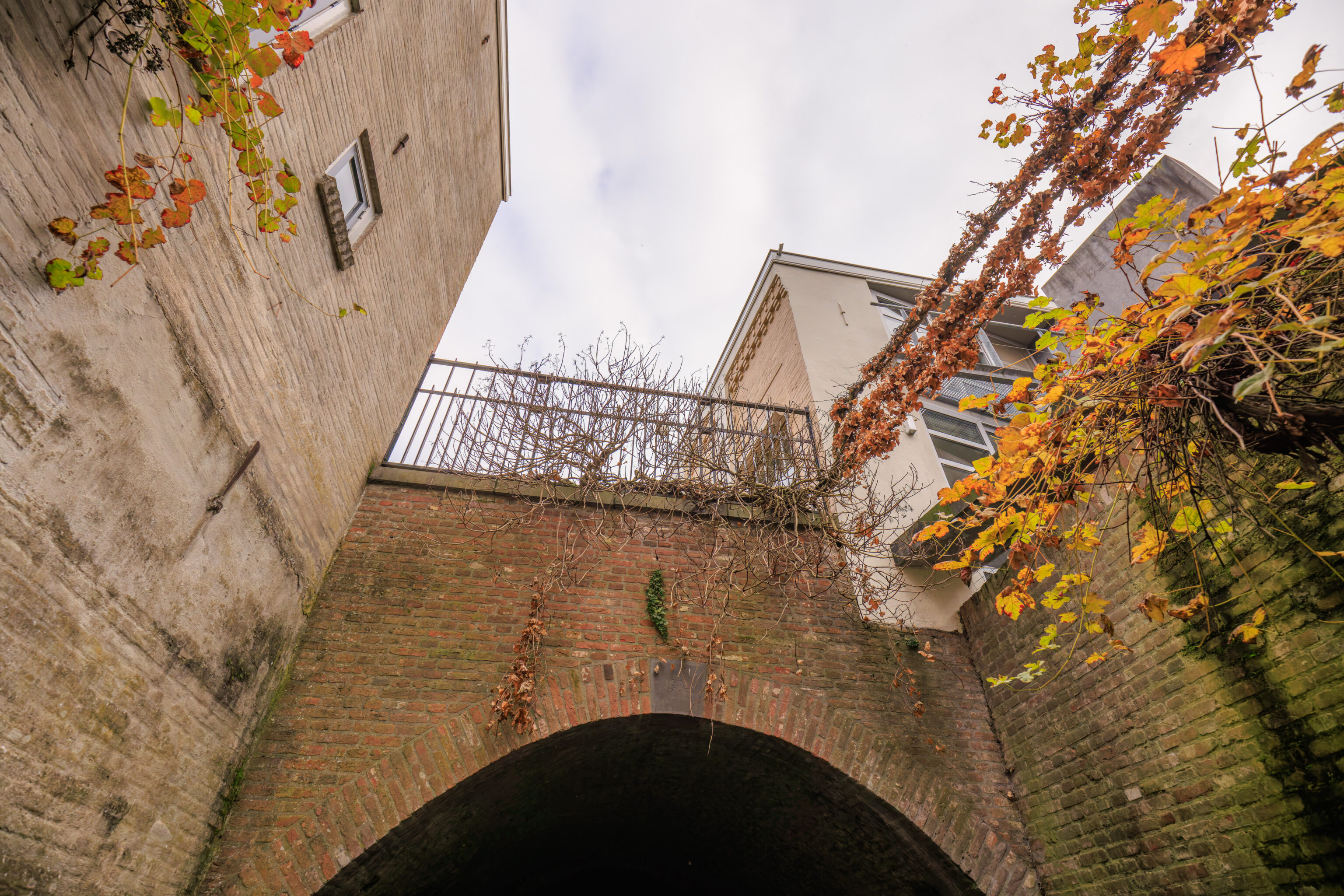
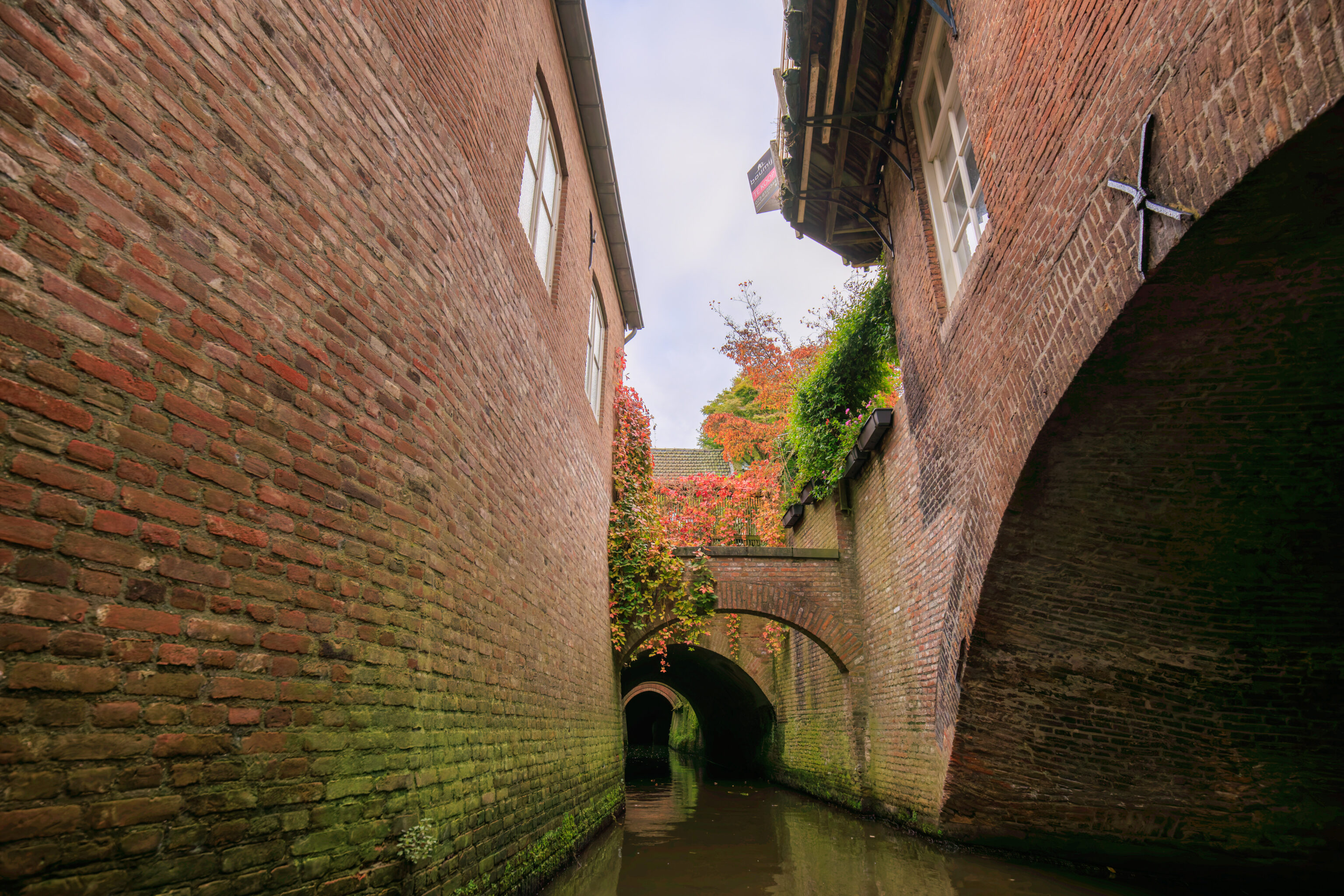
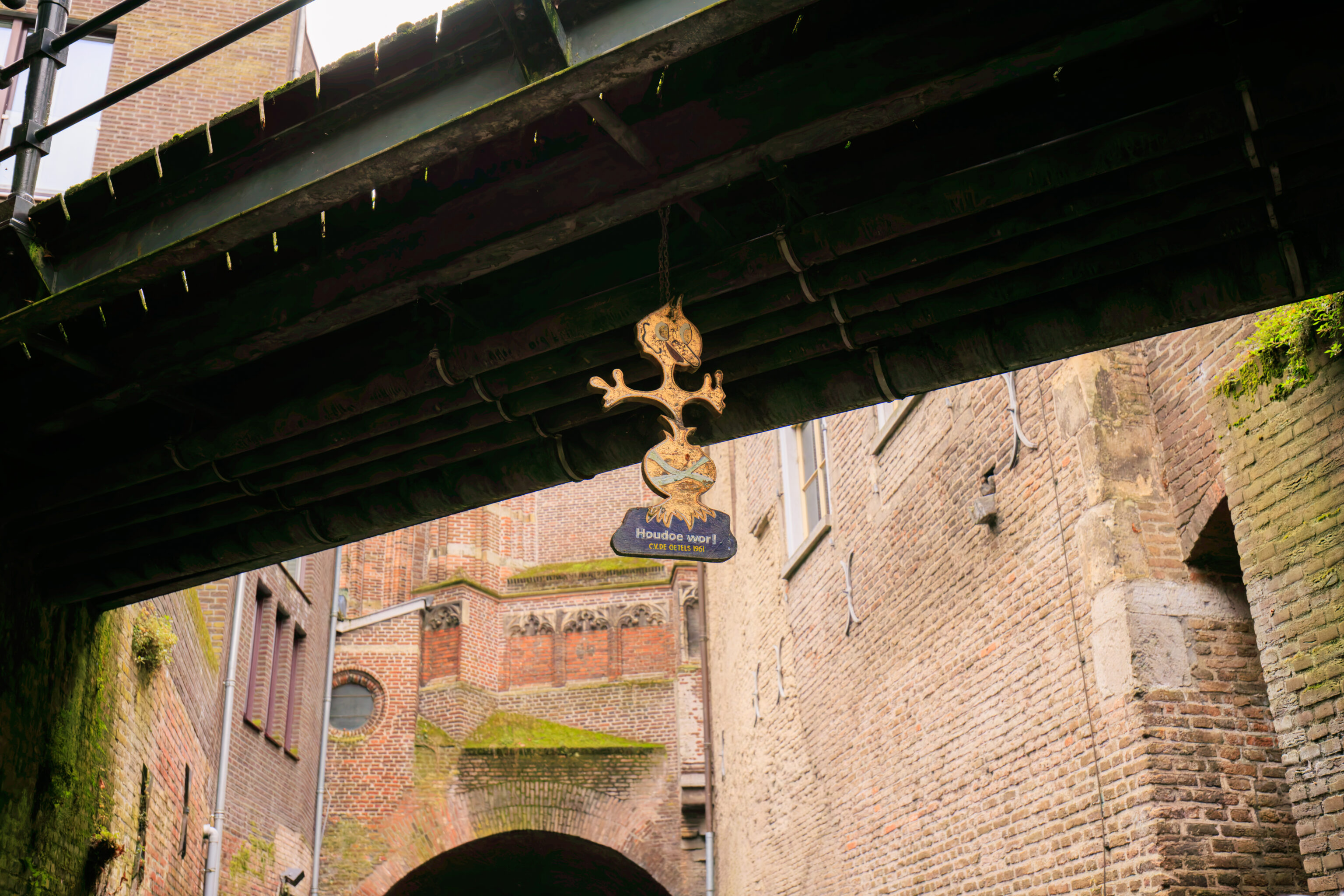
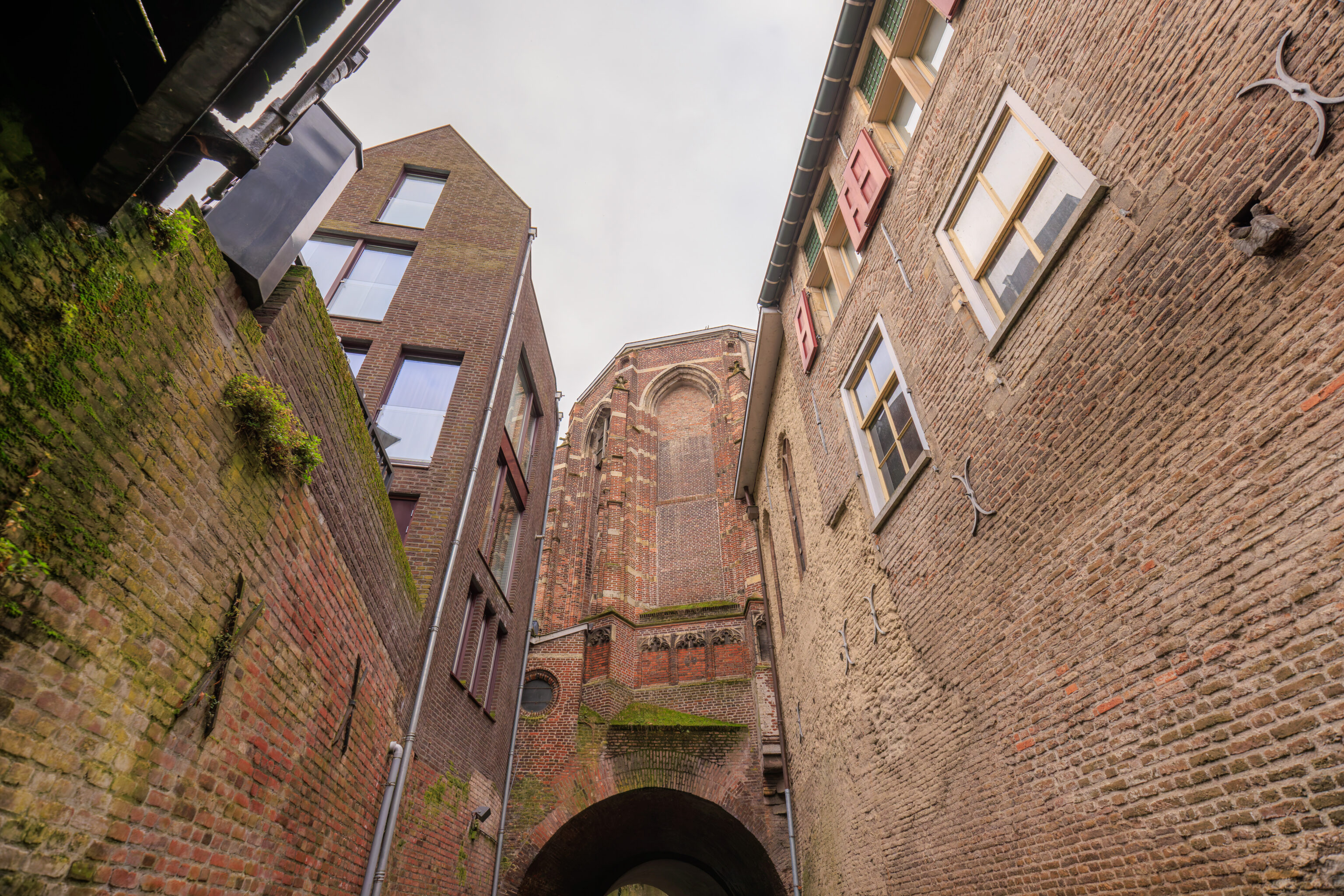
The canals here are much smaller than the ones we saw yesterday in central Amsterdam.
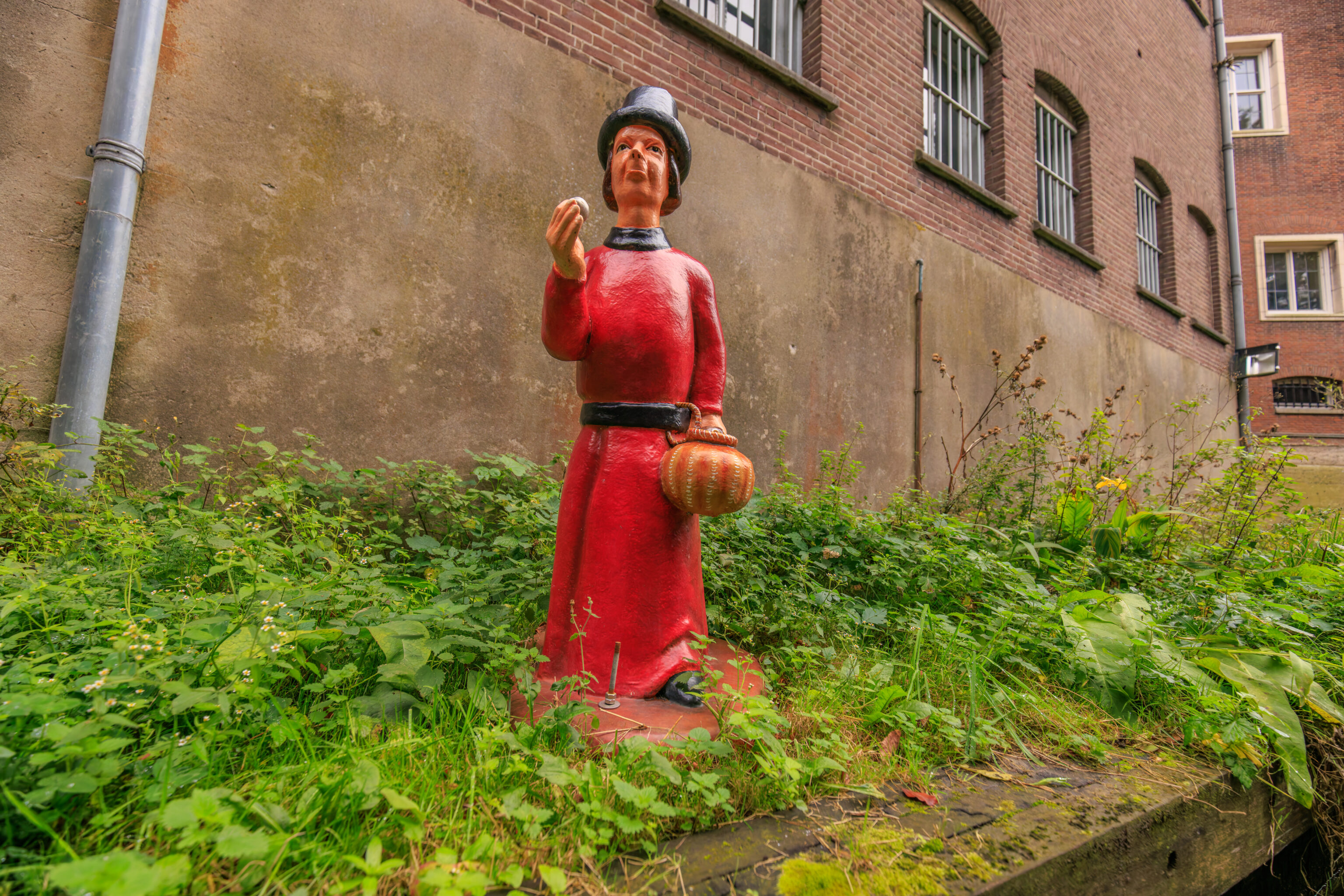
We passed by a small statue of a woman, something that would really only be seen from the canal.
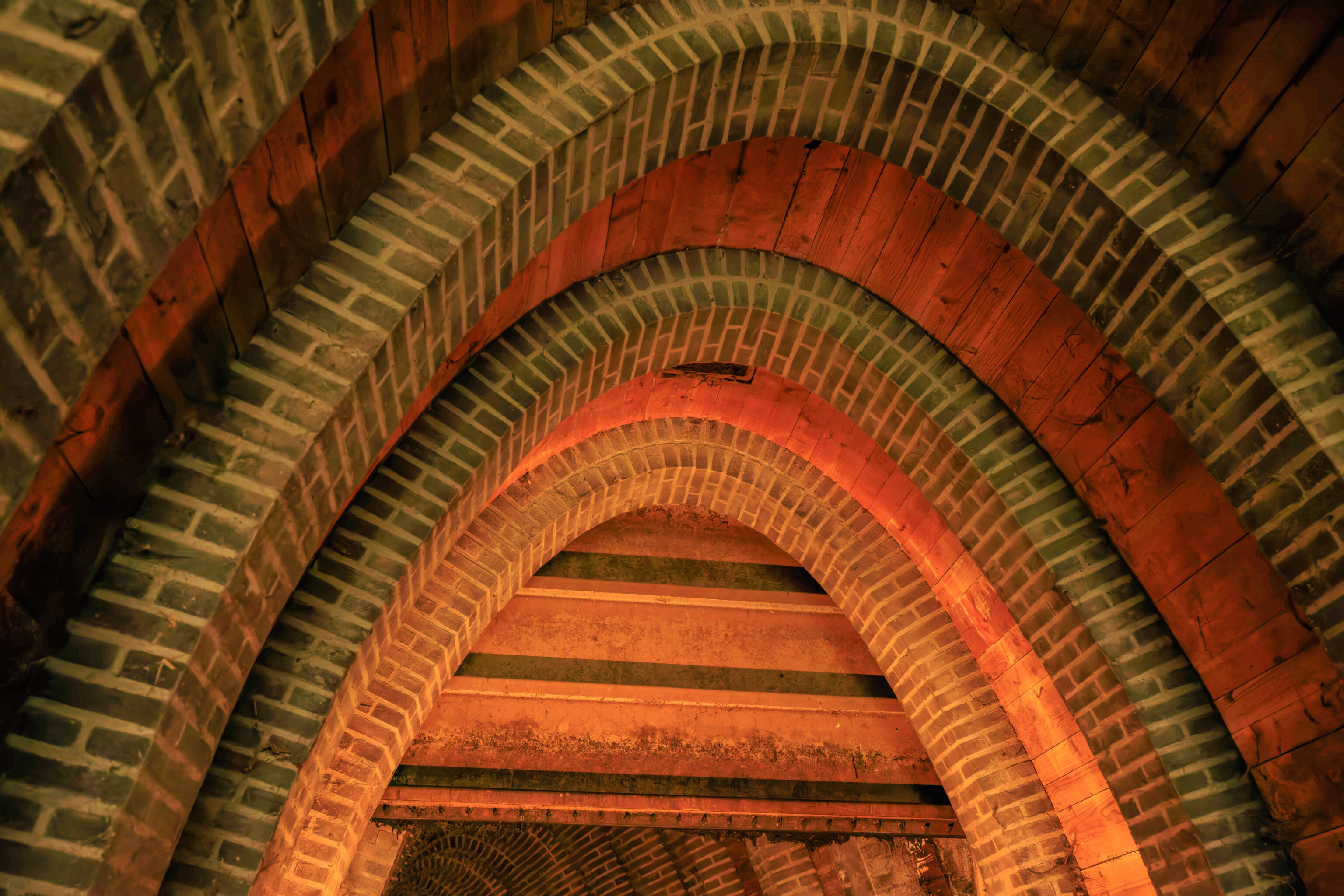
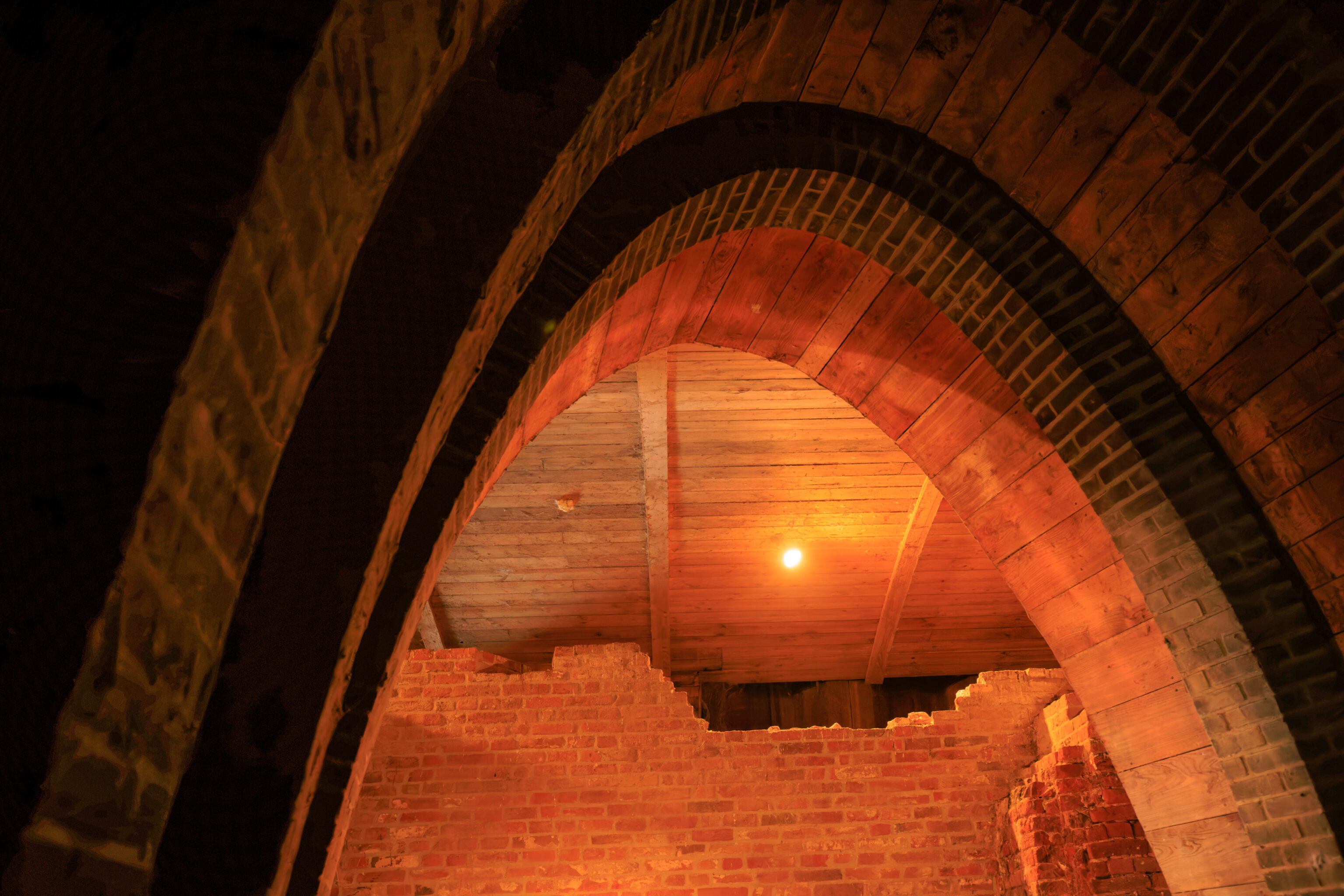
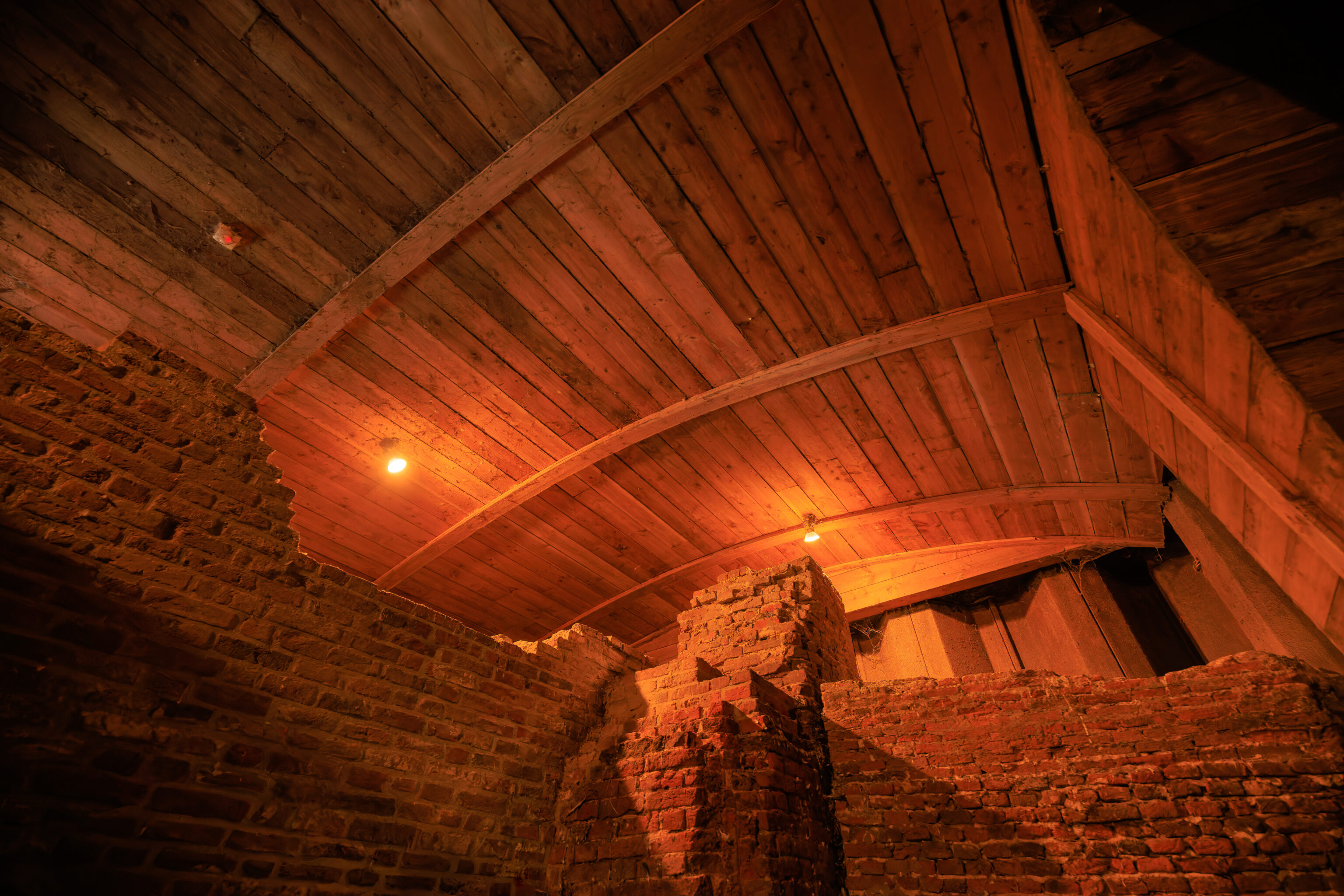
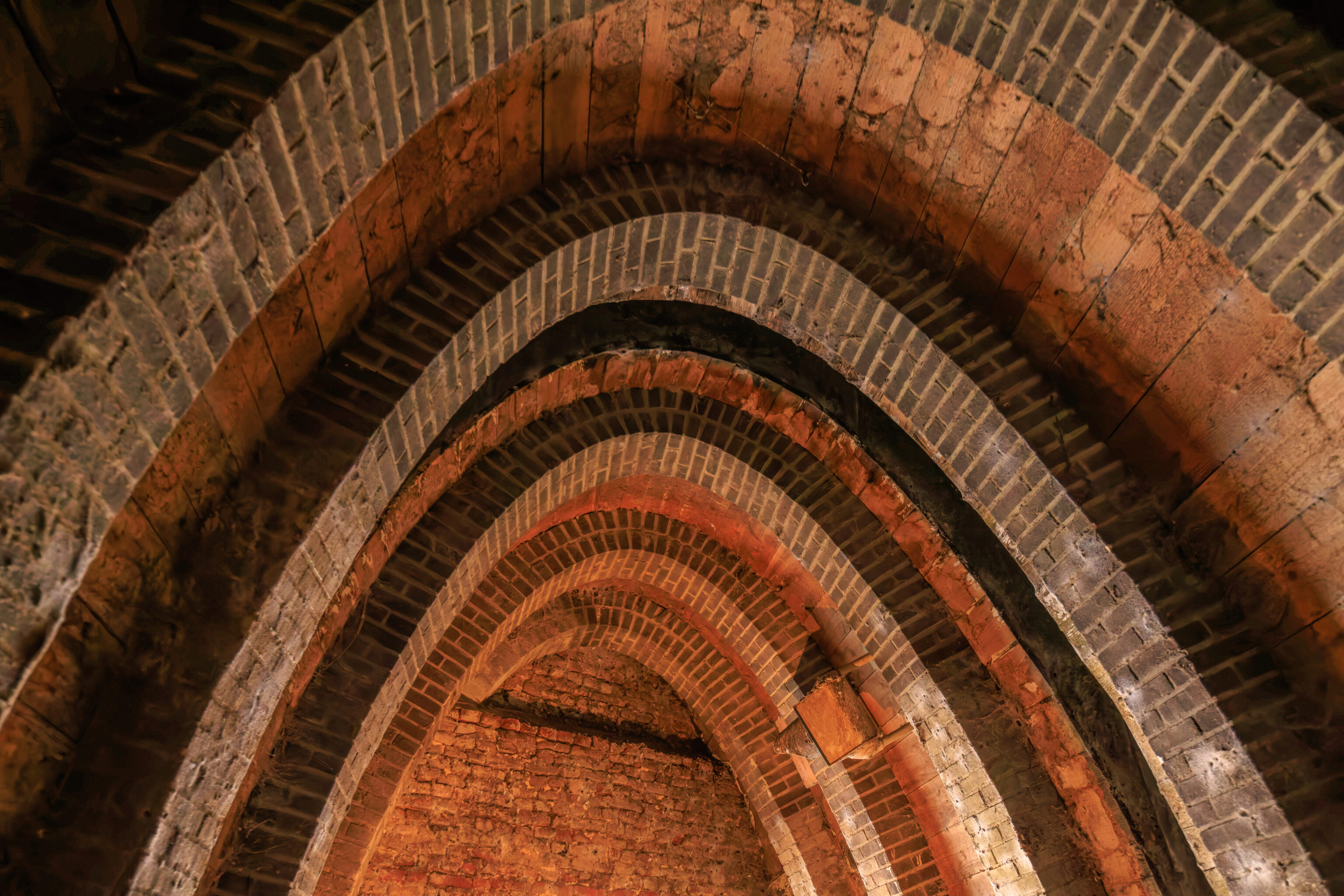
We entered a long underground section of the canal. This portion was dimly illuminated by lights. The tour guide also carried a flashlight to illuminate points of interest.
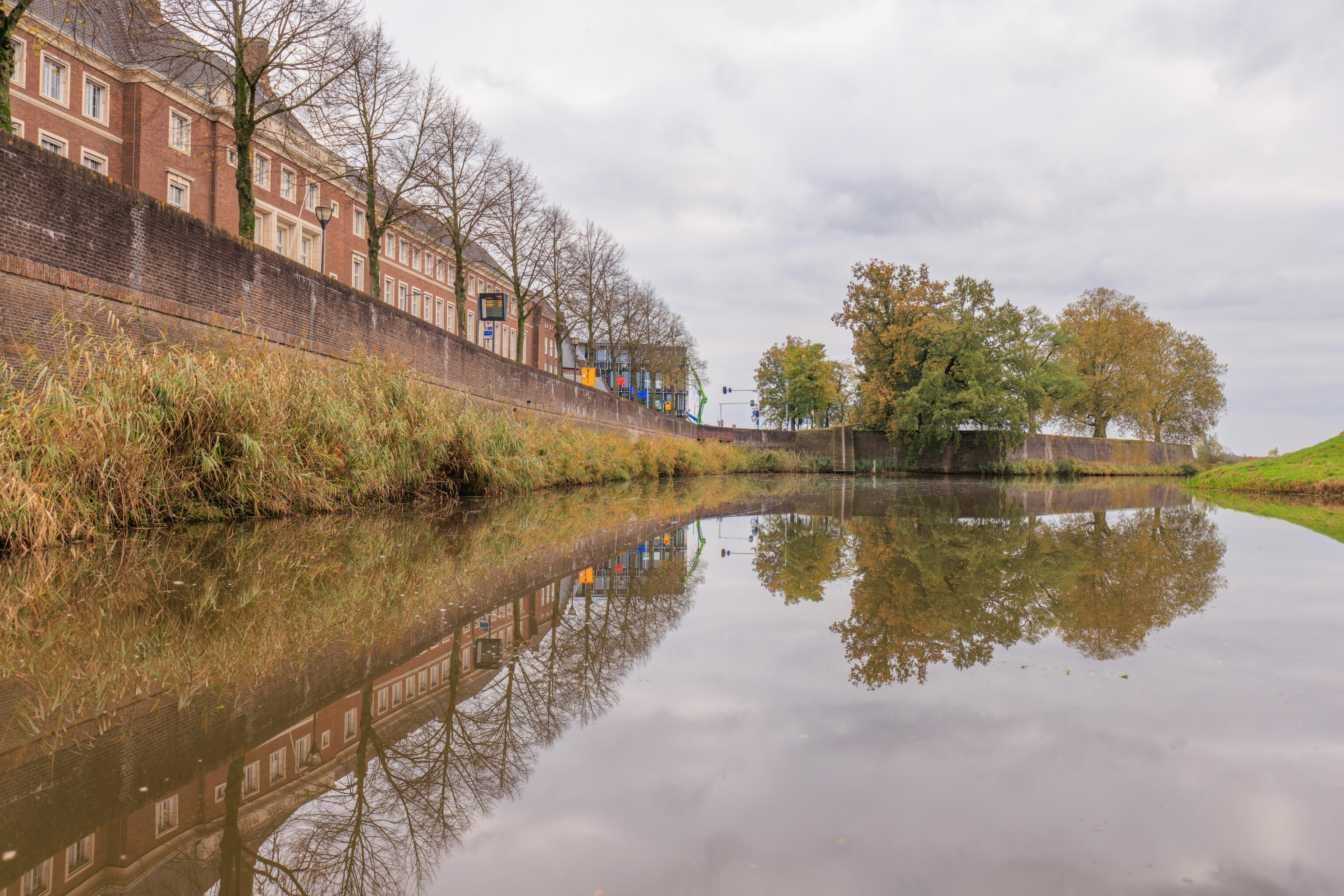
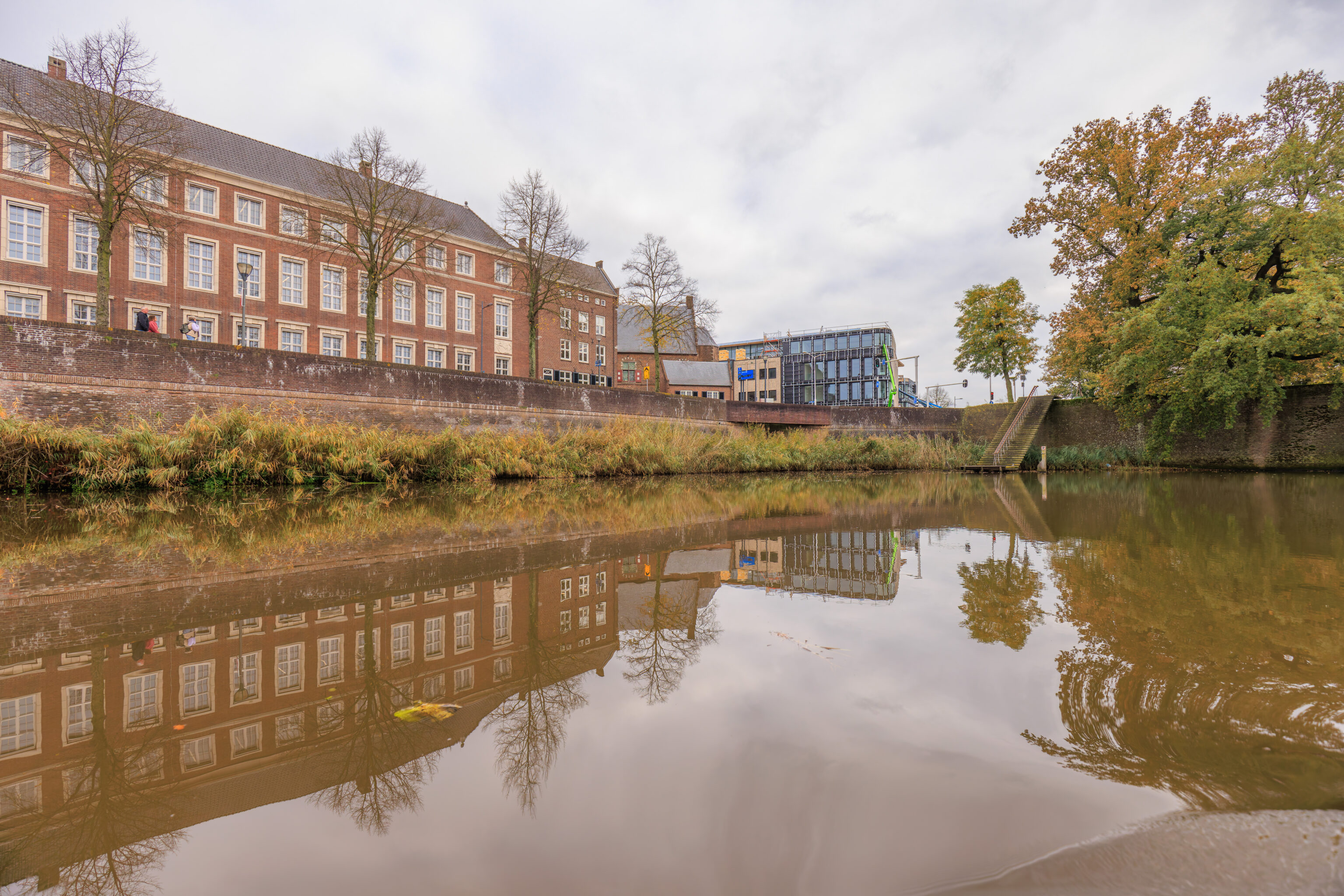
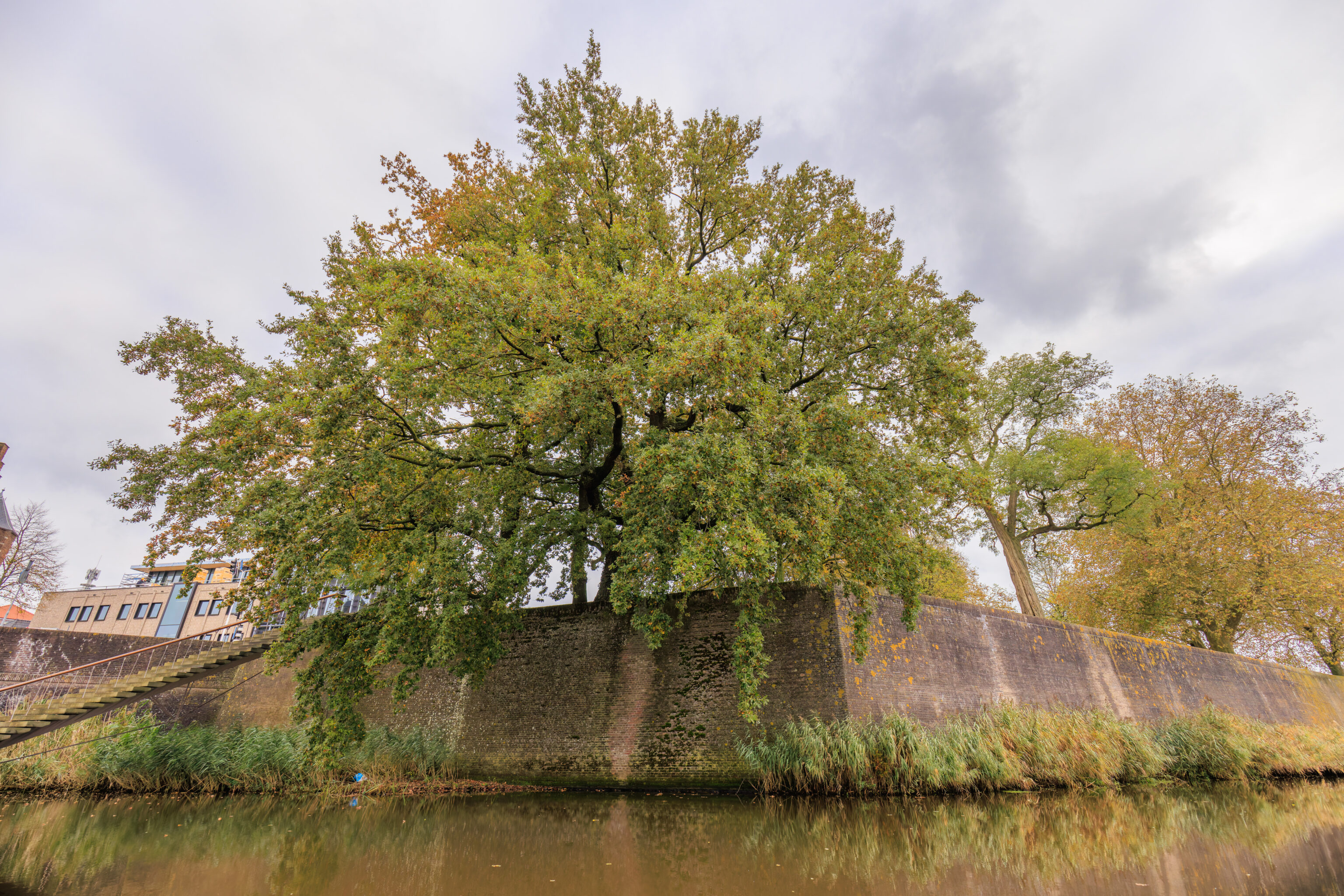
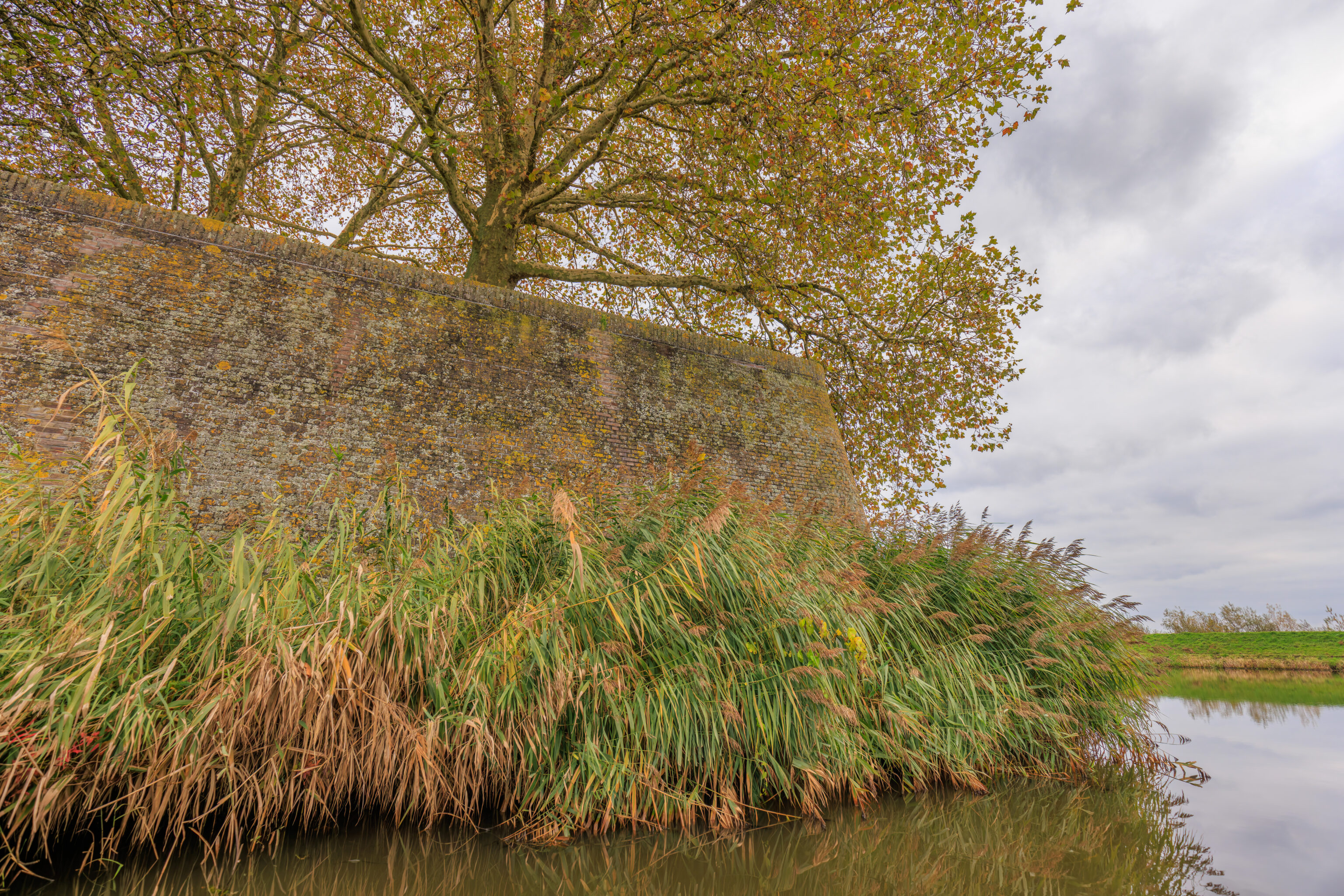
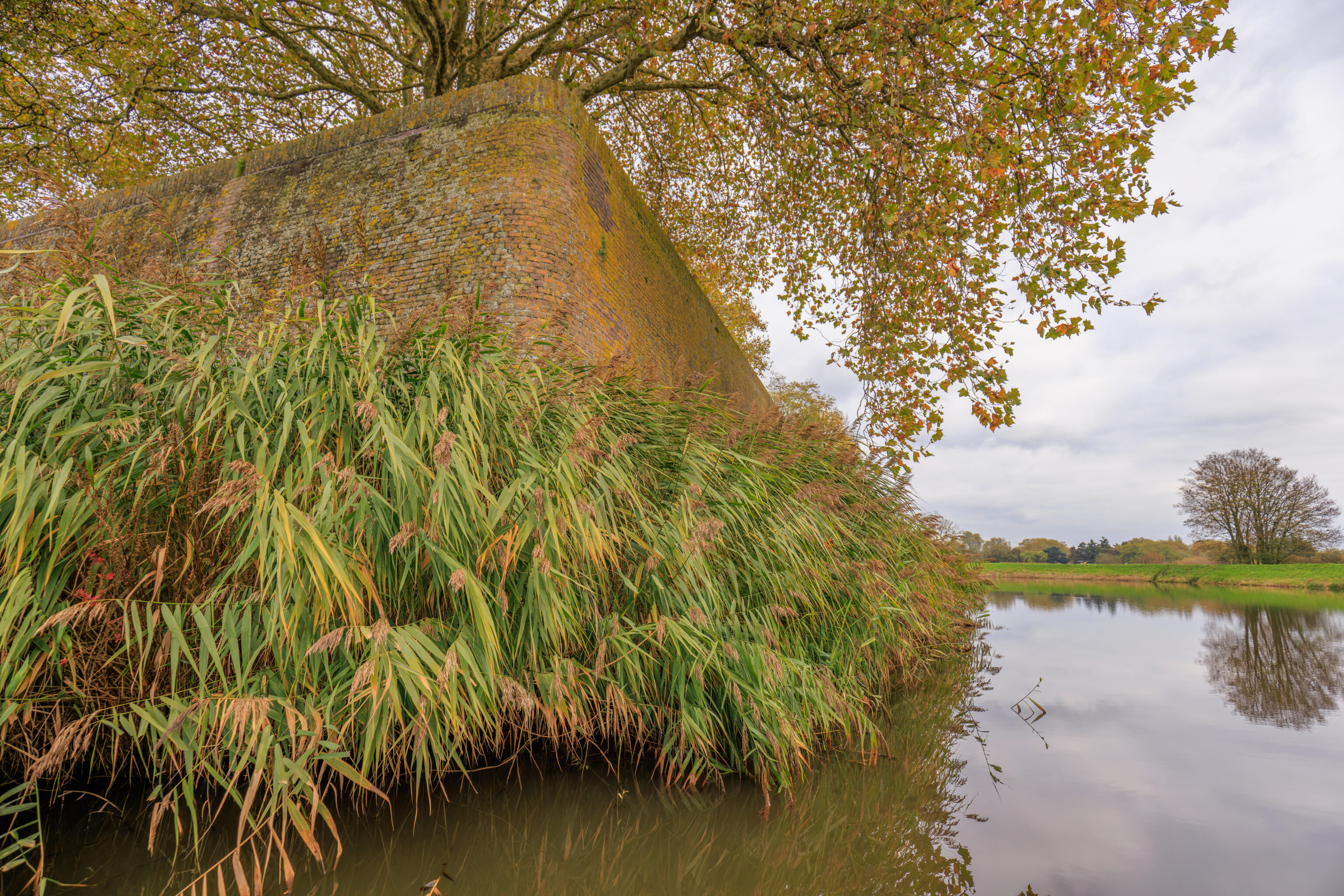
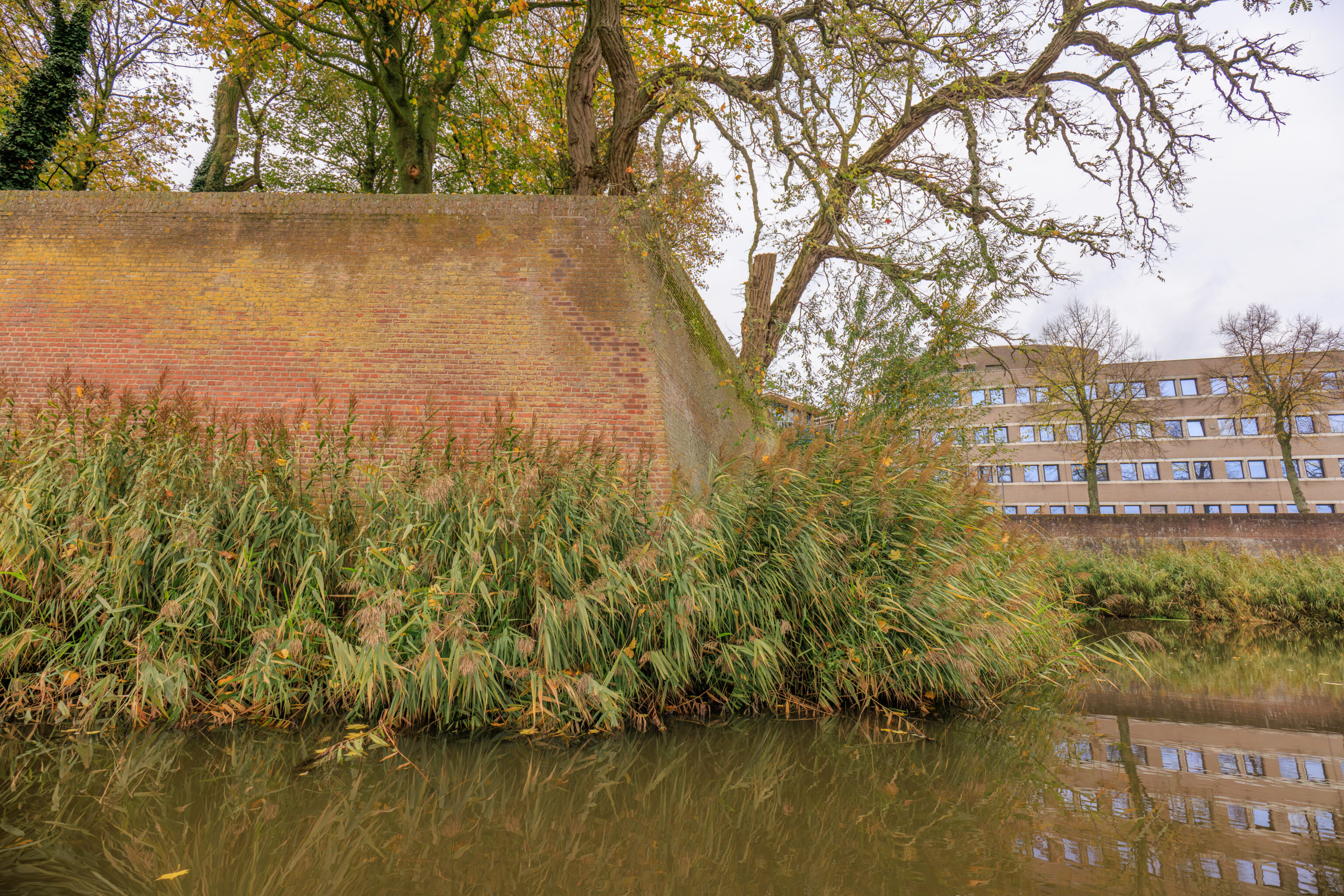
We emerged from the tunnel into the Singelgracht. This body of water was formerly part of a mount that surrounded the city, which was a fortress. Some fortress elements, like this triangular bastion, are still present.
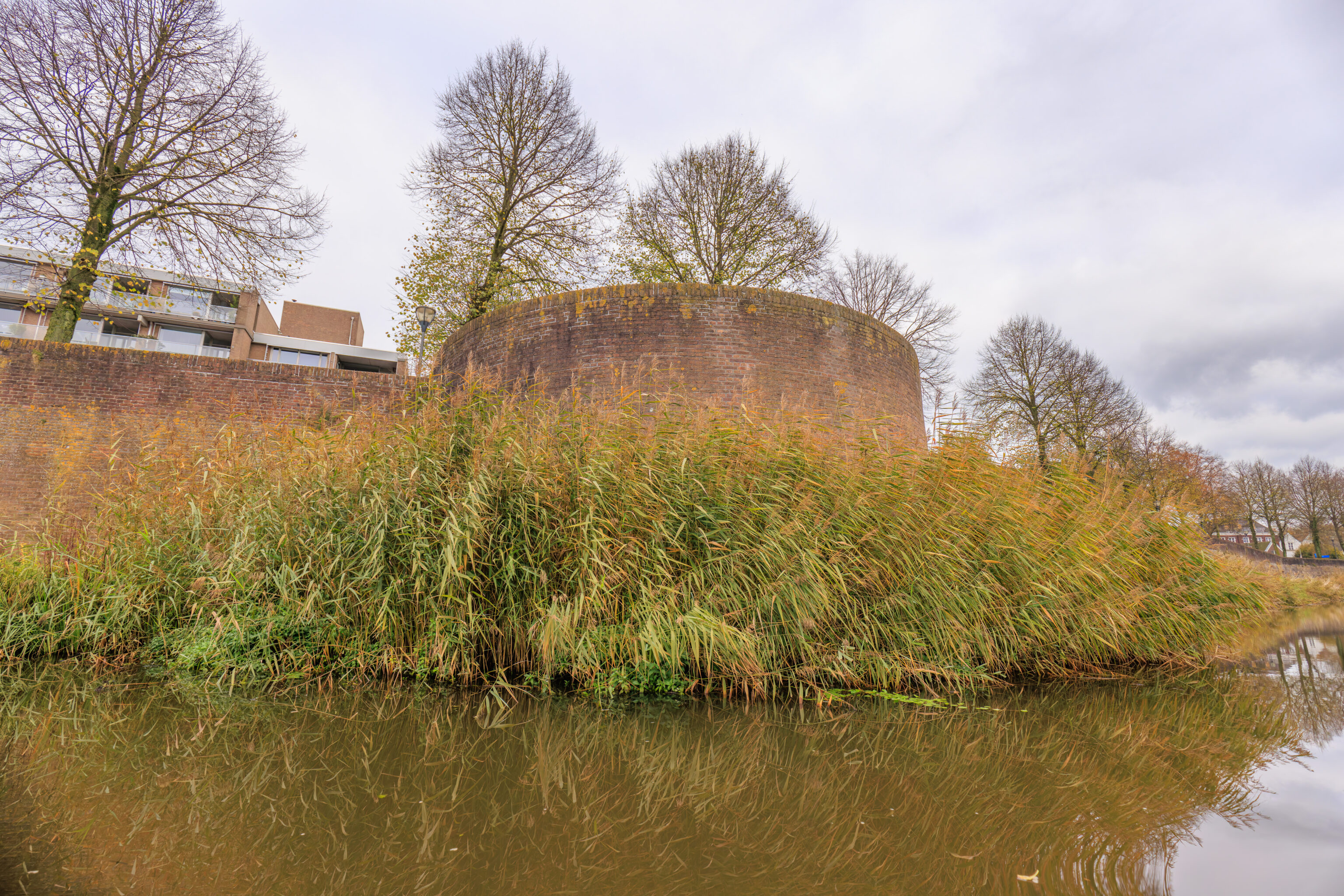
This semi-circular extrusion was possibly also part of the fortress wall?
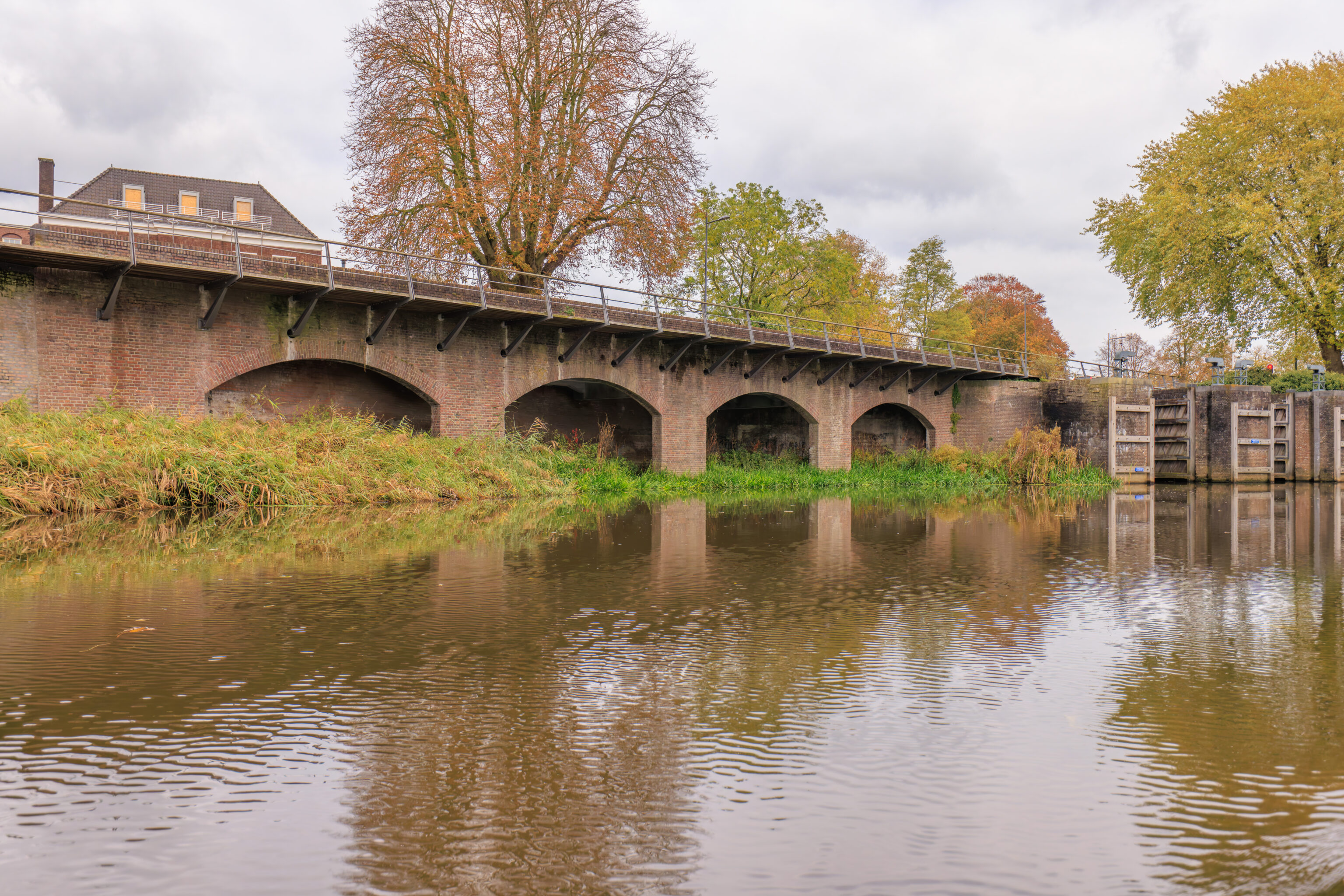
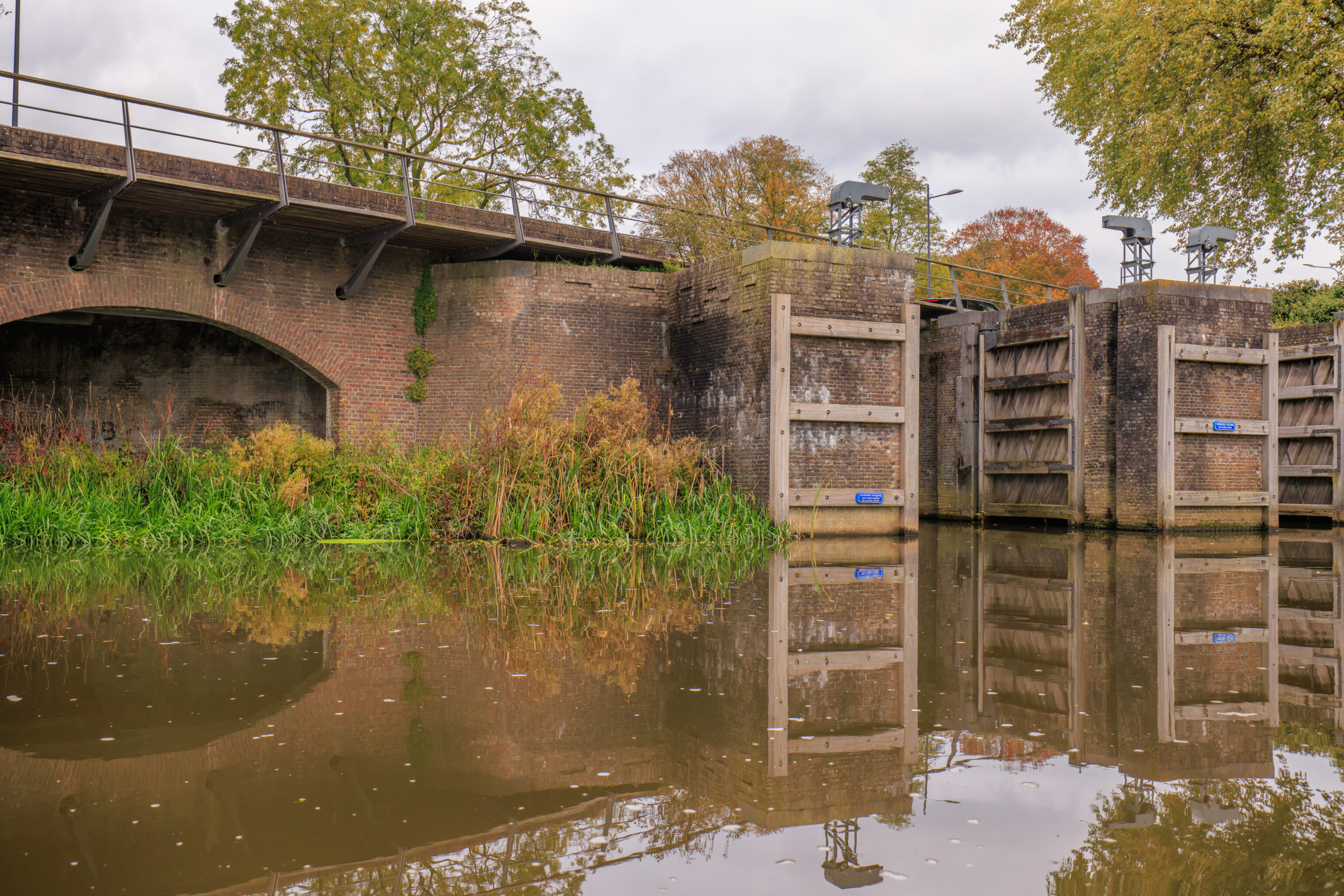
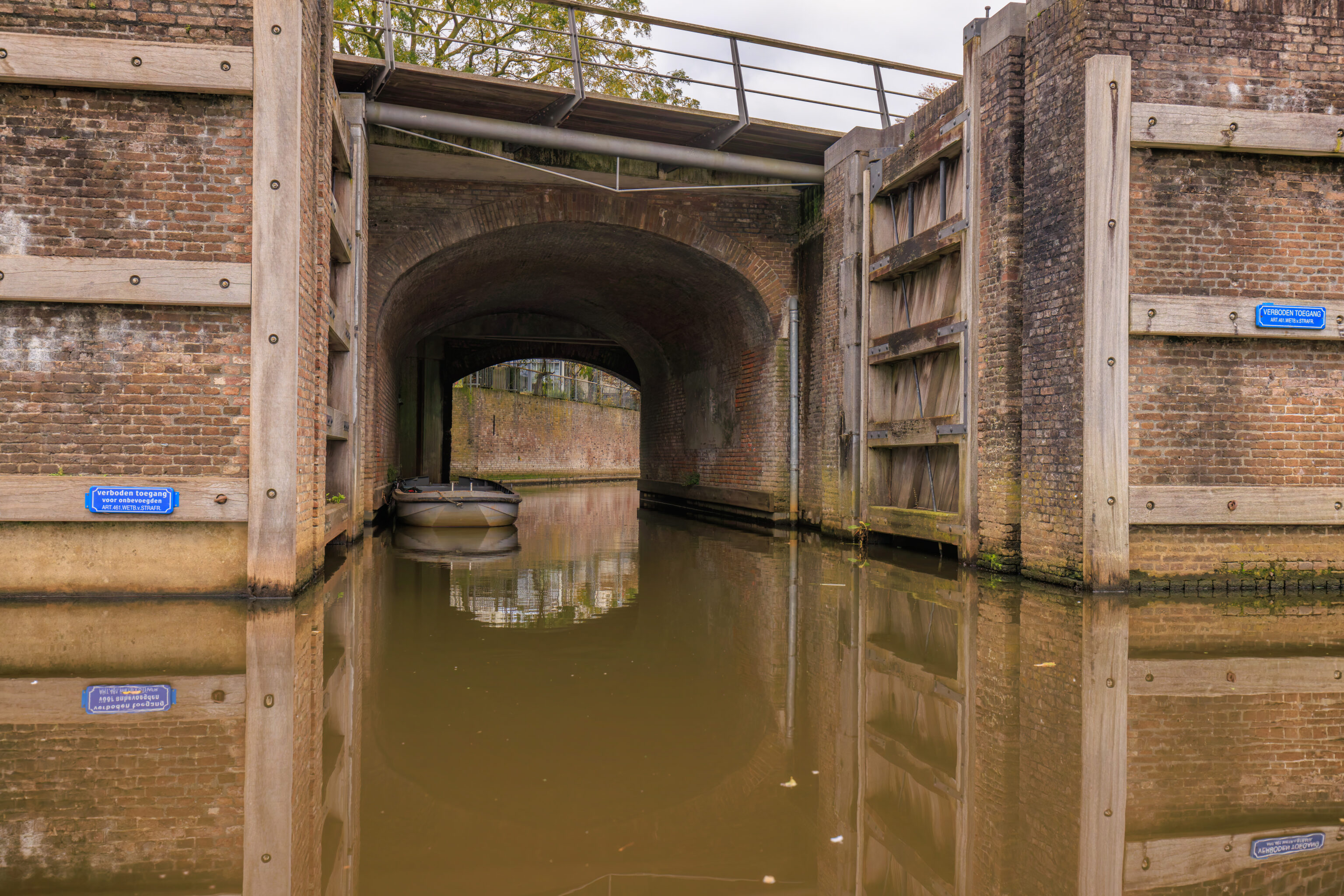
We soon reached some water gates. We re-entered the city through one of them.
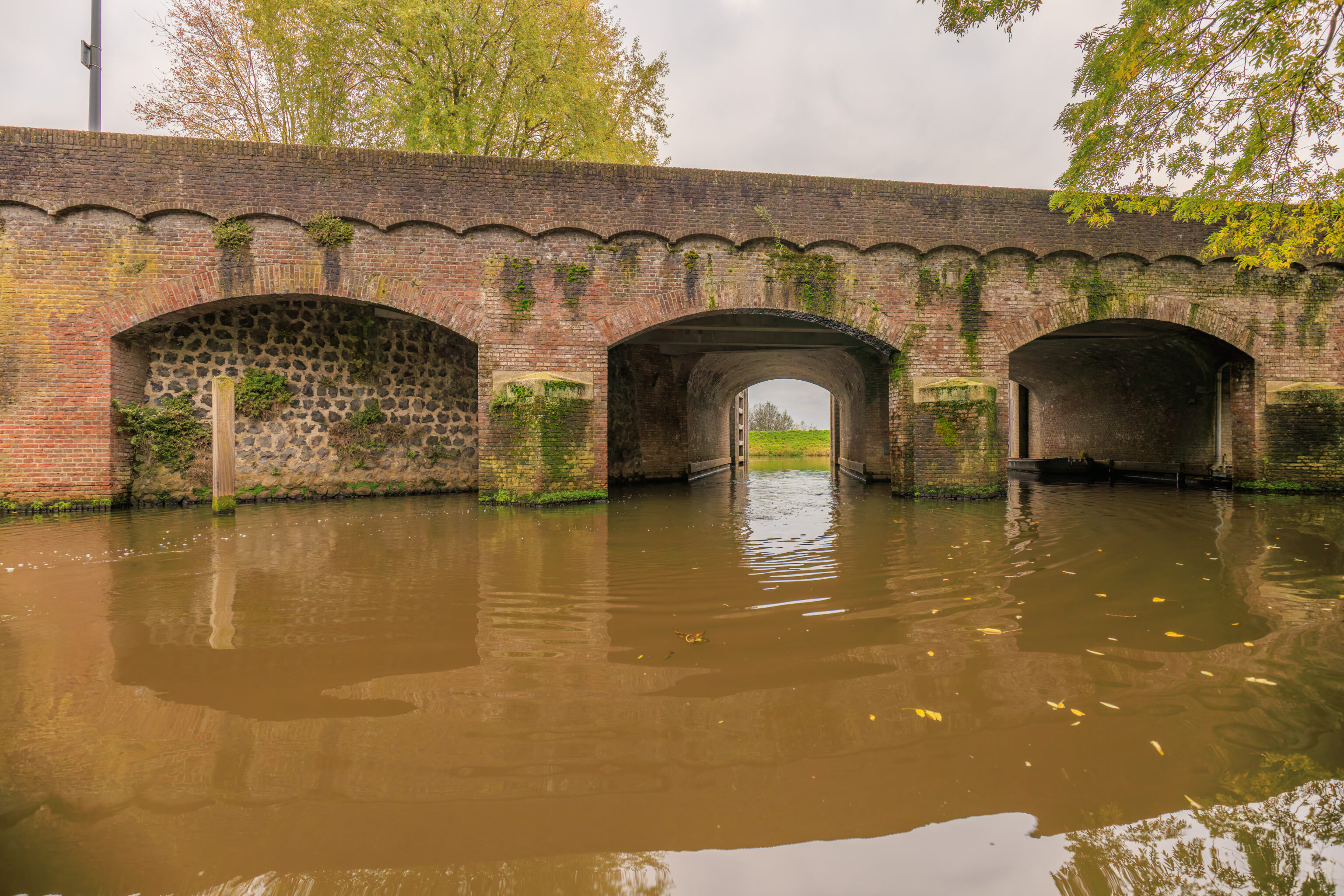
The view from the city side of the water gates.
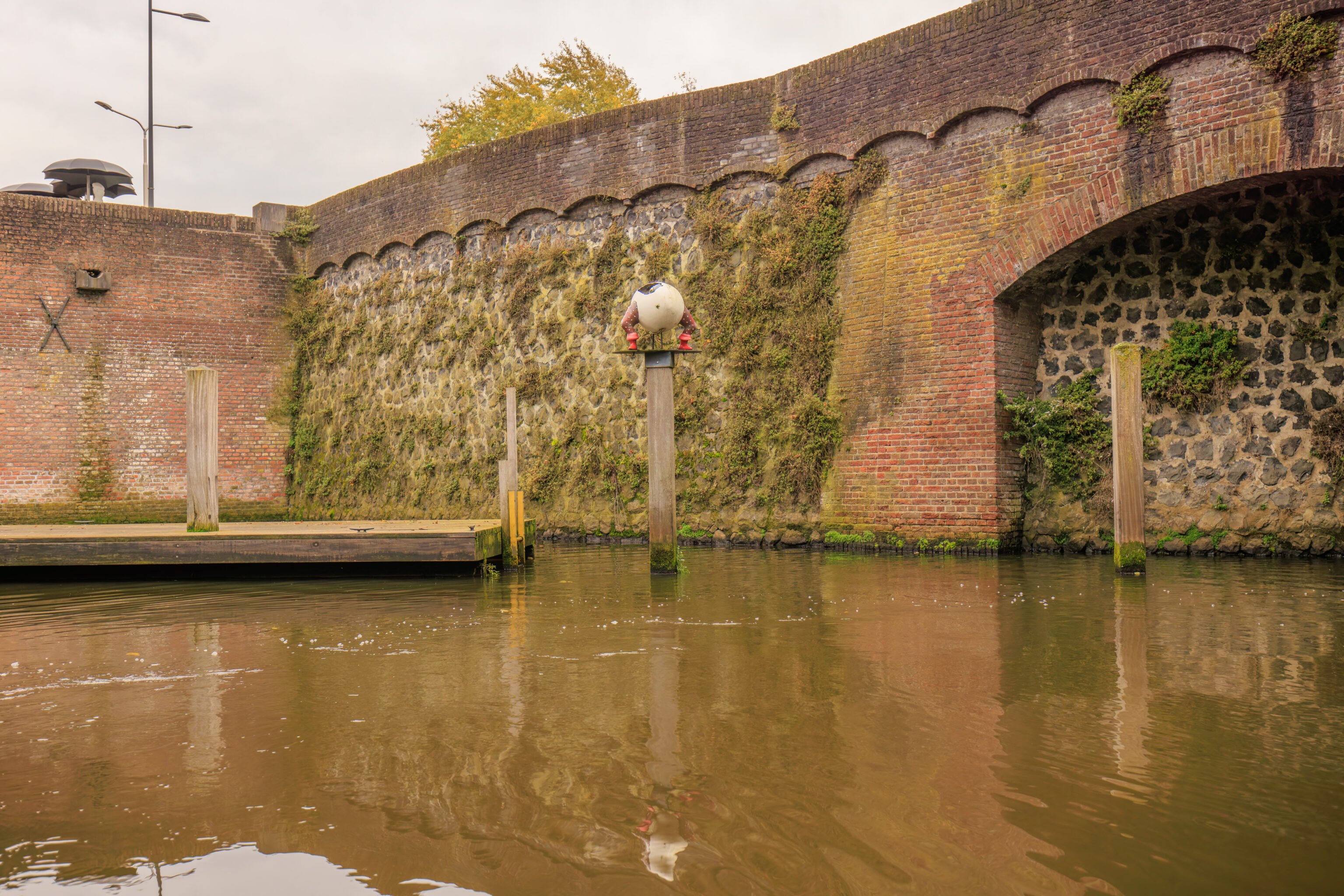
Seems like a sculpture of something from a Jheronimus Bosch painting?
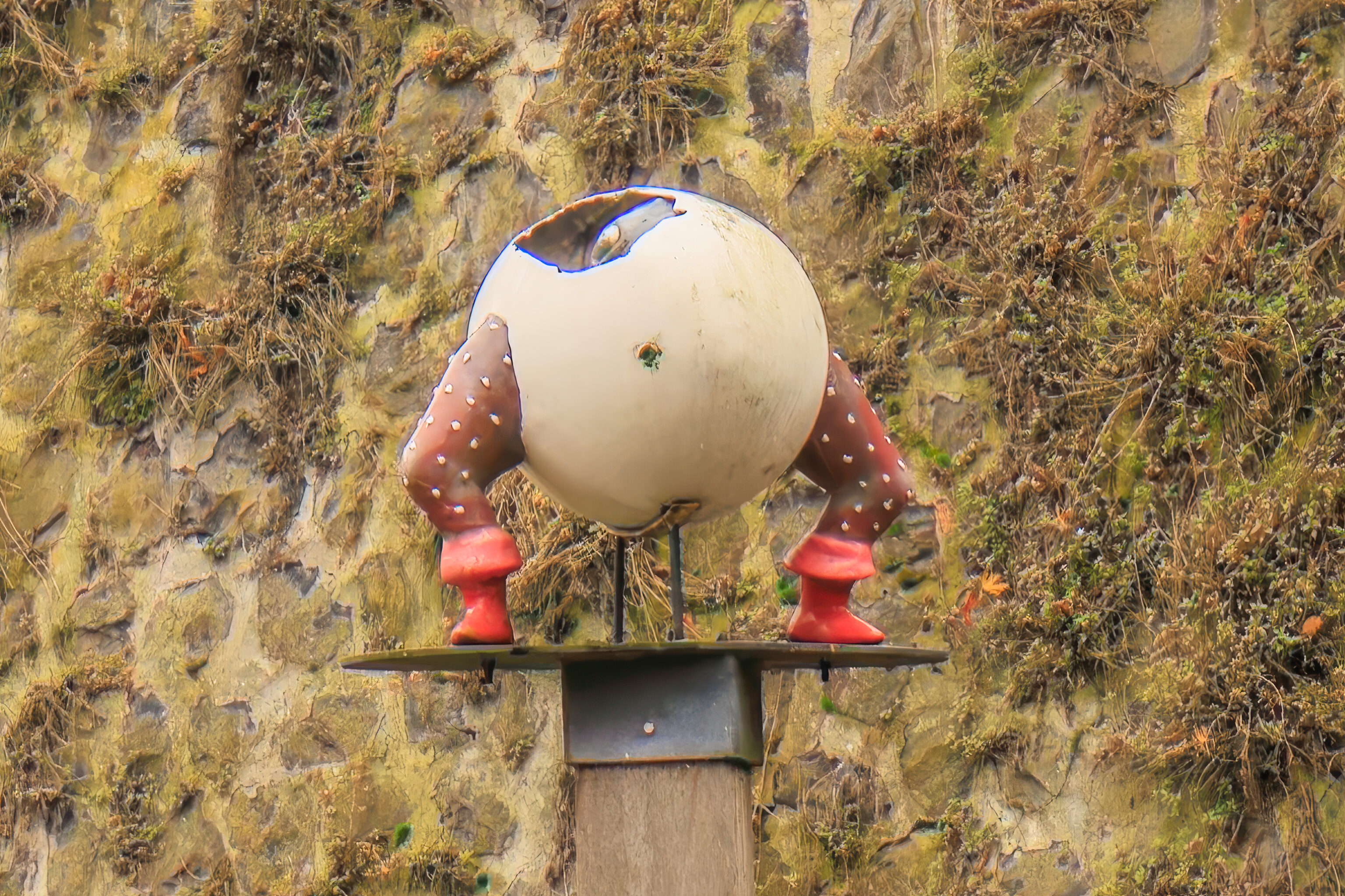
Definitely seems like it!
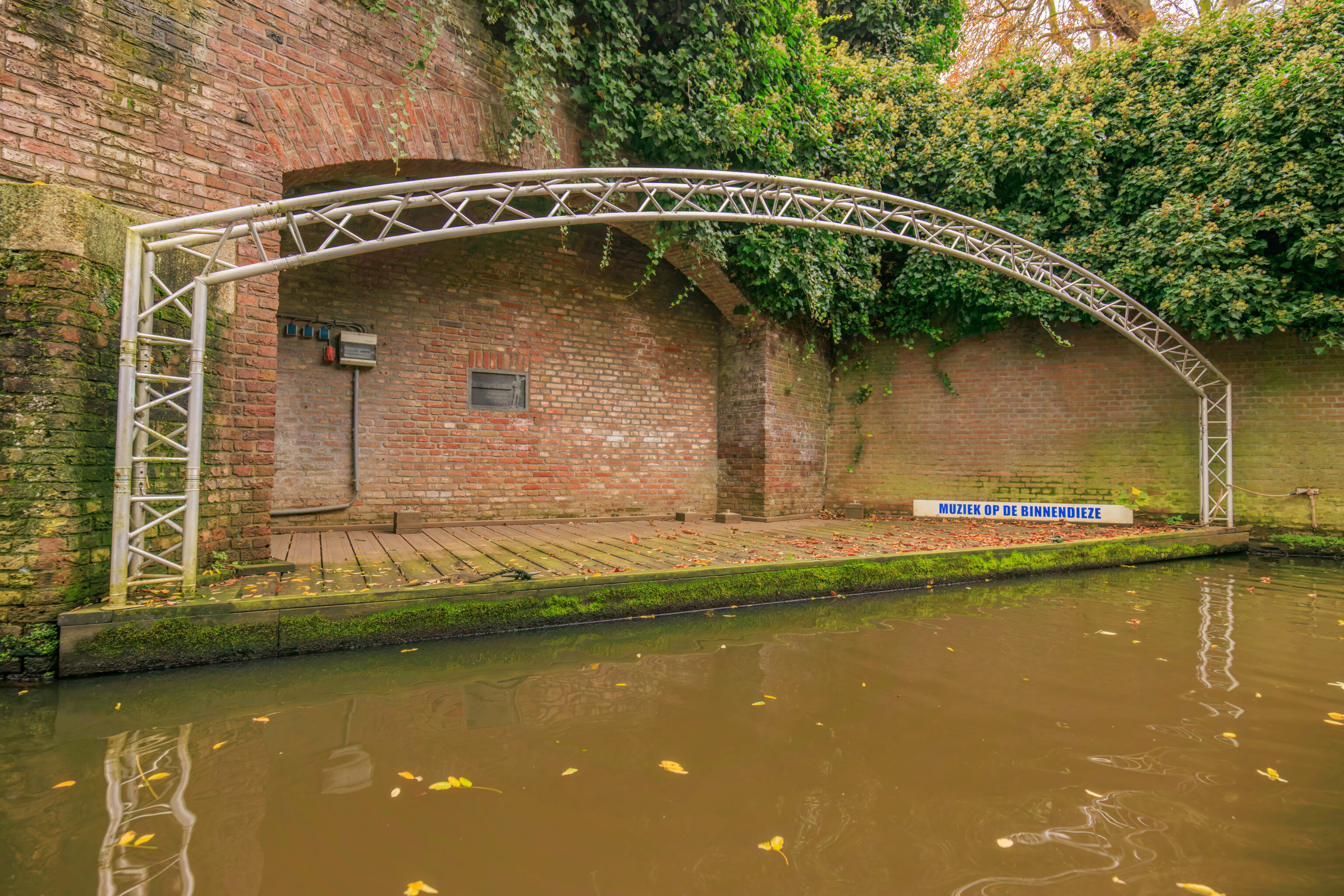
It looks like musical performances are held here?
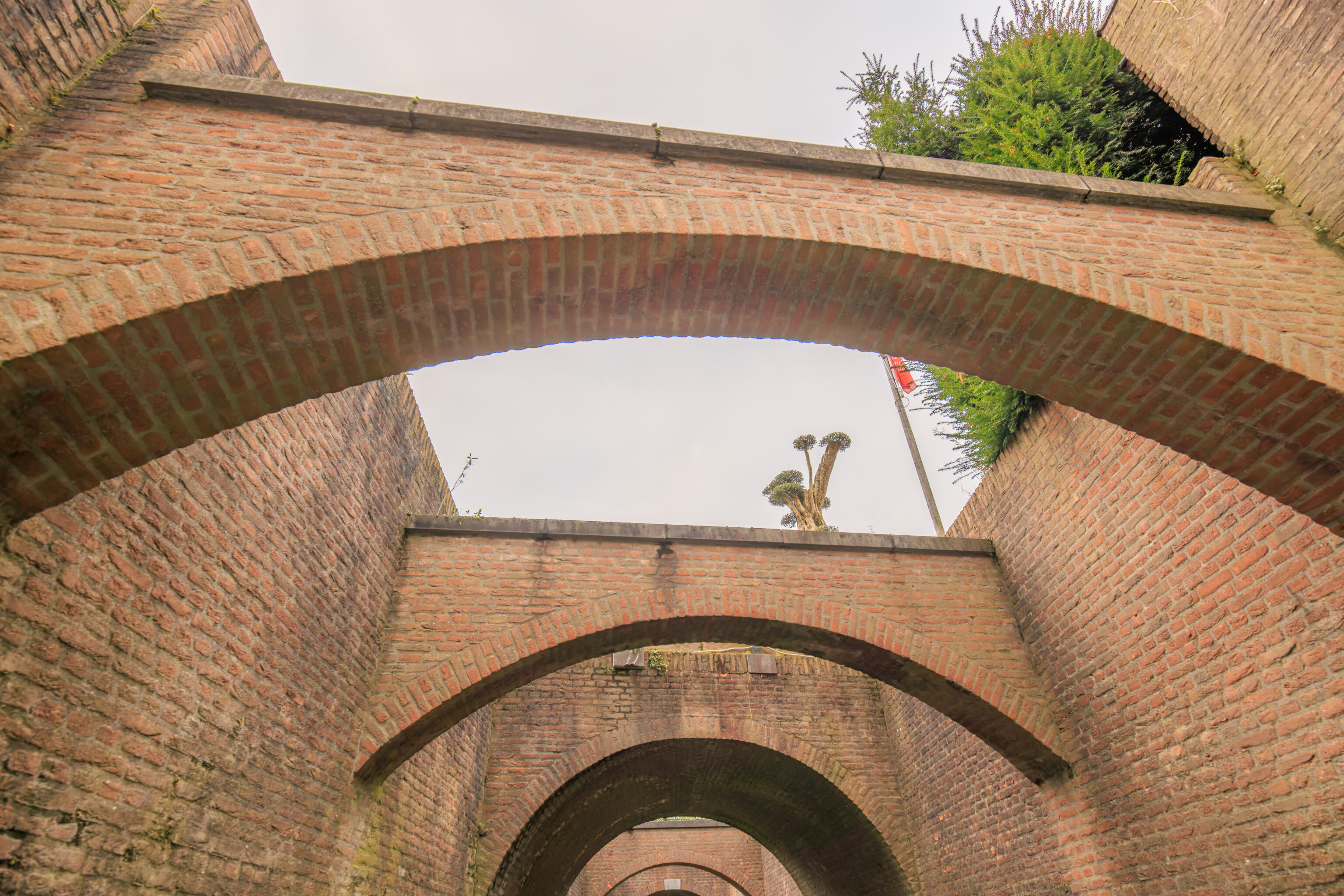
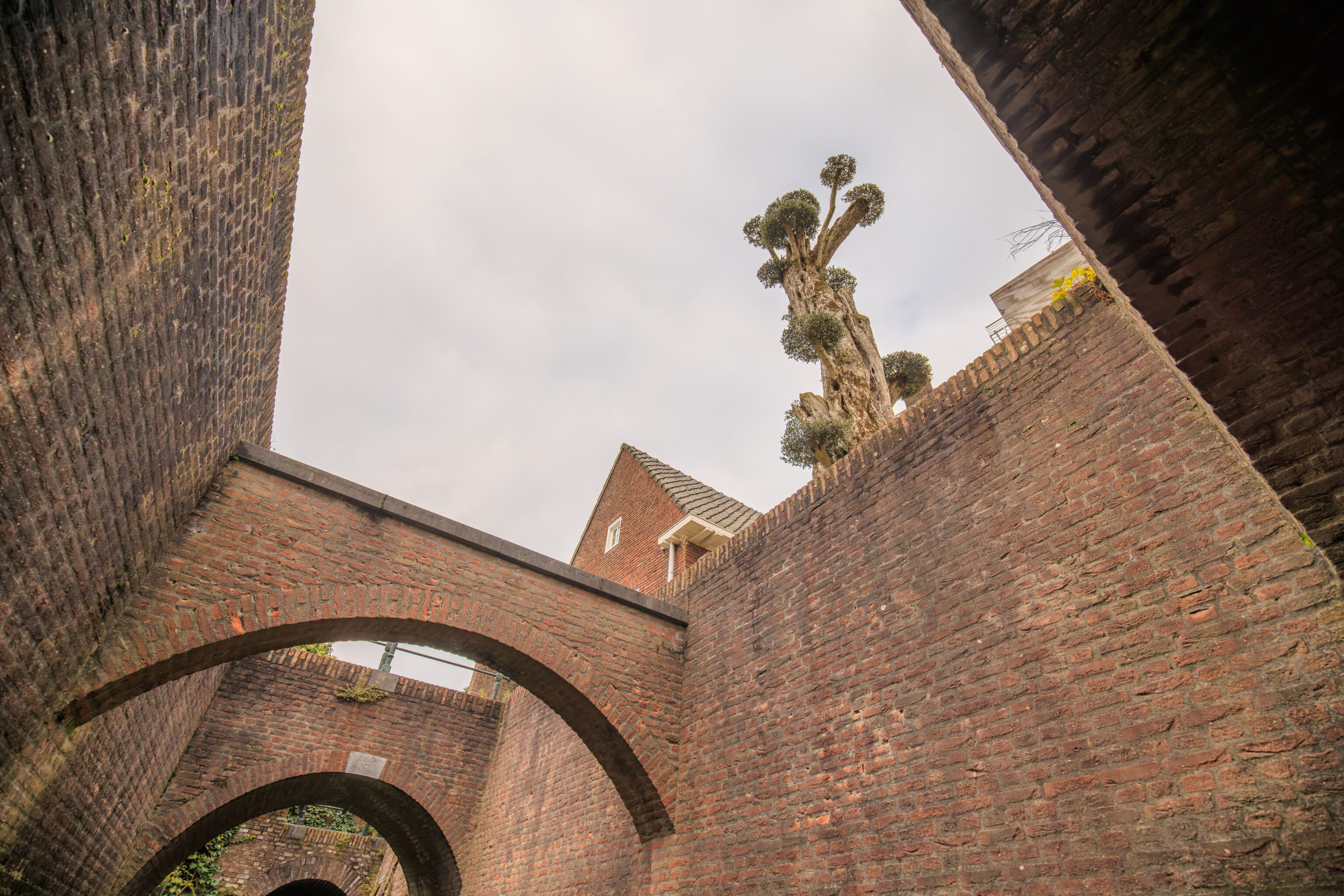
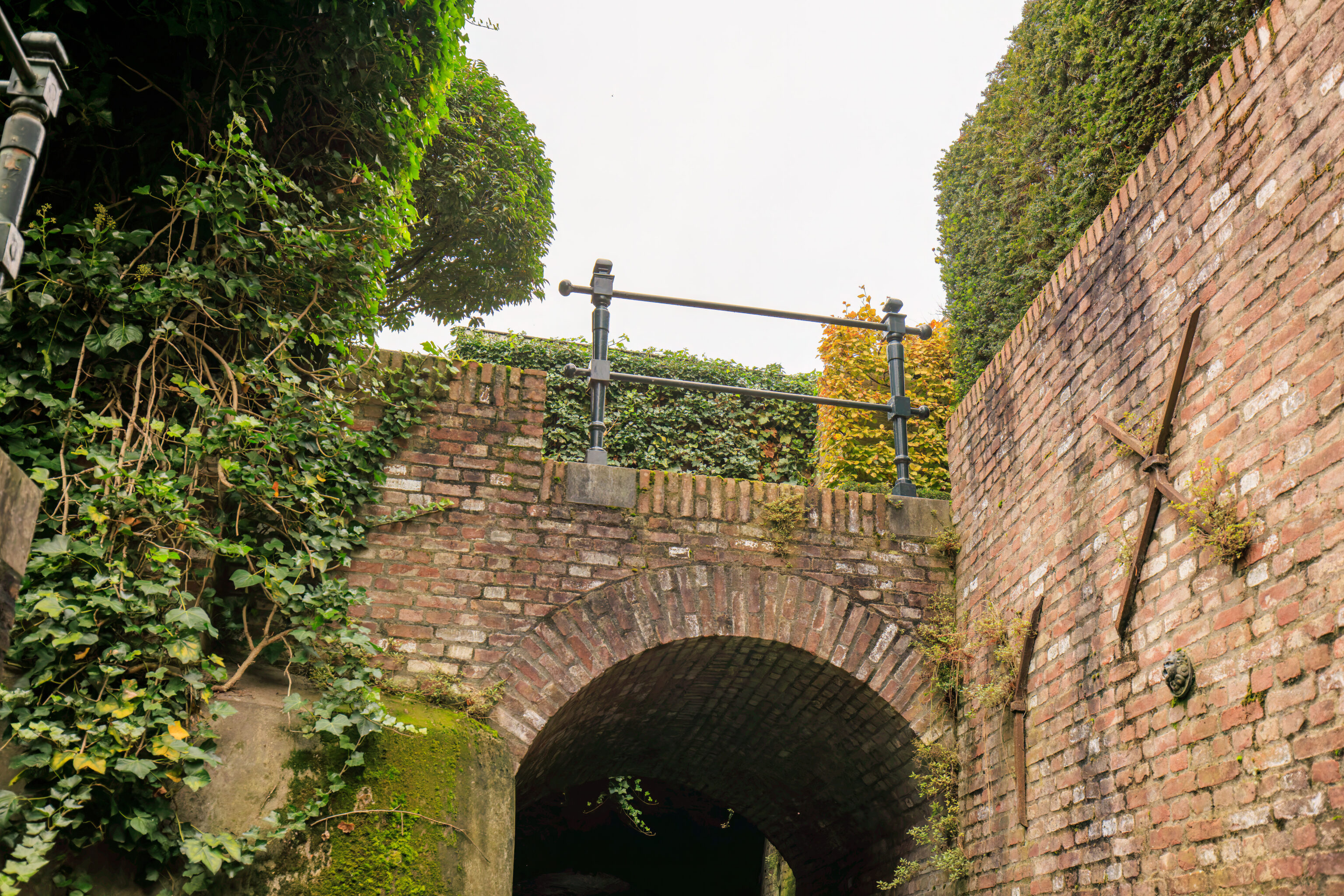
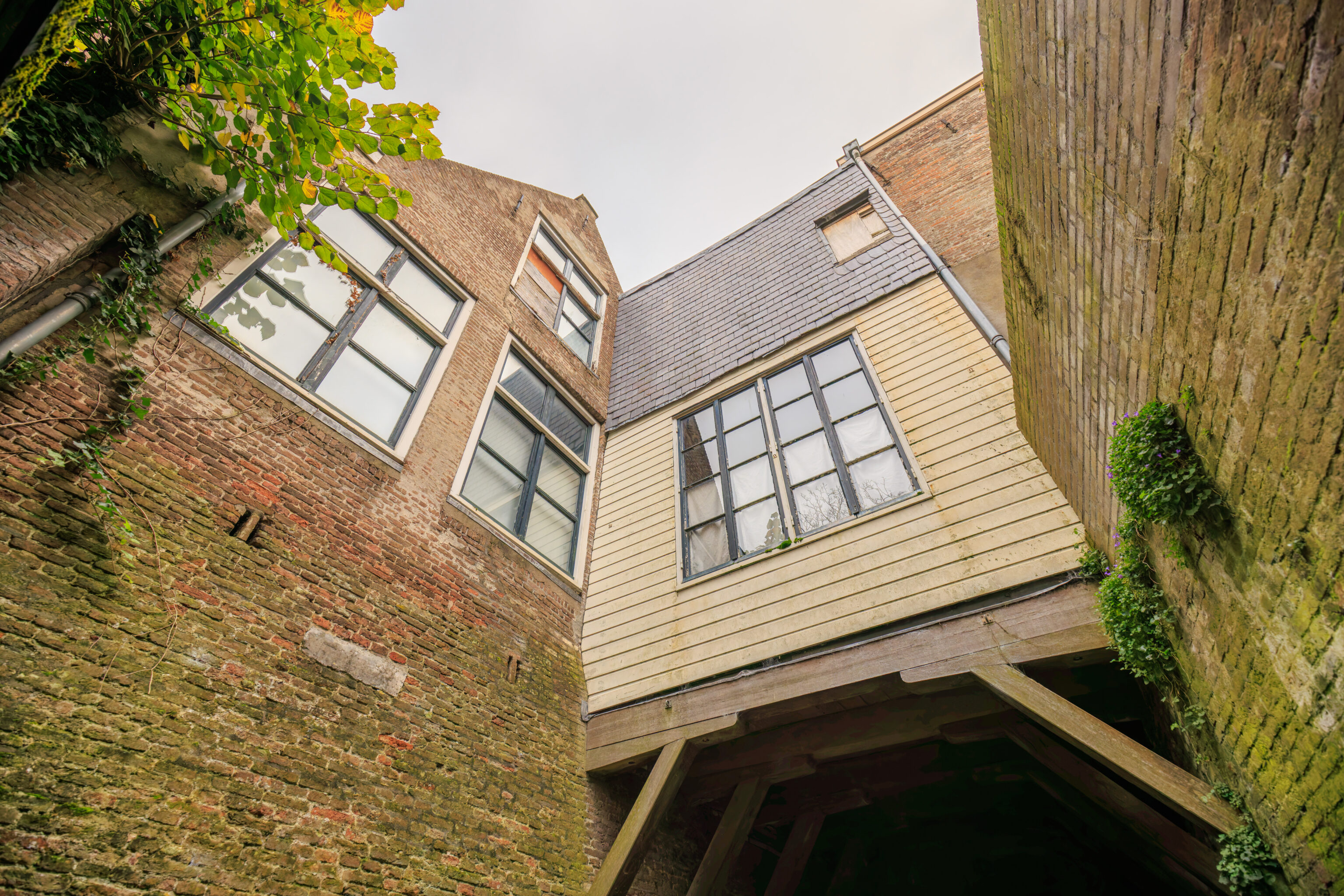
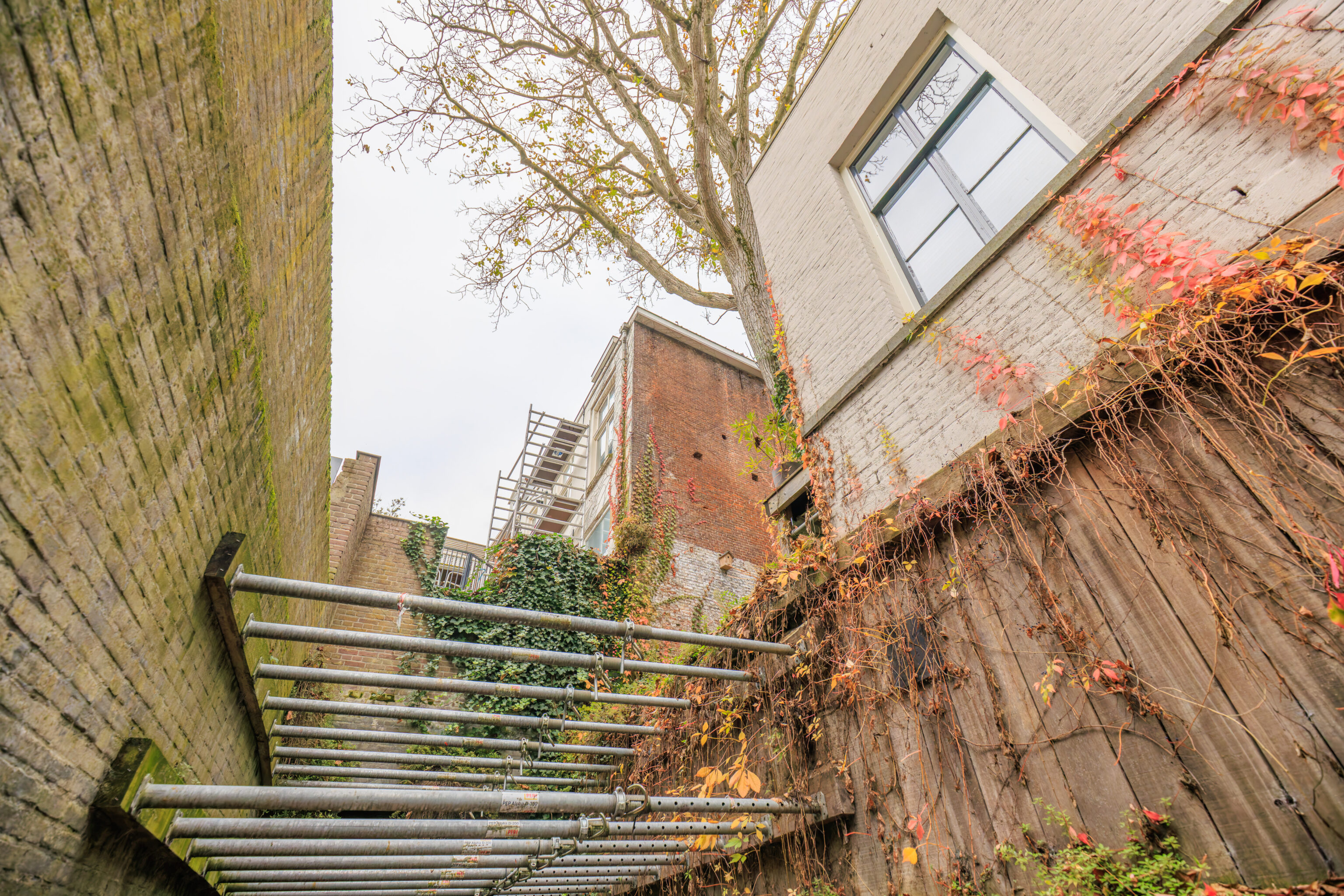
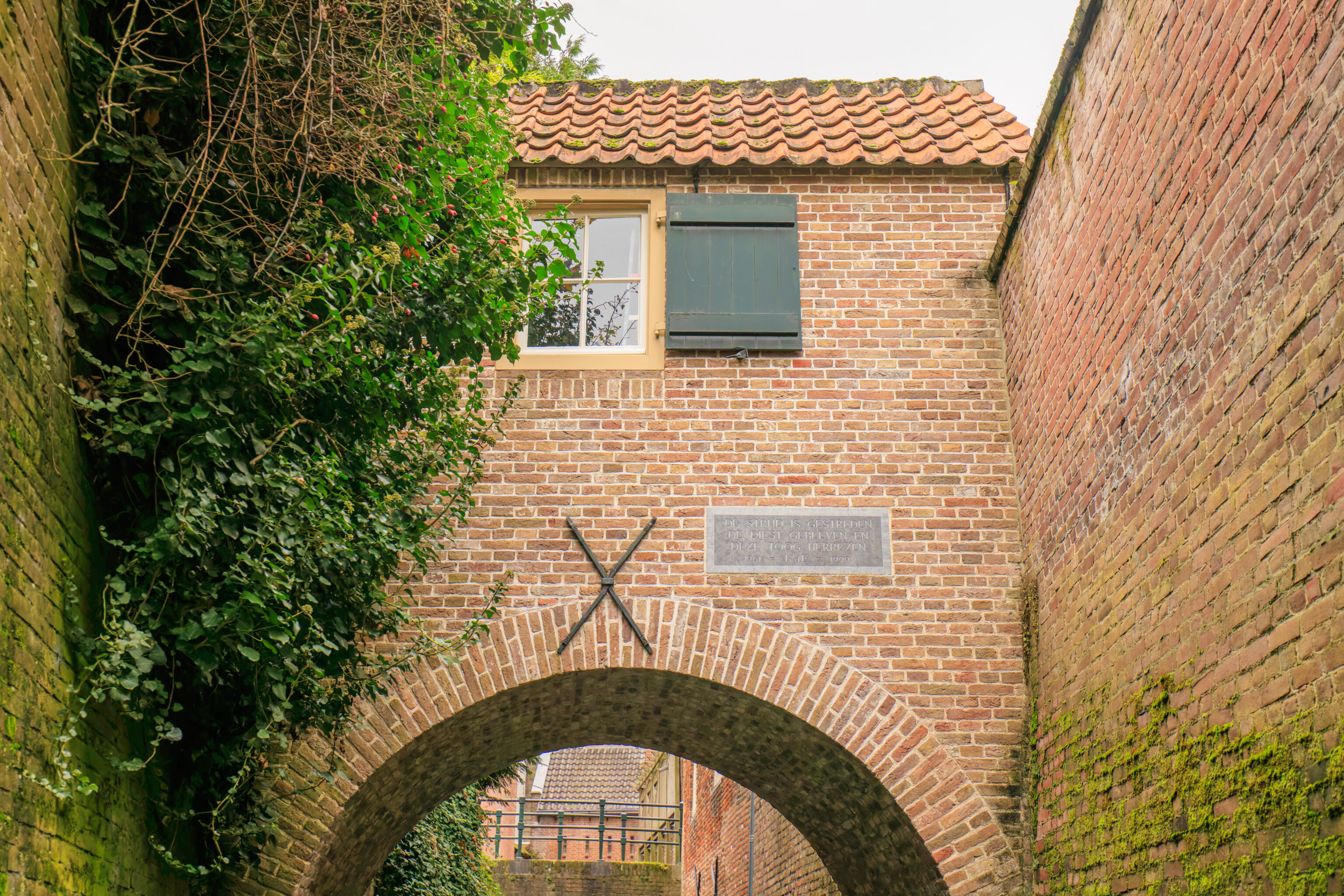
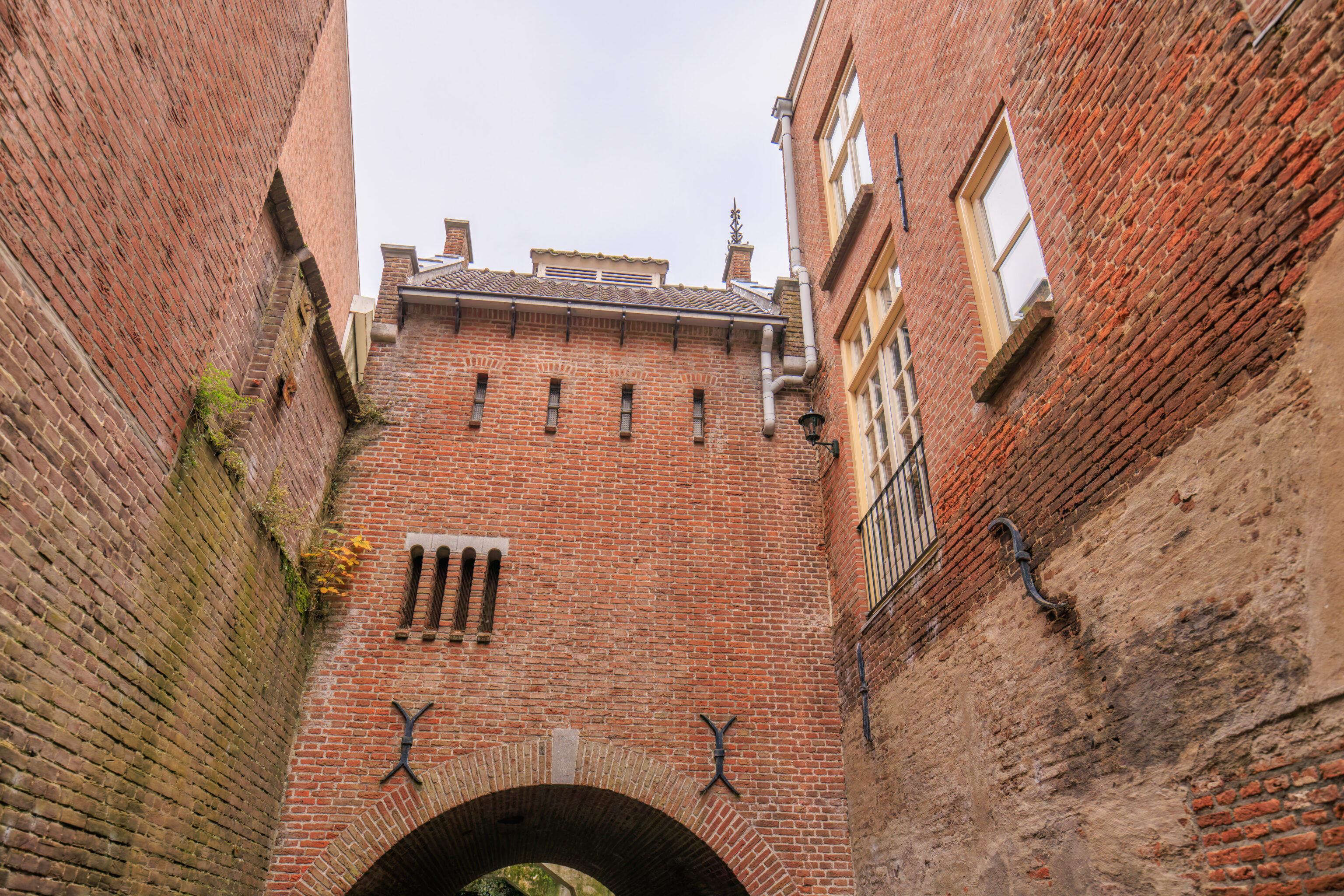
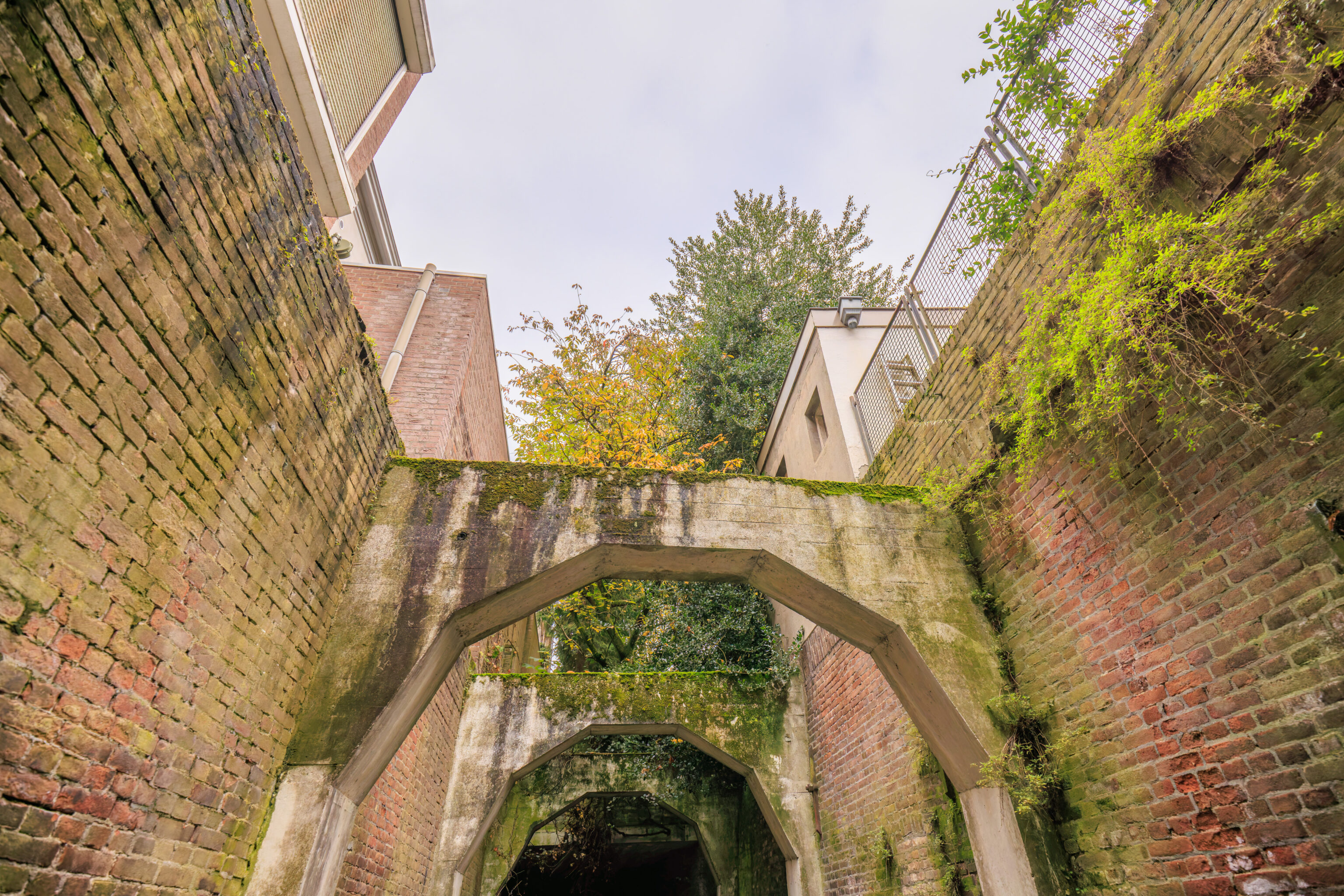

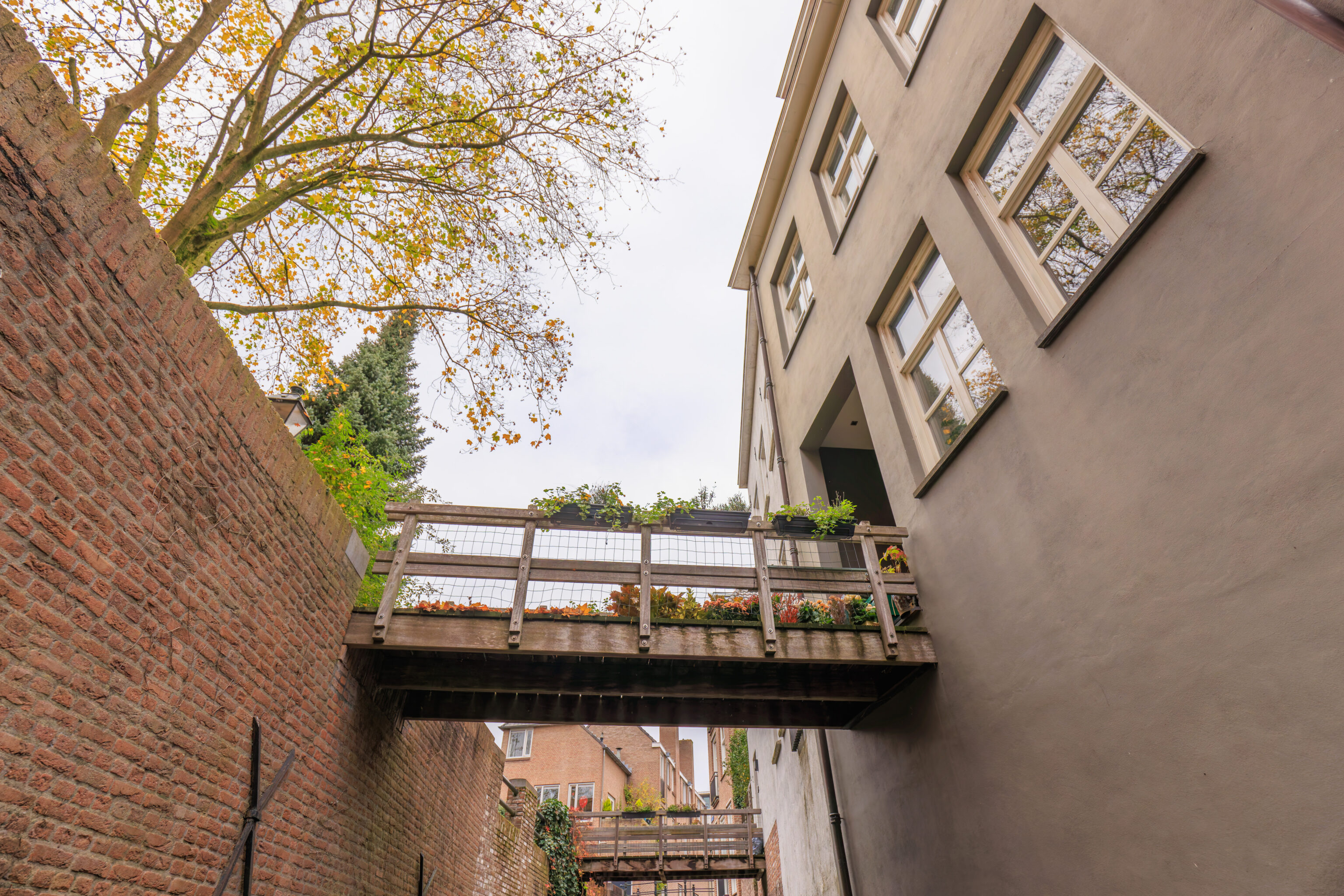
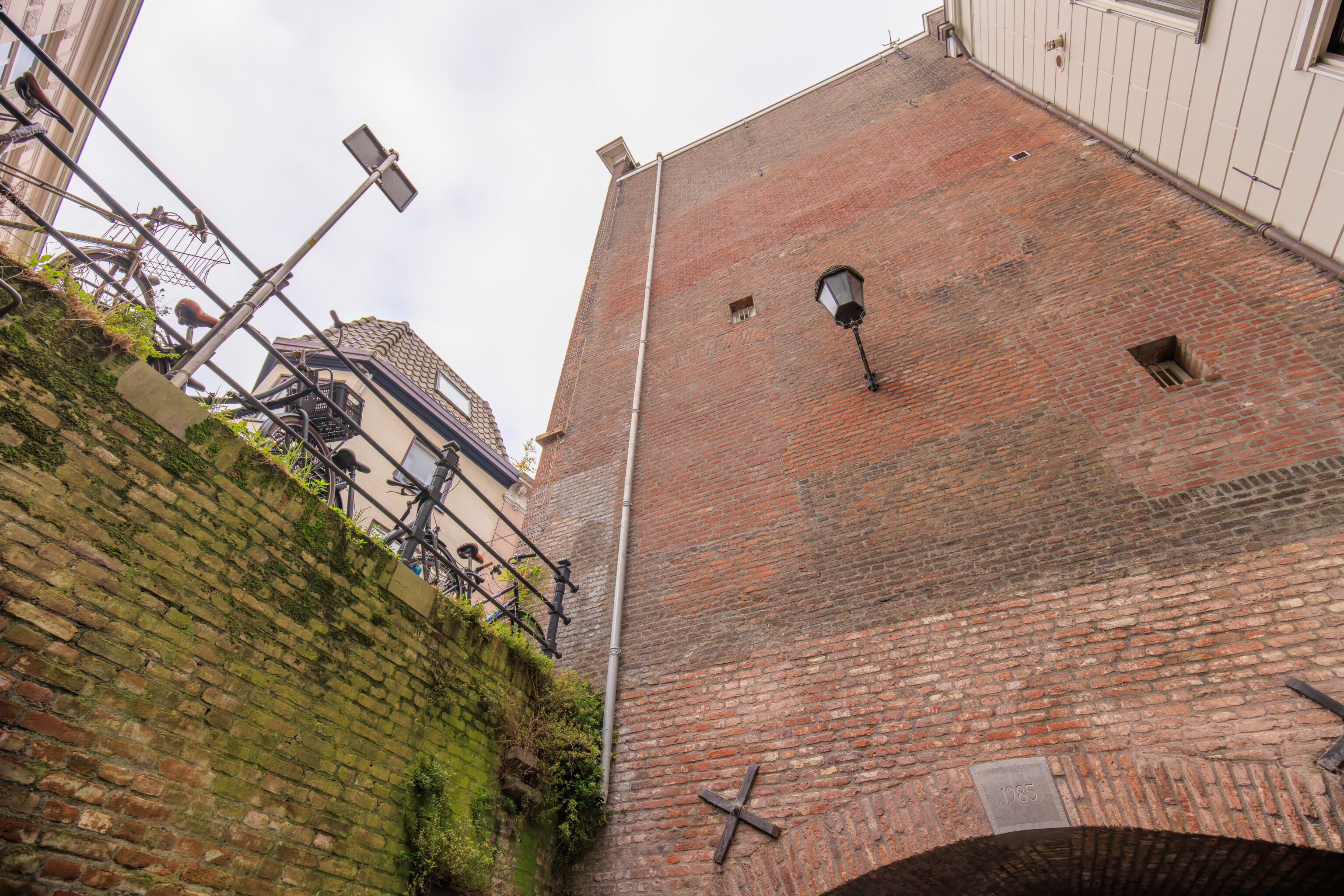
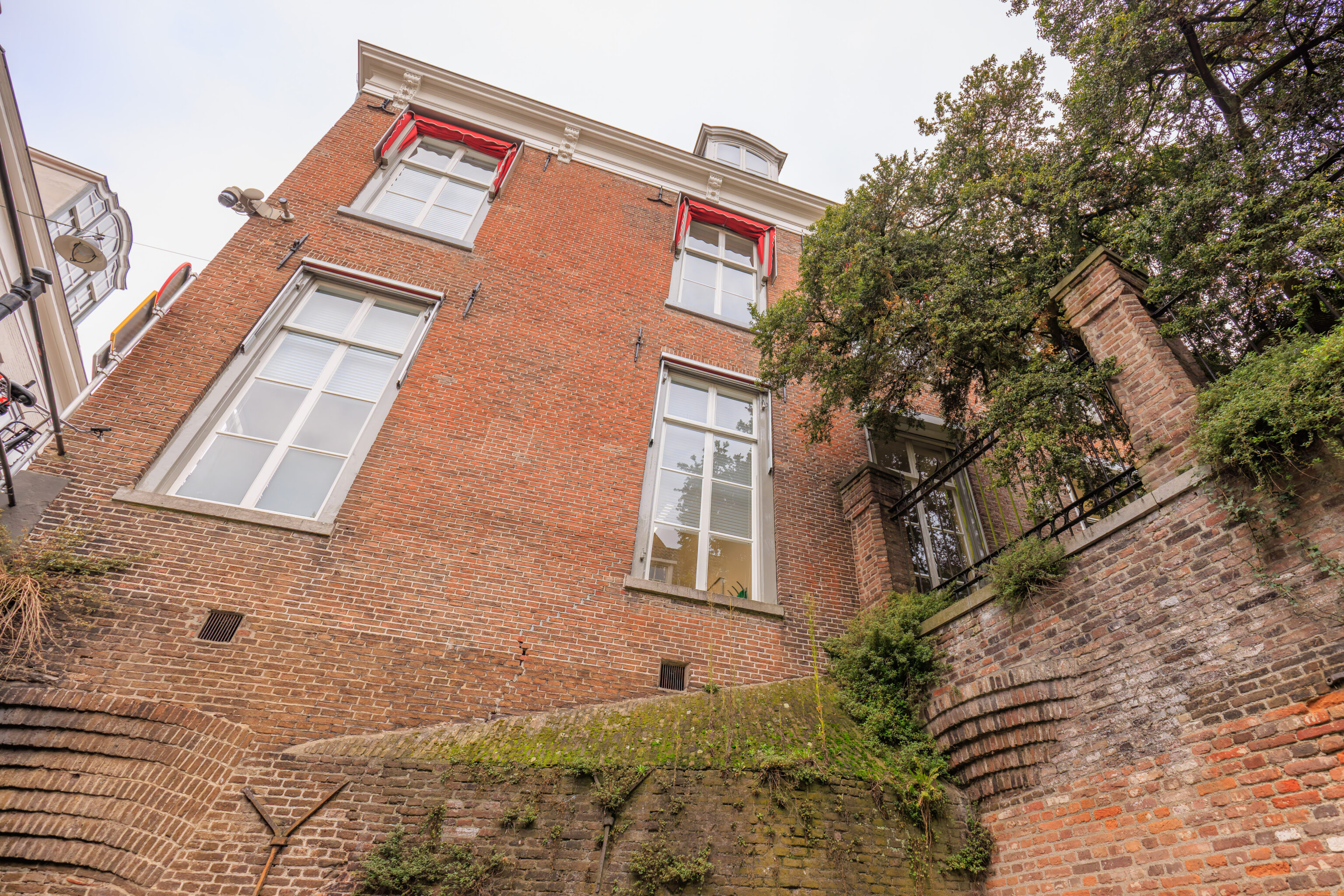
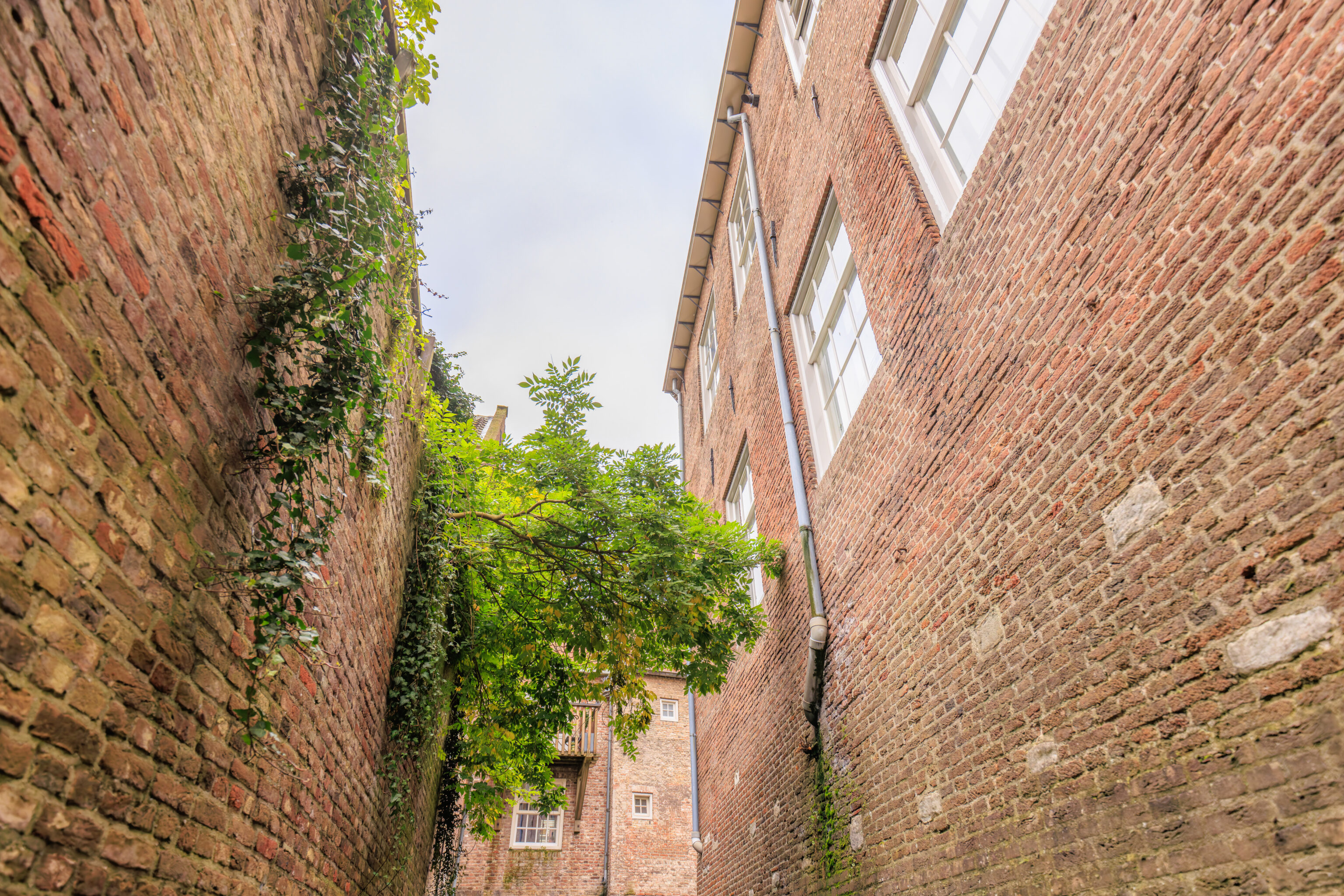
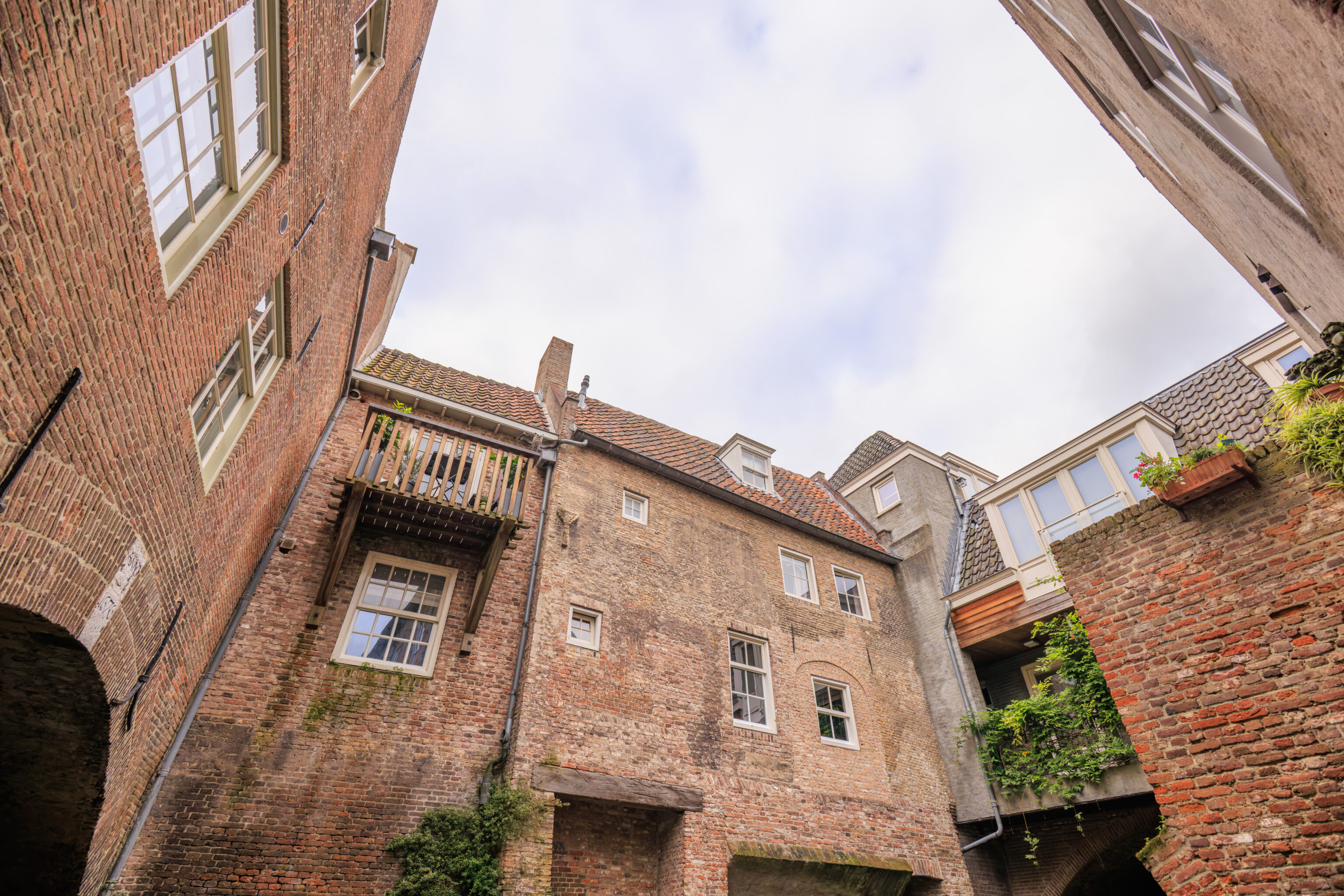
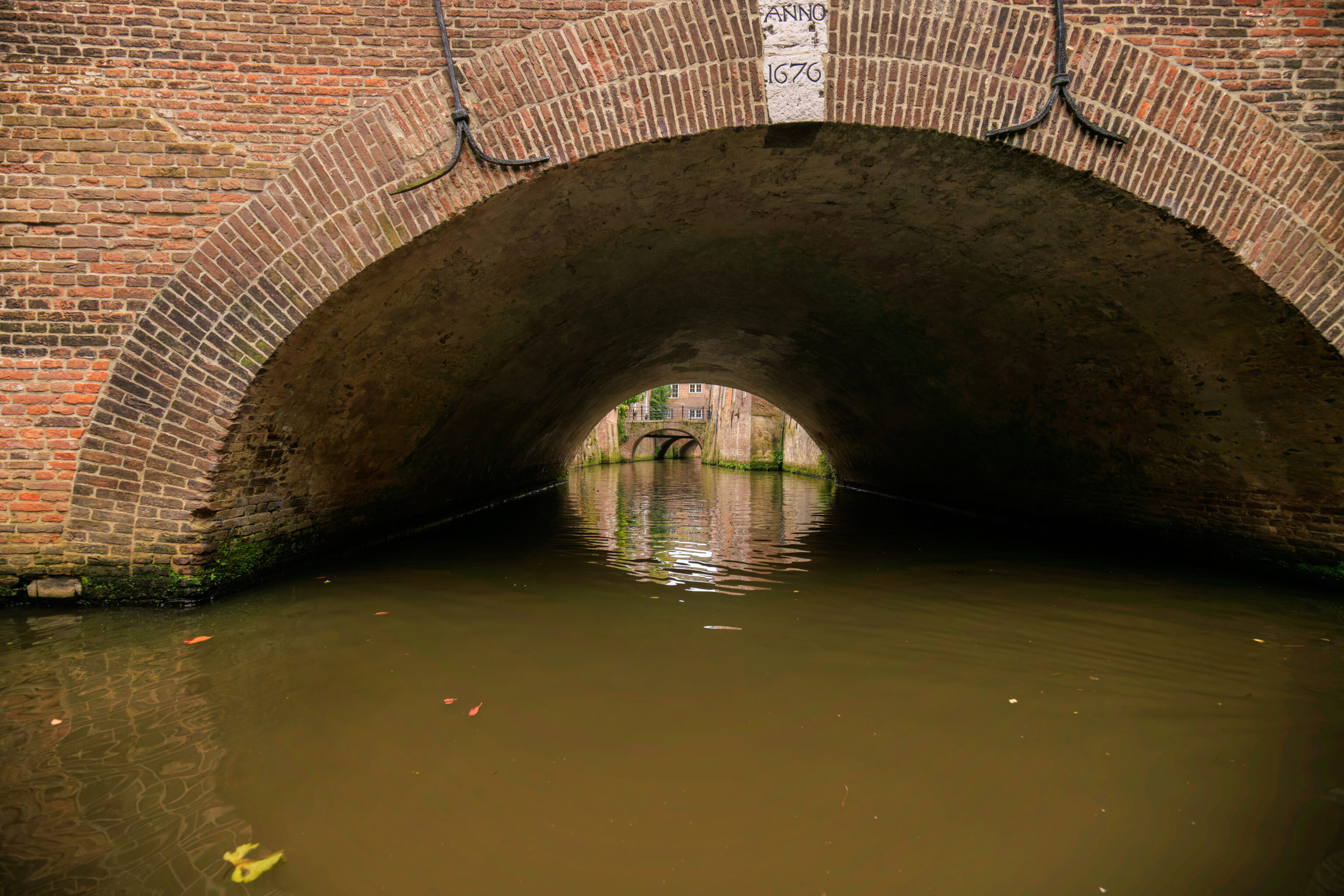
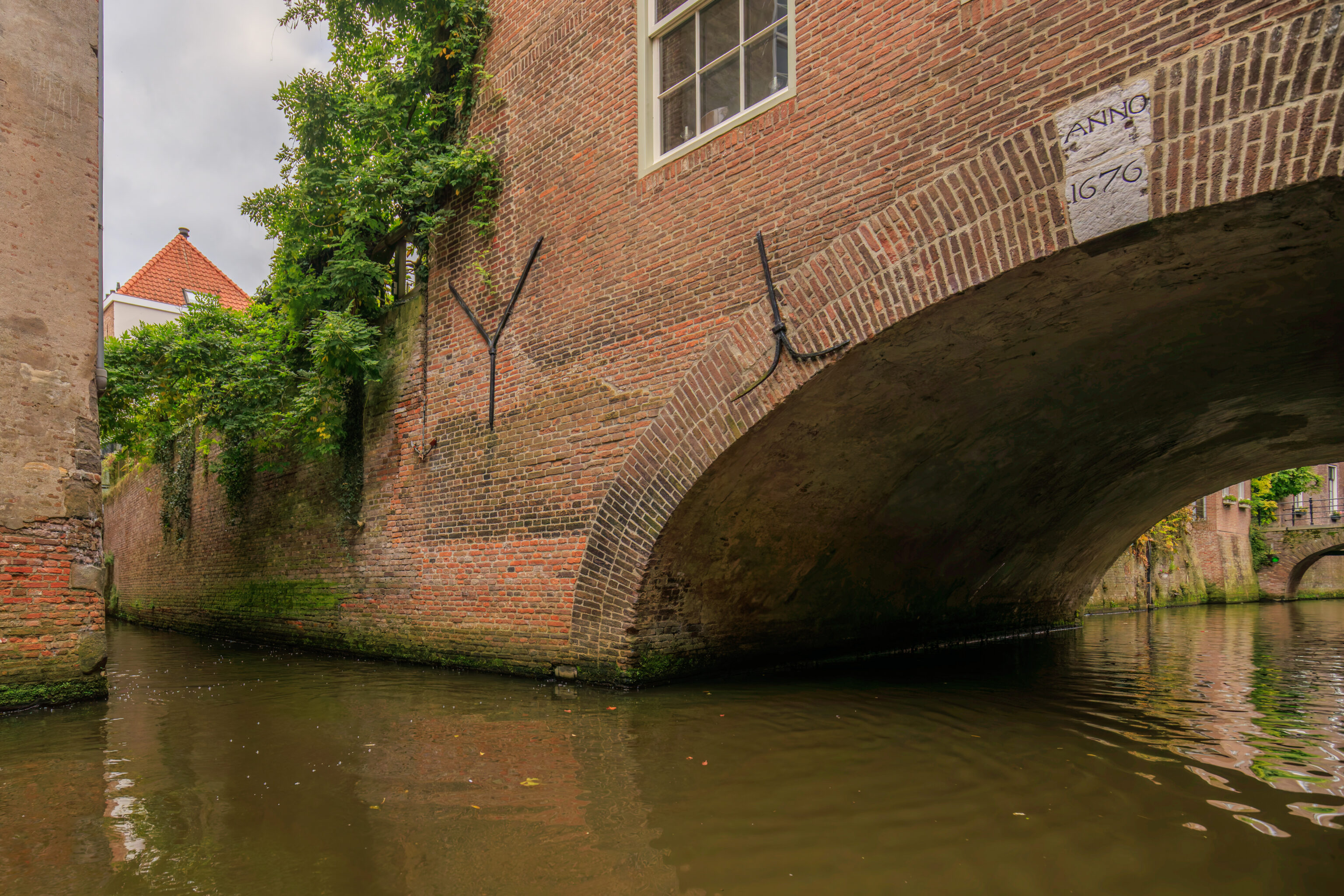
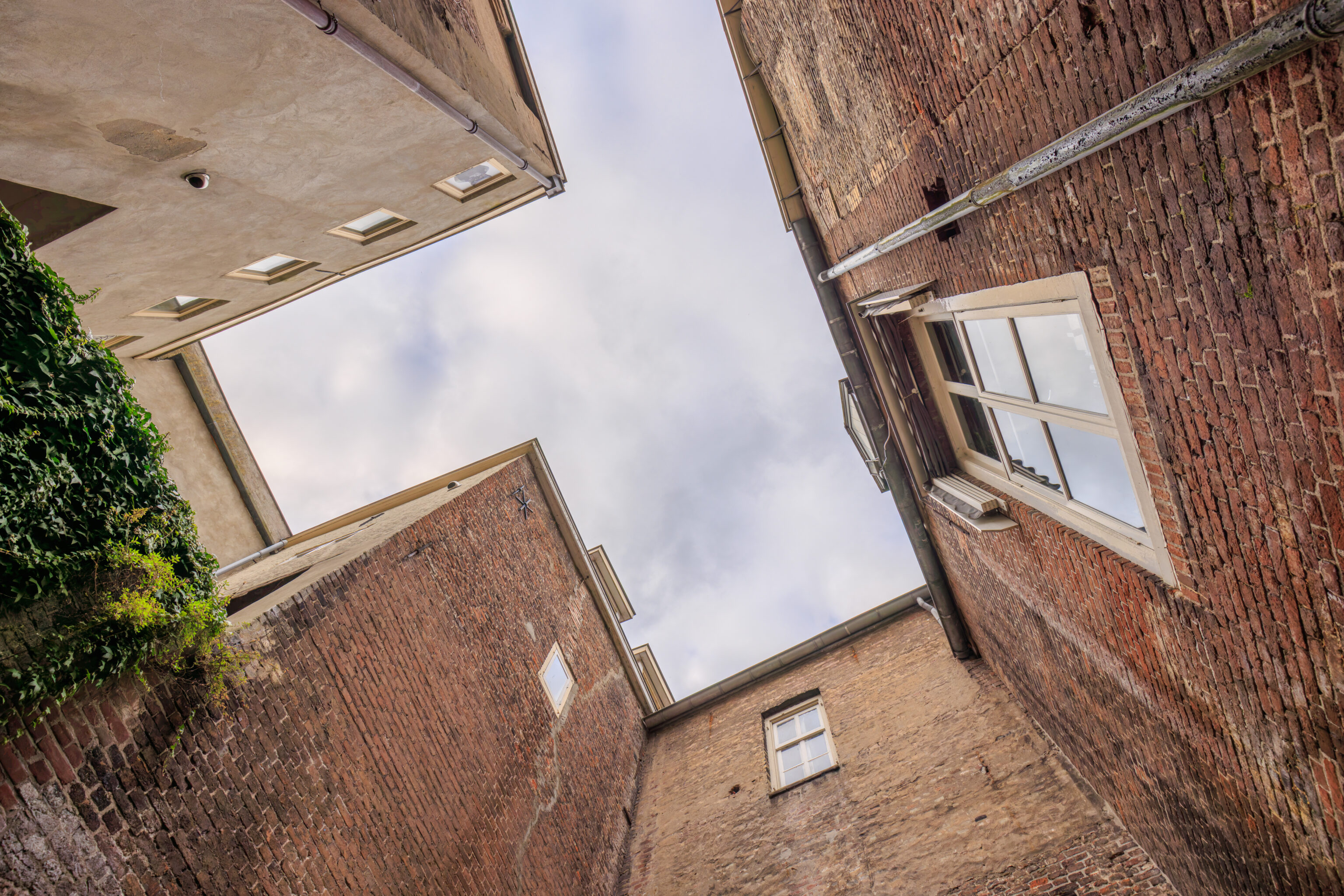
We returned via a different route, passing under many buildings and a few bridges, eventually joining the canal that we departed on.
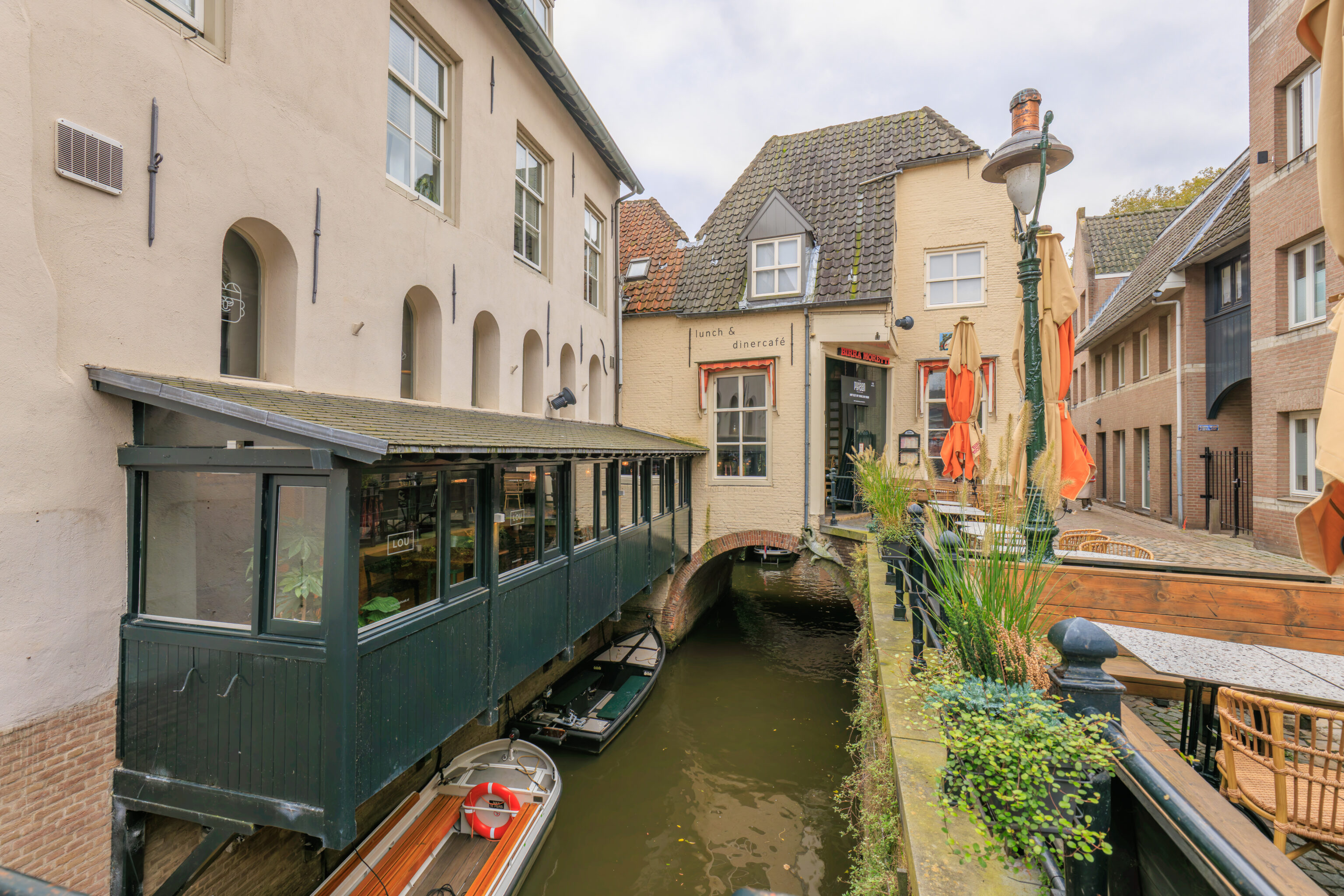
It was a pretty good tour! Too bad we don’t speak Dutch!
To The Museum
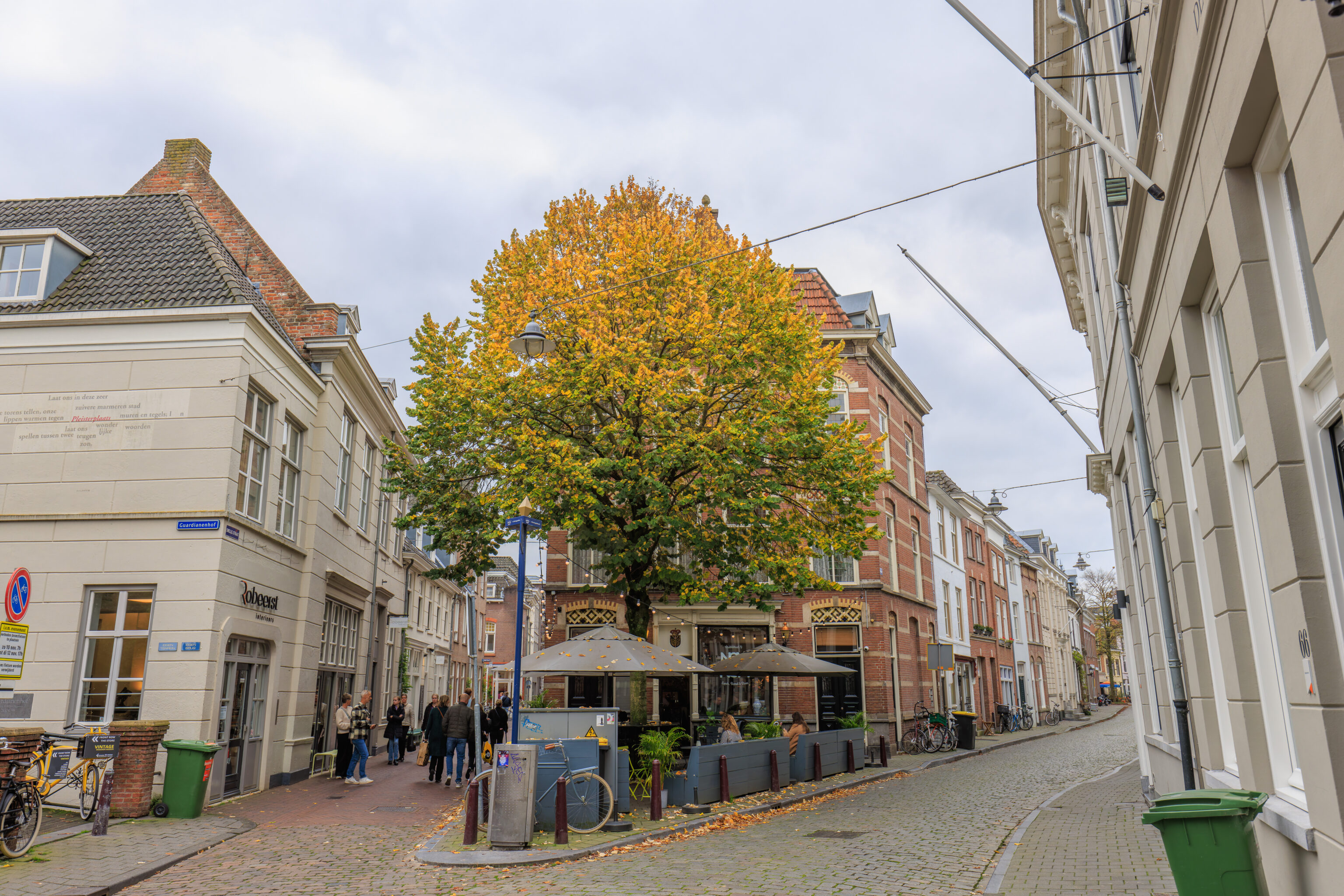
The boat tour took about an hour. After, we decided to walk to the Jheronimus Bosch Art Center, on the east side of Den Bosch’s small city center.
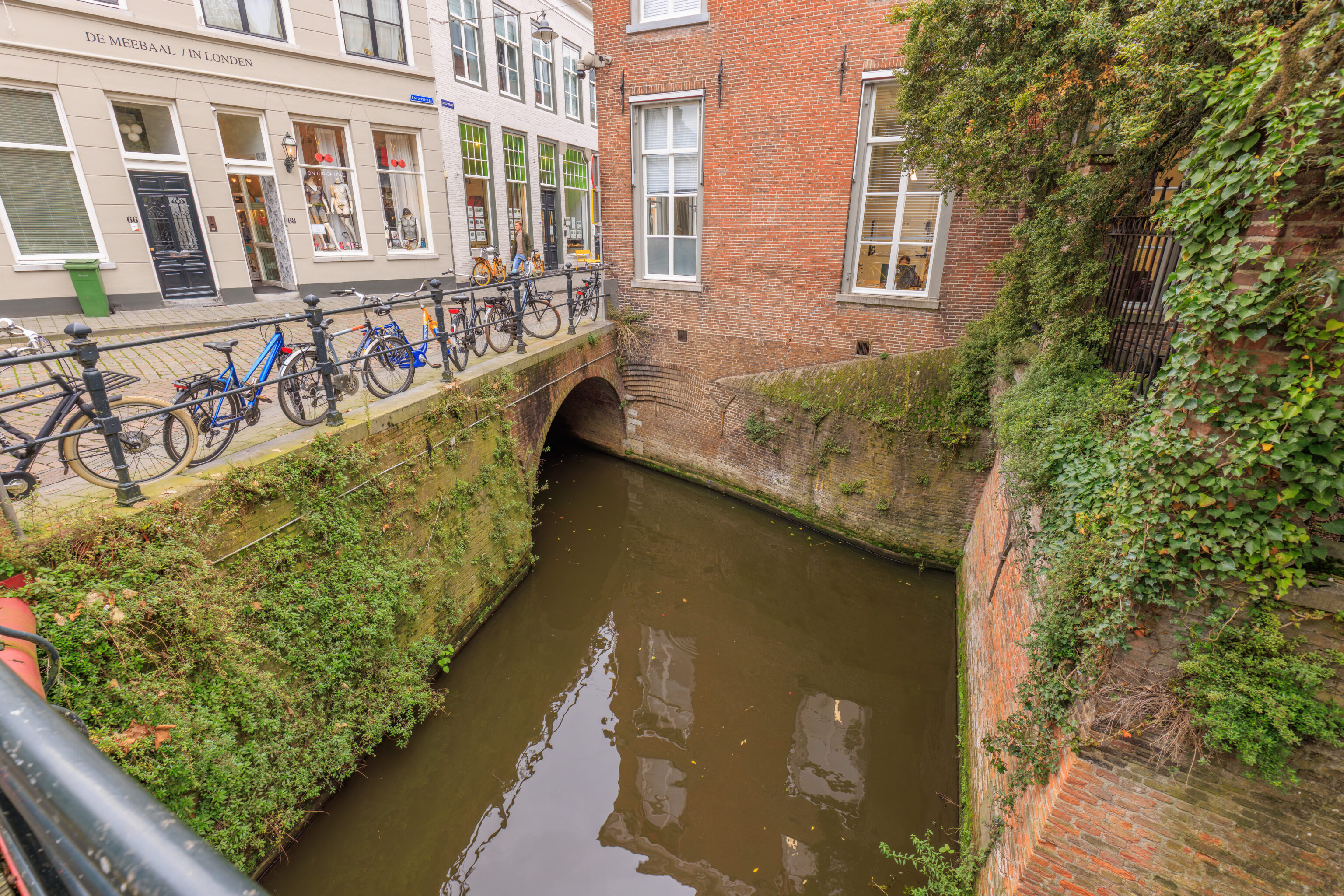
We were on this canal below during our tour! There is a photo from the return leg that shows the mossy sloped tringle shaped section of wall.
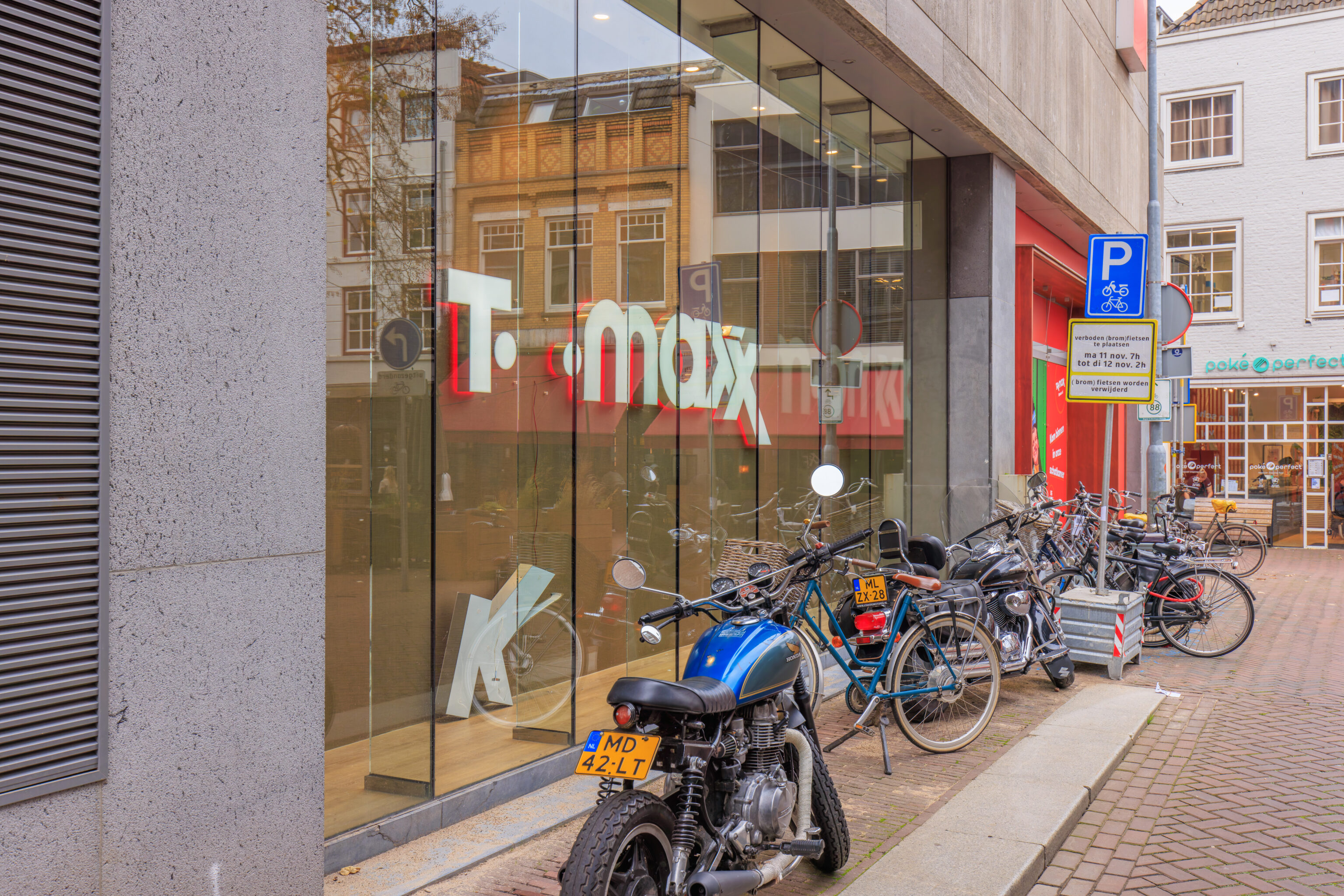
In Europe, TJ Maxx is TK Maxx! The fallen K almost seems like a statement on how things are going in the world!
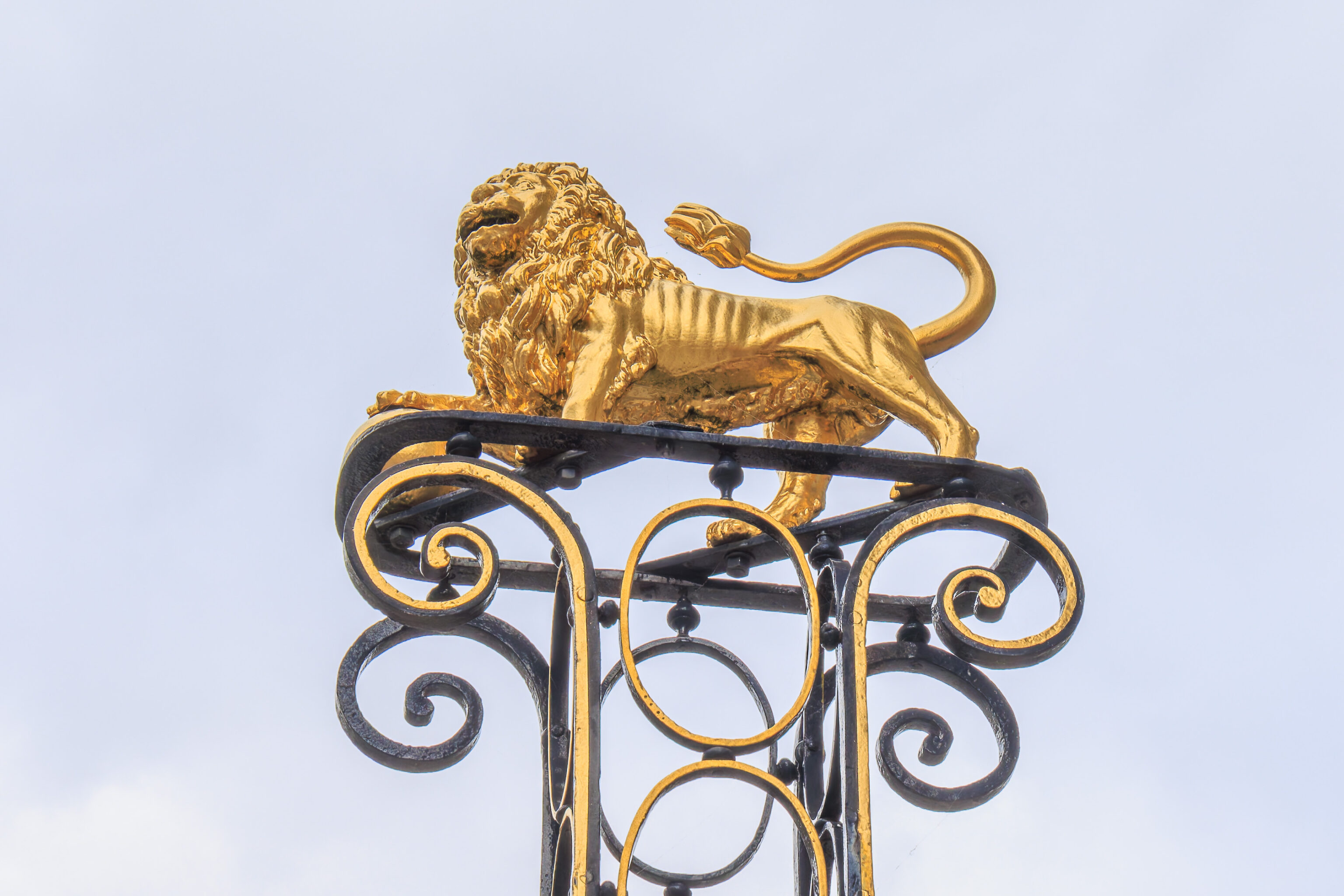
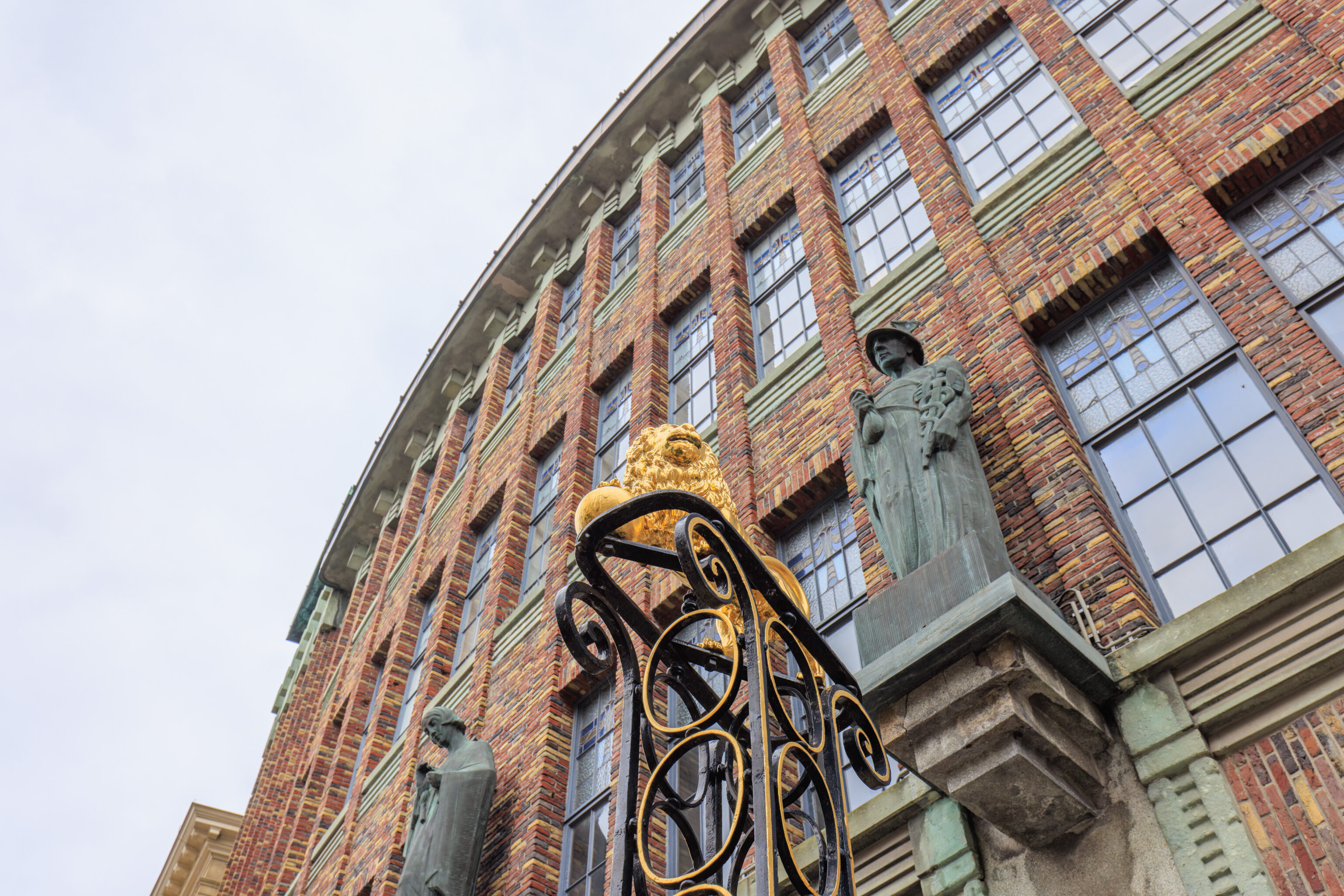
We came across this lion by the building next to City Hall. It is apparently known as De Gouden Leeuw (The Golden Lion) and dates back to 1919 when it stood in front of an inn called De Gouden Leeuw. The inn was demolished but the lion was donated to the city. It doesn’t seem clear if the inn was originally located at this exact spot or somewhere else.
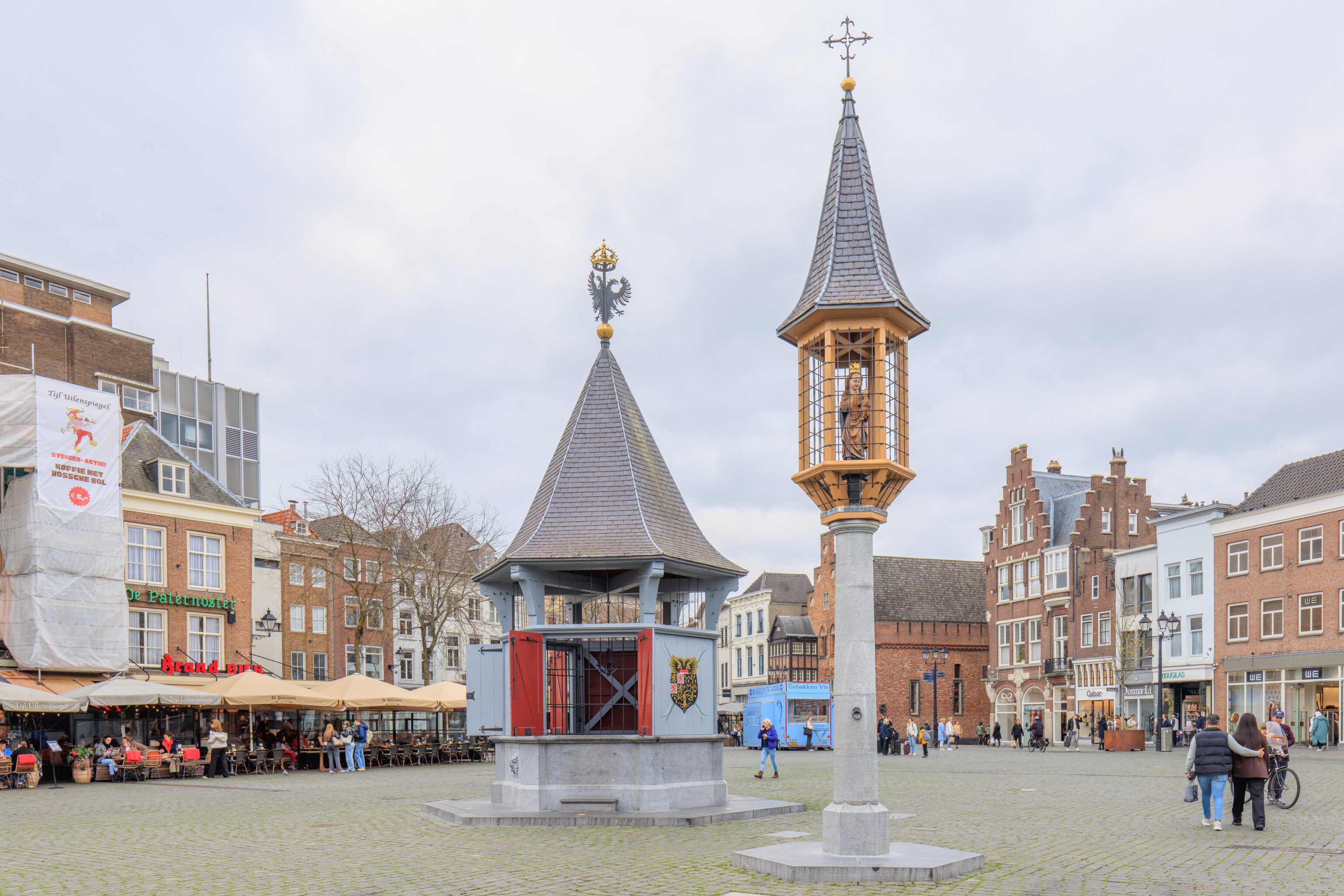
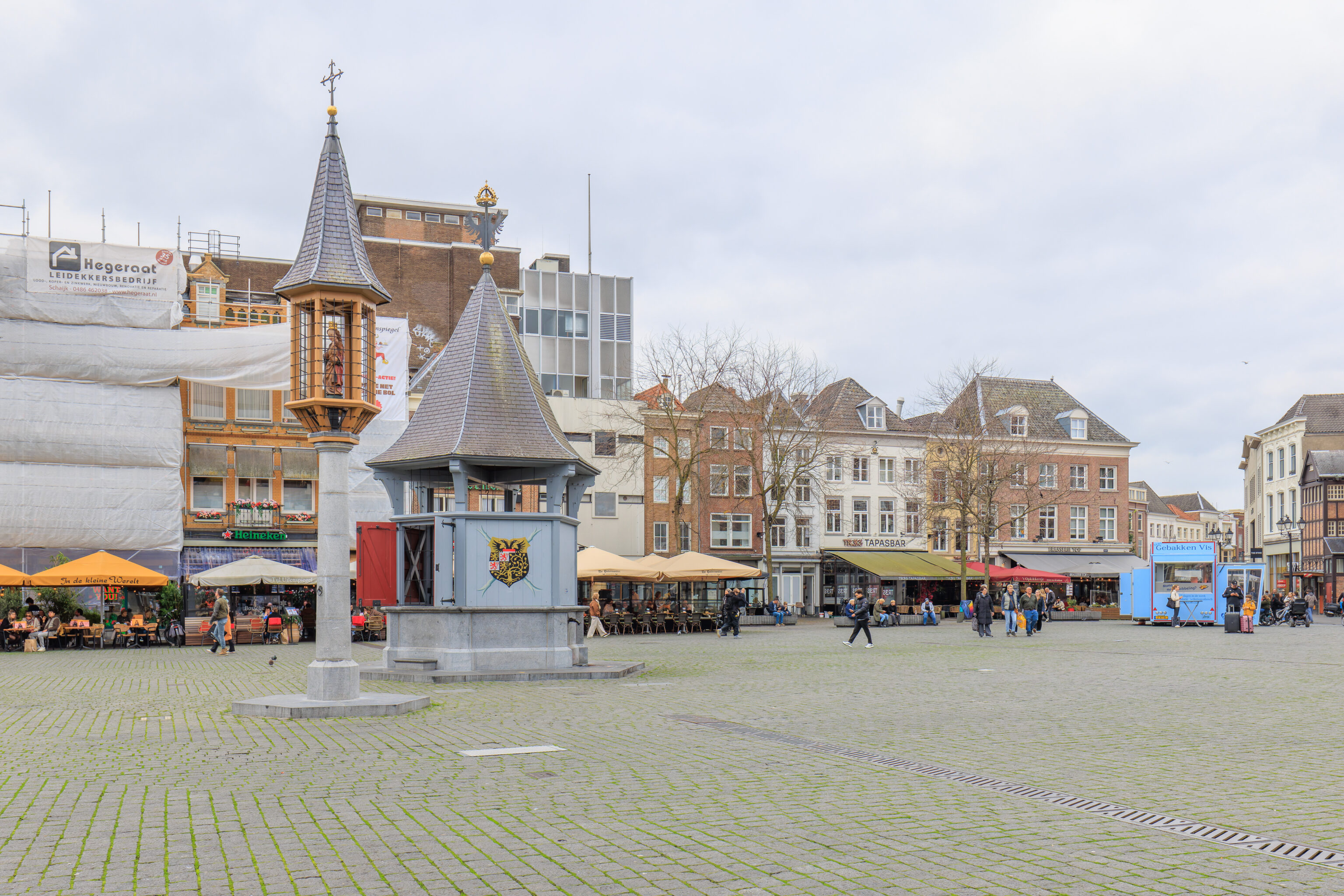
These two structures stand in the middle of the market square by City Hall. The taller of the two is Onze-Lieve-Vrouwehuisje (Our Lady’s House). It is a reconstruction from 2015 of a chapel that was here since at least 1498, though the statue is described as being based on another statue from the 15th century.
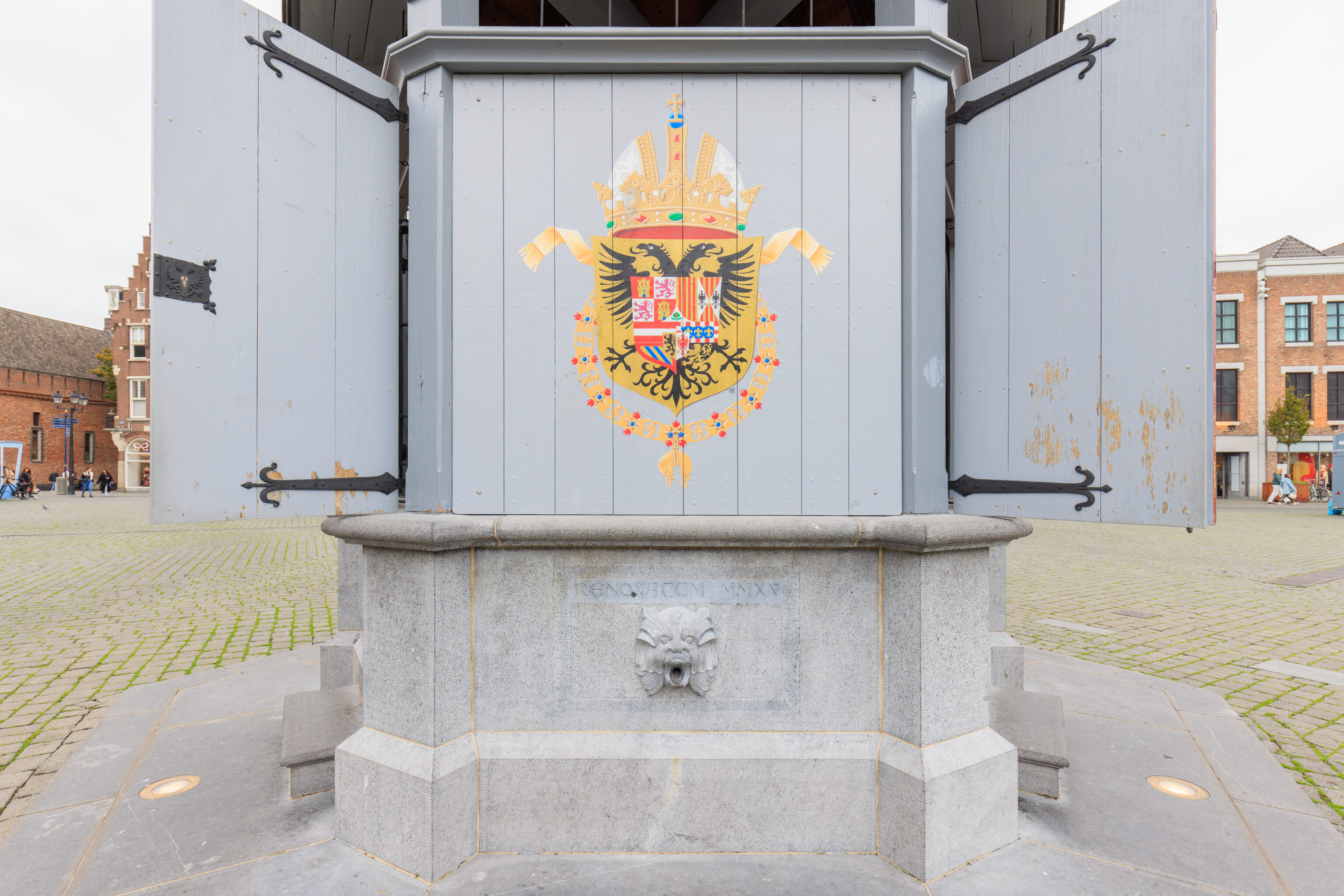
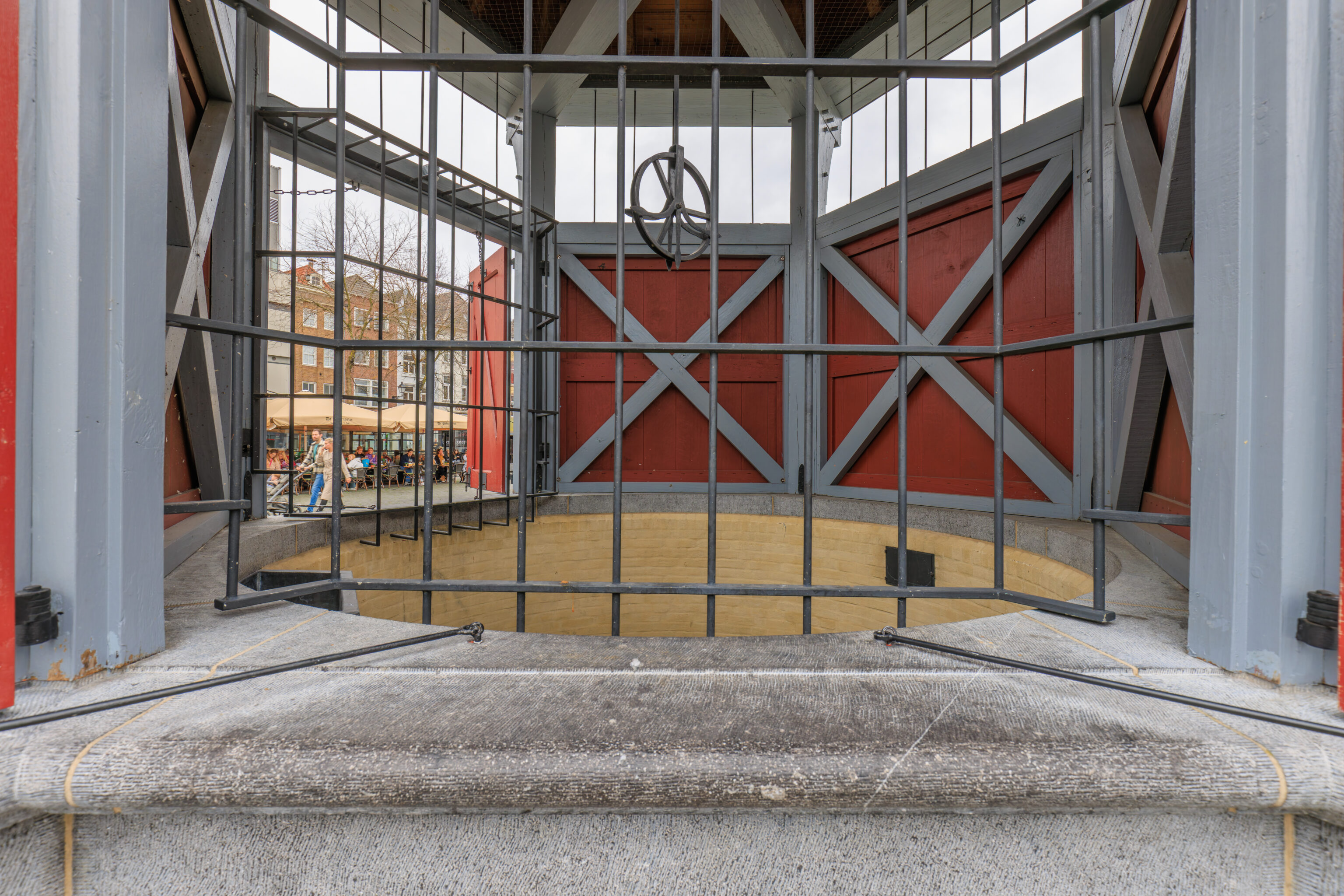
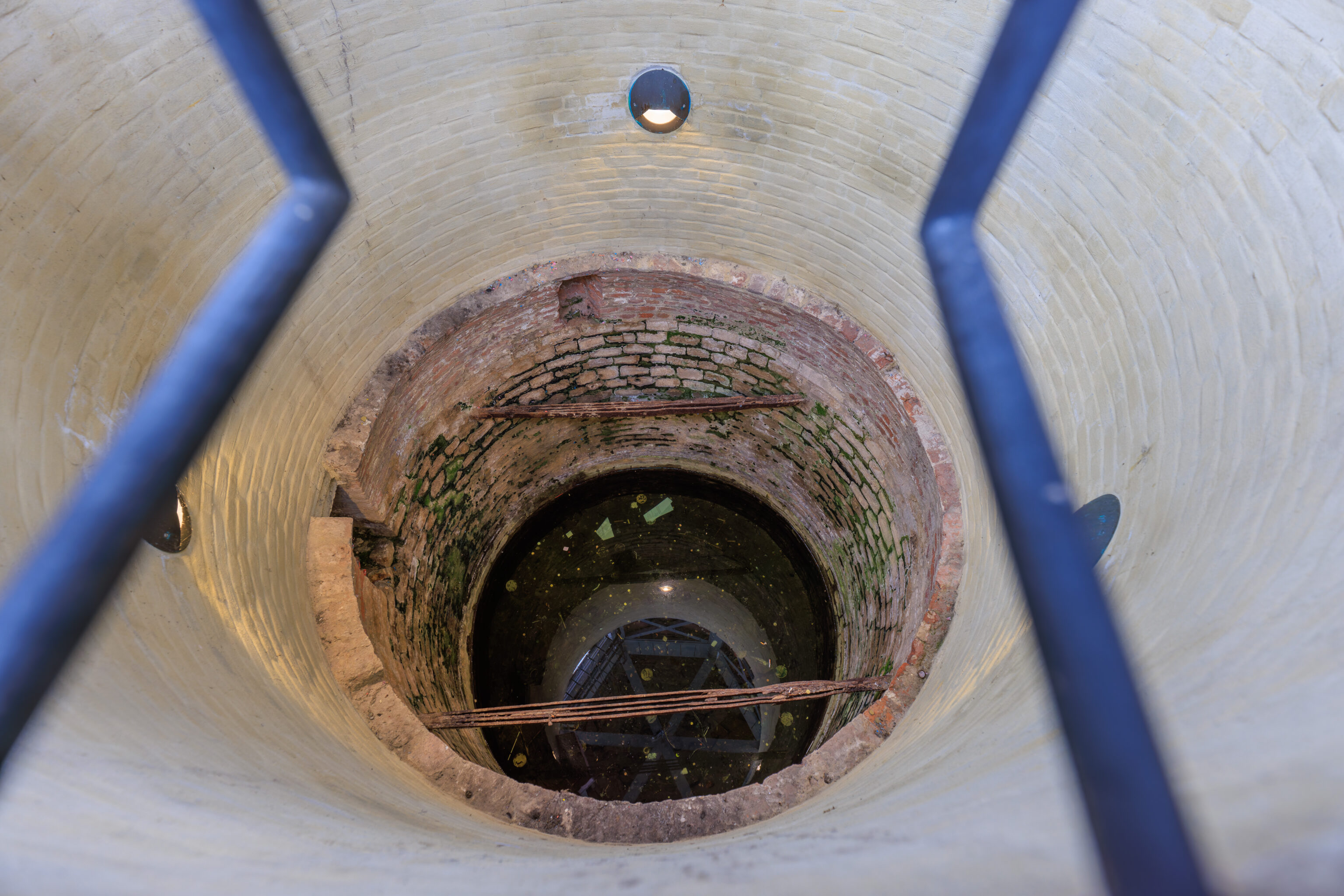
The shorter building is a well! It is also a reconstructed structure, from 2016.
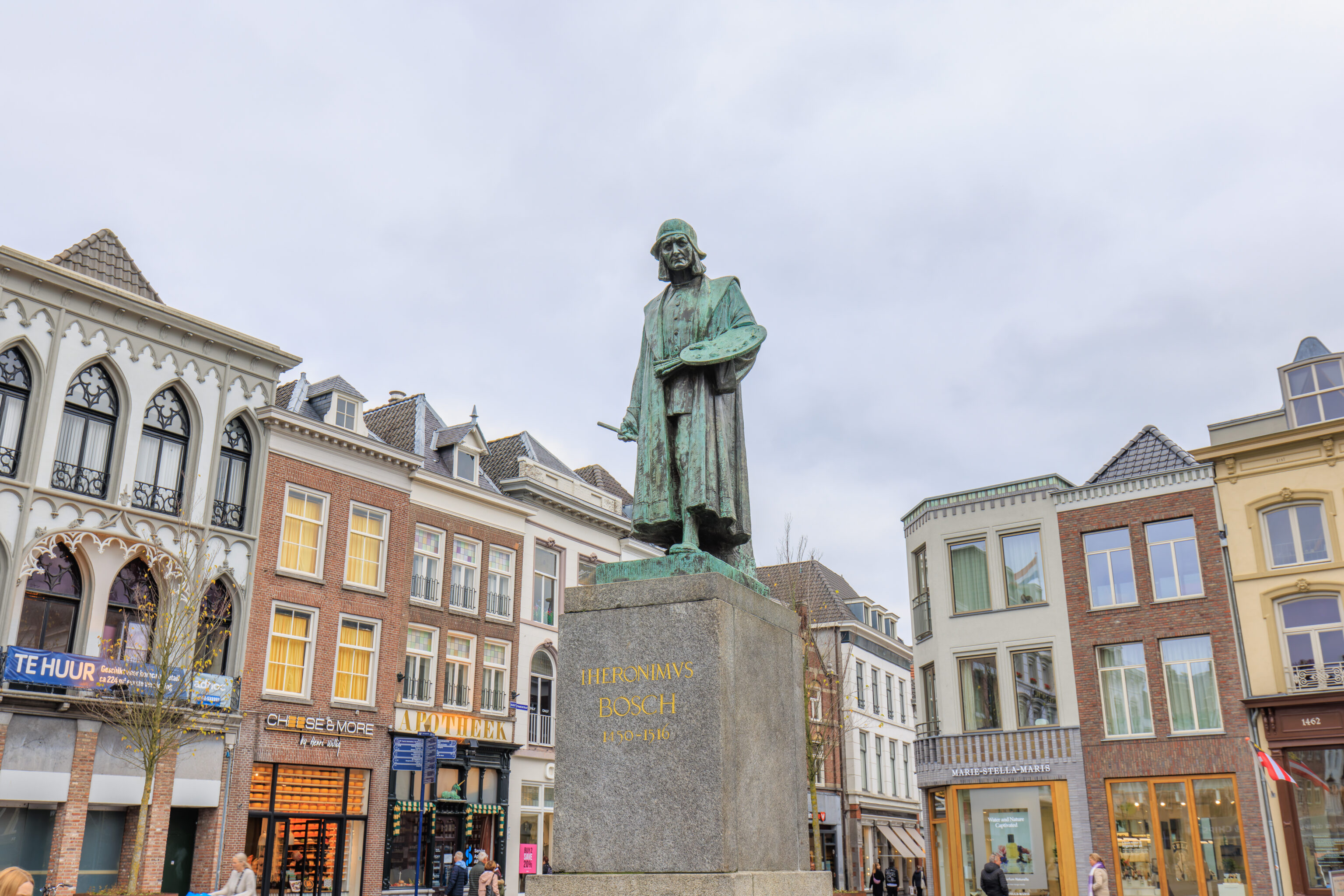
The market square is also home to a statue of Jheronimus Bosch.
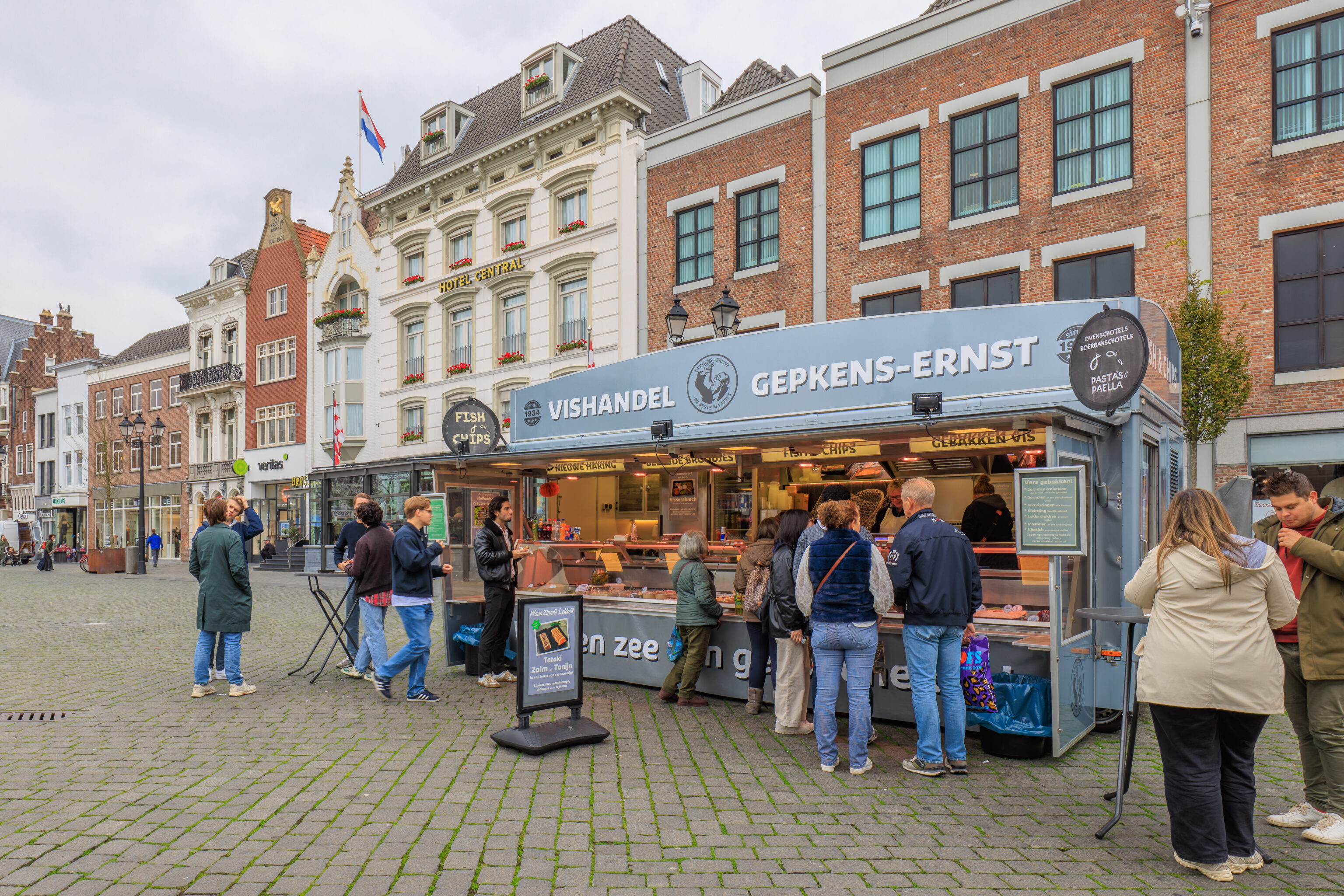
The market had a few large food trailers set up, the kind that are often seen in European markets. We decided to get a snack from this one, Vishandel Gepkens-Ernst.
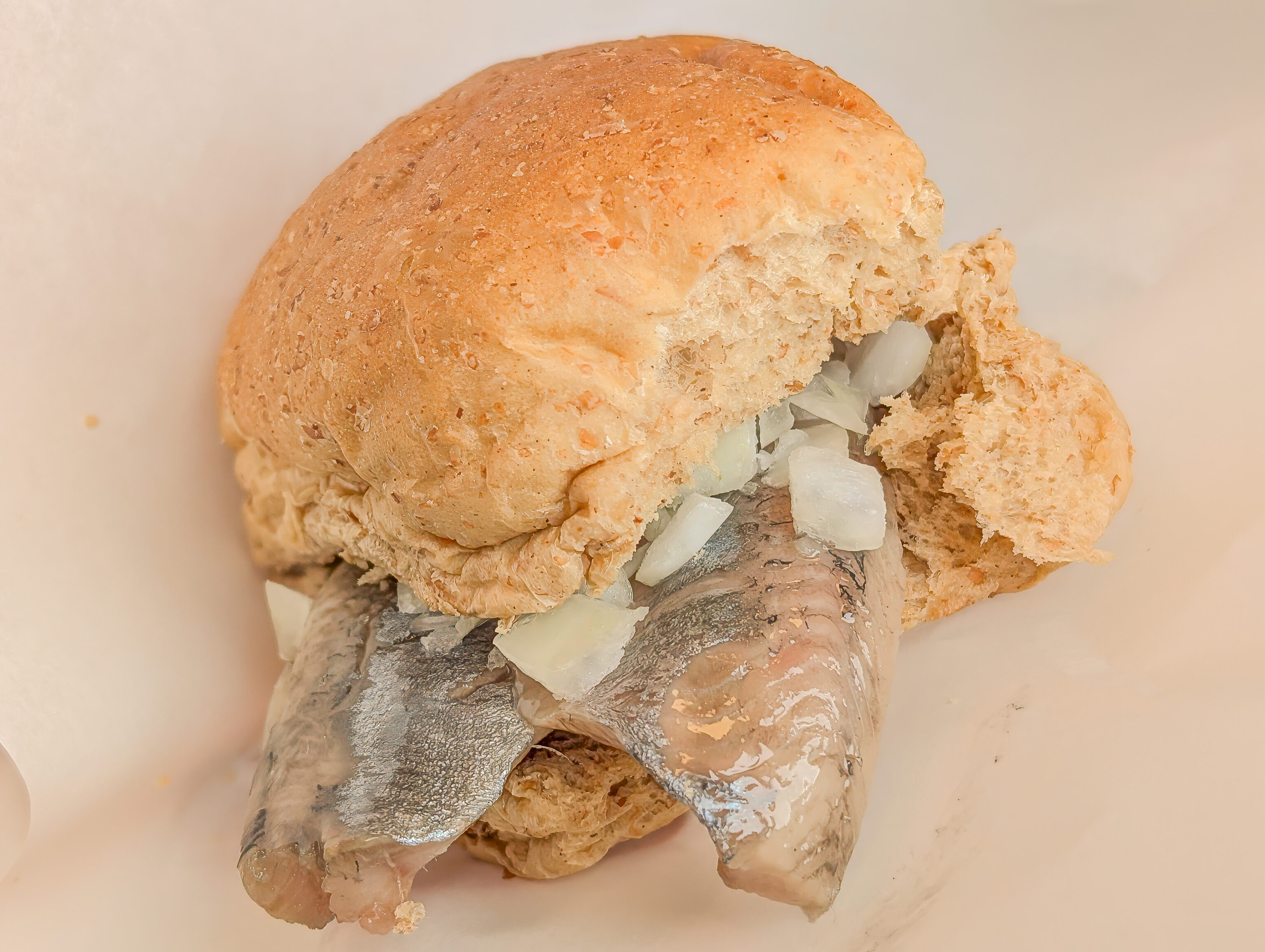
We got a herring sandwich, which was excellent.

We also got kibbeling, which is fried battered fish, kind of like British fish and chips without the chips. We got it with a sweet chili sauce which was reminiscent of Chick-fil-A’s sweet sriracha. Like the herring, it was excellent.
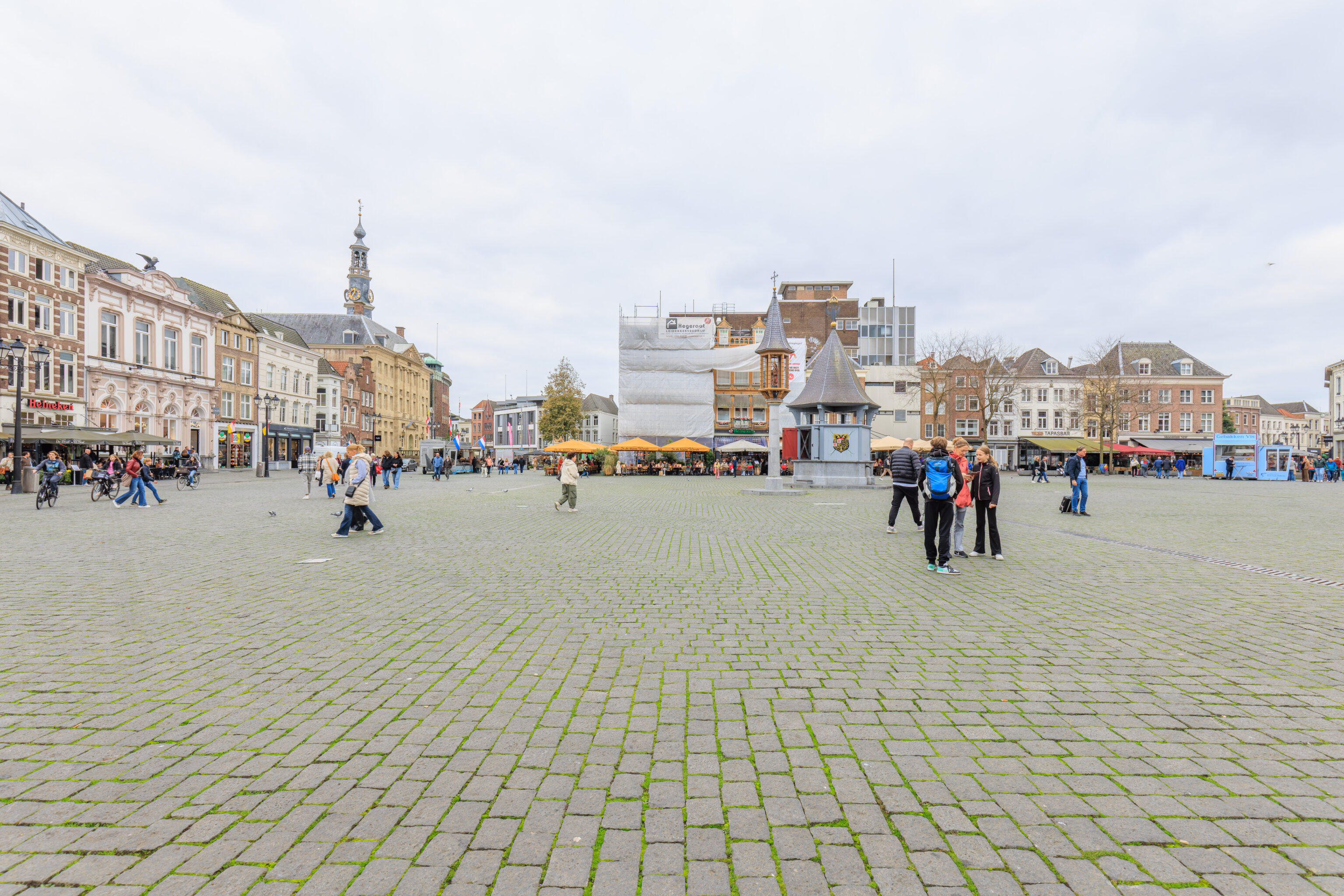
We had this view as we sat by the statue of Bosch while eating.
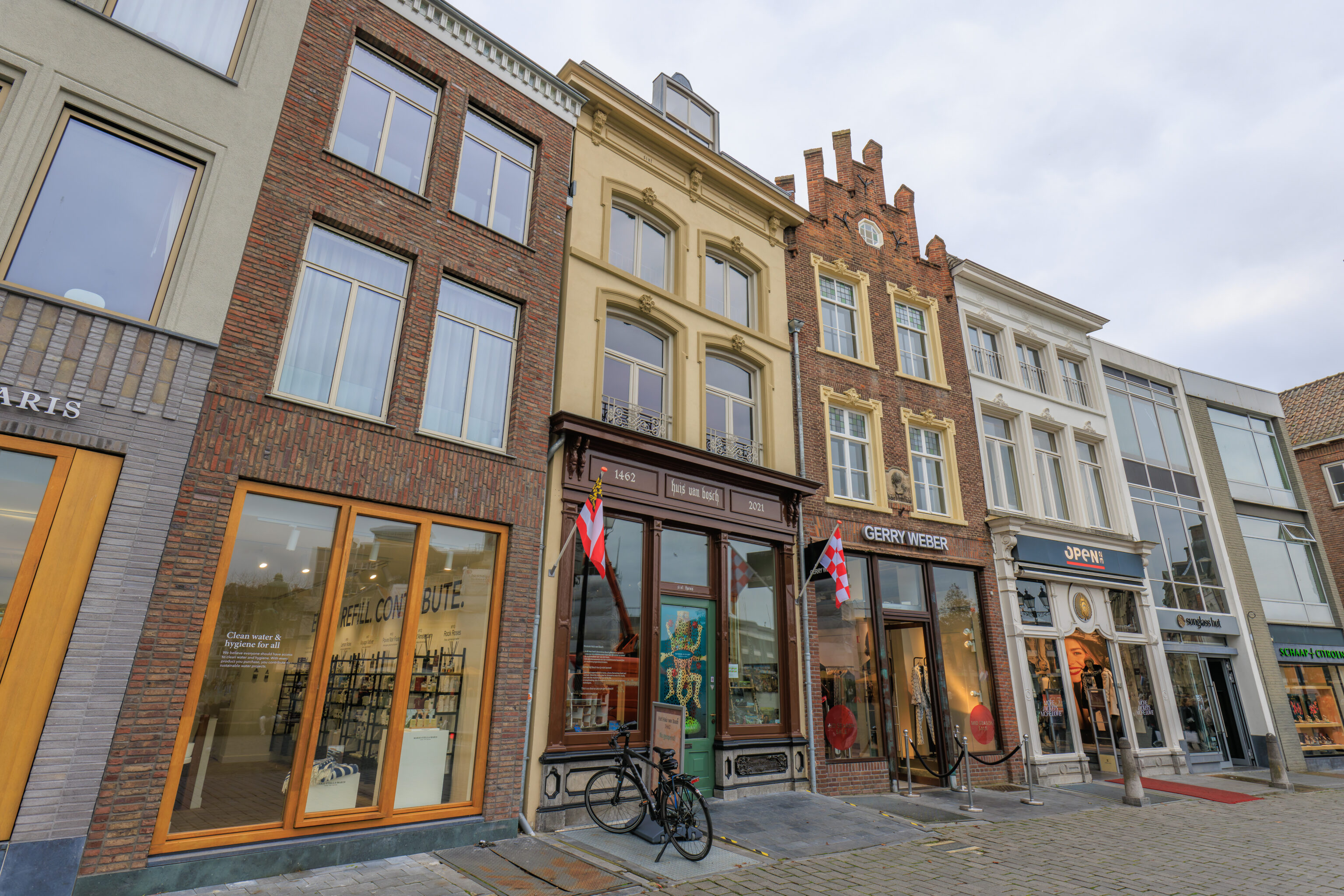
Het huis van Bosch (The House of Bosch) is right by the statue of Bosch. This is where Bosch grew up and had his studio in the 1400s. It is currently a museum. While it wasn’t our intended destination, we went in to take a look. Unfortunately, they were having technical difficulties with their systems and weren’t able to open!
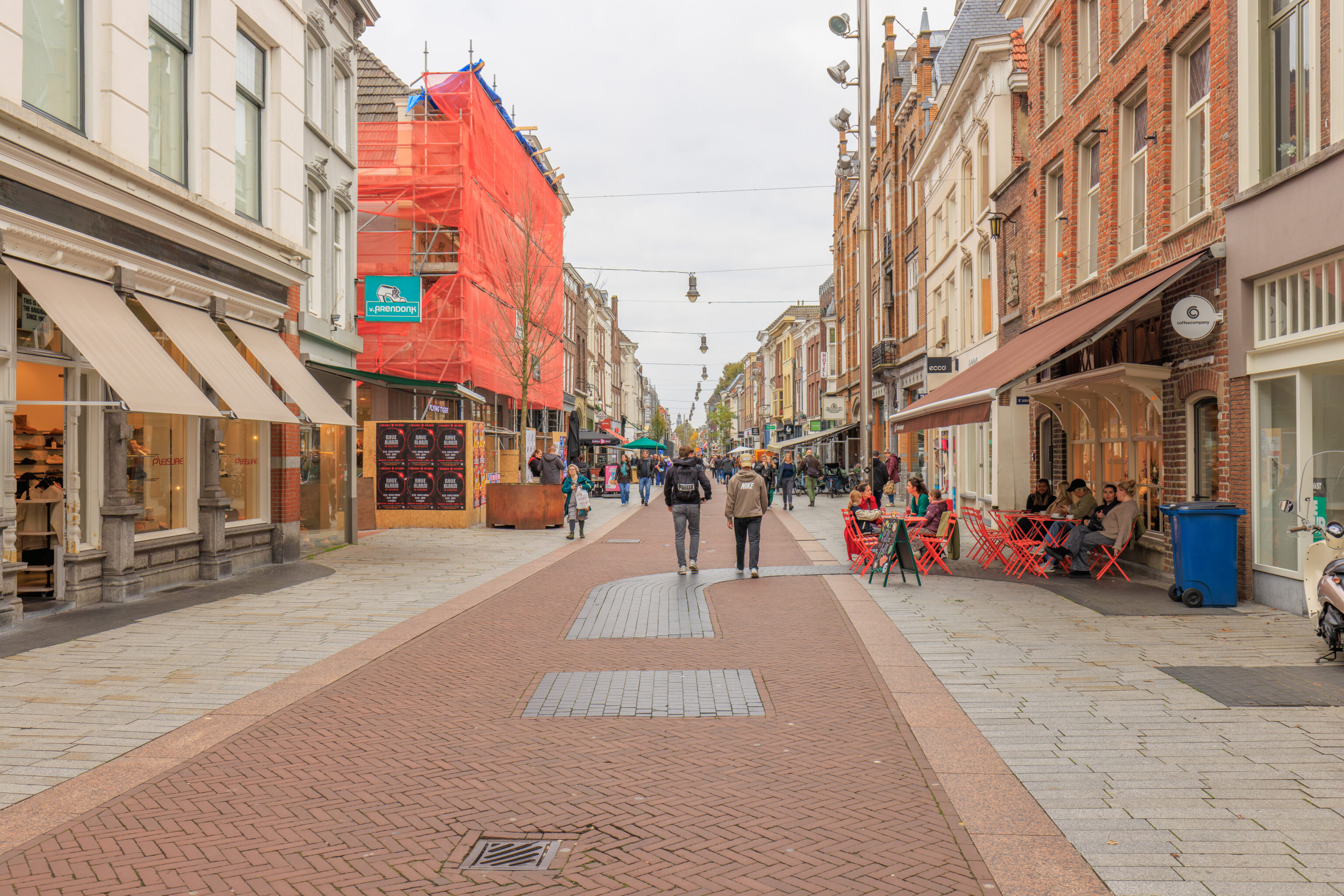
We headed down this street from the eastern end of the market square.
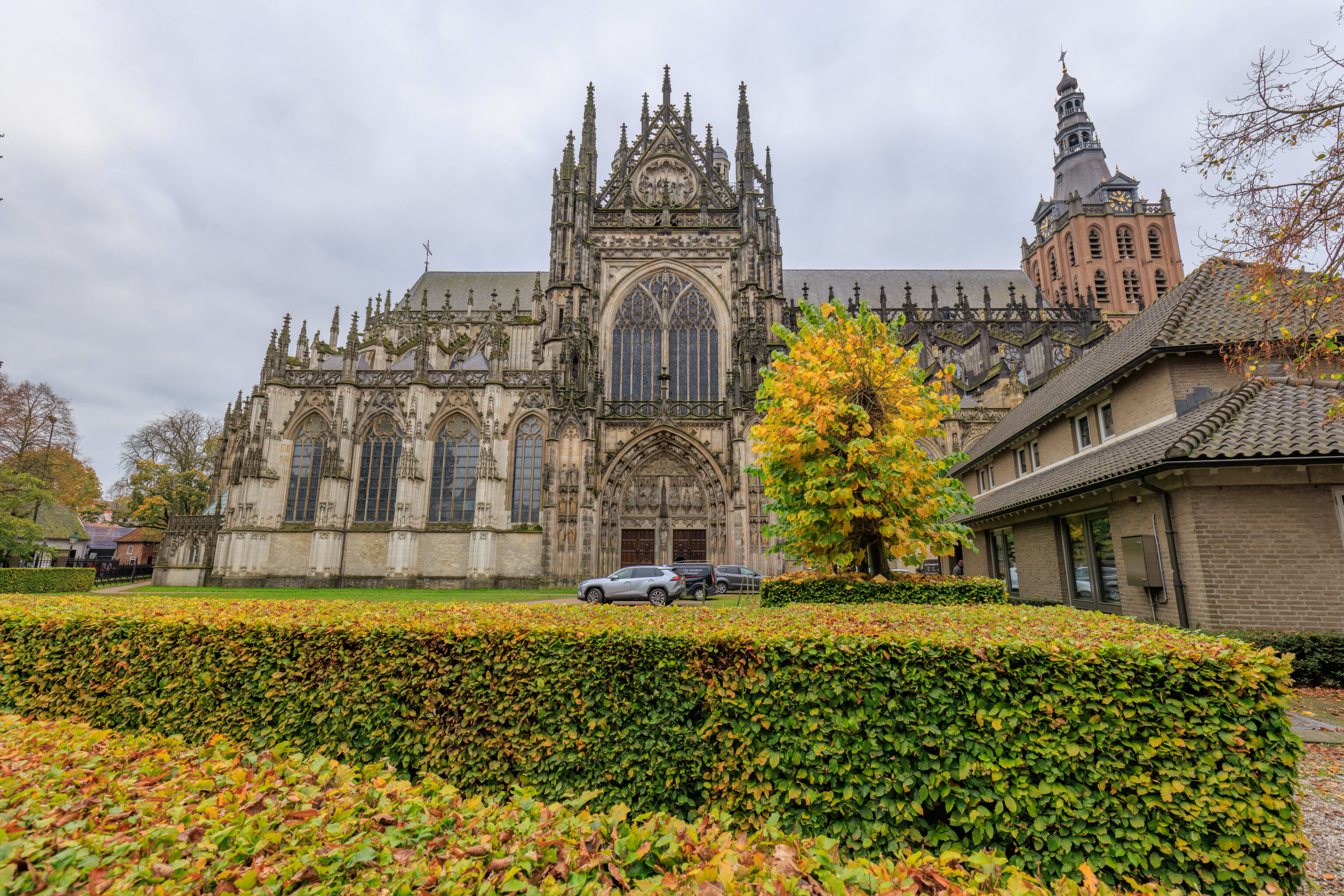
After walking for a few blocks, we saw St. John’s Cathedral on our right. It is more massive than expected! We plan on returning later if we have time.
Jheronimus Bosch Art Center
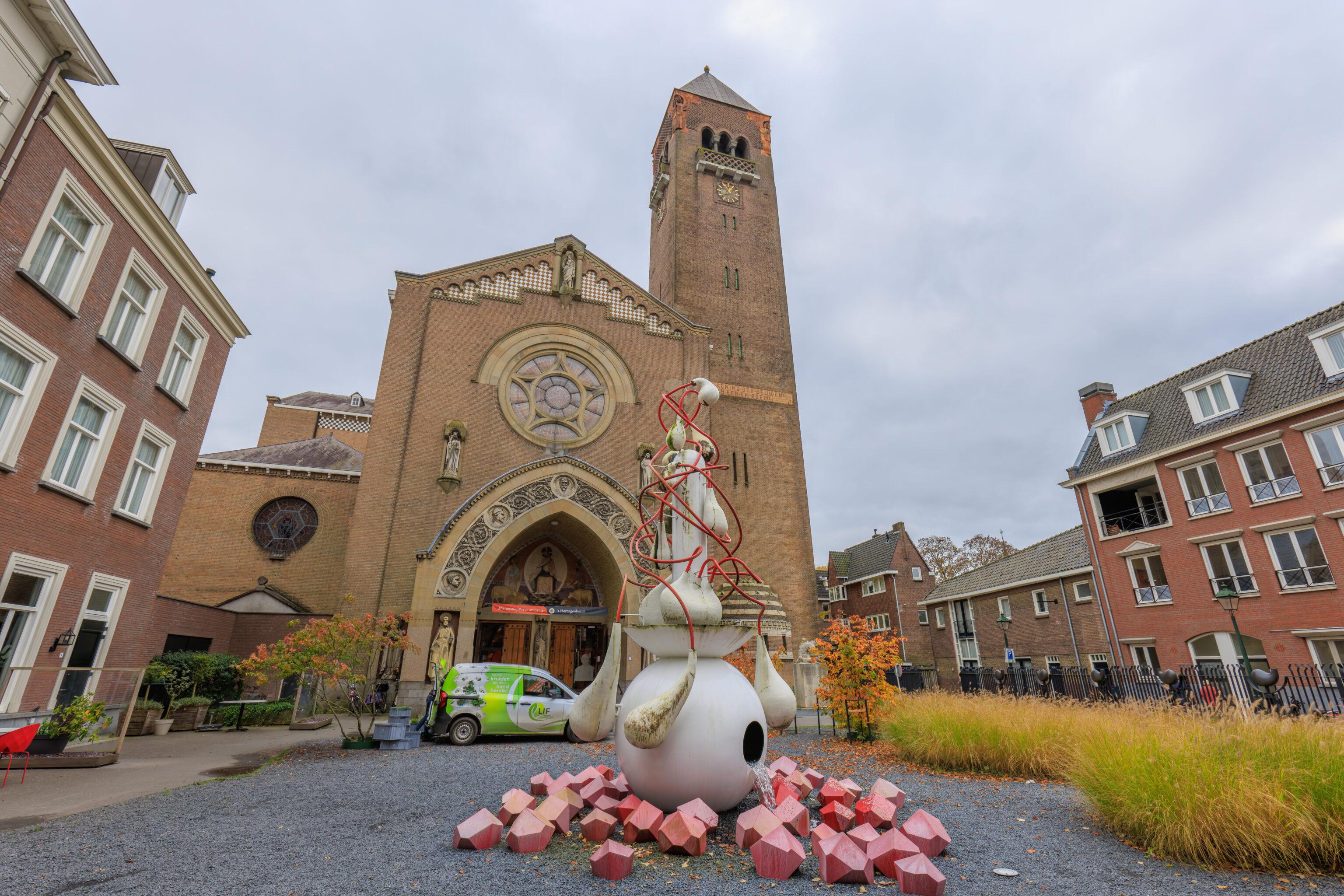
We soon reached the Jheronimus Bosch Art Center. The museum is located in a former church! The paintings by Bosch within this museum are unfortunately all replicas, none of his work remains here in Den Bosch. The sculptures are all created by other artists as Bosch was a painter, not a sculpter.
The sculpture in front of the museum is actually a fountain, which we didn’t initially realize when we first saw it!
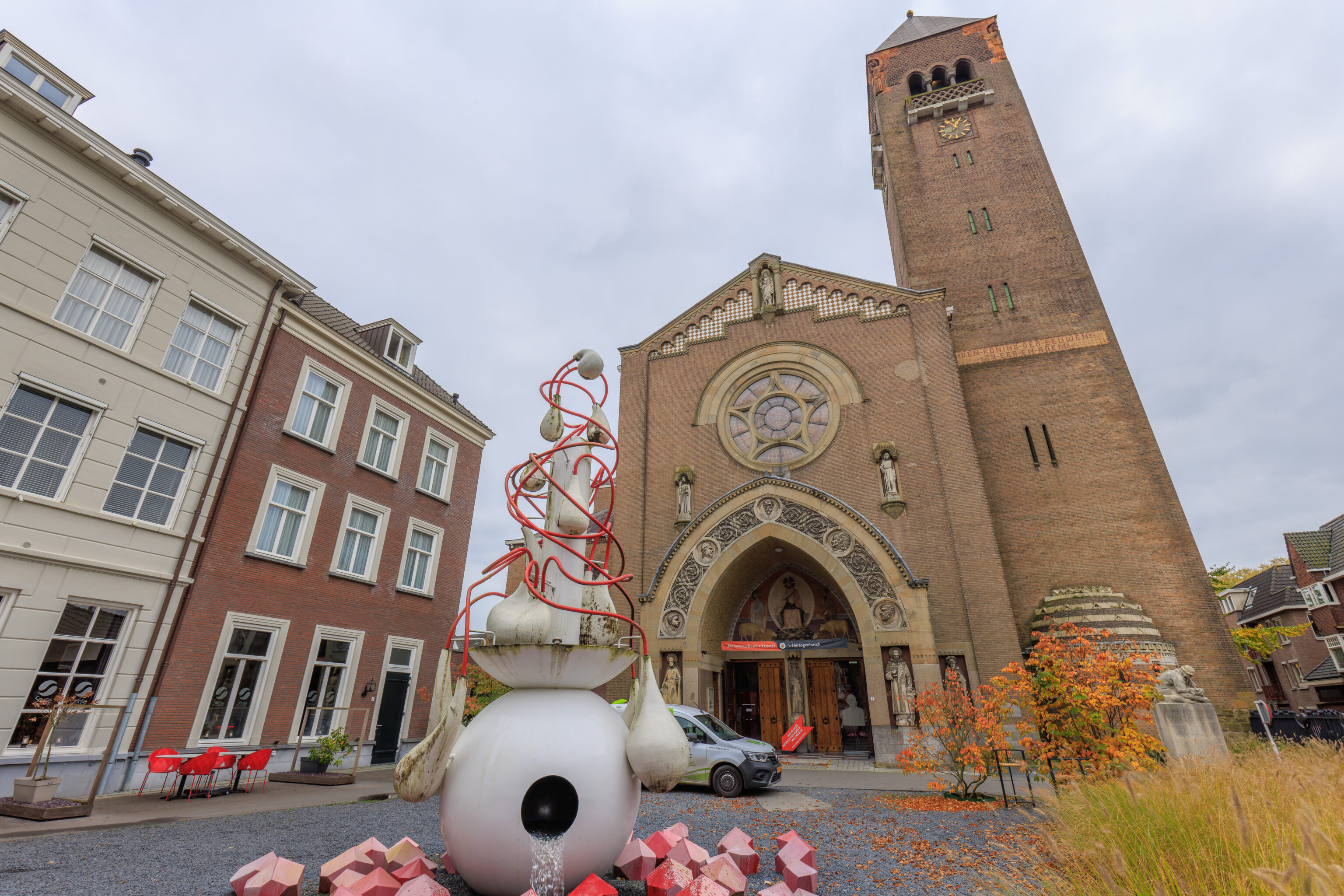
The fountain is based on the painting Tuin der lusten, from around 1500, which somehow has the English name, Garden of Earthly Delights. Maybe we will see this painting in the museum?
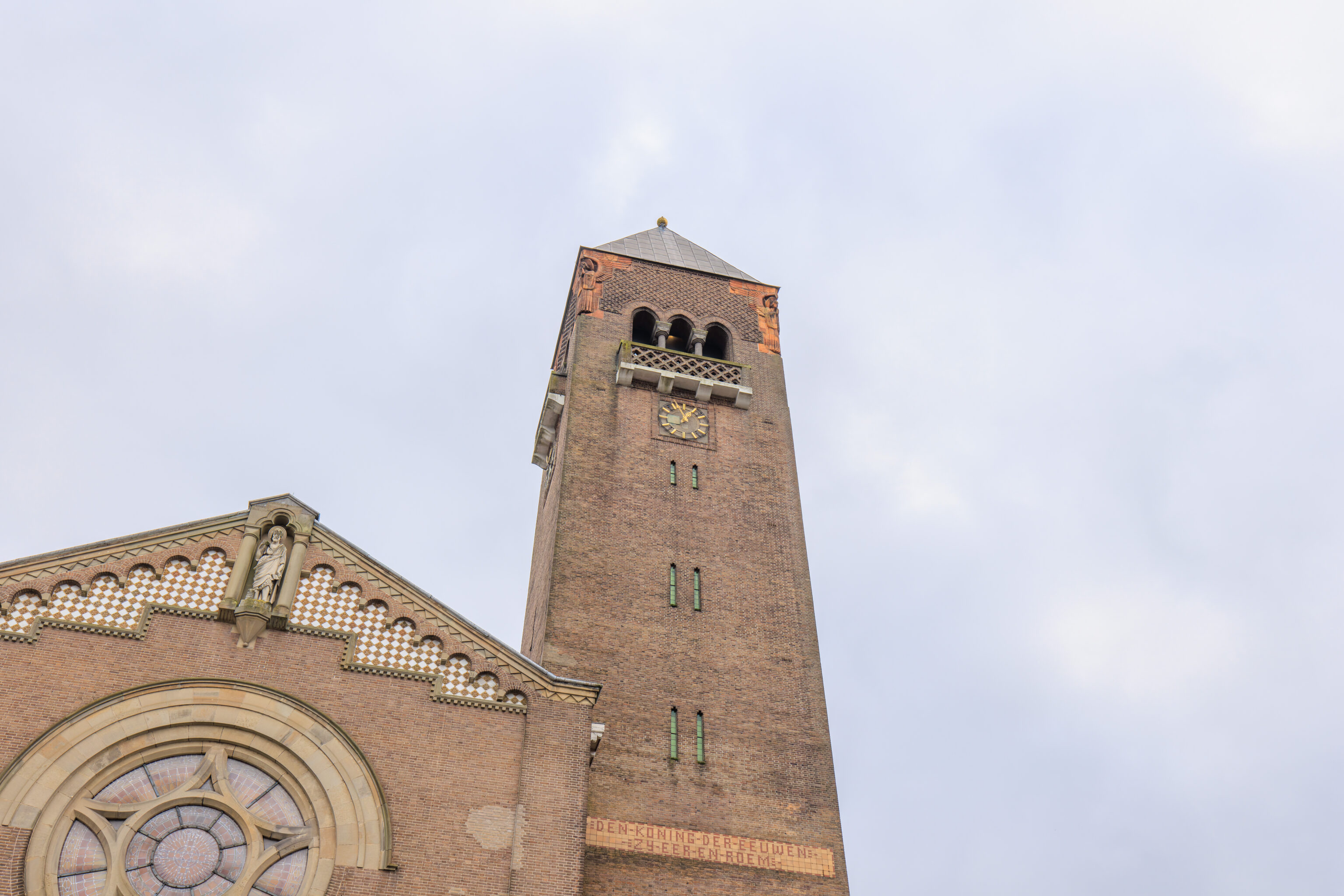
The tower can also be visited for views of the city. Entry includes a small but thick guide book which describes each replica of Bosch’s work contained within the museum.
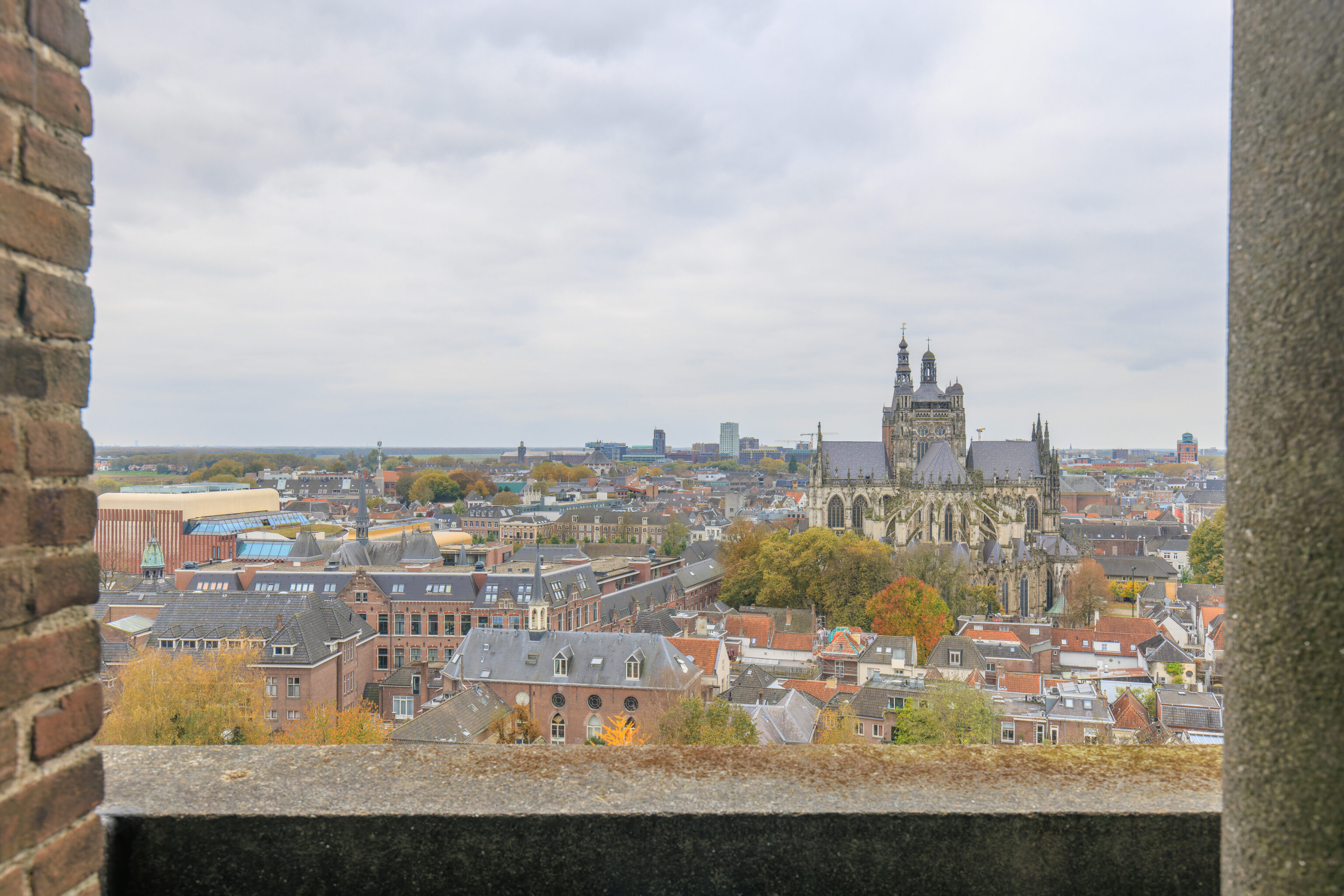
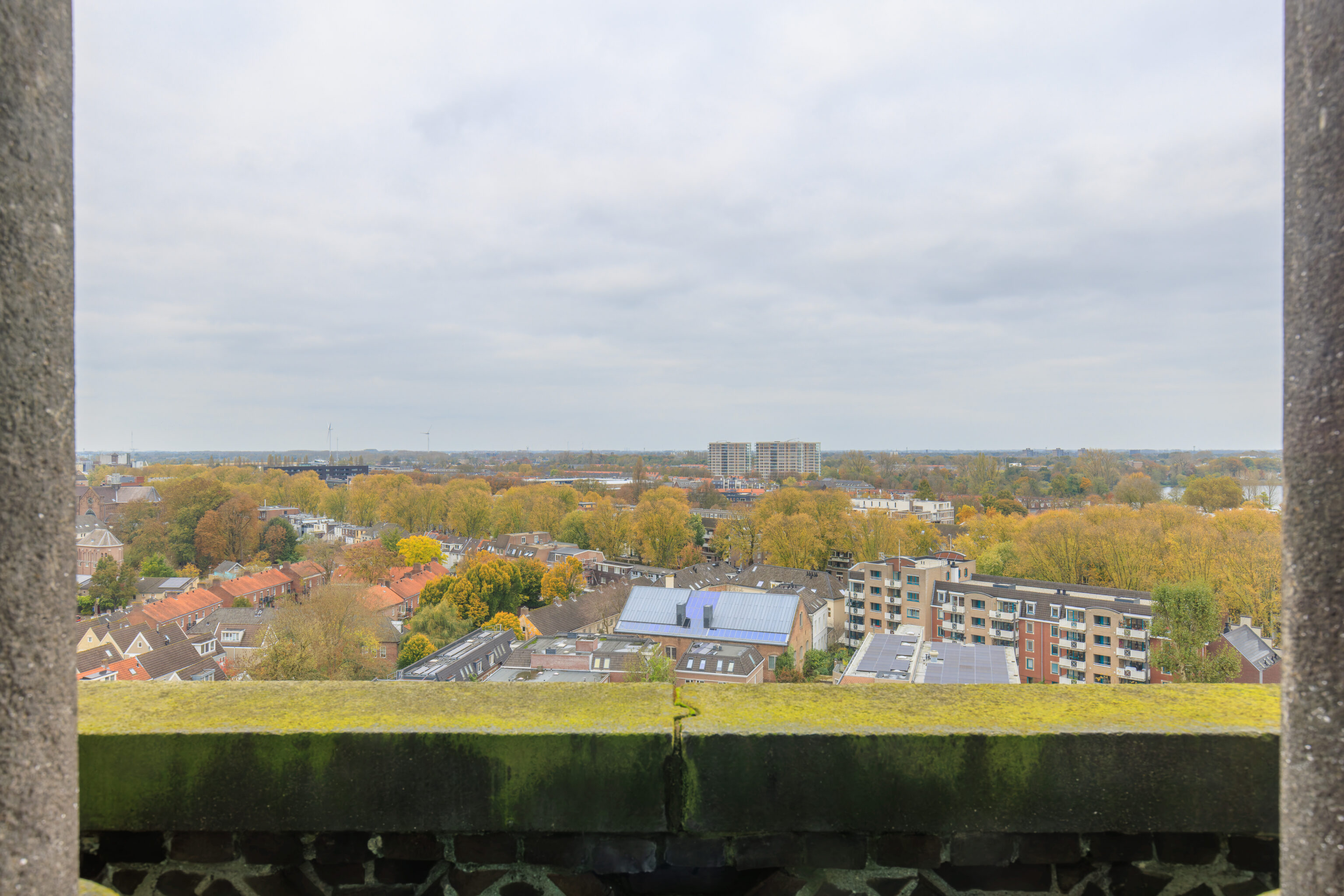
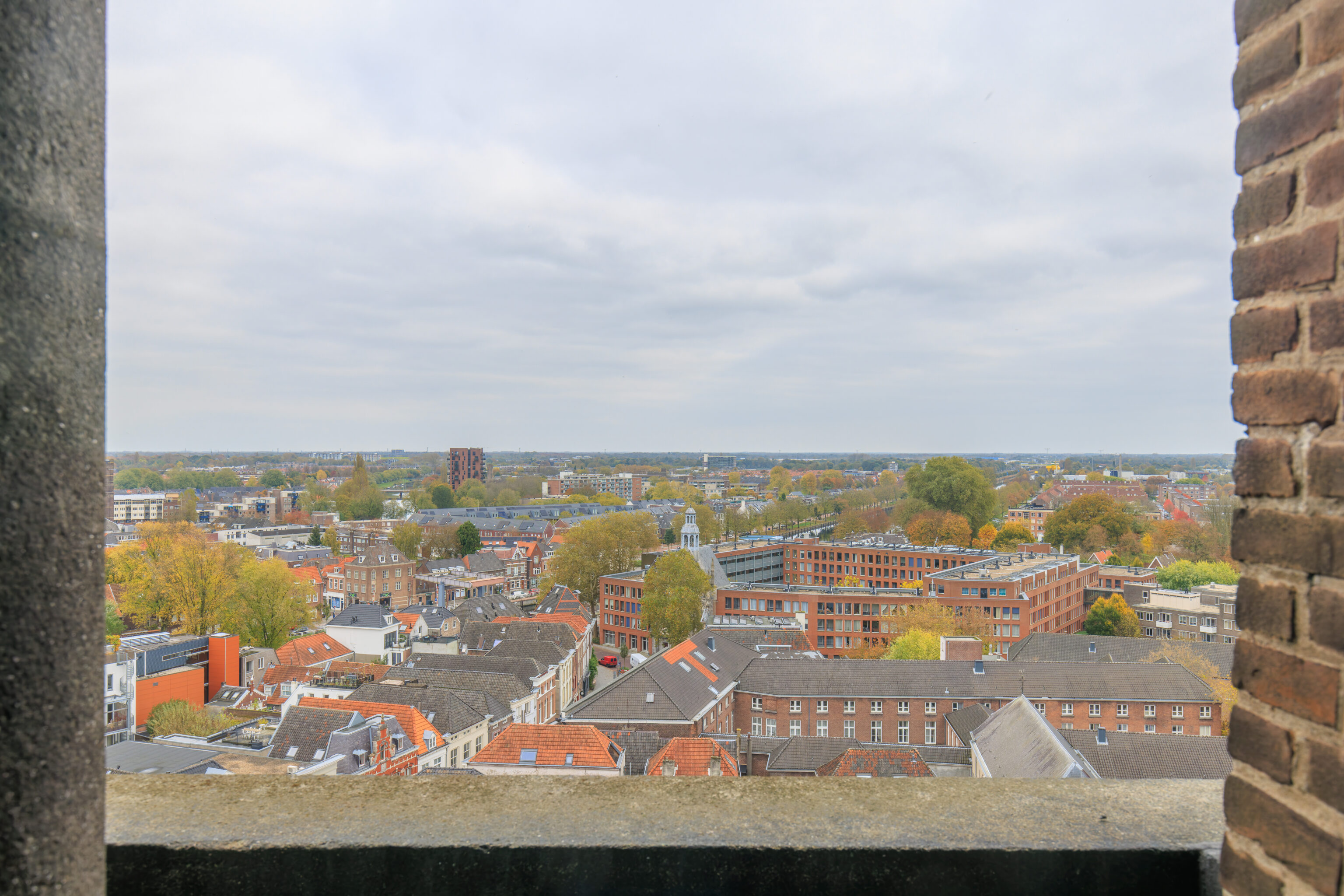
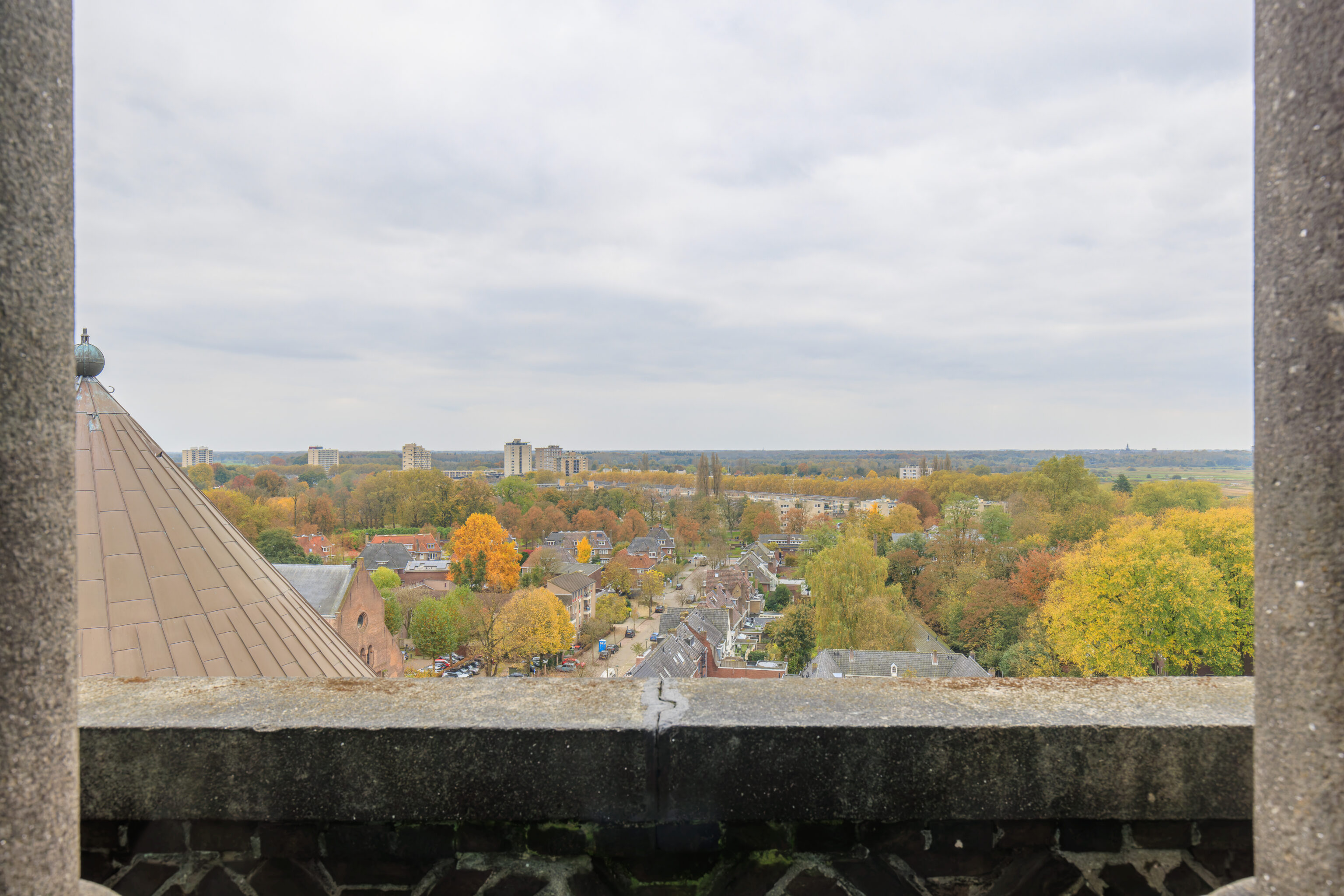
We decided to go up into the tower first. One criticism of the tower that we’ve seen online is that you can’t actually go outside, instead, you are within a glass walled interior room at the top of the tower. This is true!
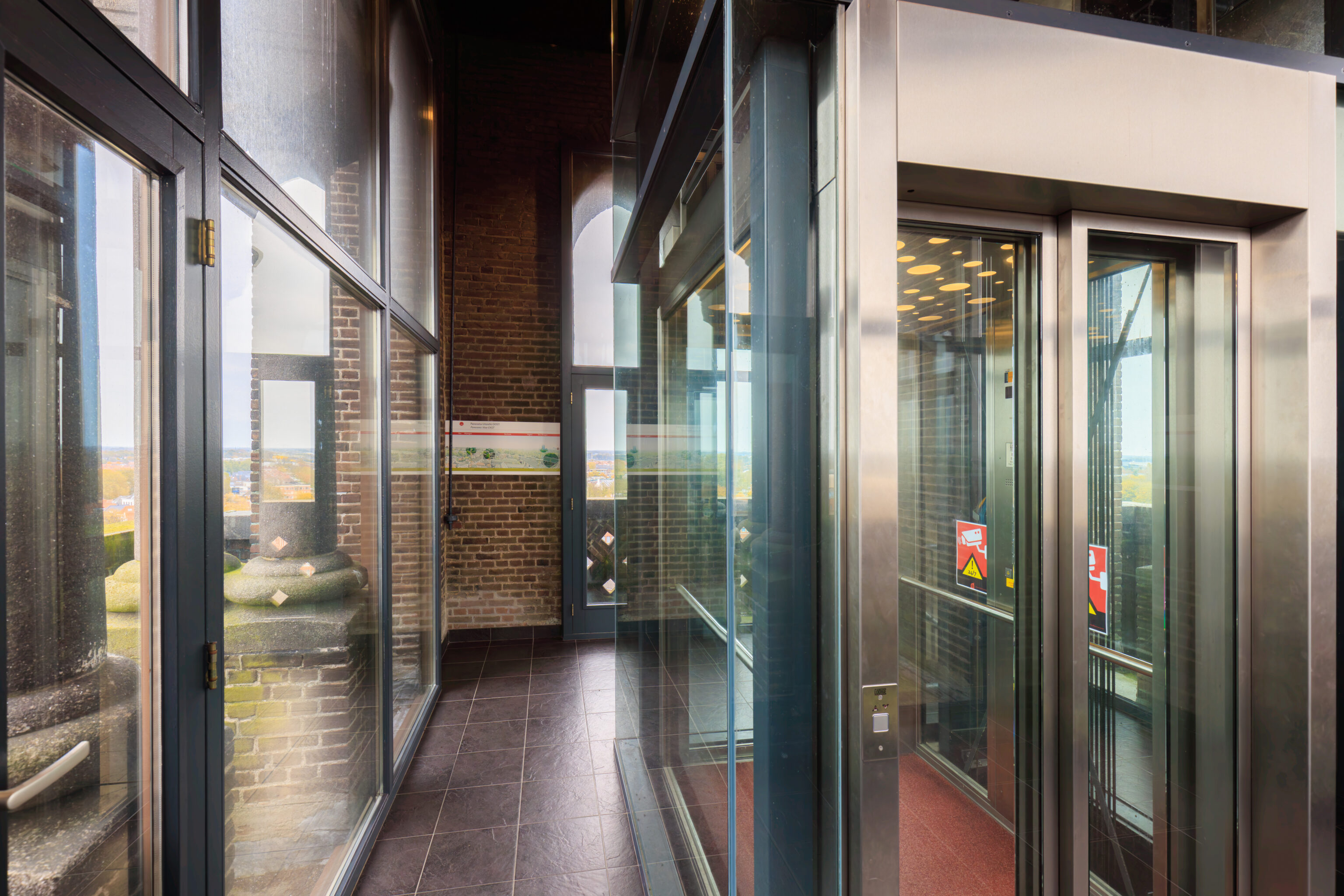
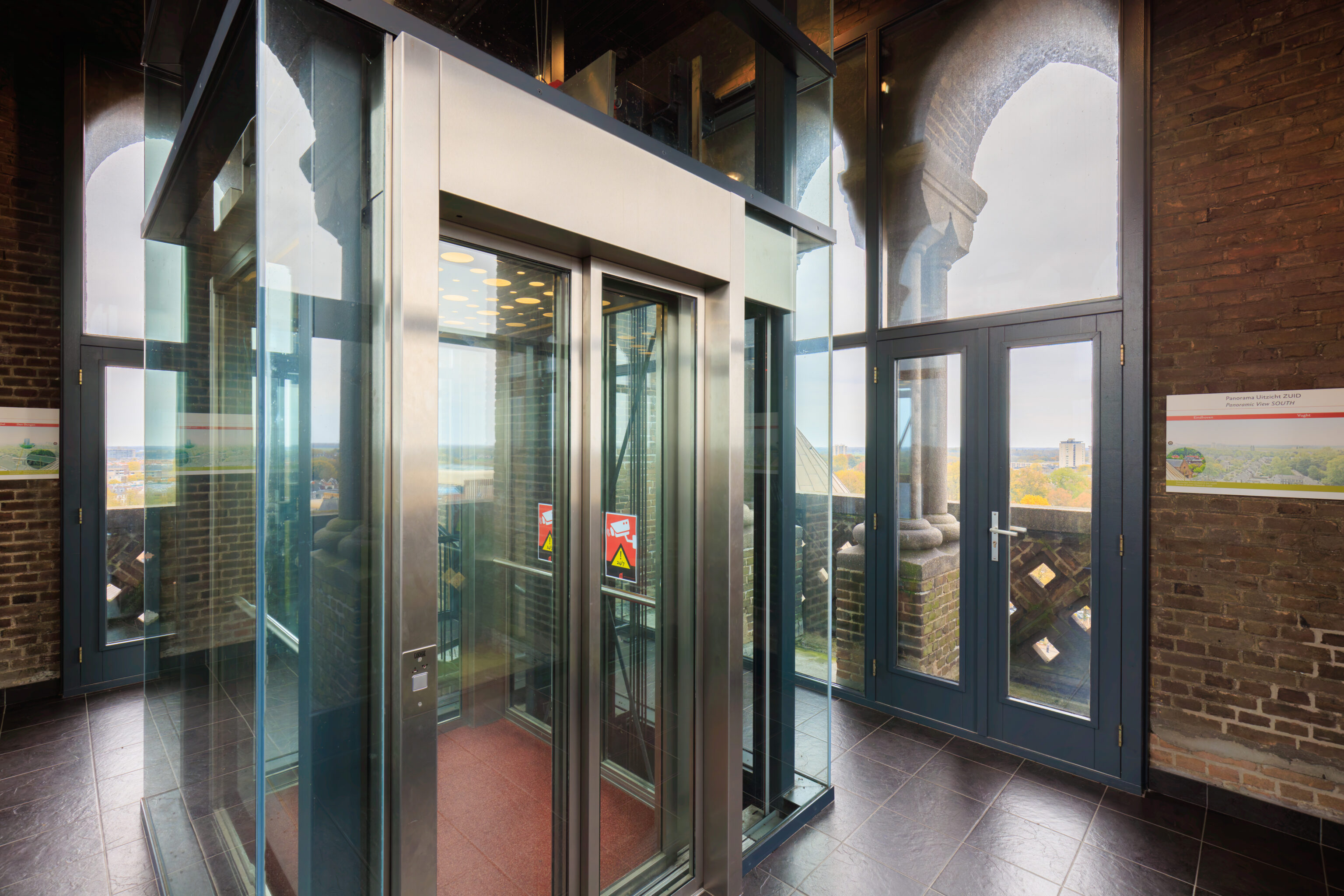
The tower does have a very nice elevator though!
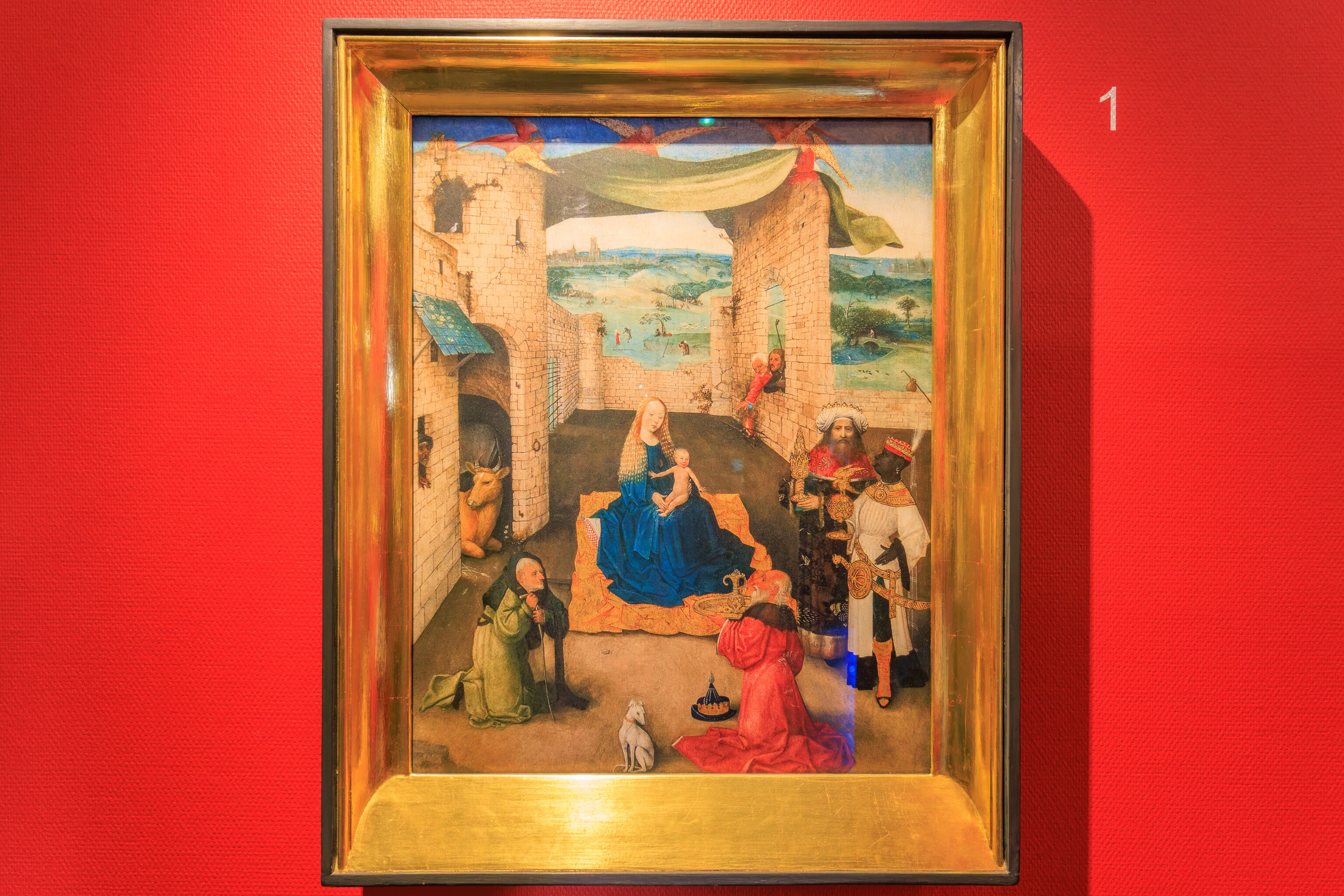
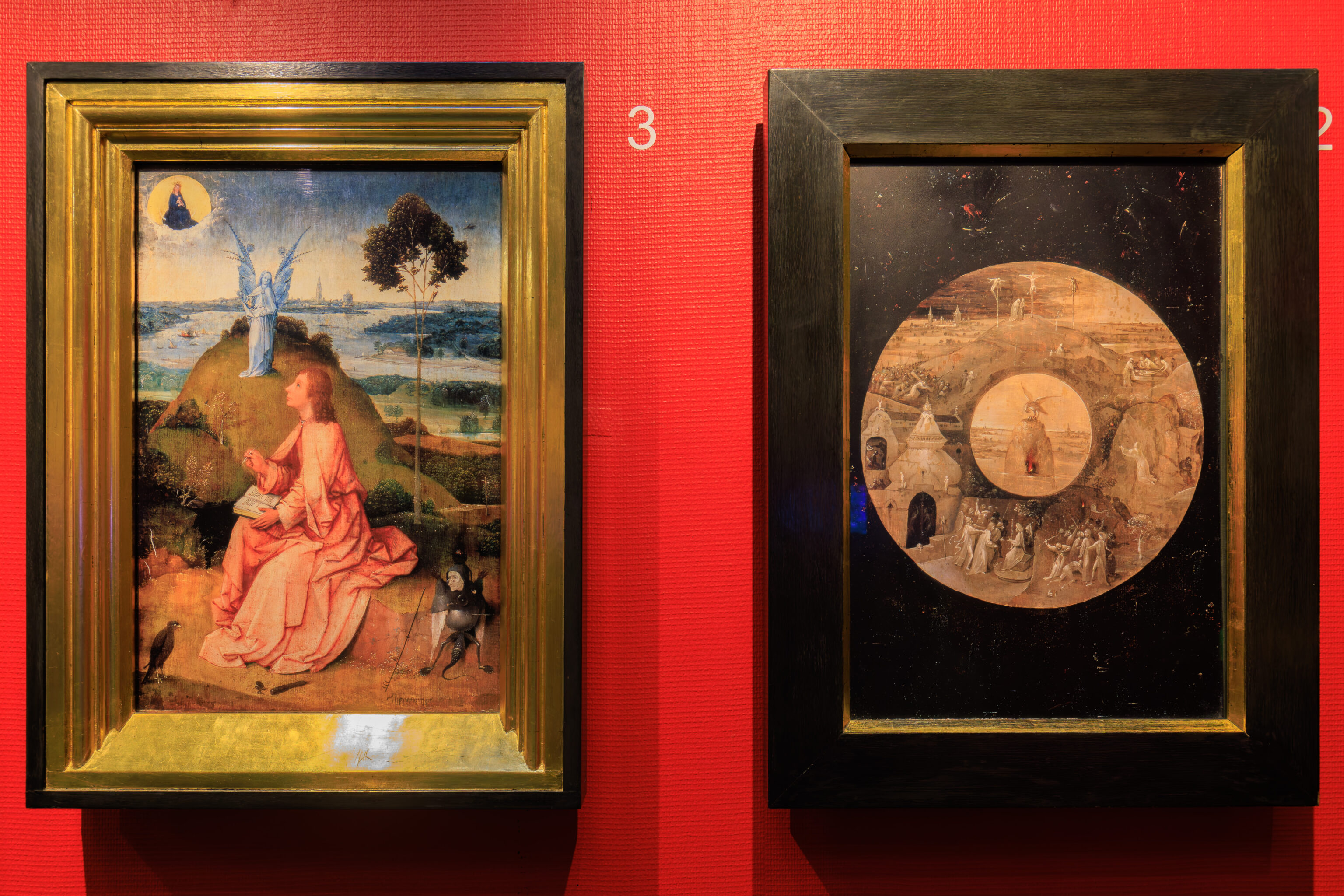
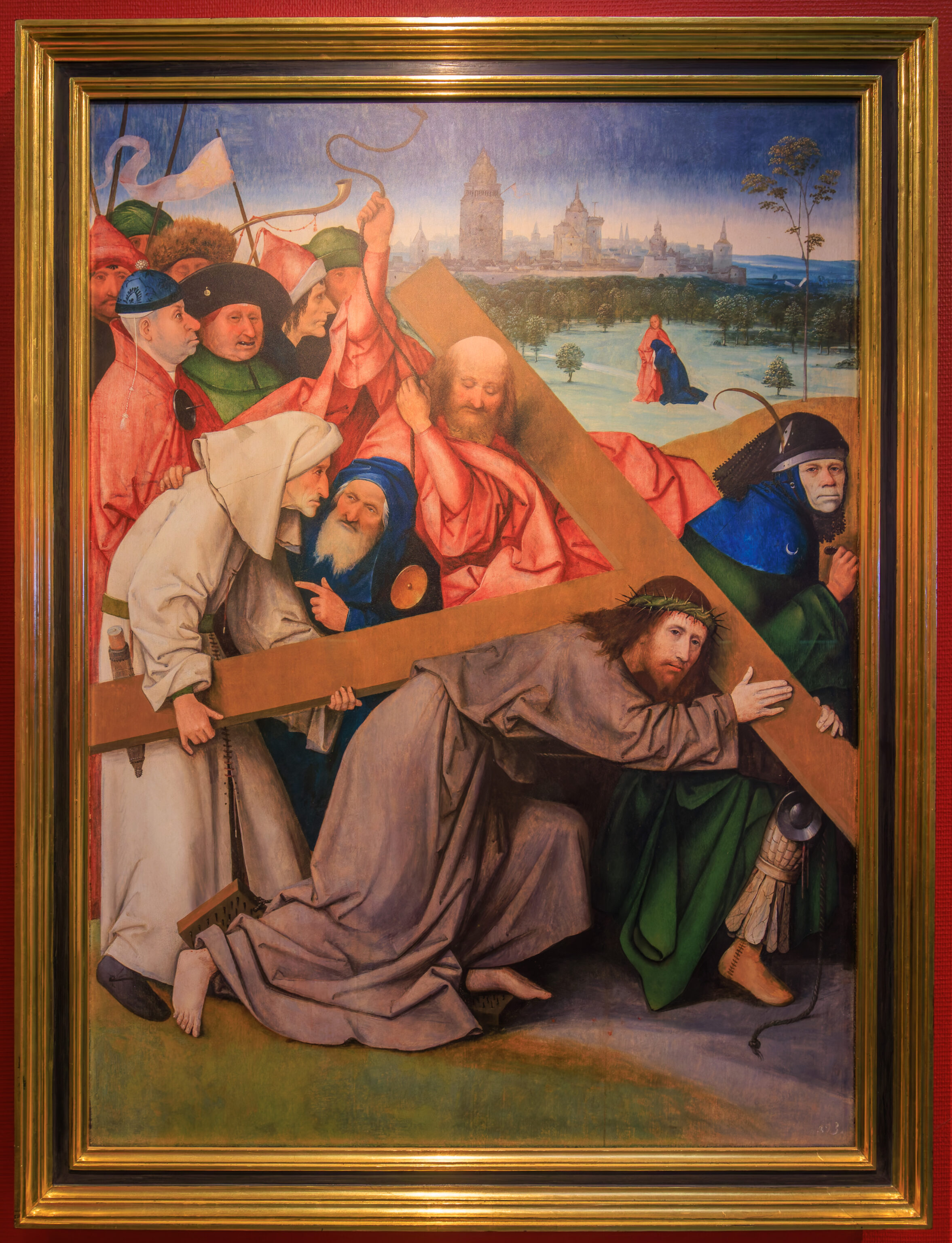
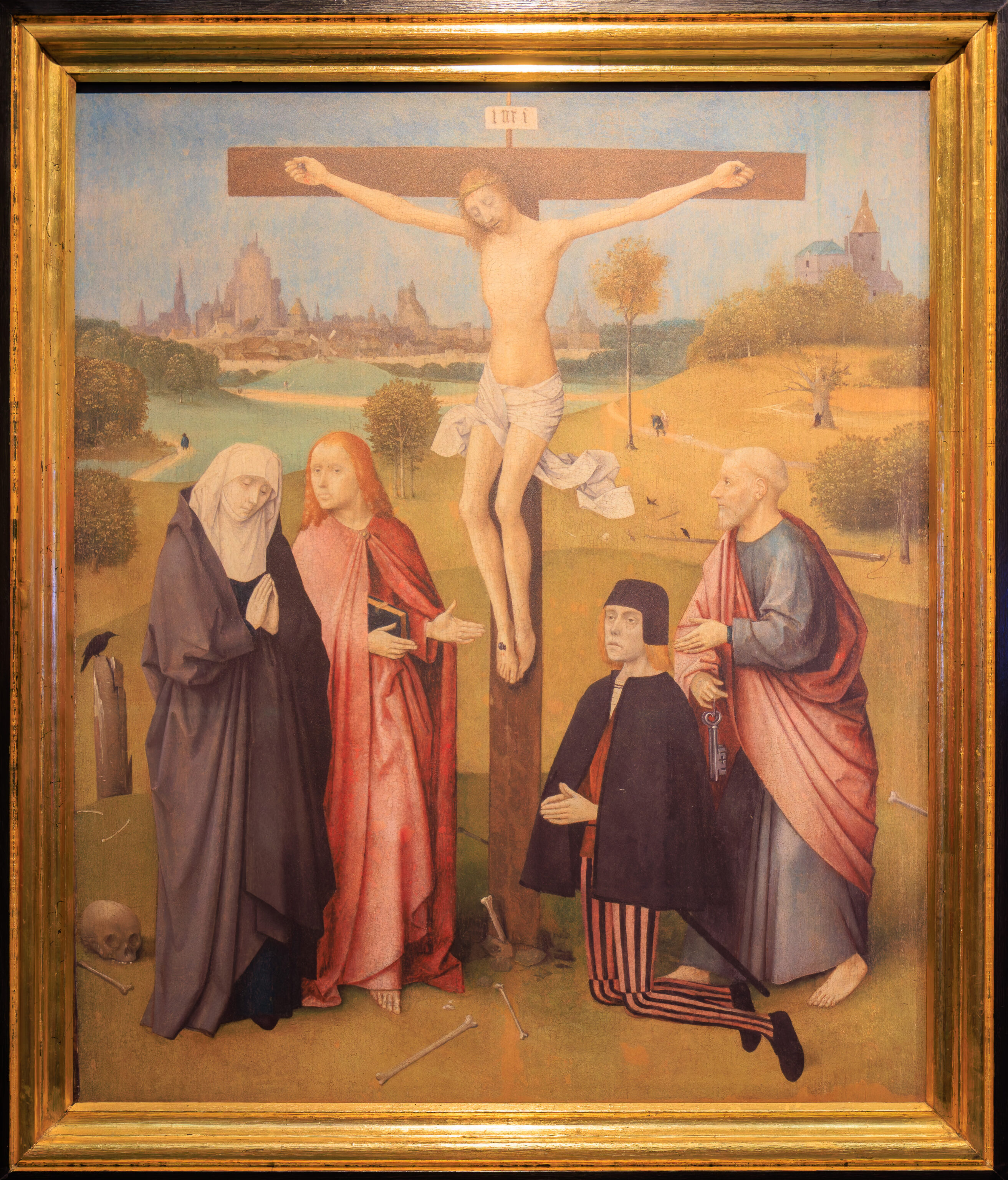
Much of Bosch’s art is religious in nature, though with elements that seem odd!
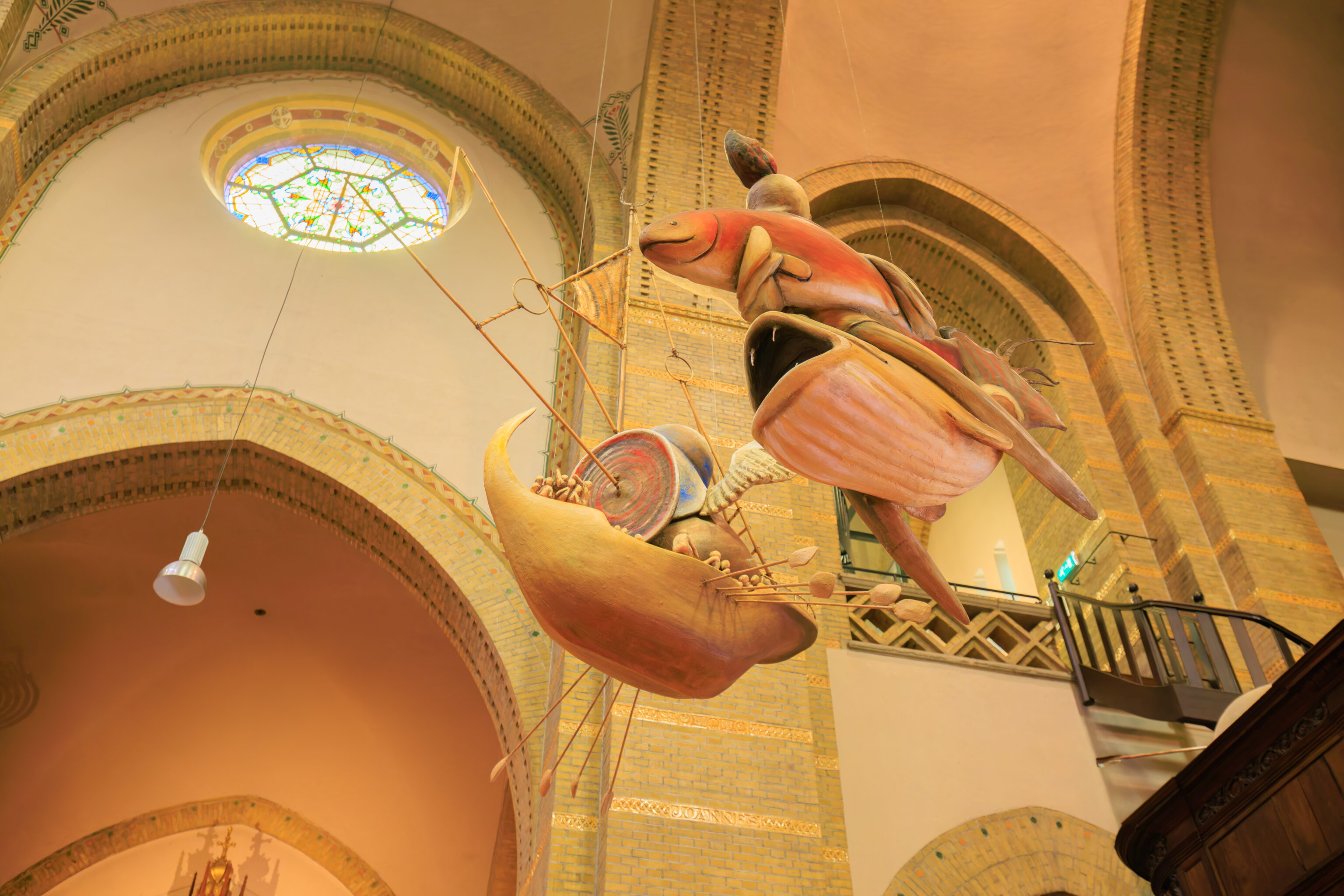
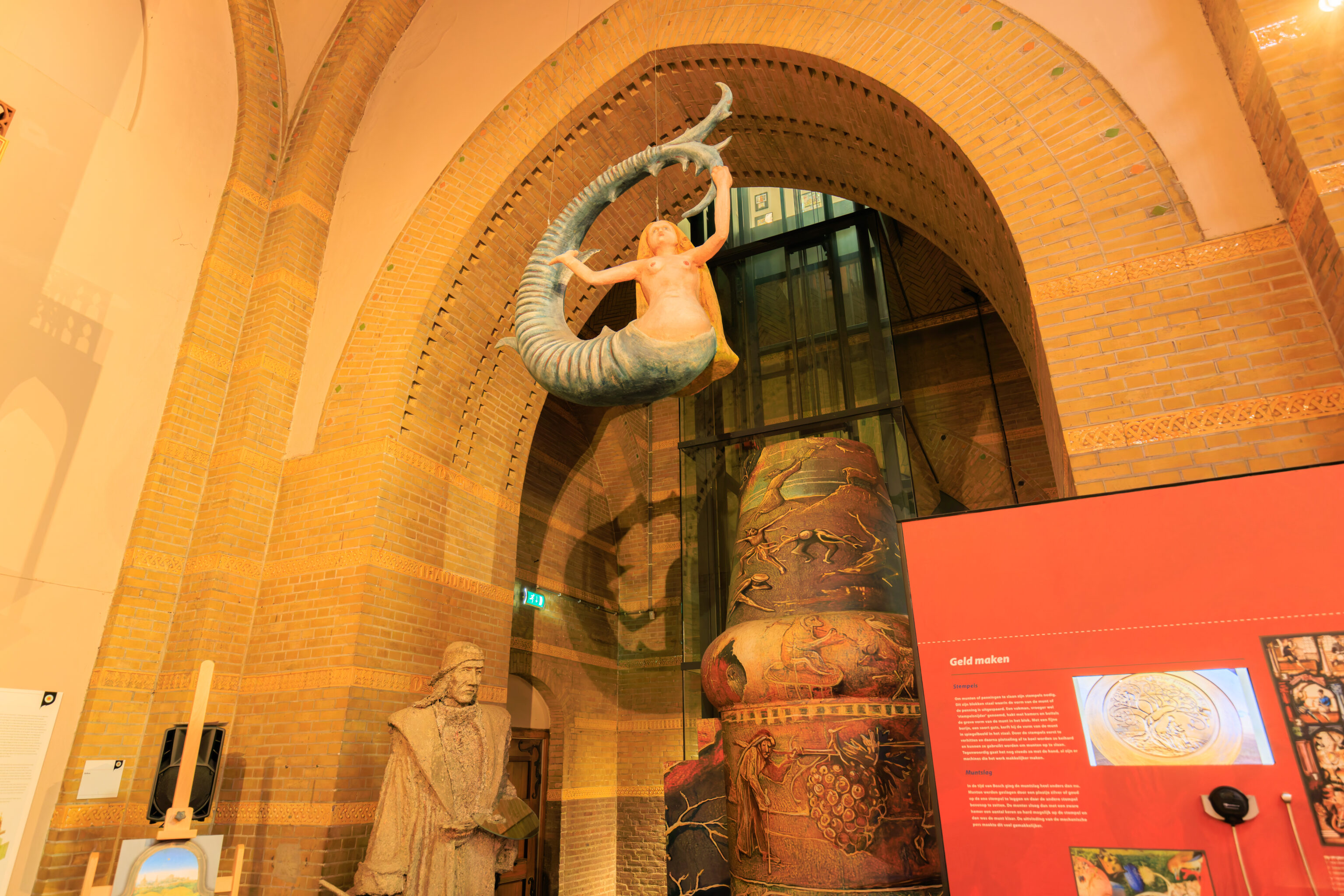
Various sculptures of elements from his paintings hang from the ceiling.
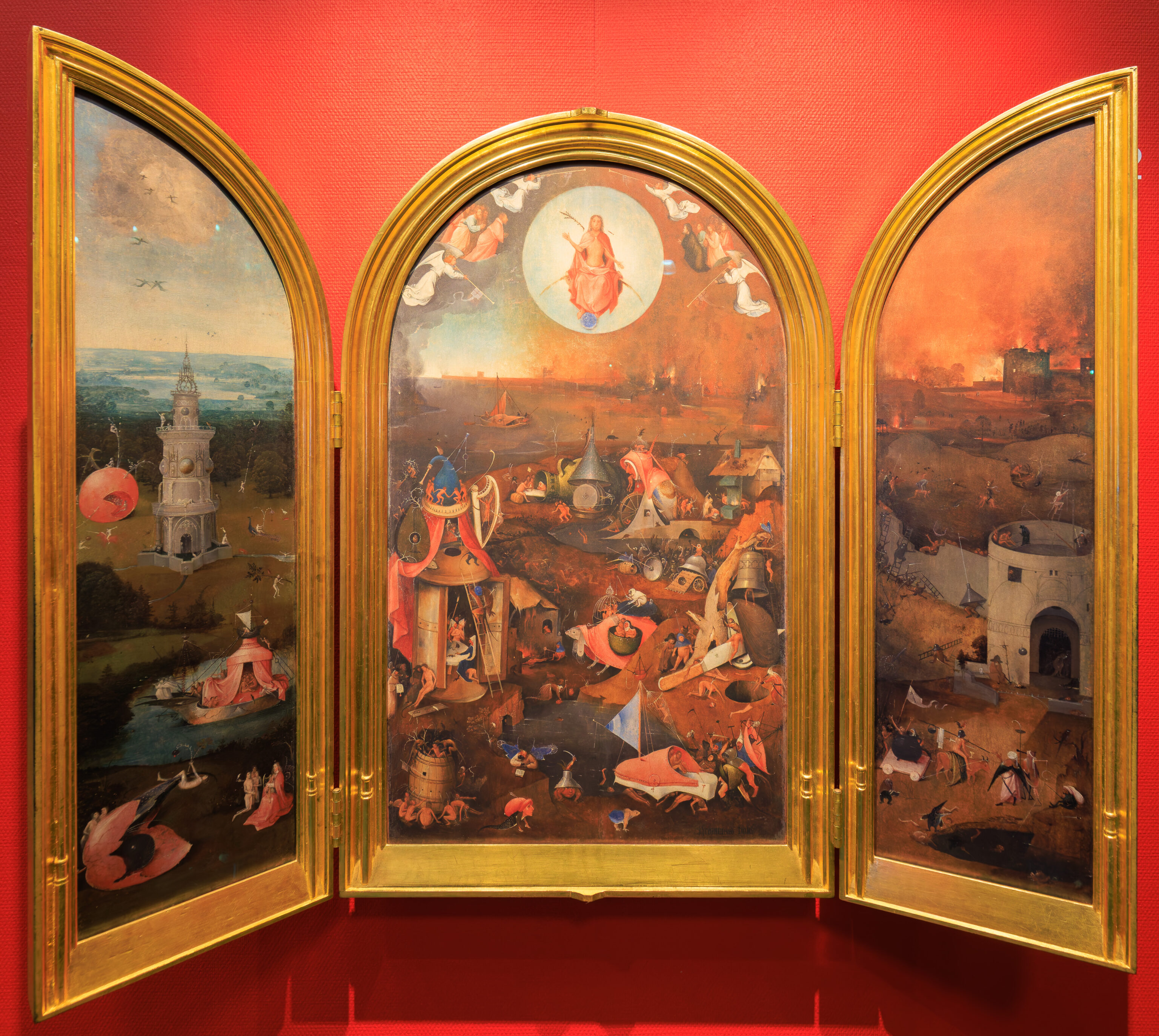
His paintings have quite a bit of detail. Some of them, like this one, are truly weird!
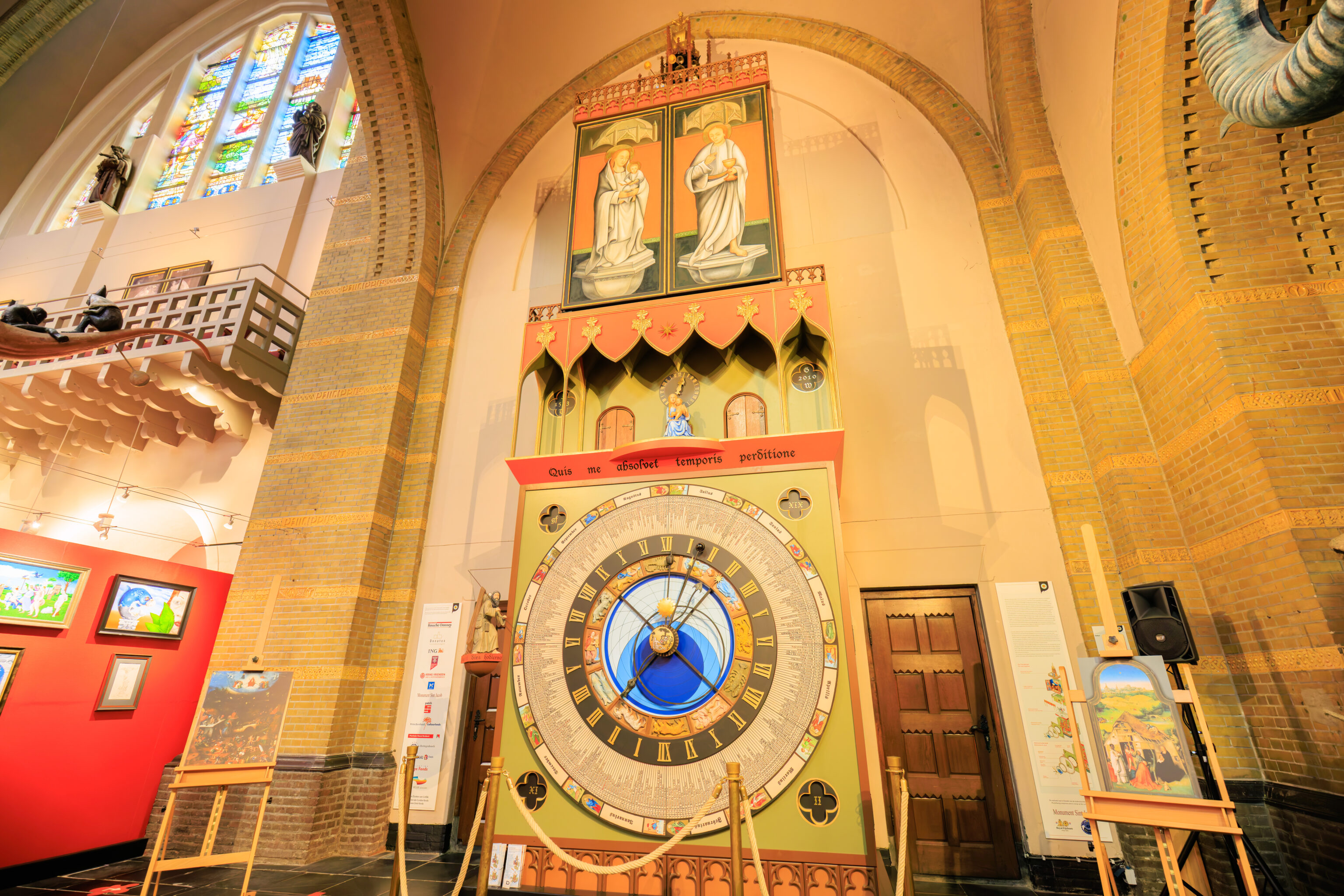
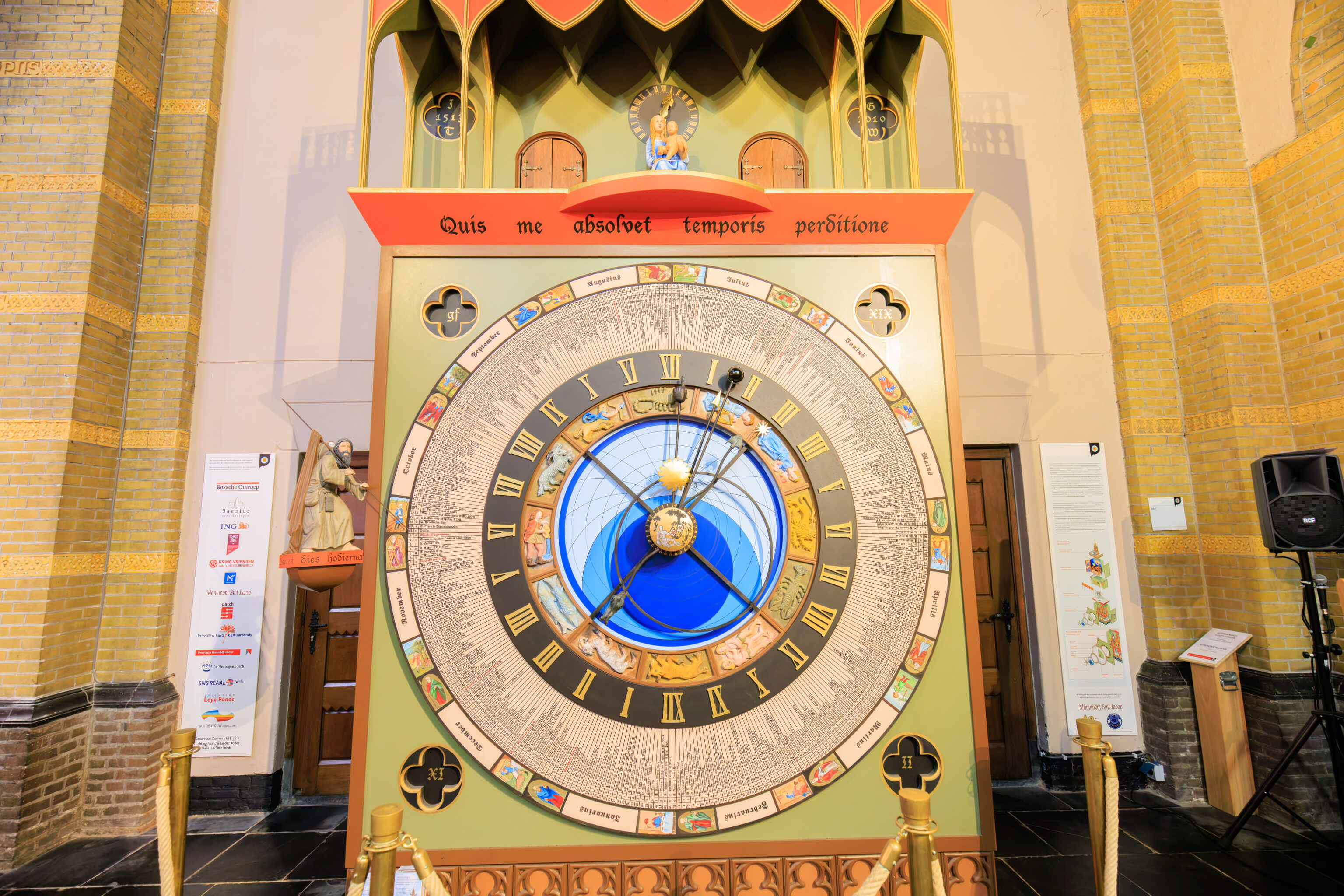
This device is a replica of an astronomical clock from St. John’s Cathedral dating back to 1513. The original stopped working and was dismantled when no one could fix it. This replica was created in 2010.
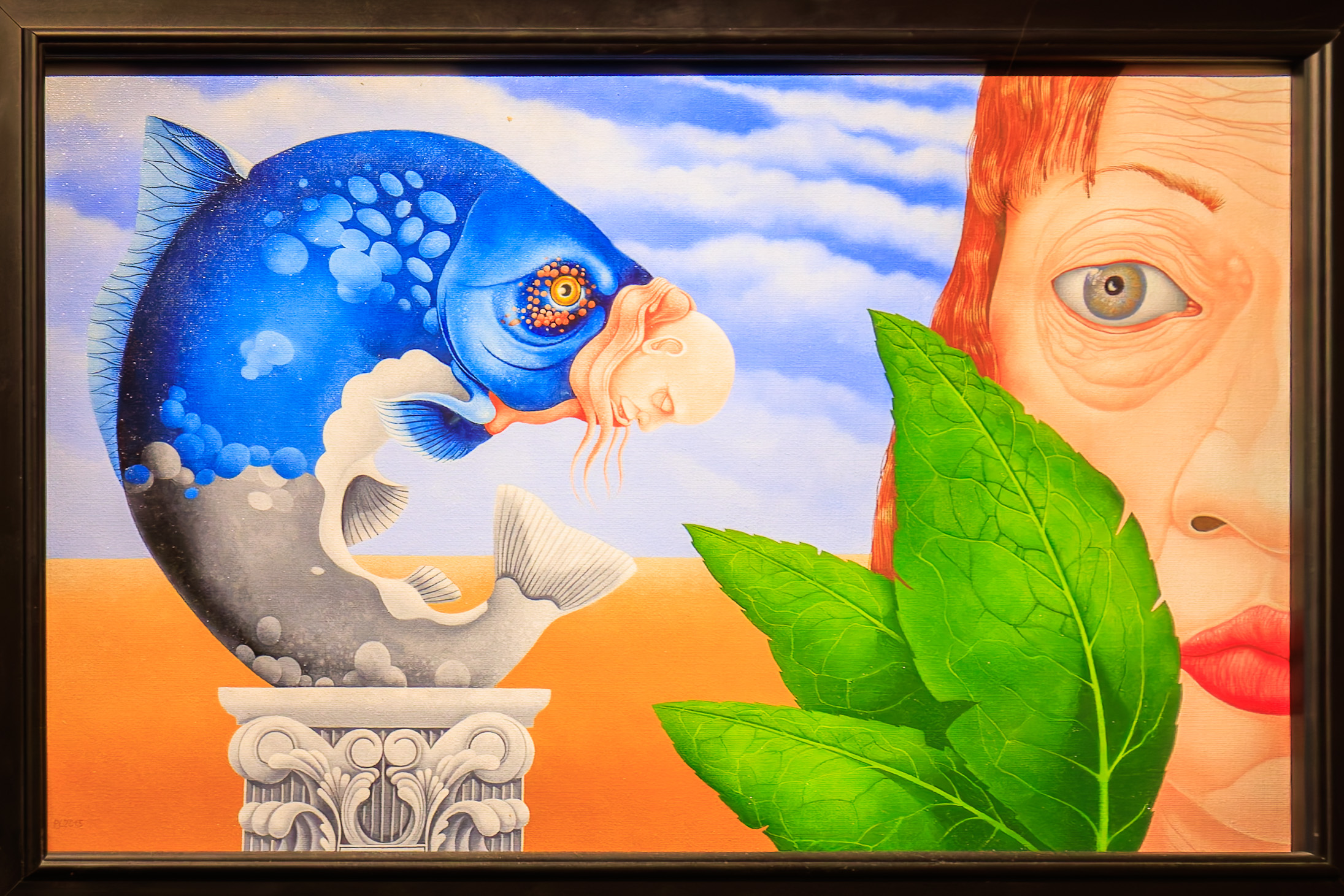
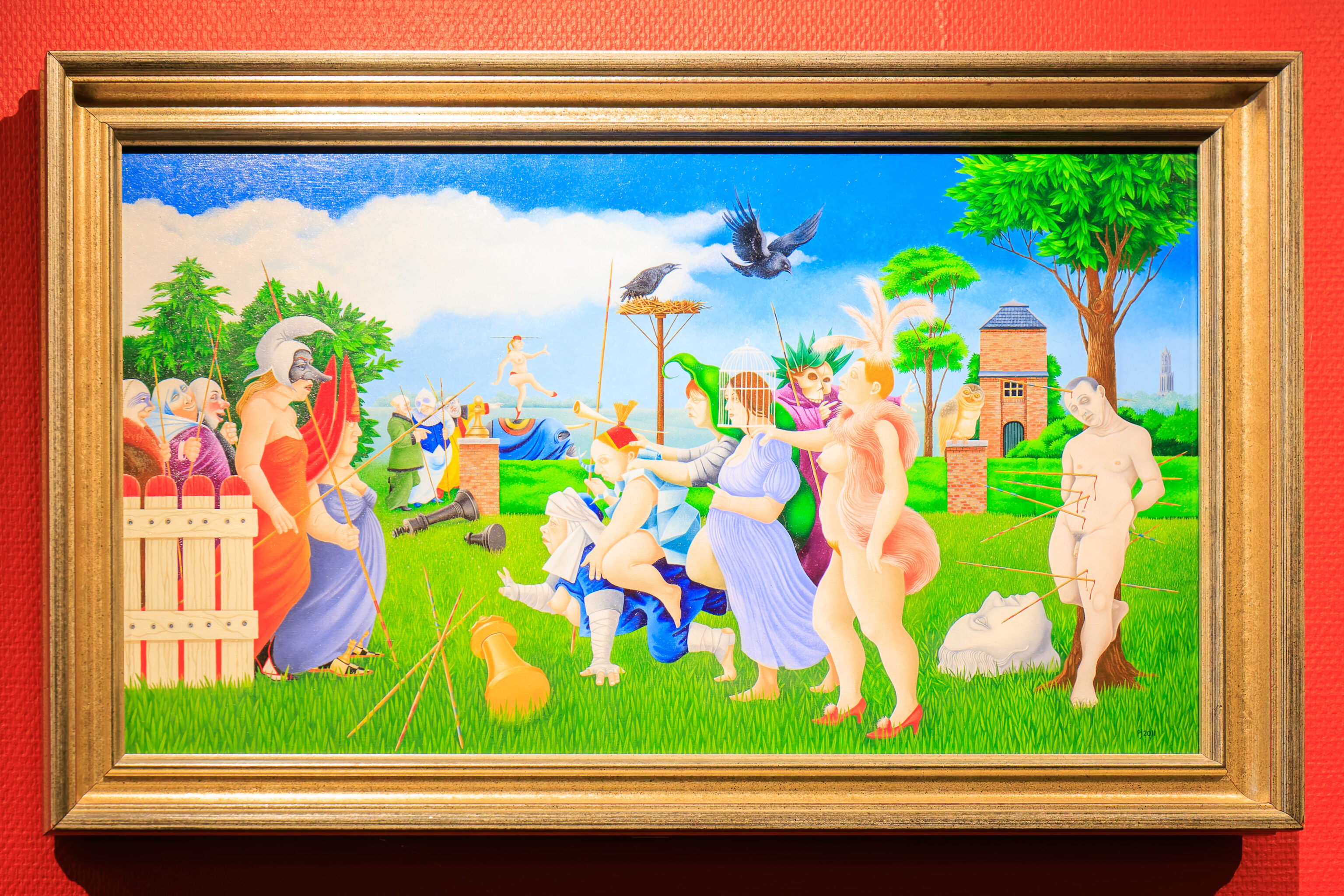
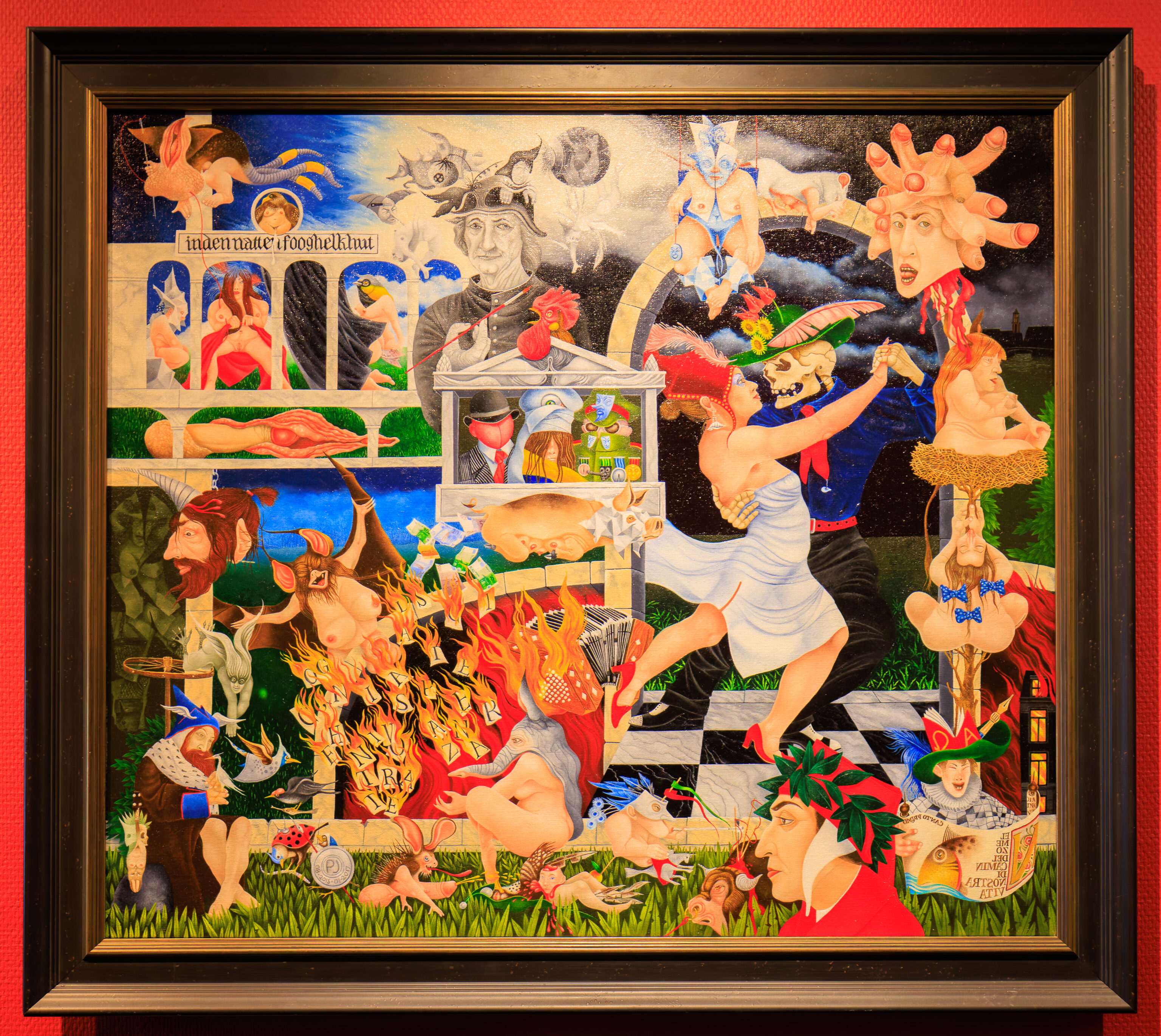
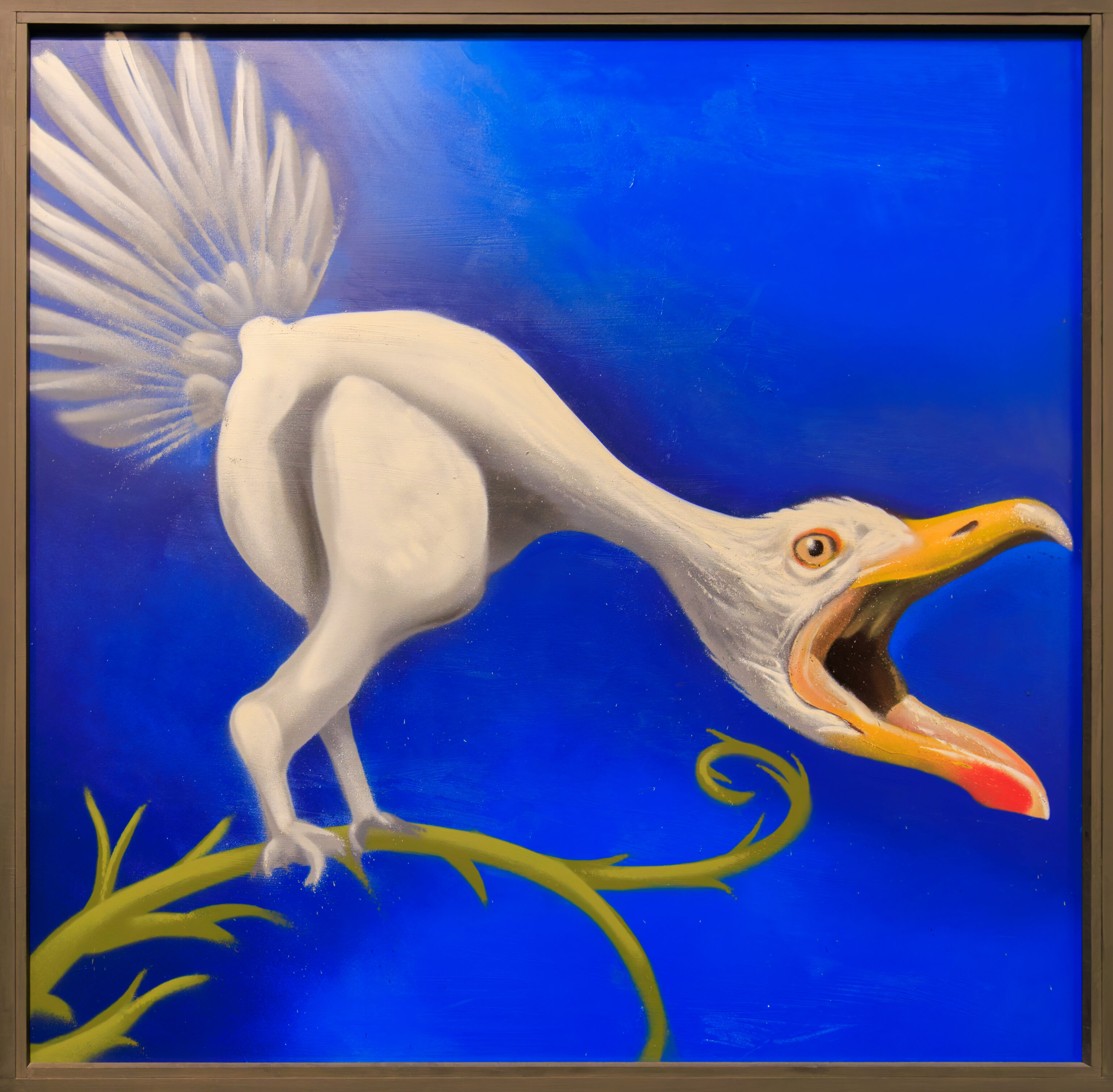
Some of the art in the museum is inspired by Bosch.
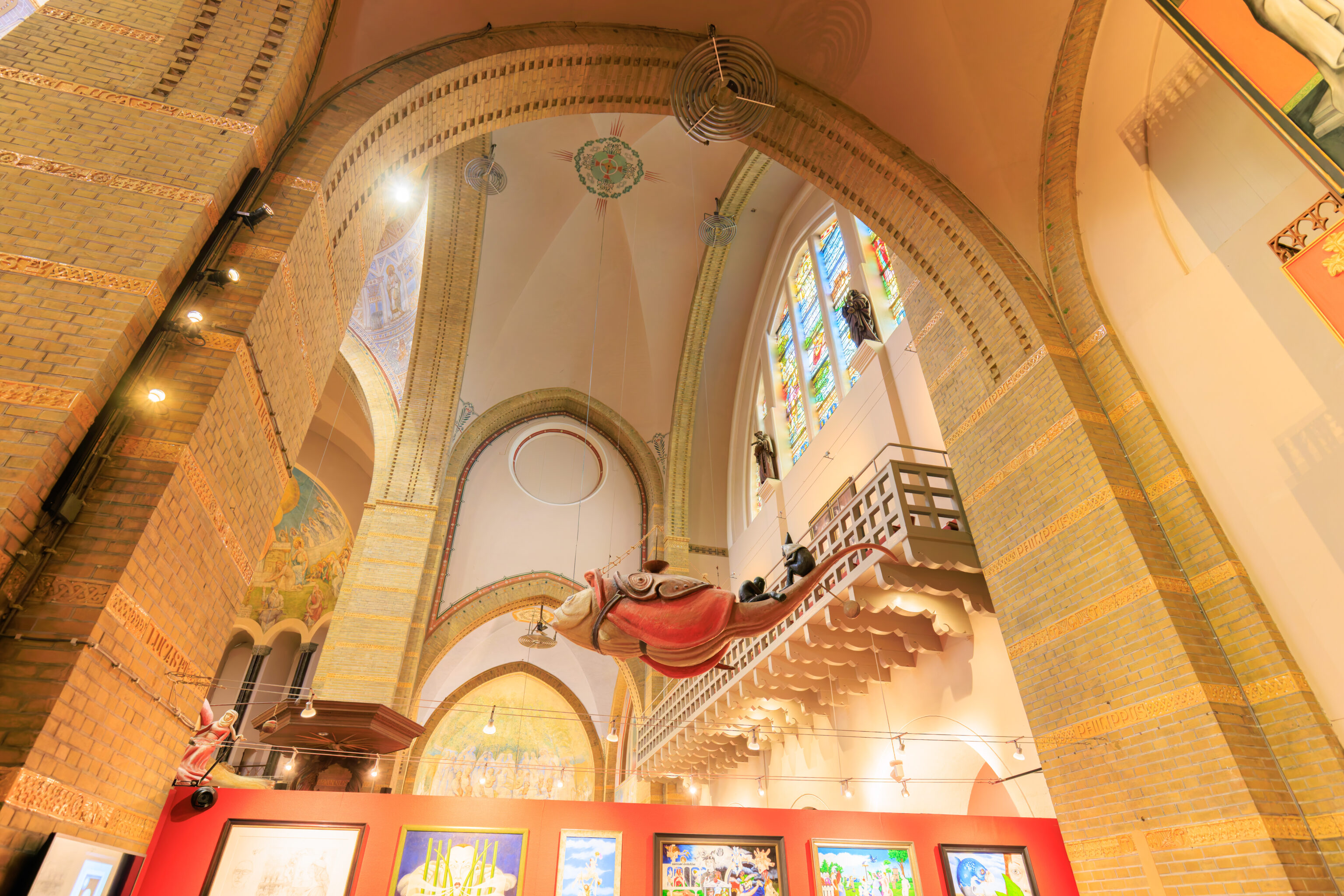
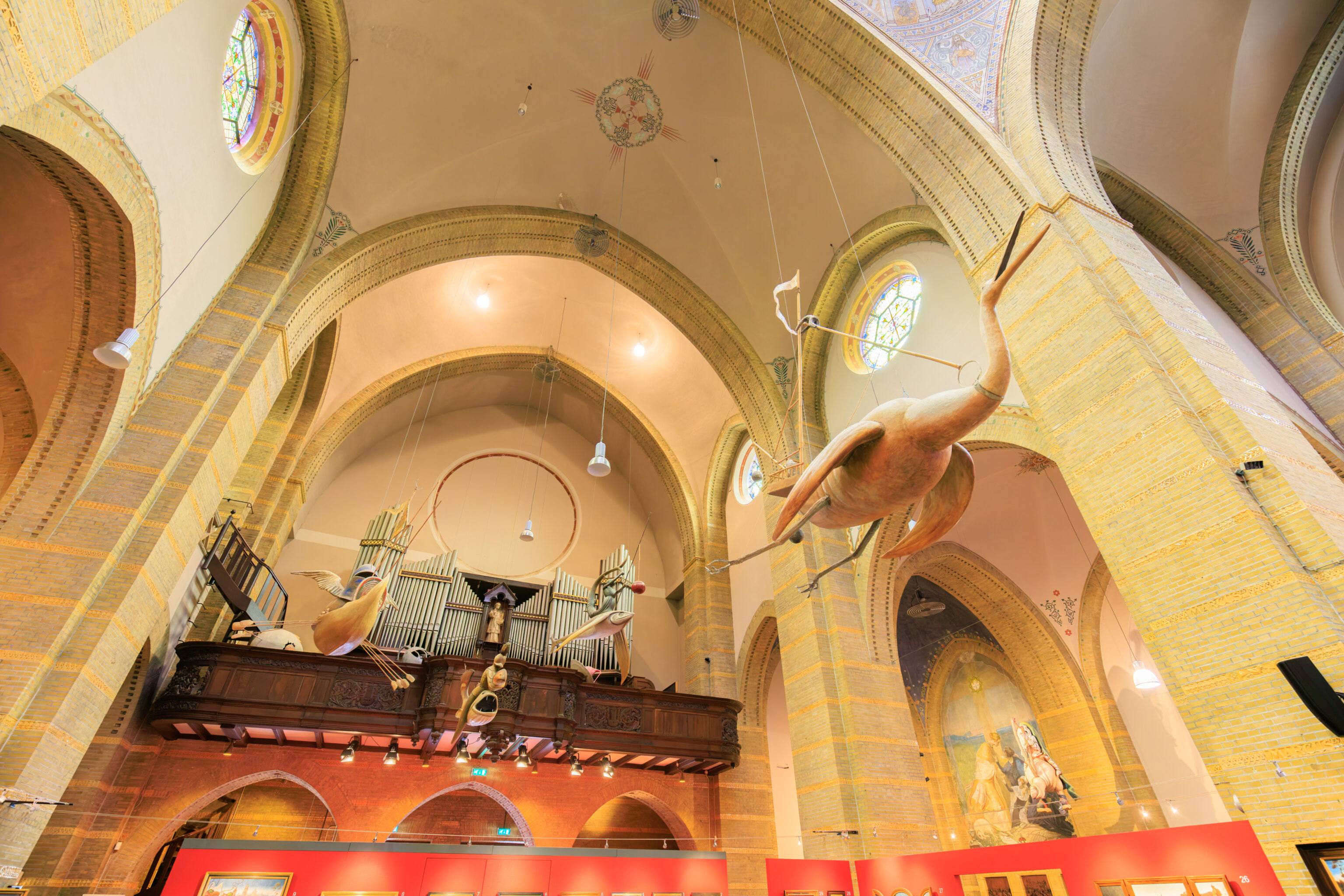
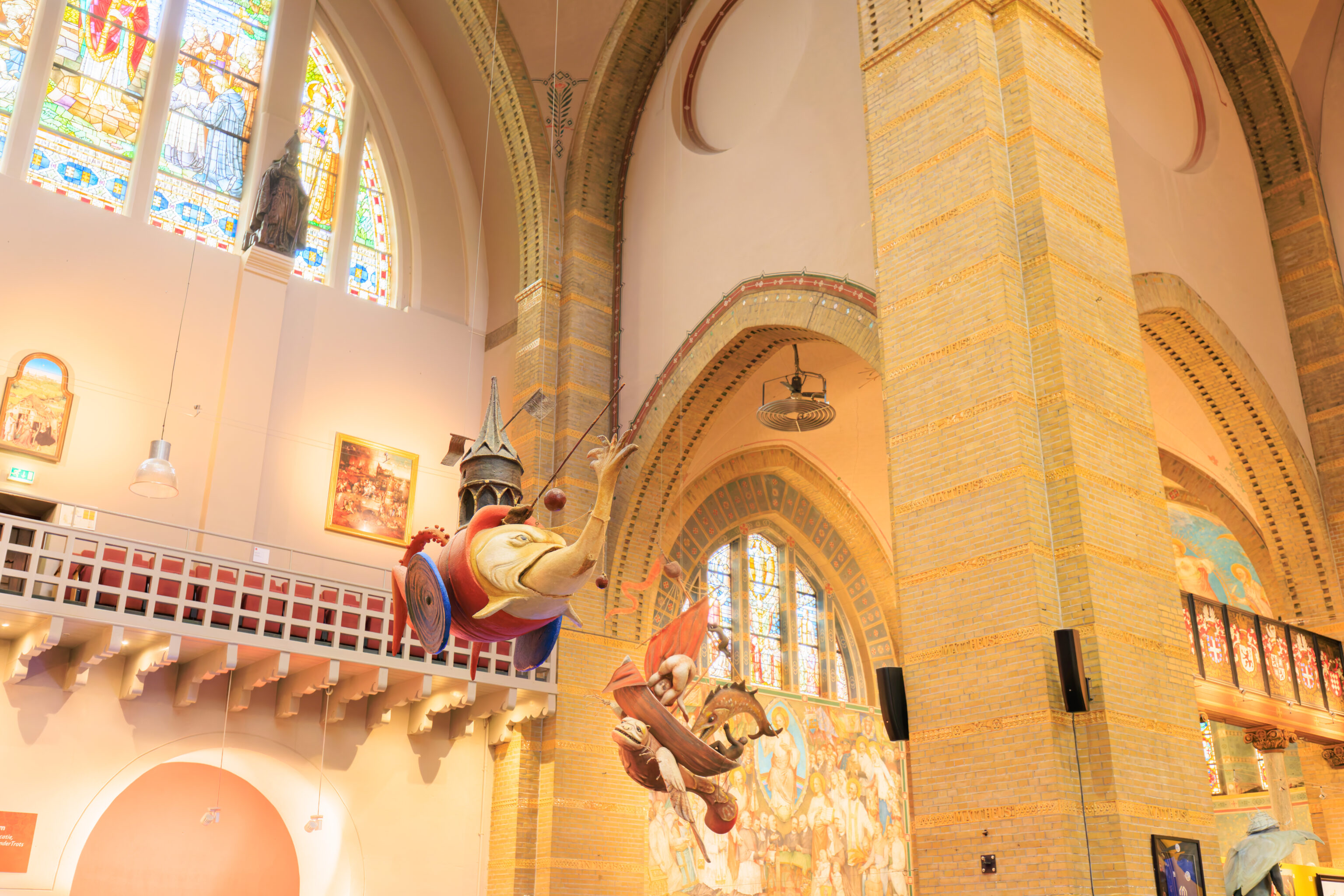
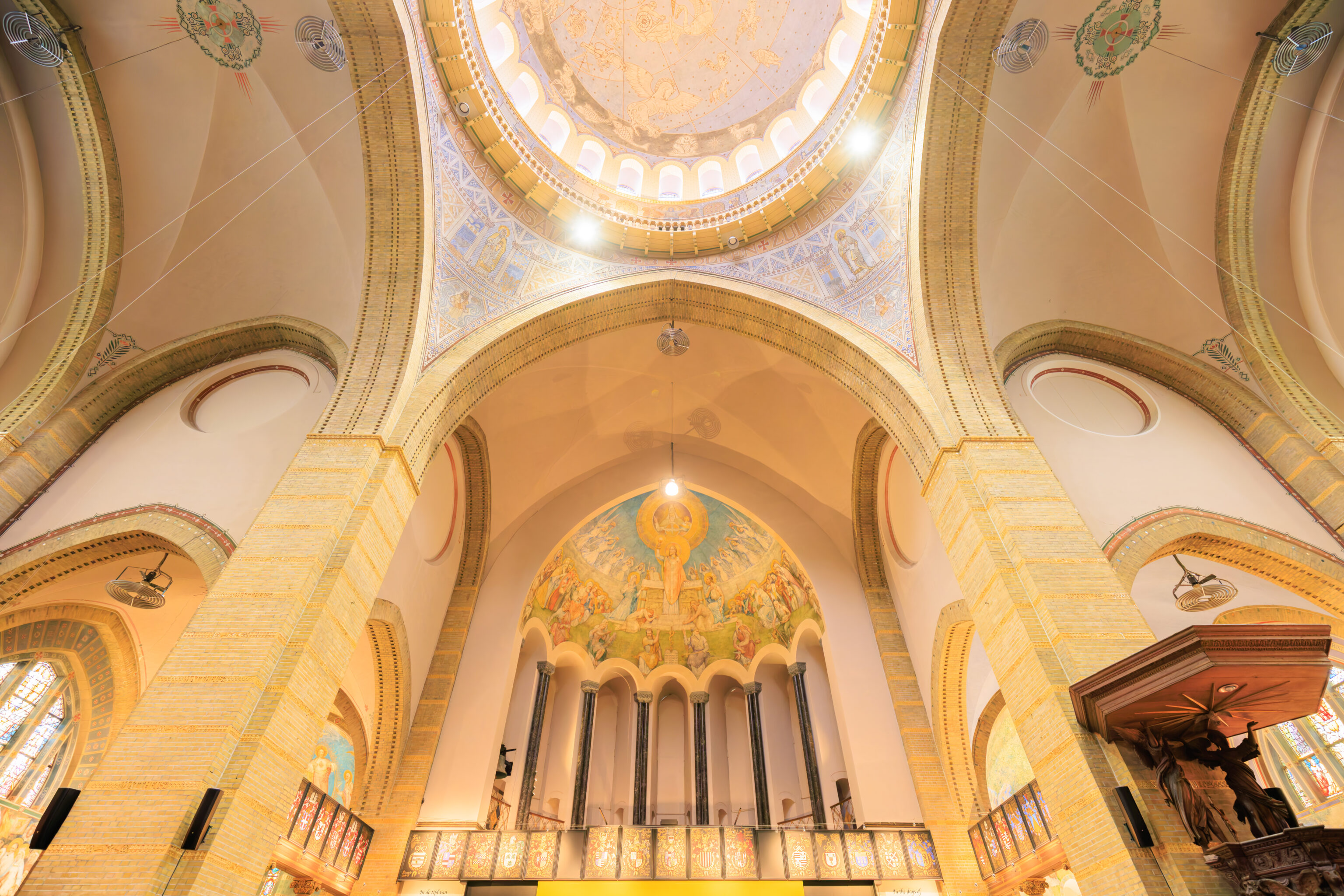
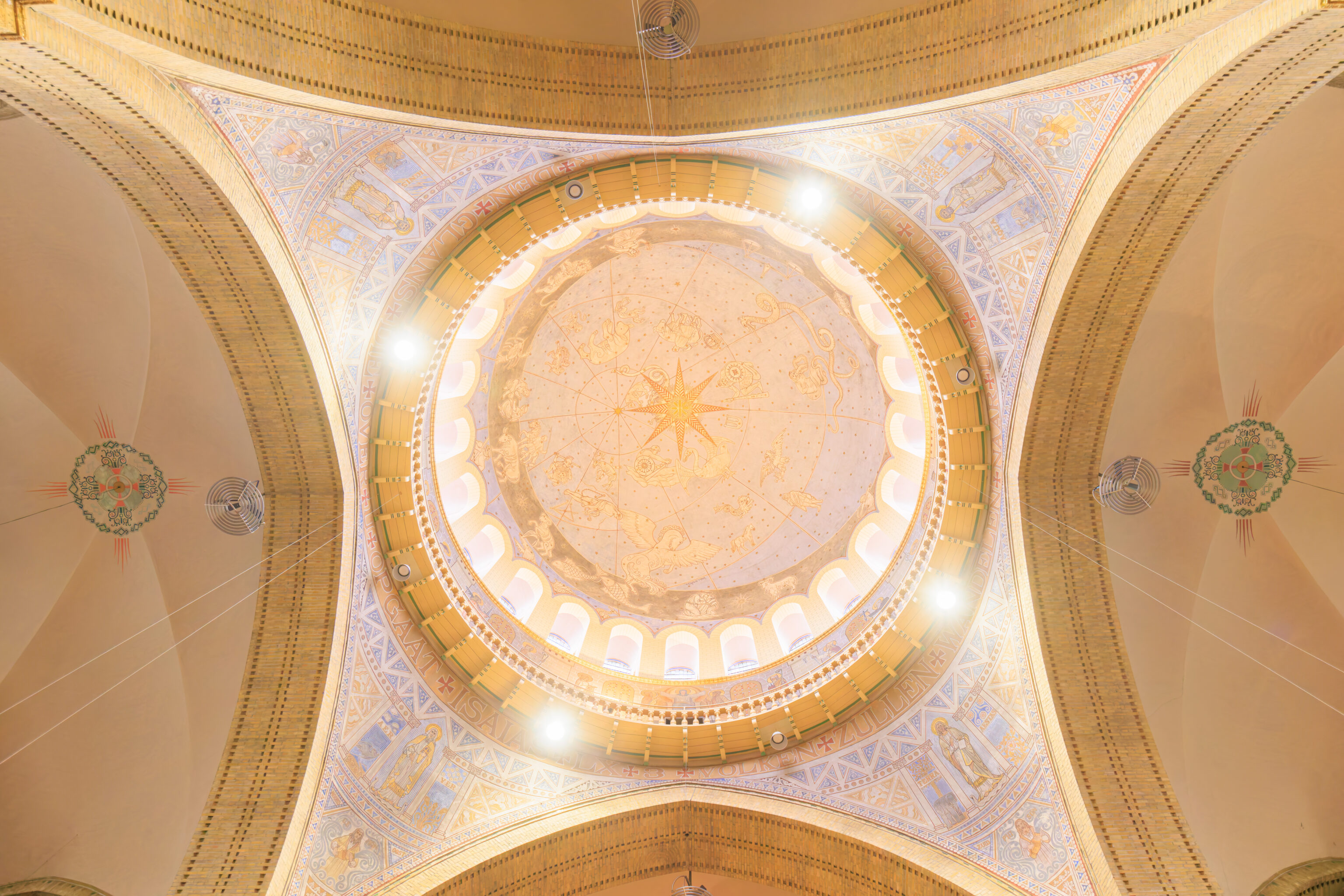
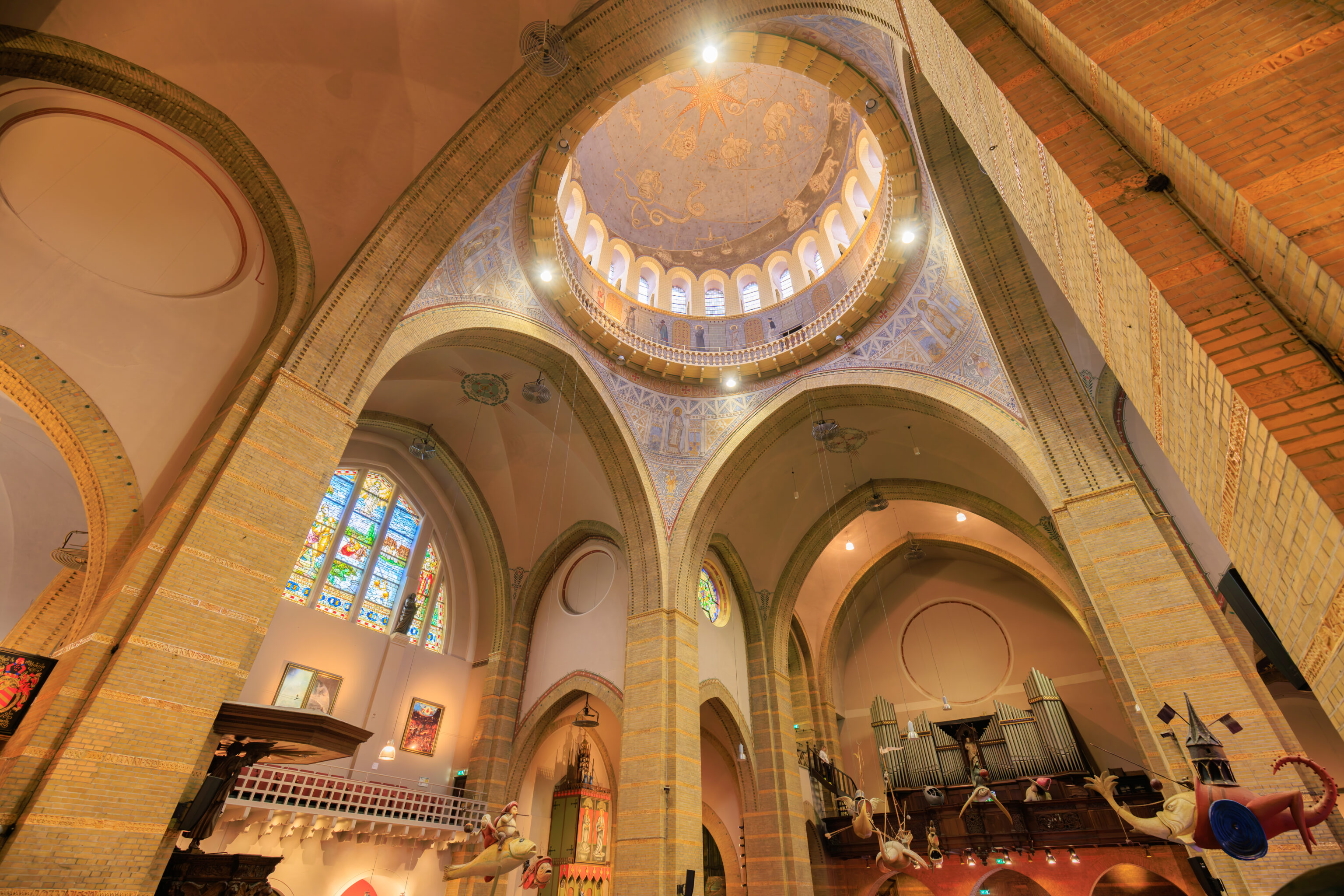
The inside of the museum still looks like a church, other than the weird paintings and sculptures of course!
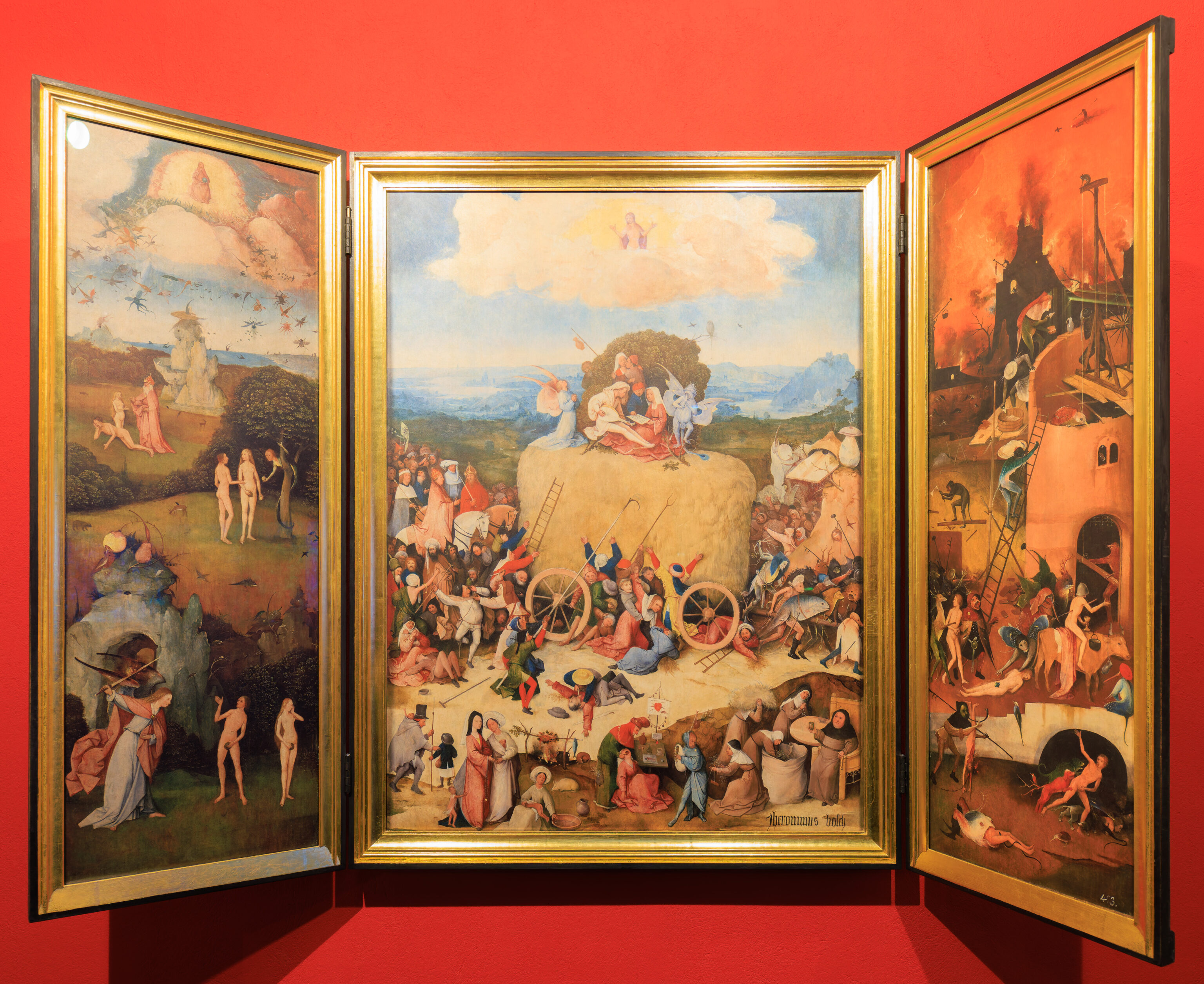
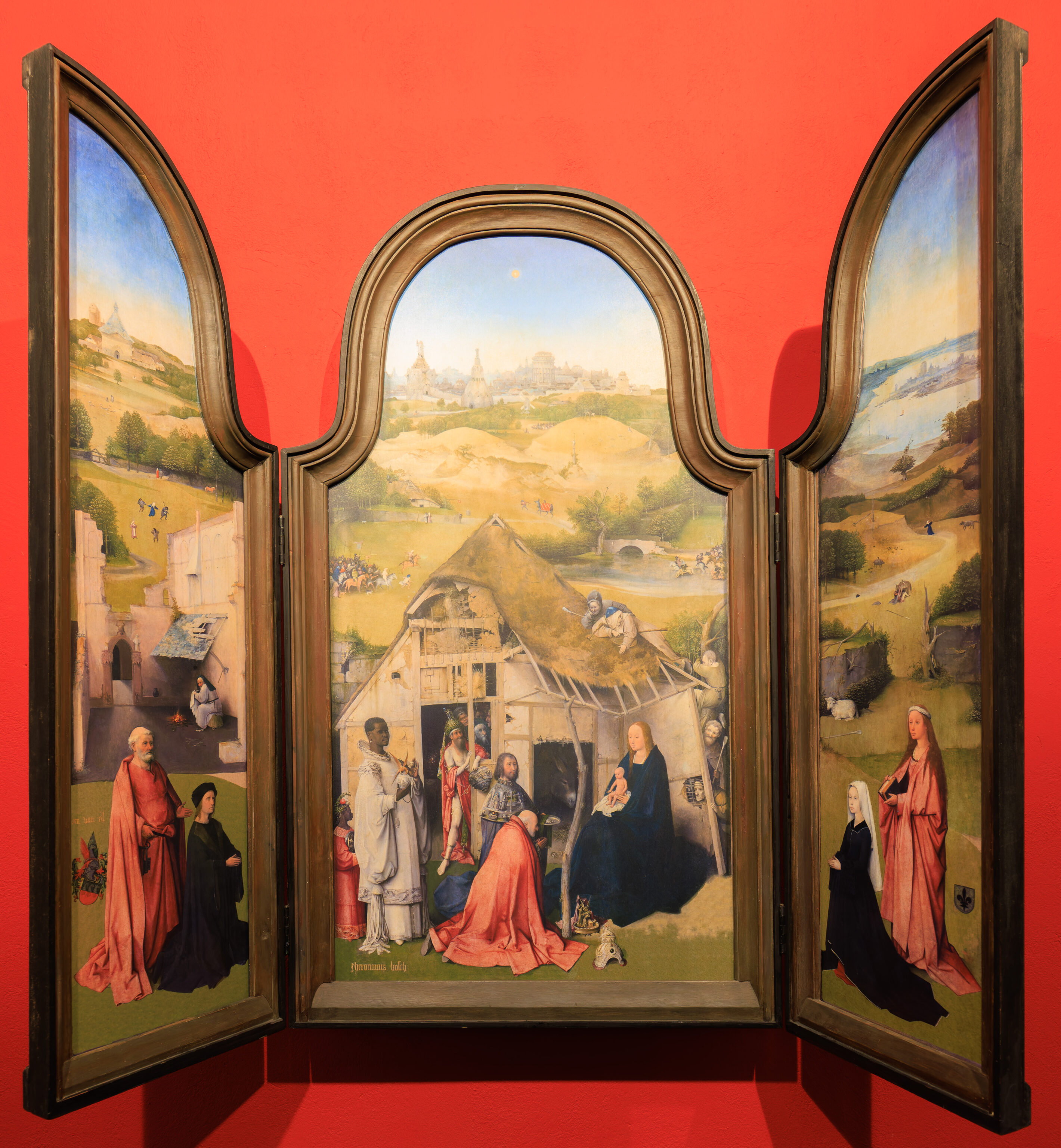
Some of his paintings are triptychs, or three paneled paintings, like these.
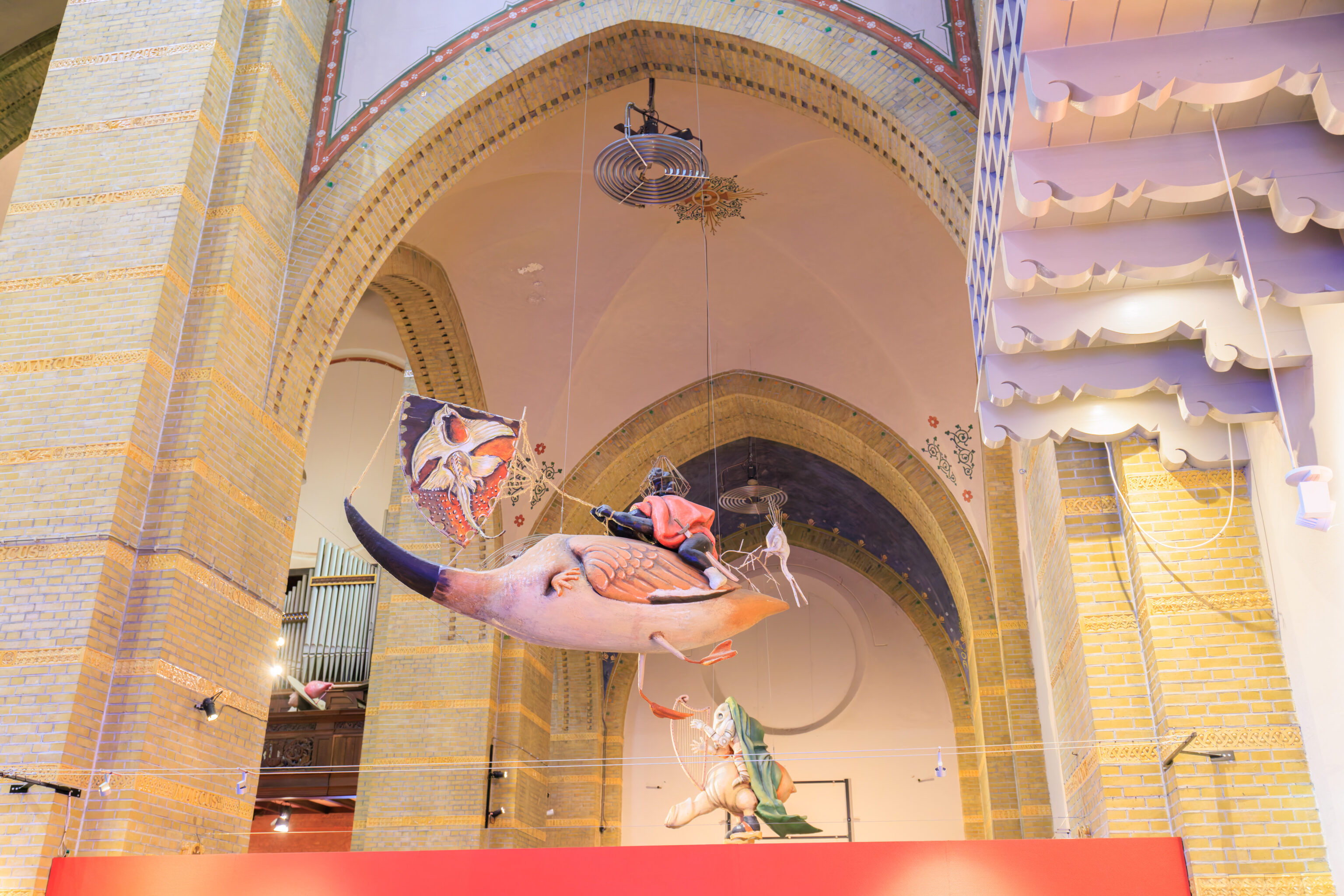
Much of his work defies explanation!
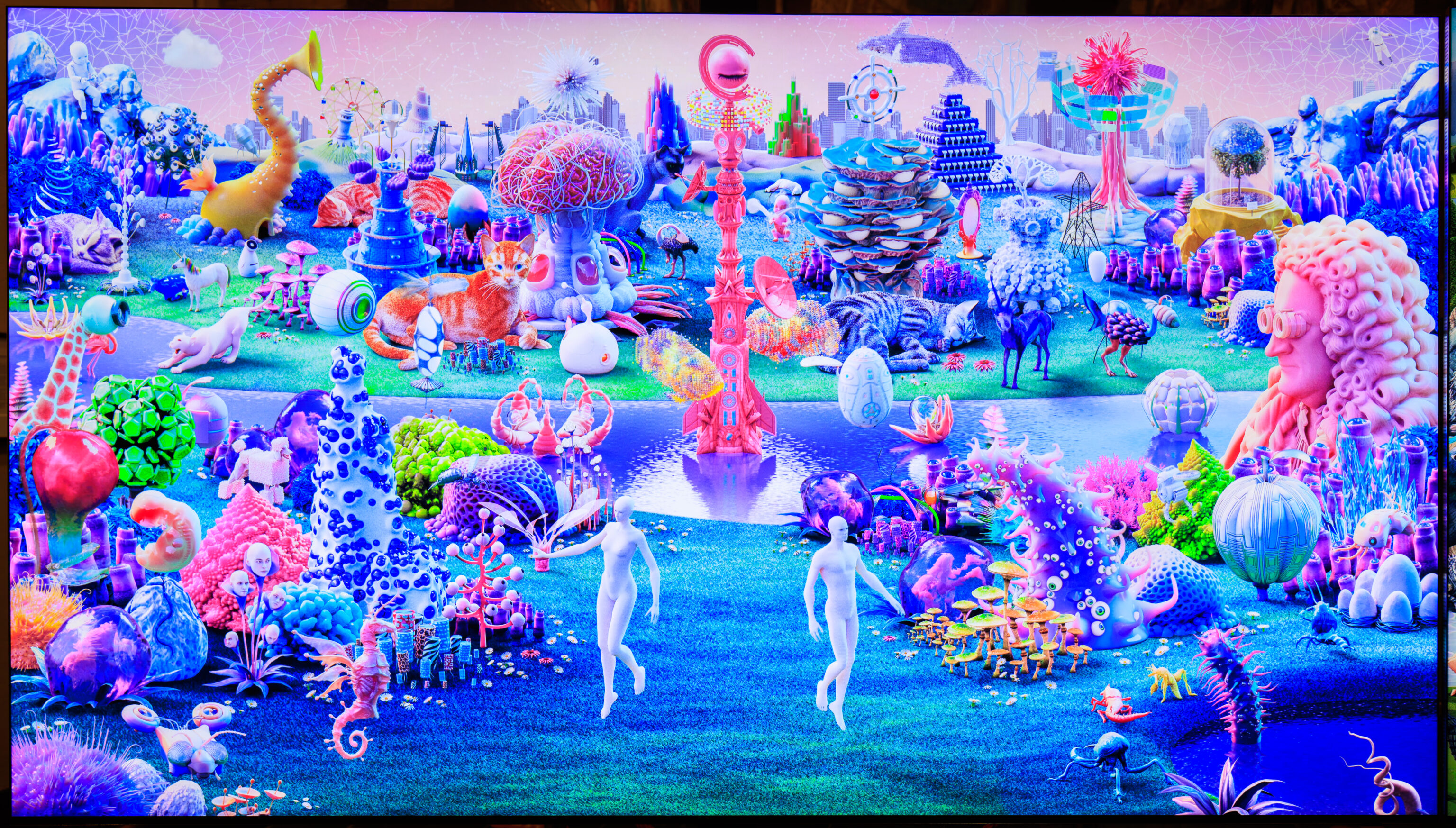
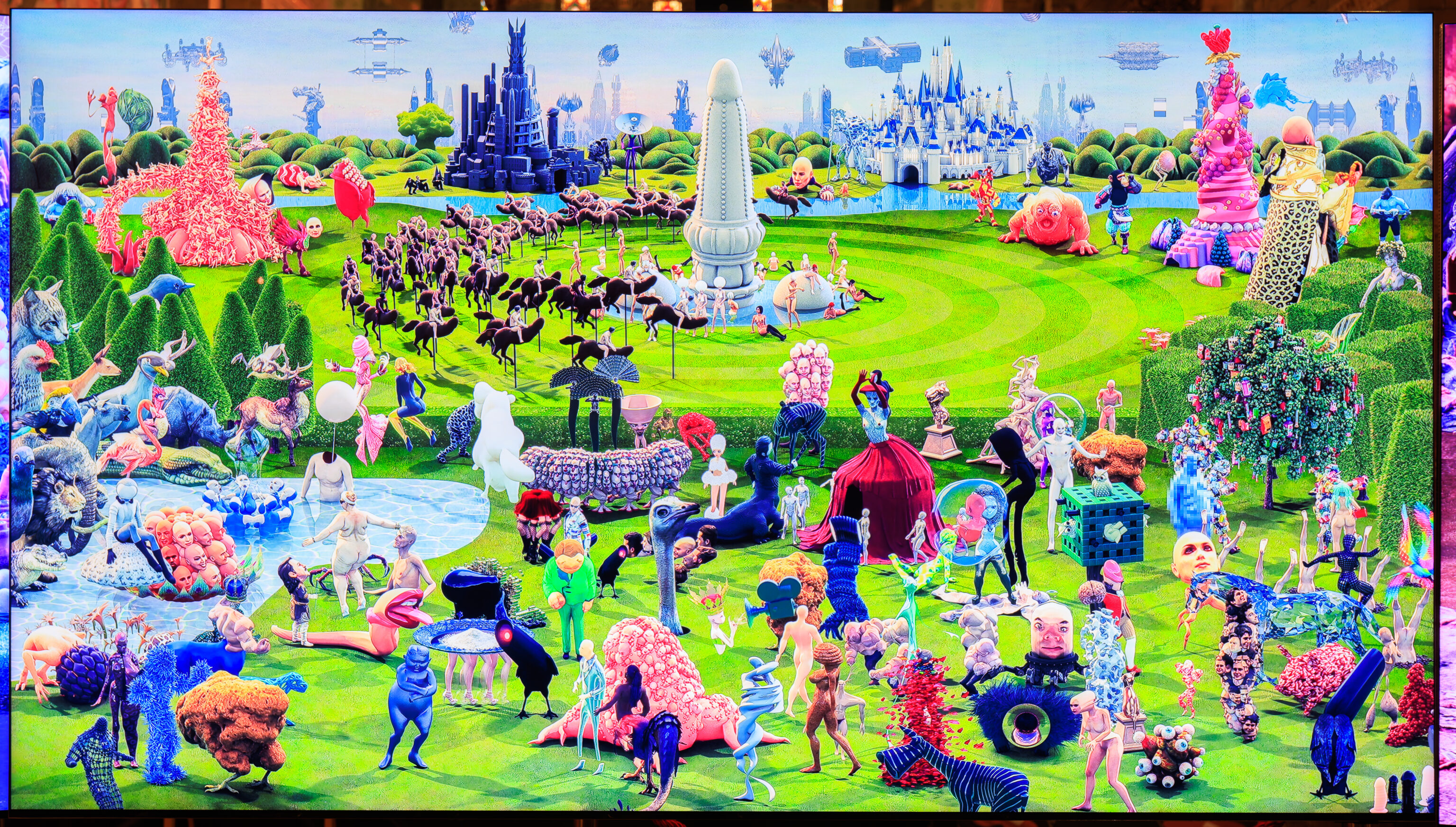
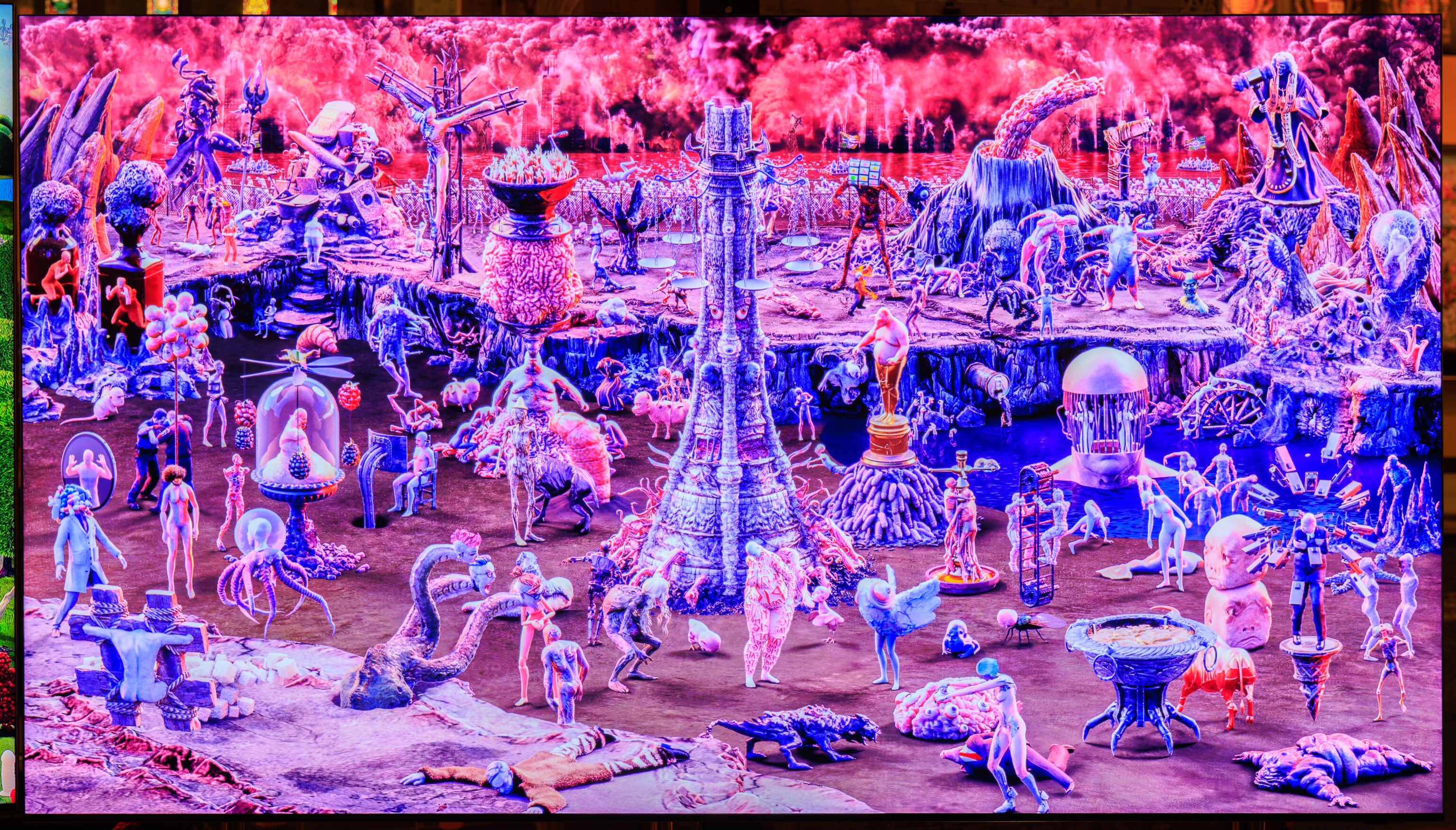
We came upon a three section digital exhibition entitled Speculum. A sign provides a description:
SPECULUM
Video installation, 2016-2019
Studio SMACK
This triptych is a 21st century, interpretation of Jheronimus Bosch' most famous work: the Garden of Earthly Delights. Like their late medieval predecessor, the artists of Studio SMACK have created a world that mirrors (the Latin word for mirror is speculum) the behavior of their contemporaries. In this irreal paradise, where people seem to have a great time together, they are in fact all falling prey to the temptations of consumerism and sexuality. On the right panel, depicting hell, their sins will be punished
We took short videos of each of the three displays. This one, on the left, seems to portray people falling pray to the temptations of consumerism.
The middle displays shows people falling pray to the temptations of sexuality.
Unfortunately, the display for the installation was operating at a different refresh rate compared to the other screens, which is causing a gradual blanking effect on this recording. It does not appear this when when viewed with the naked eye.
Finally, the right screen shows everyone being punished in hell.
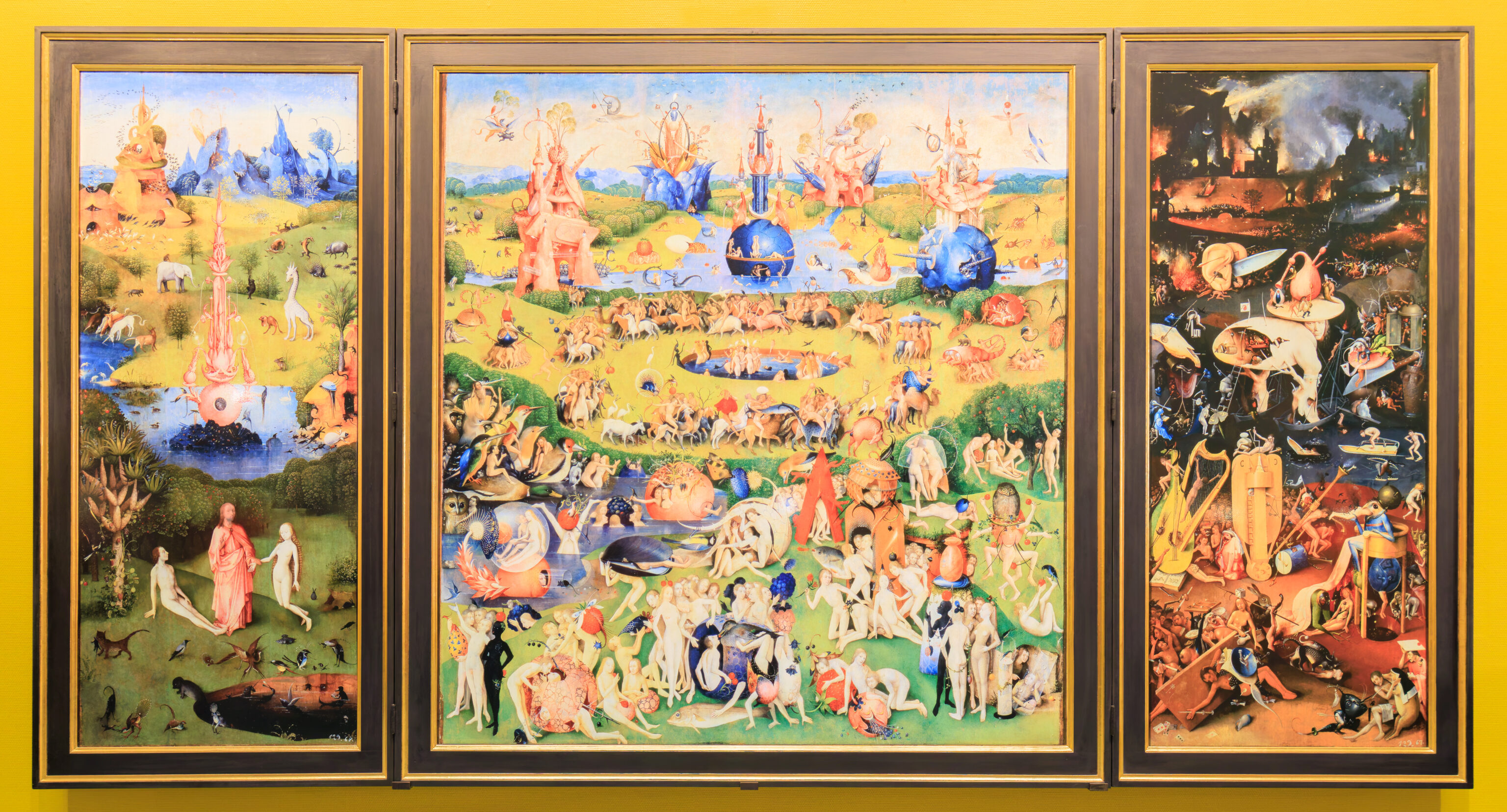
This is the actual painting, Tuin der lusten, the Garden of Earthly Delights, that the video exhibition is based upon. The fountain that we saw outside in front of the museum is in the middle of the left panel! The original is in Madrid at the Museo del Prado.
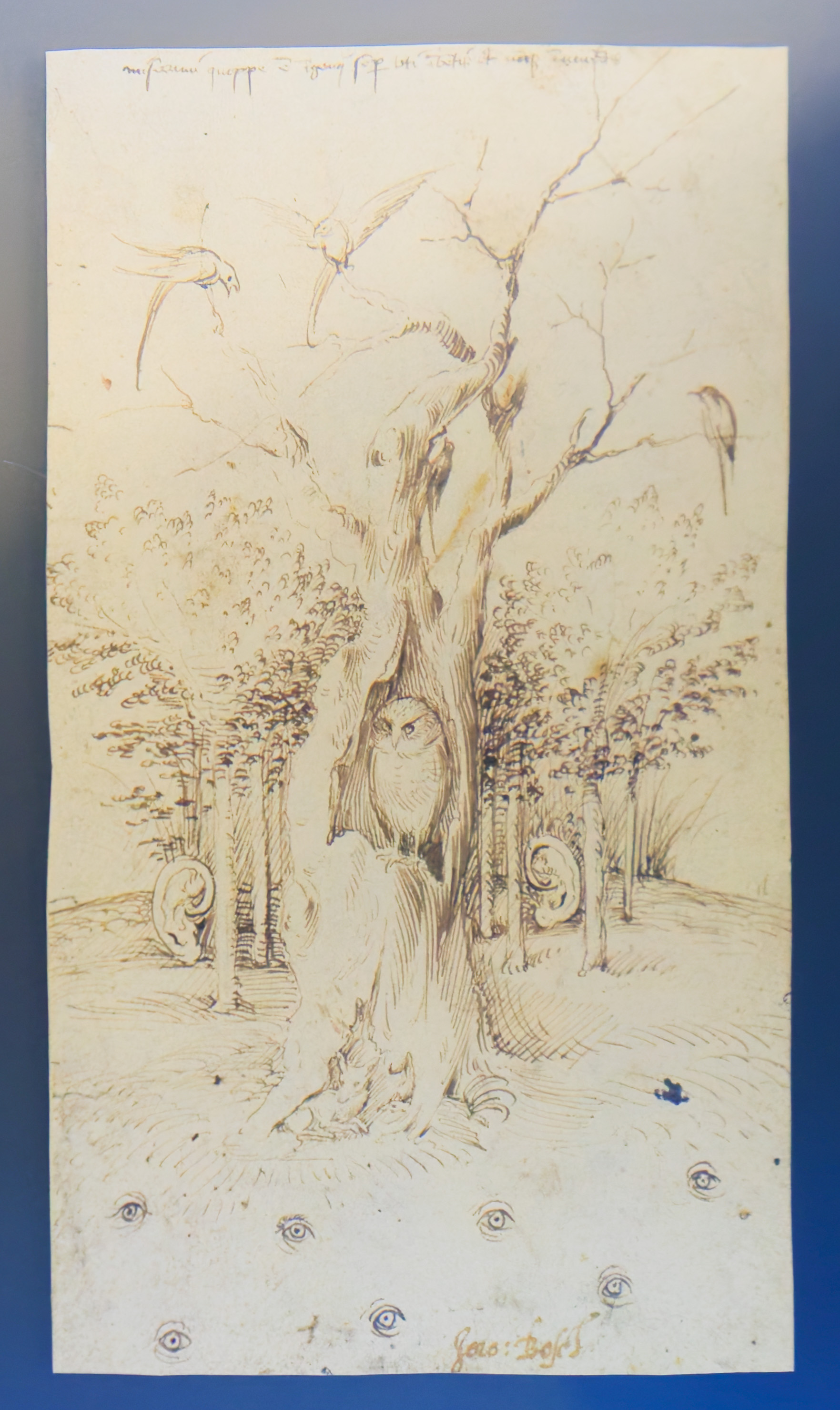
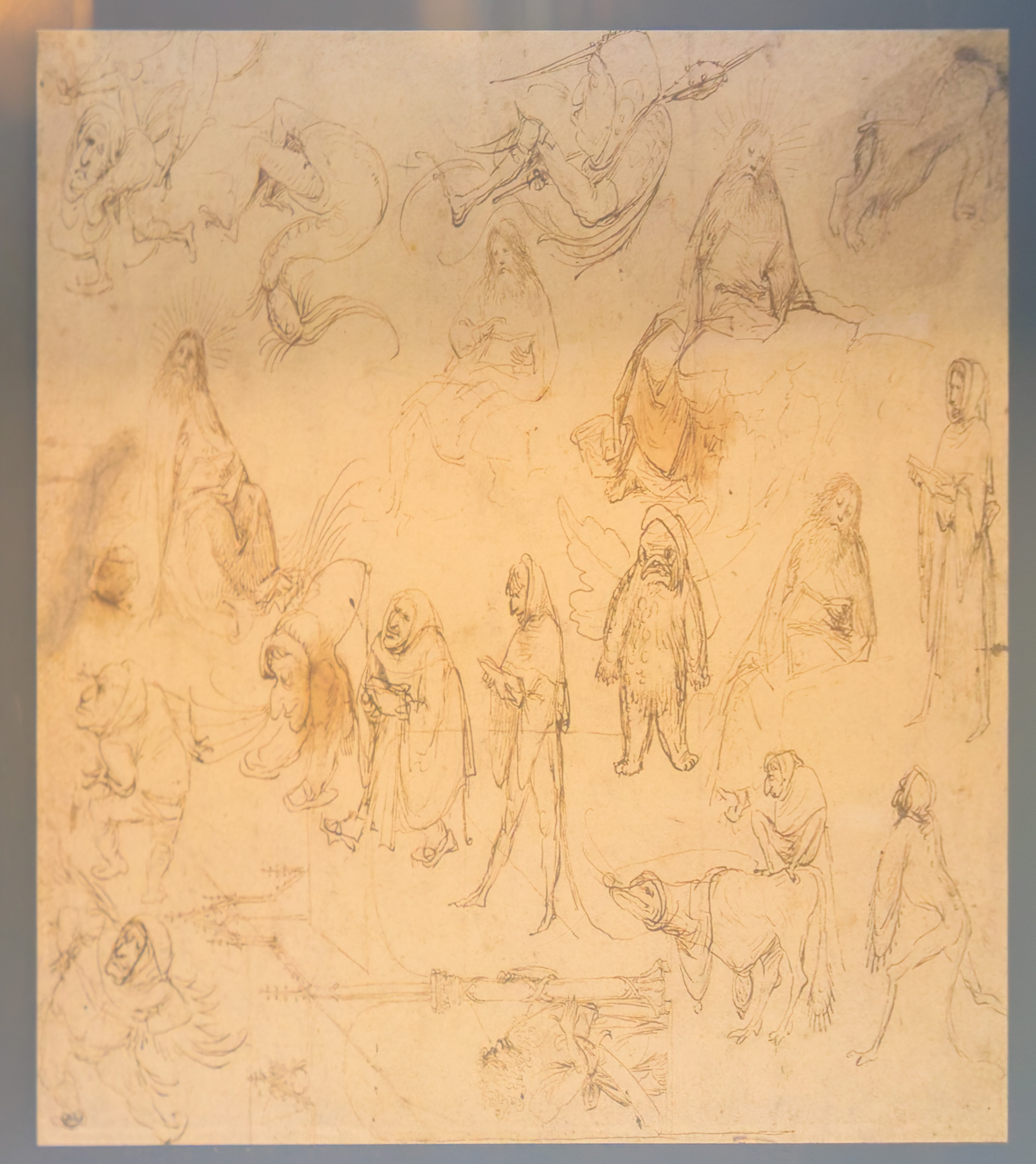
There is a section with sketches by Bosch. The original drawing on the left is in Berlin while the one on the right is in Paris in the Louvre.
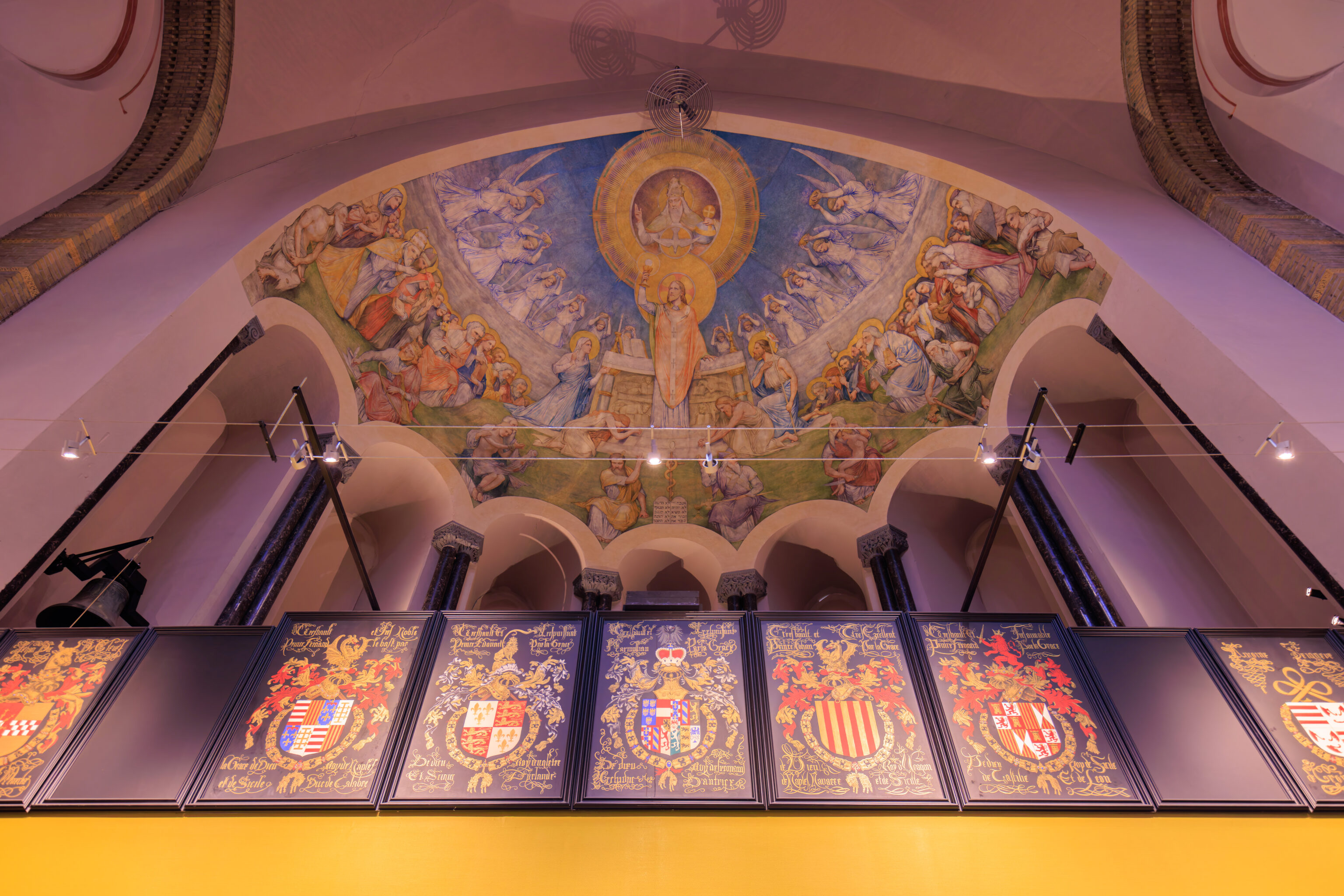
This view seems a bit like visiting a regular church!
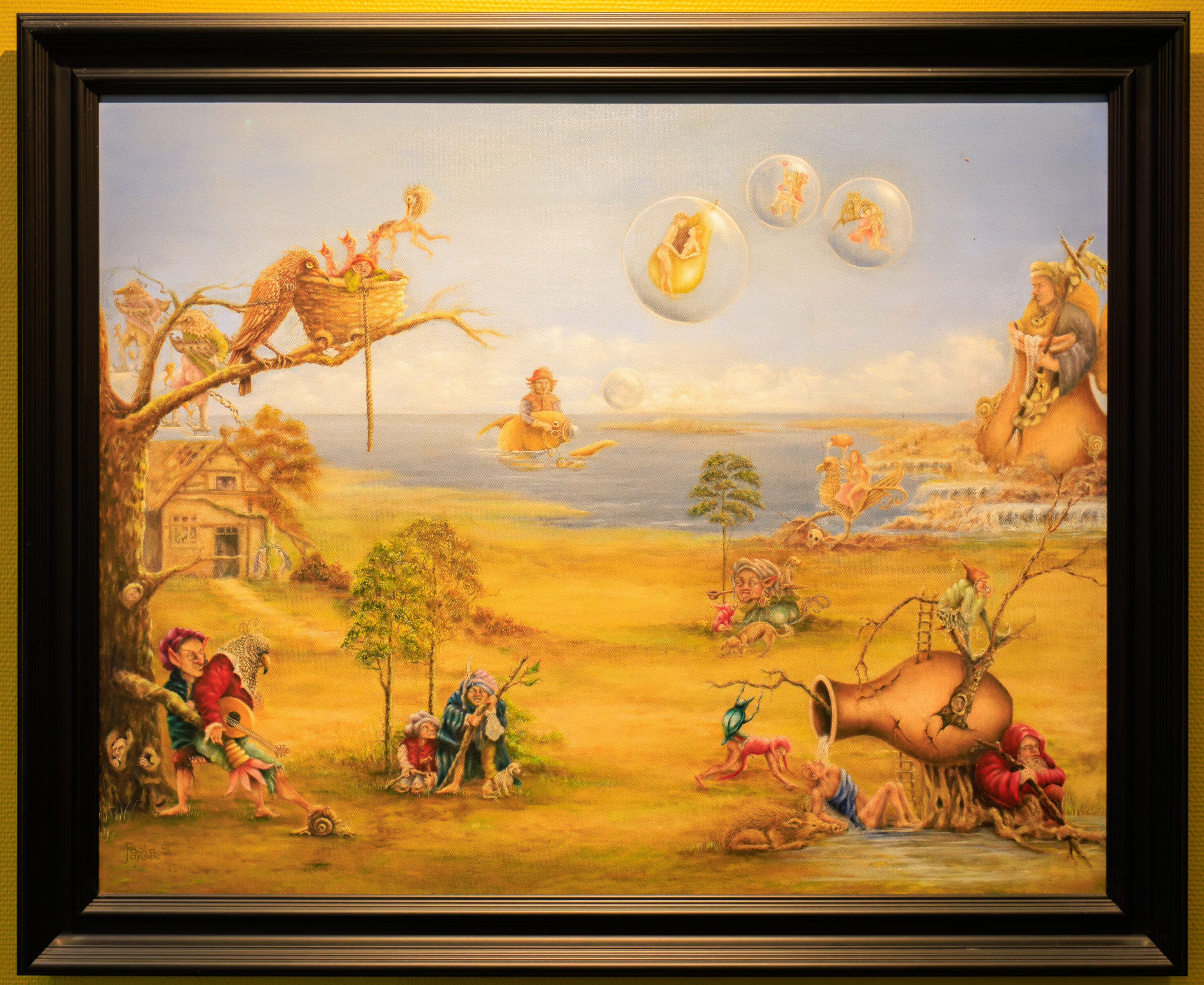
This painting, by Paola Schmitz-Jansen, is inspired by Bosch’s Garden of Earthly Delights. Bosch is depicted in the background bringing a fish to the surface.
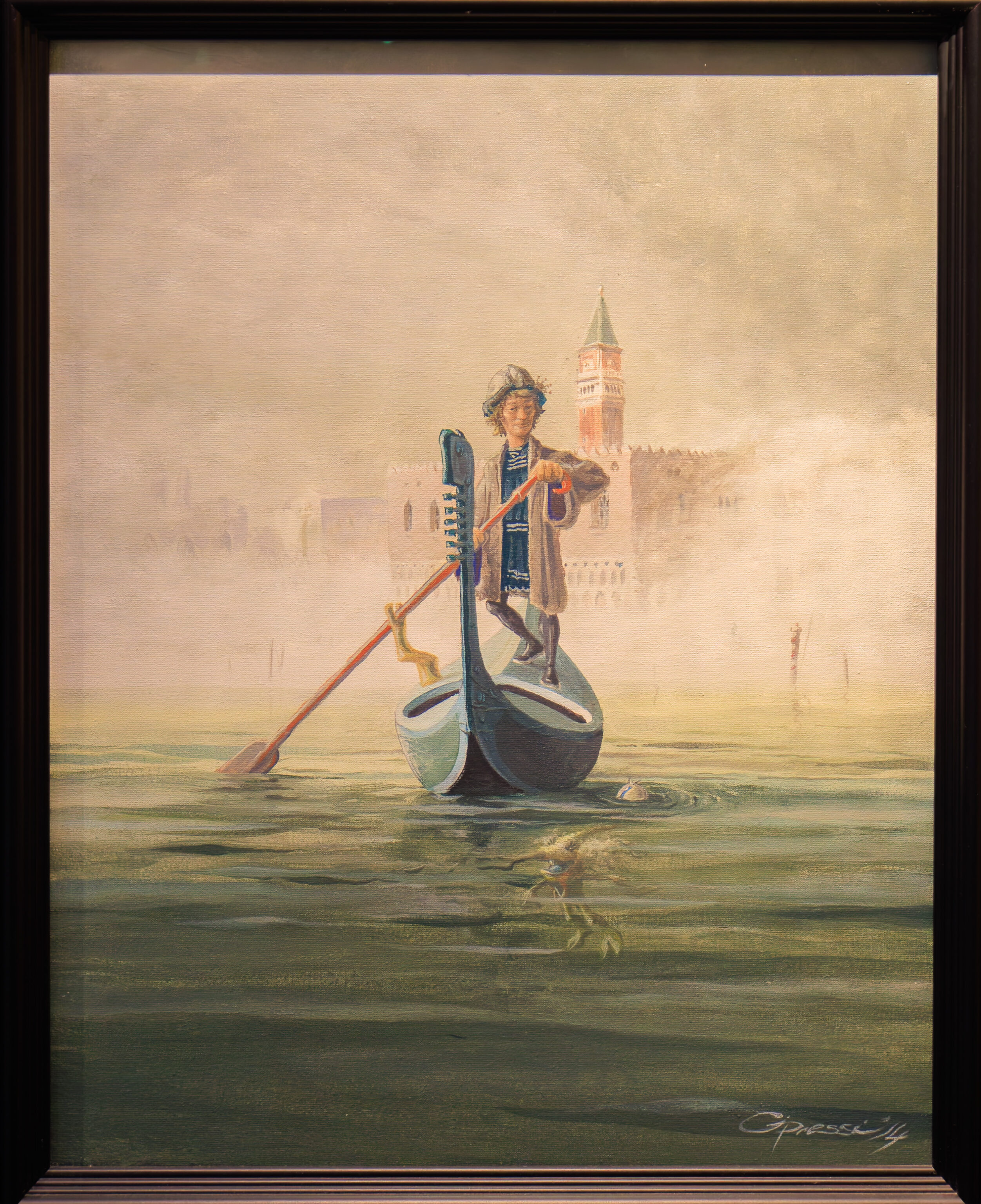
This painting was created by Giuseppi Cipressi and shows Bosch in Venice. It seems pretty normal until you see the little devil in the water below the boat, which is supposed to hint at Bosch’s weird world!
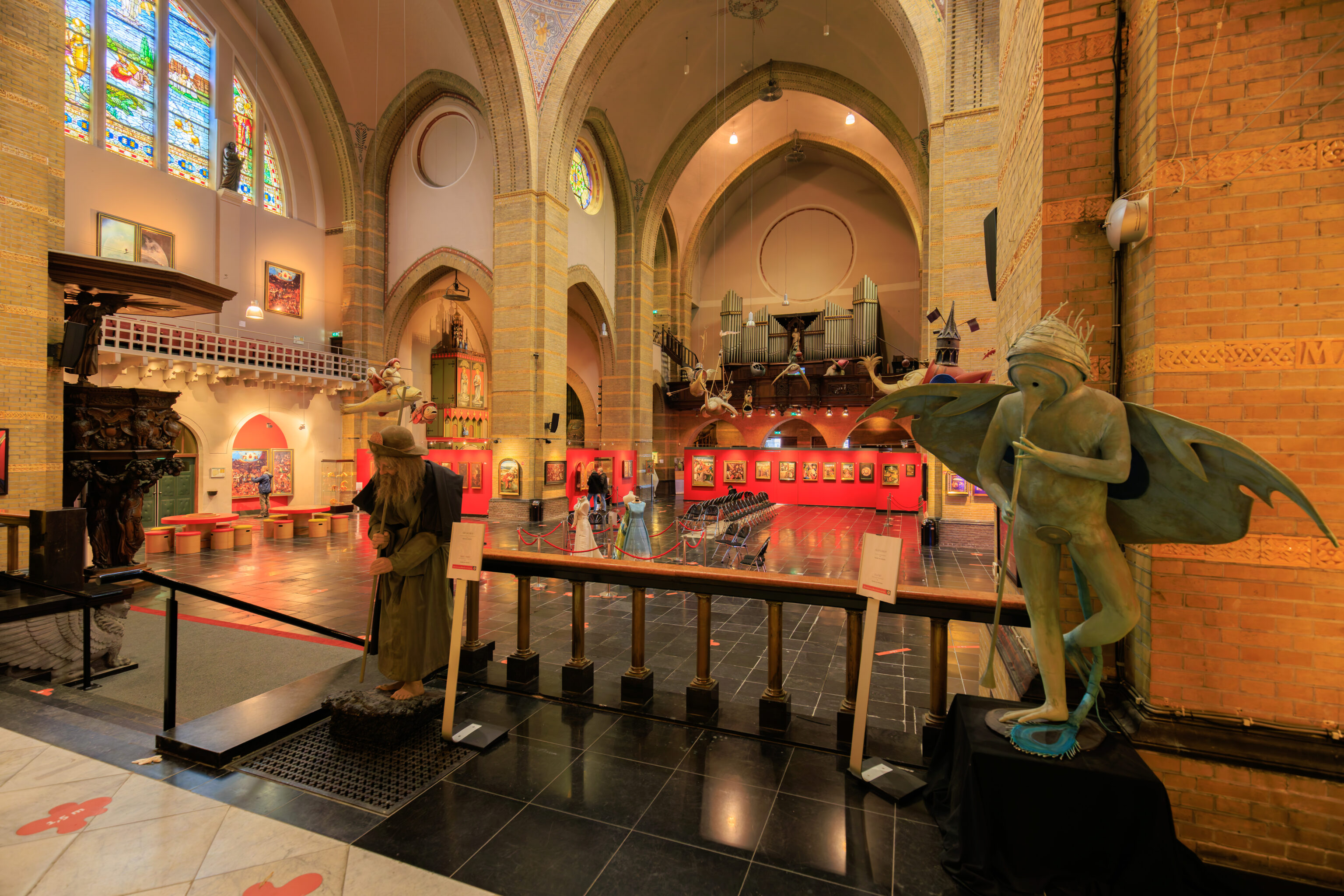
Quite a mix of church and art! Around here, we noticed stairs going down. It wasn’t really labelled but it wasn’t barricaded either. So, we went down to take a look.
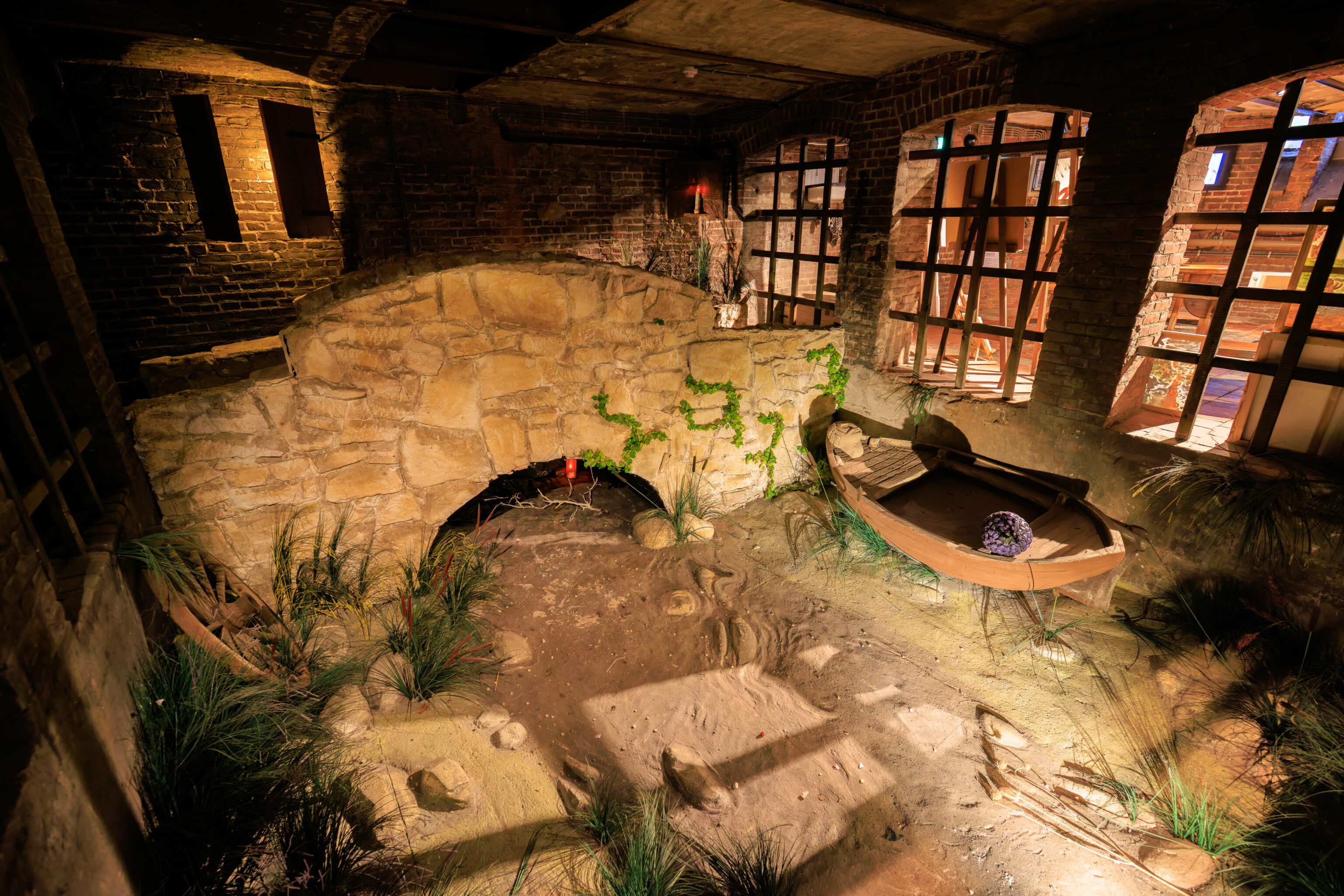
We passed through an odd little space…
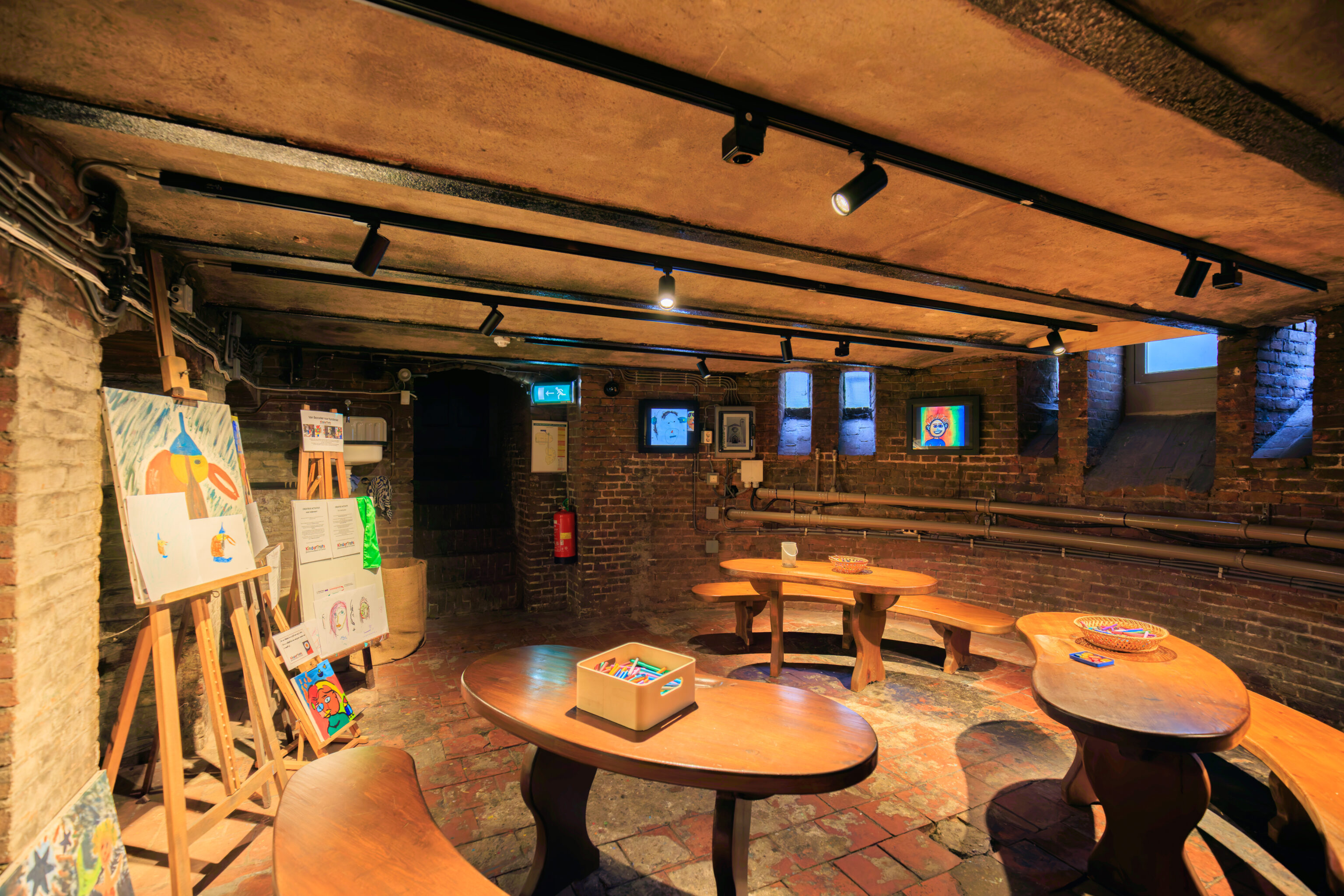
The next room was a children’s’ activity area.
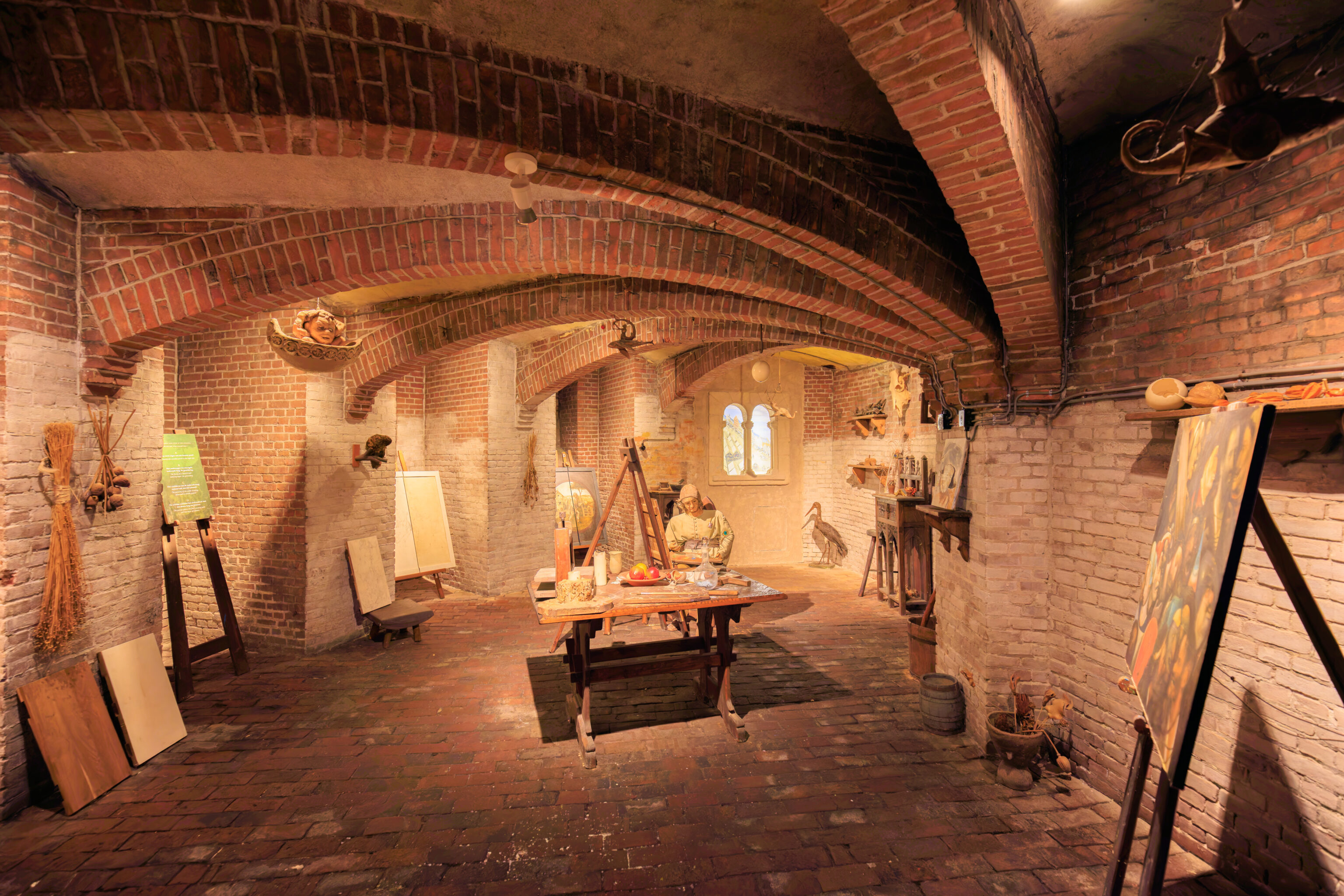
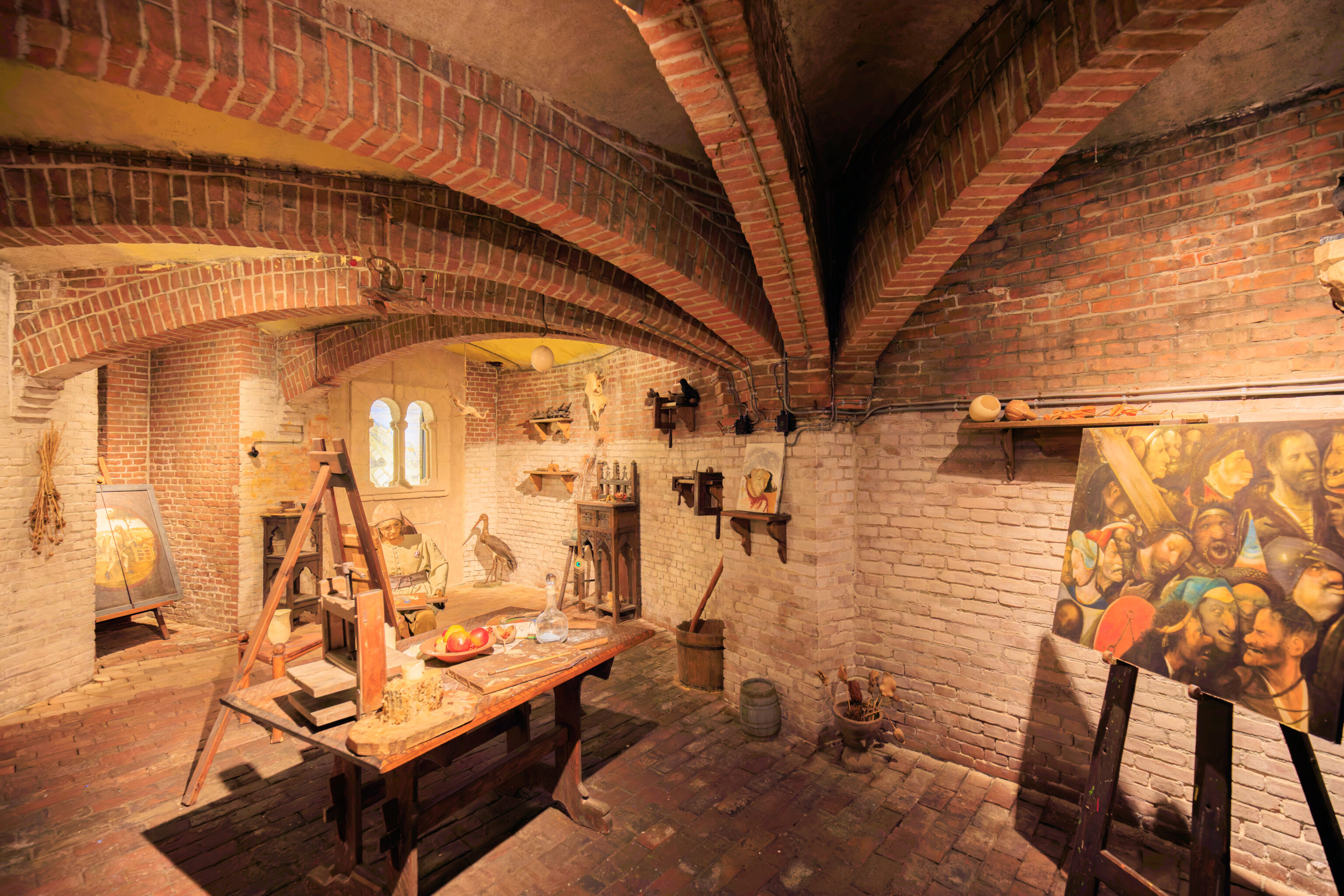
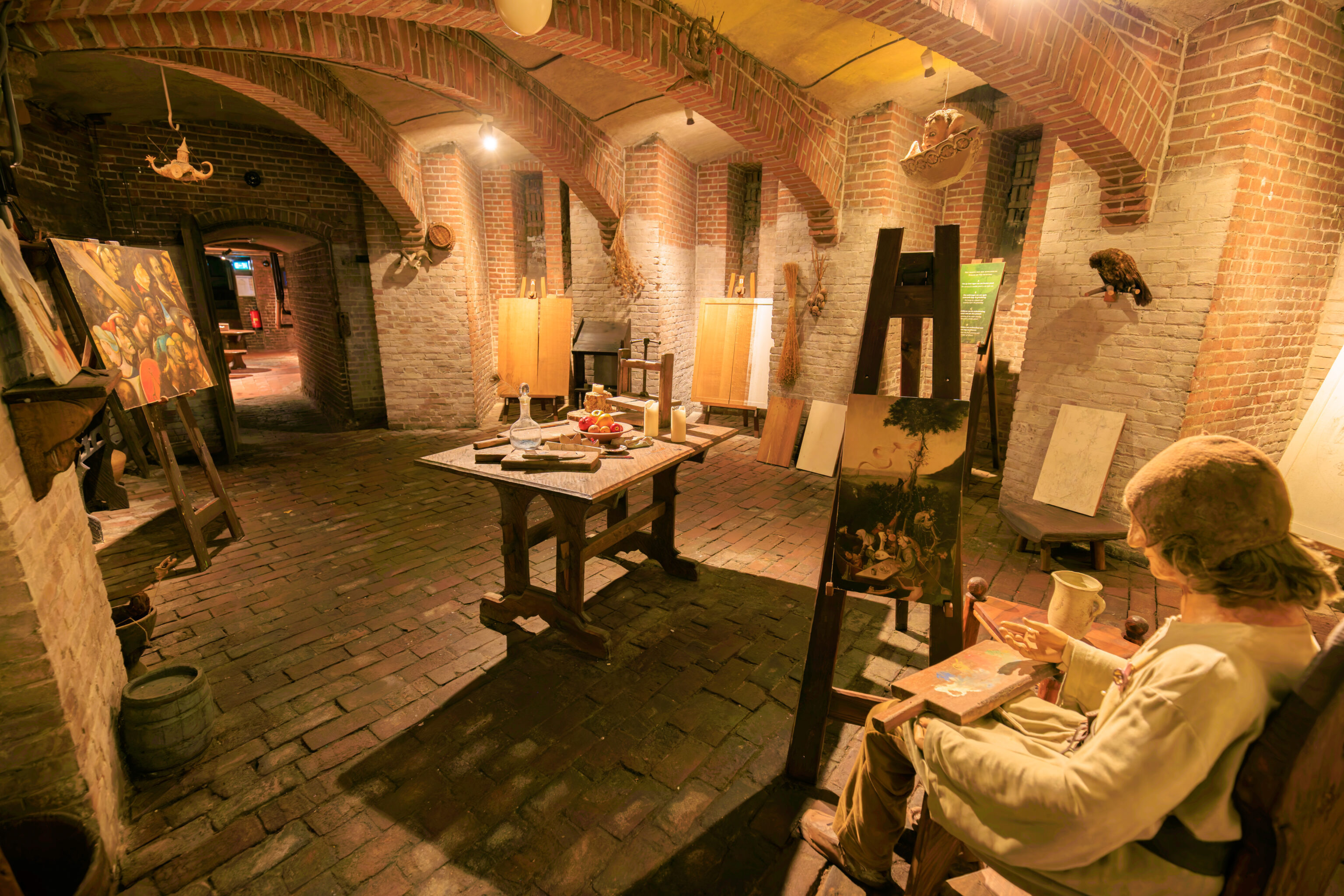
The final room was setup like a workshop and included Bosch himself! It shows the steps in his painting process:
A. The sawing of a wooden panel in the right size.
B. The fixing of a smooth and isolating layer: the grounding.
C. The painting of the under drawing, often with a slender pencil.
D. The painter paints the final painting with one thin layer of colours.
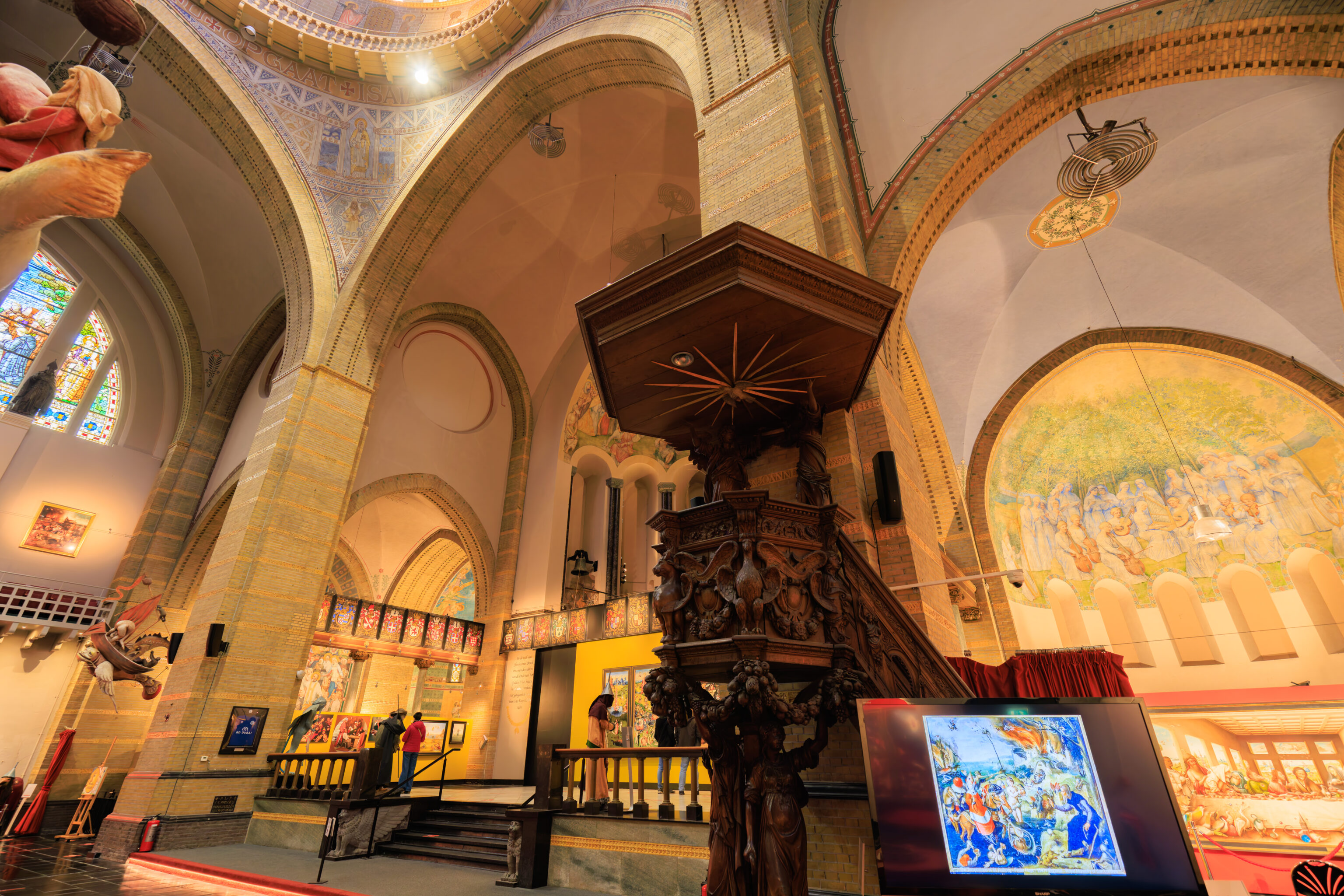
We headed back upstairs, taking a closer look at the pulpit as we walked by.
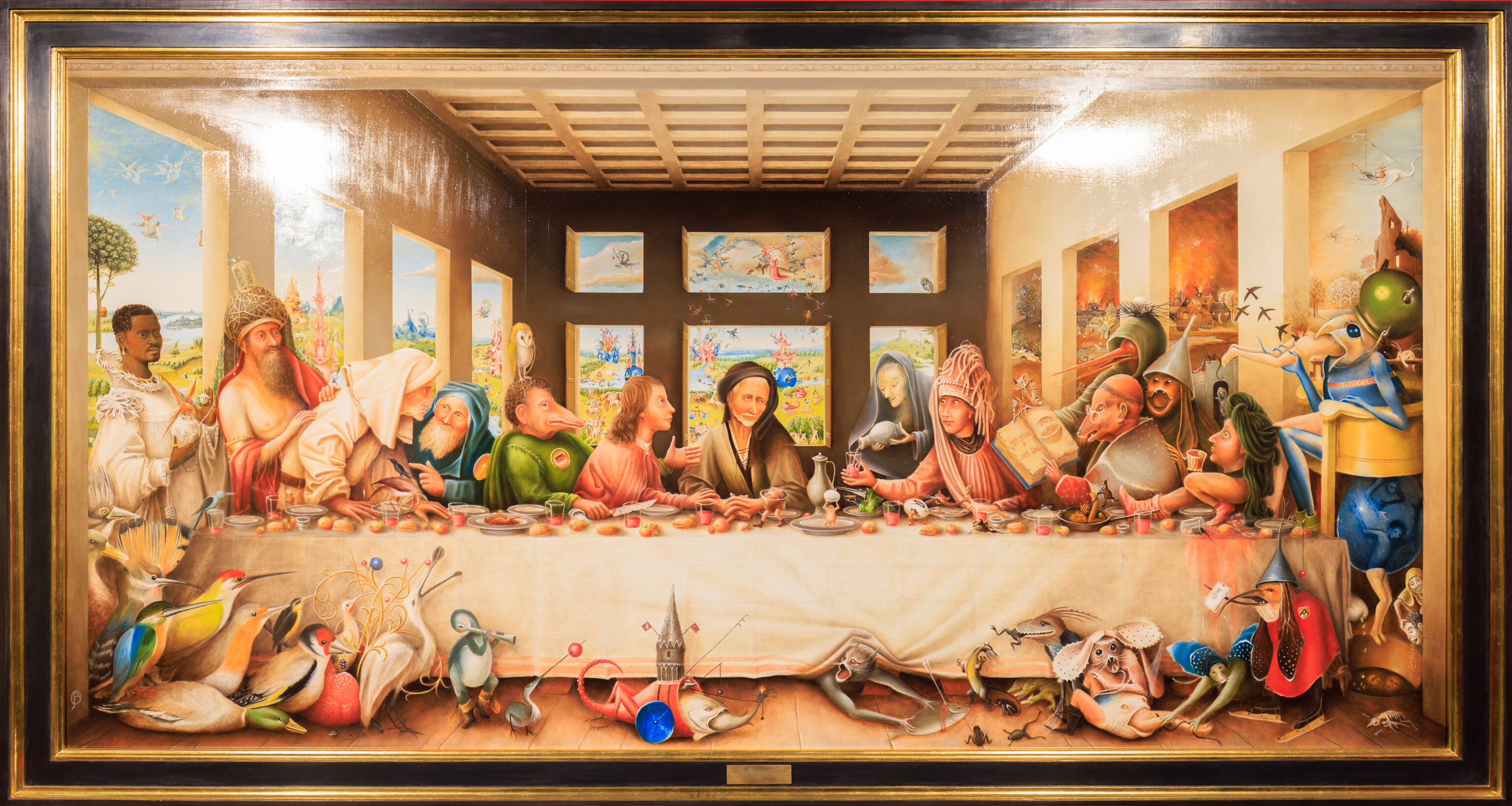
This painting by Boris van de Grint in 2023 depicts Leonardo da Vinci’s Last Supper, but with Bosch and his creations.
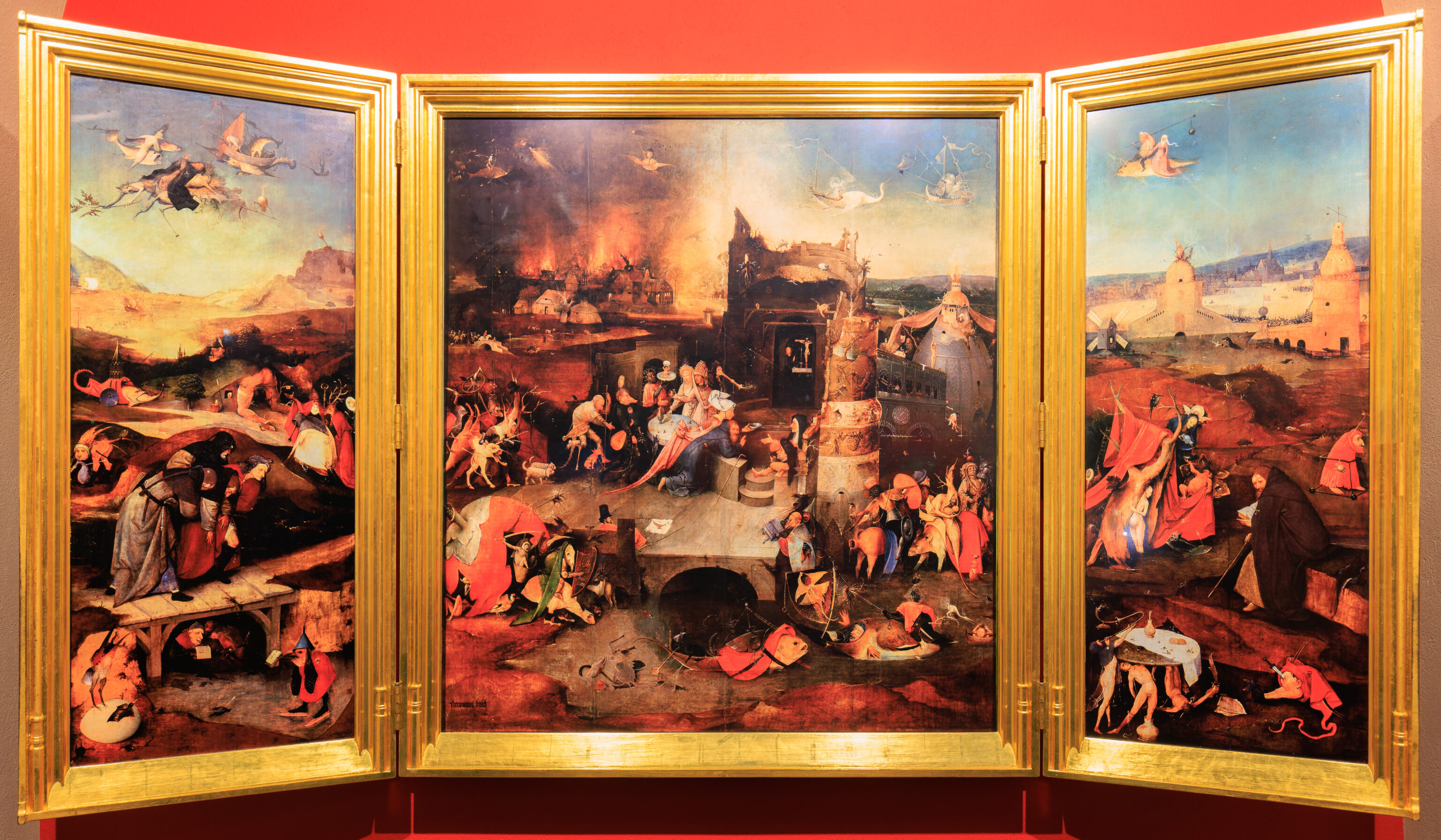
This triptych is Bosch’s Temptation of Saint Anthony, who was a common subject for Bosch. The museum guide describes these three panels as depicting the trials of St. Anthony from left to right, showing physical violence, mockery and fear, and temptation. The original is in Lisbon, Portugal.
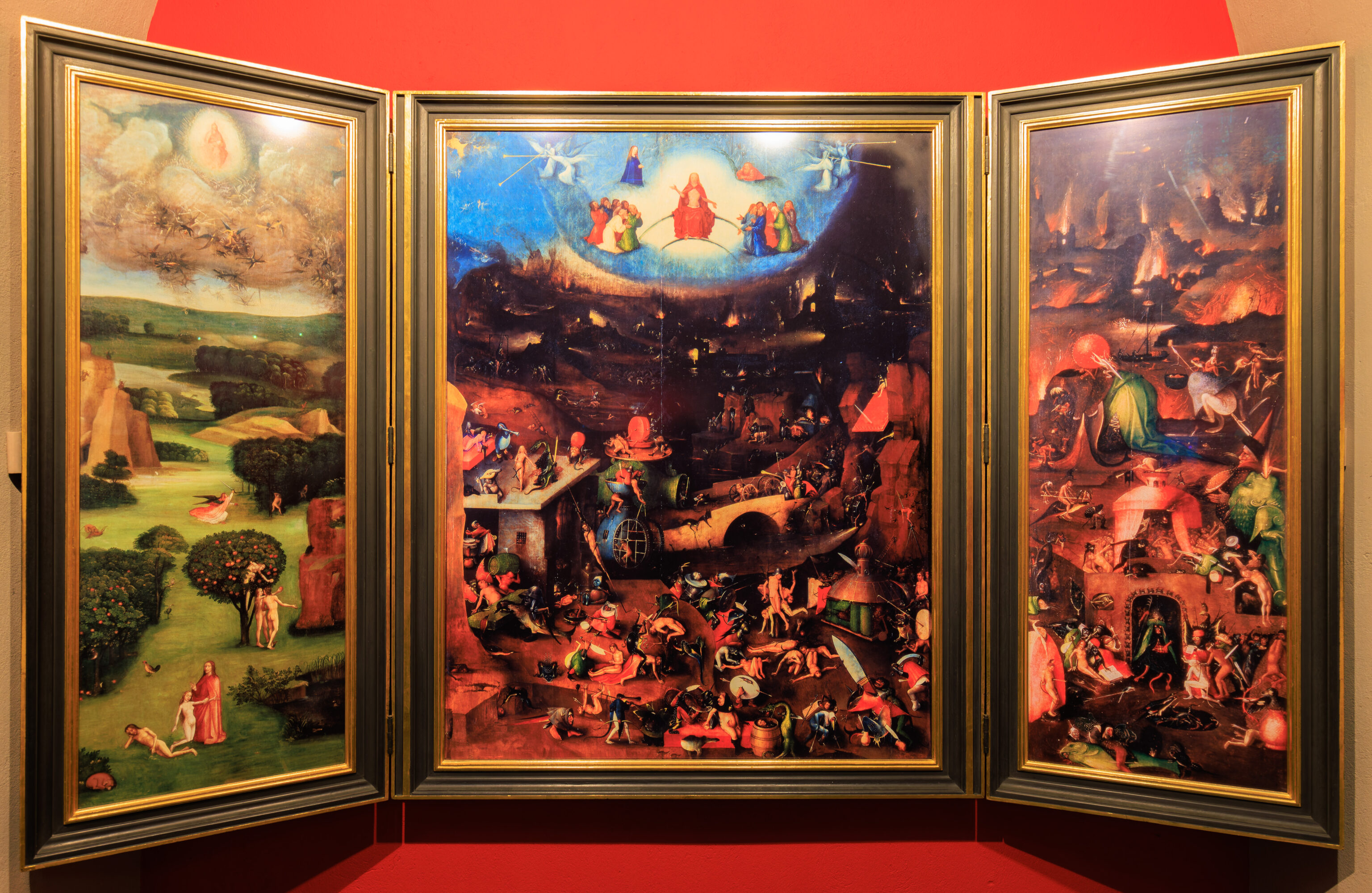
This next triptych is the Last Judgment, with the original in Vienna, Austria. The upper left shows a few being taken to heaven while everyone else is going to hell.
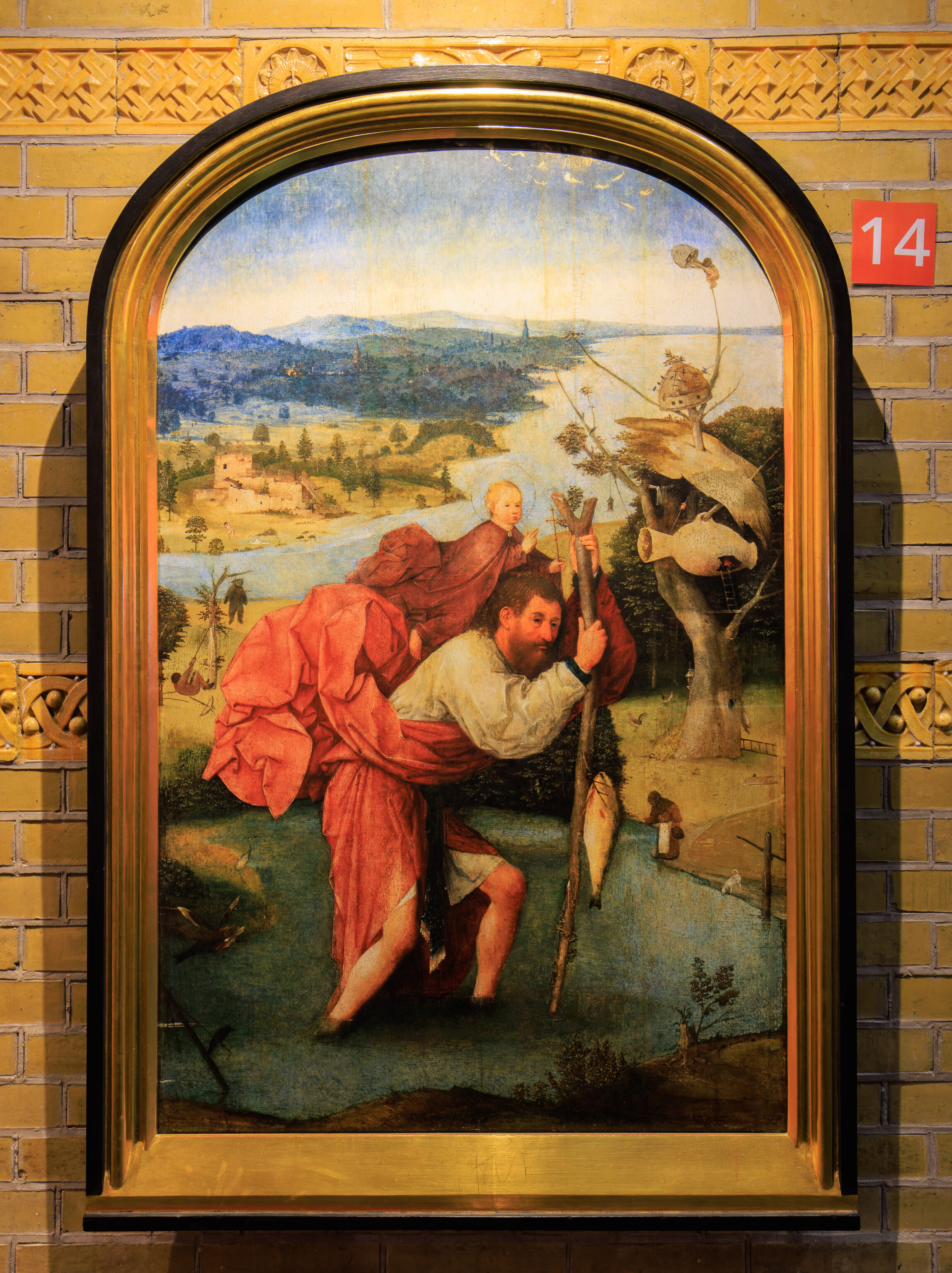
This painting depicts St. Christopher with many temptations to be resisted. The original is here in the Netherlands but in Rotterdam.
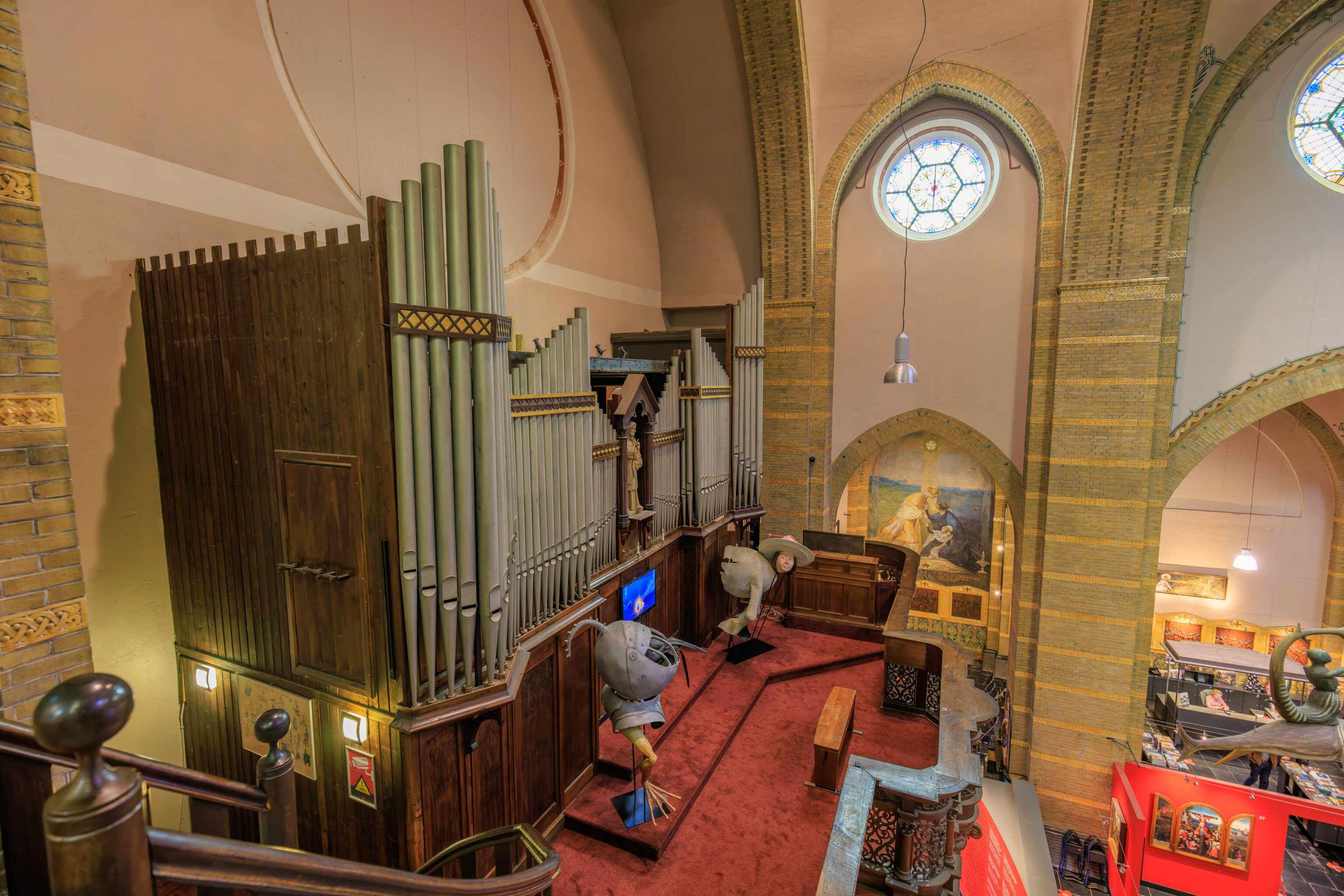
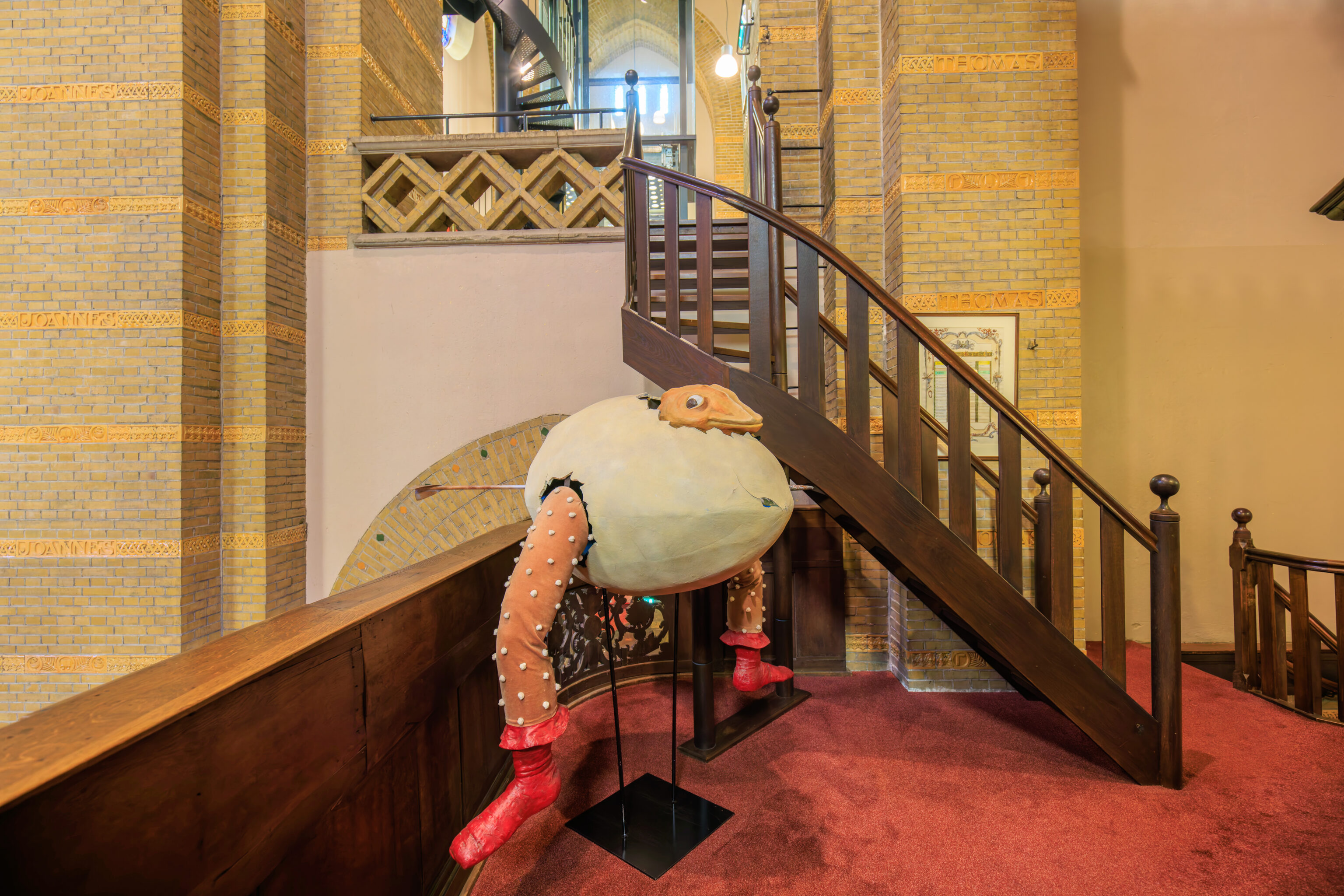
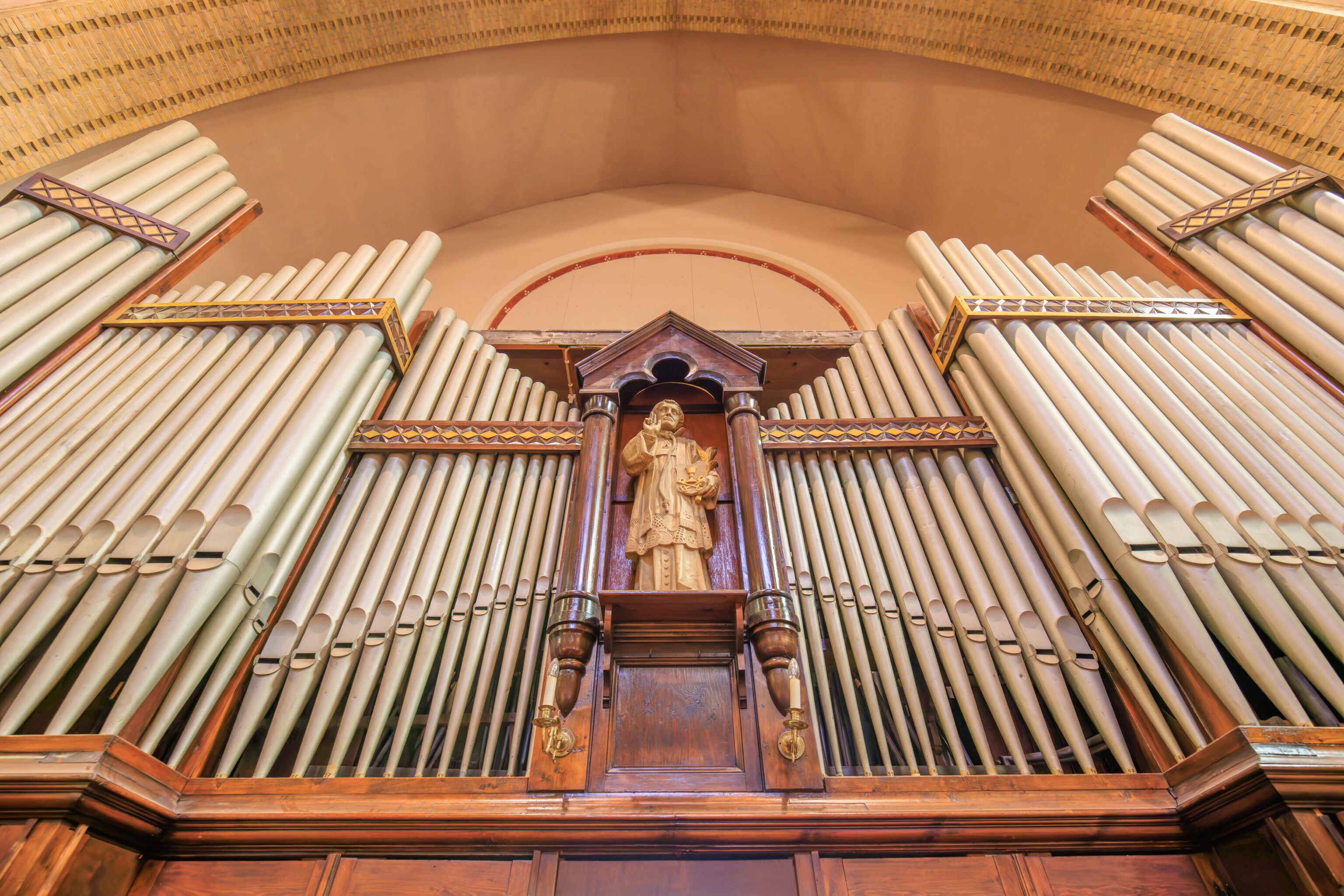
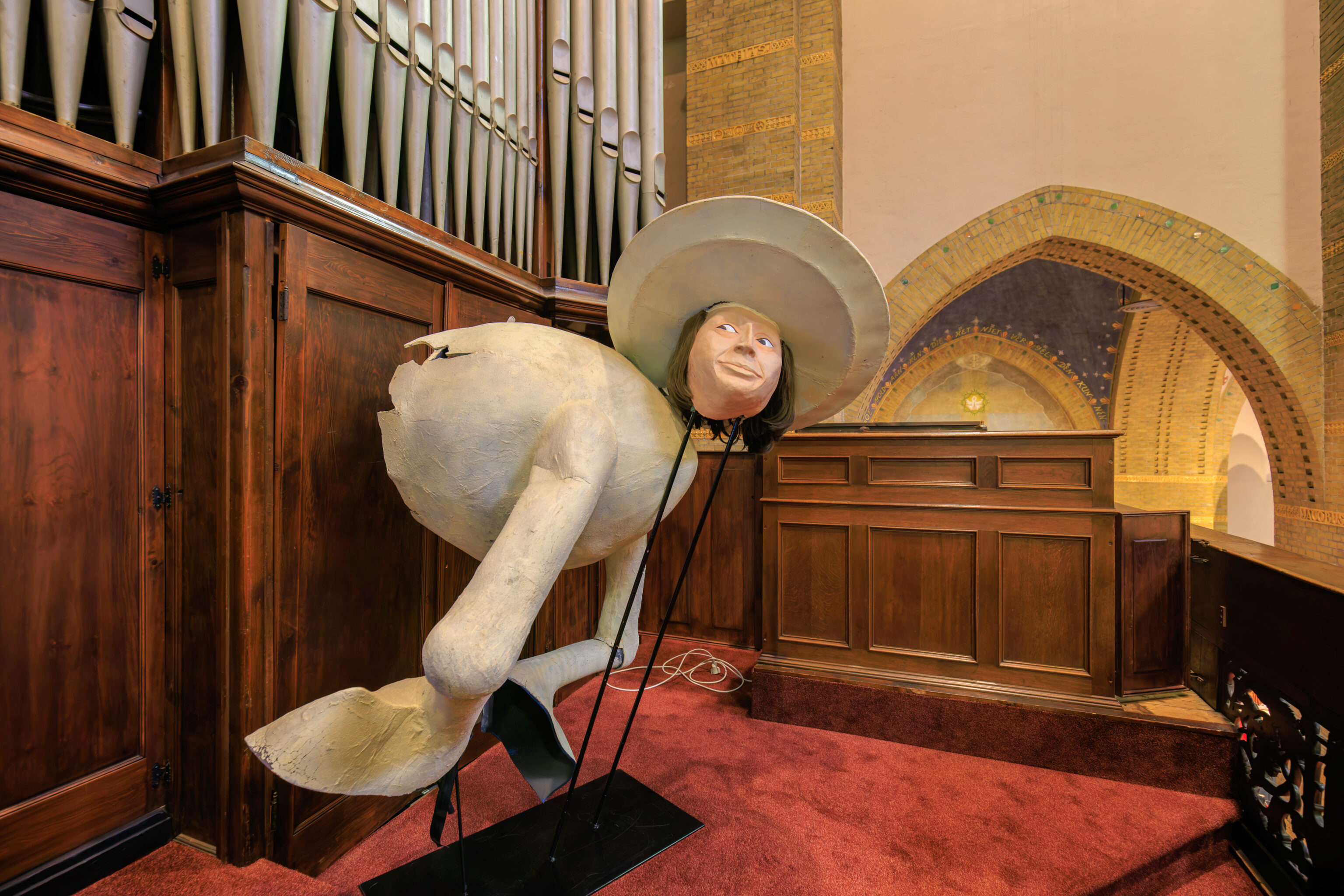
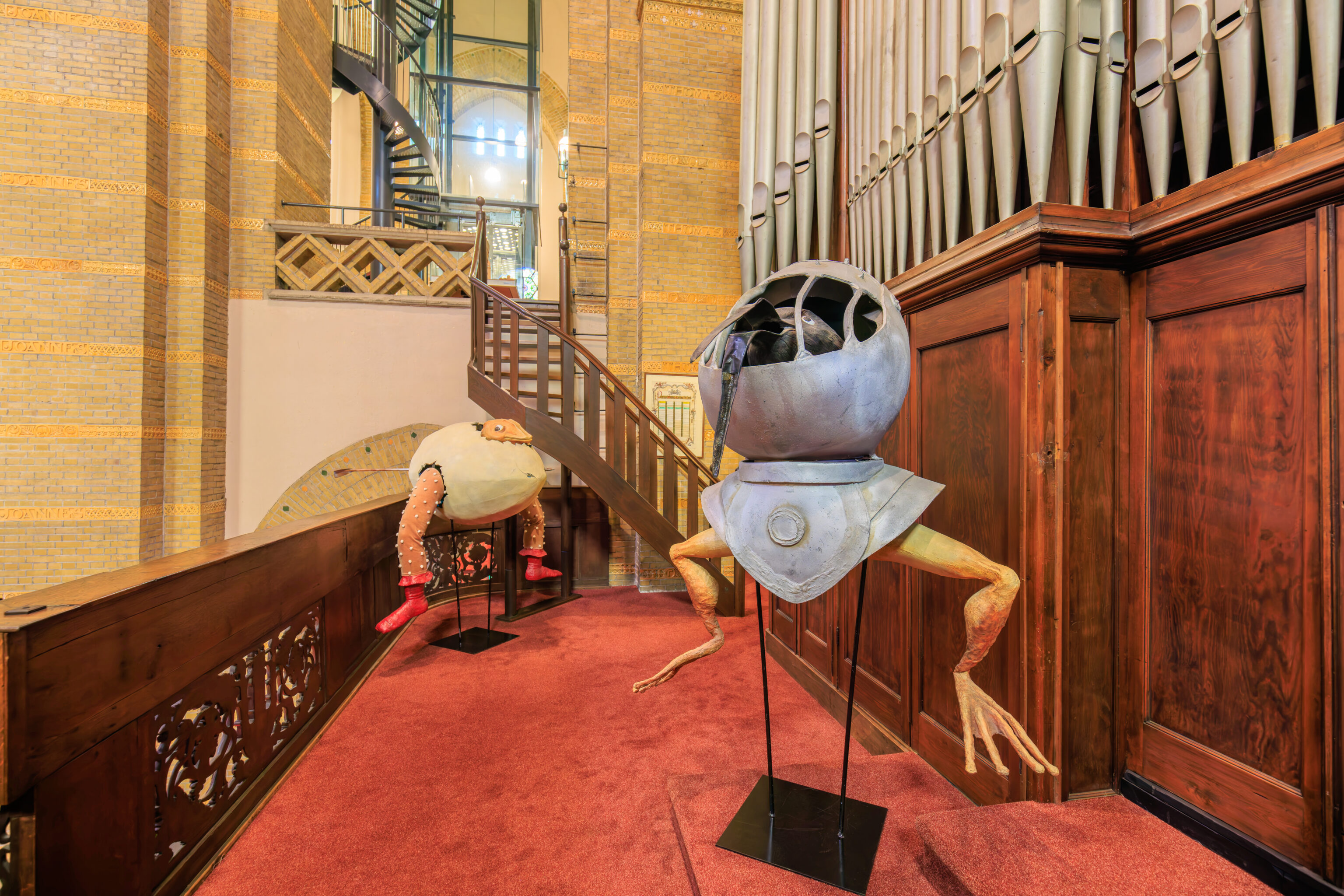
We realized that it is possible to up to the organ. So, of course, we went to take a look. The organ looks like a pretty standard big church organ. Everything else, though, is Bosch!
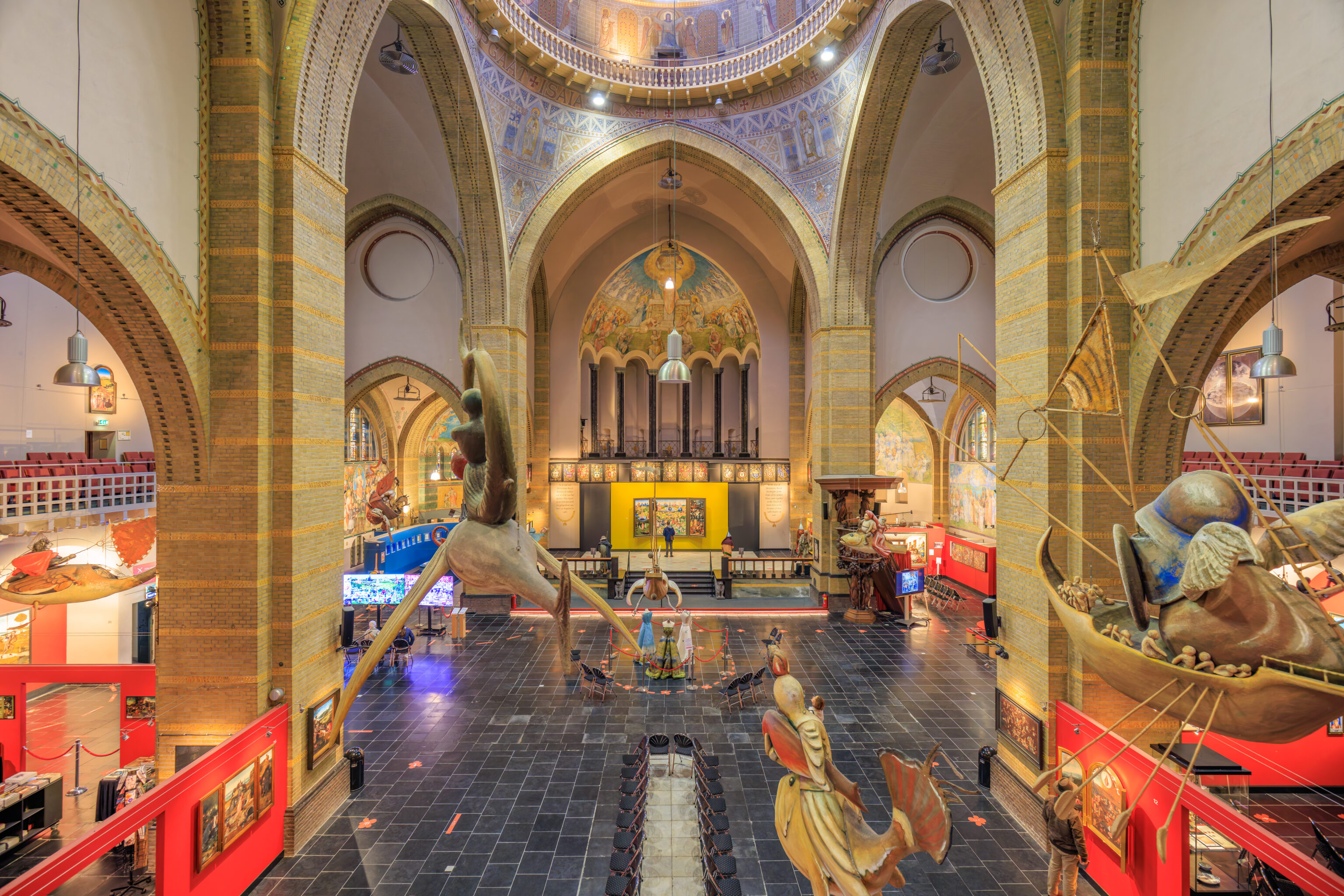
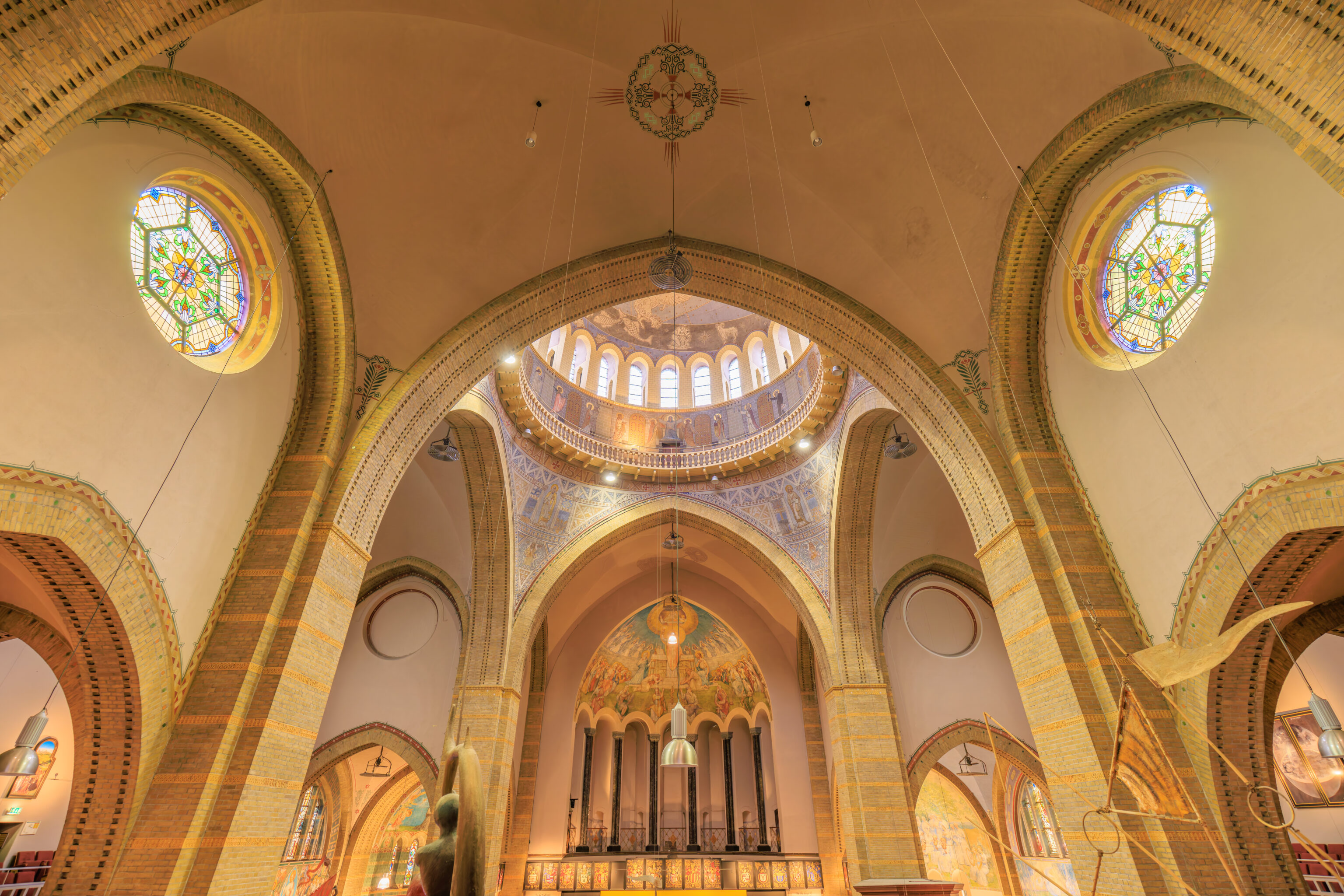
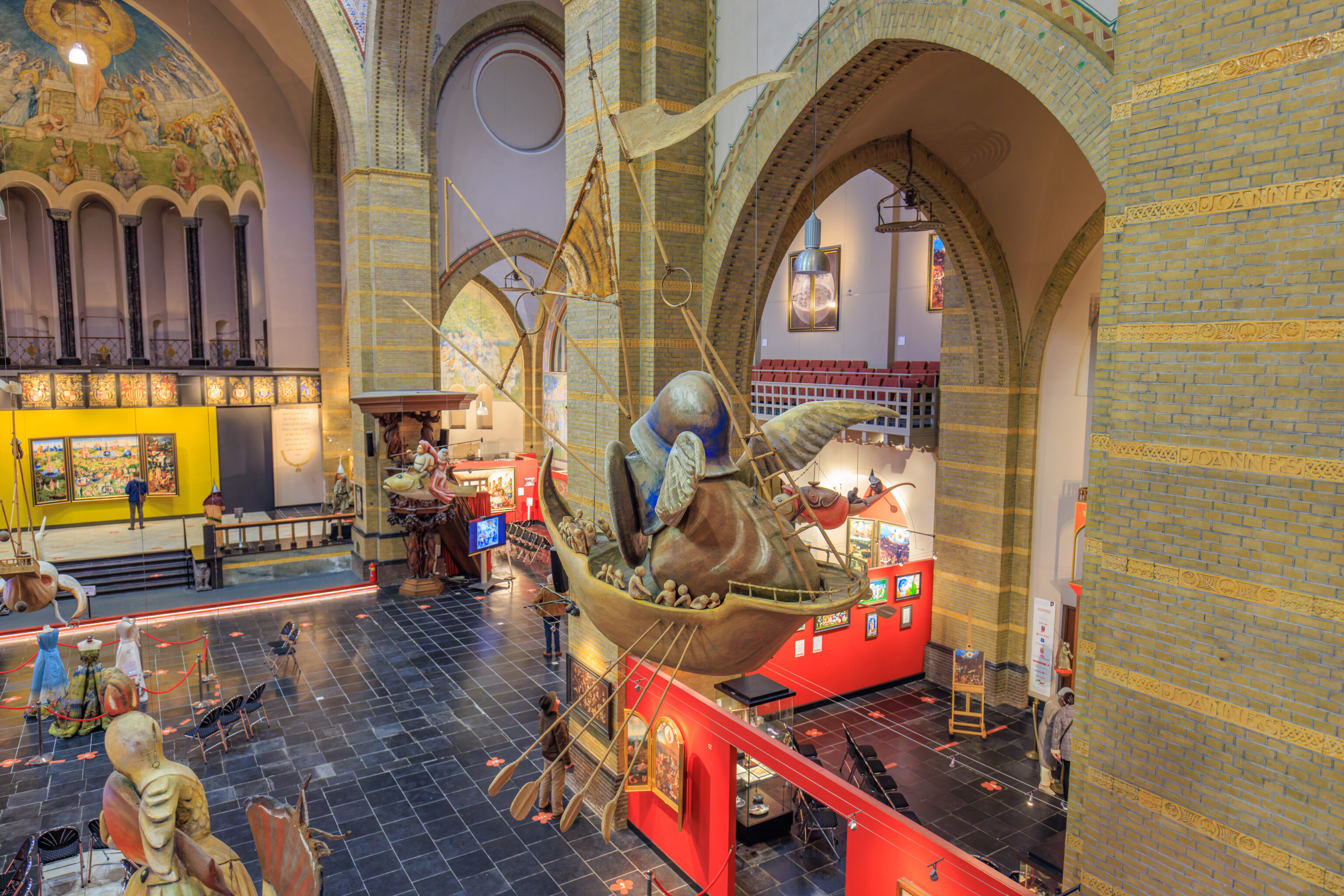
The view of the church interior from the balcony in front of the organ is pretty good!
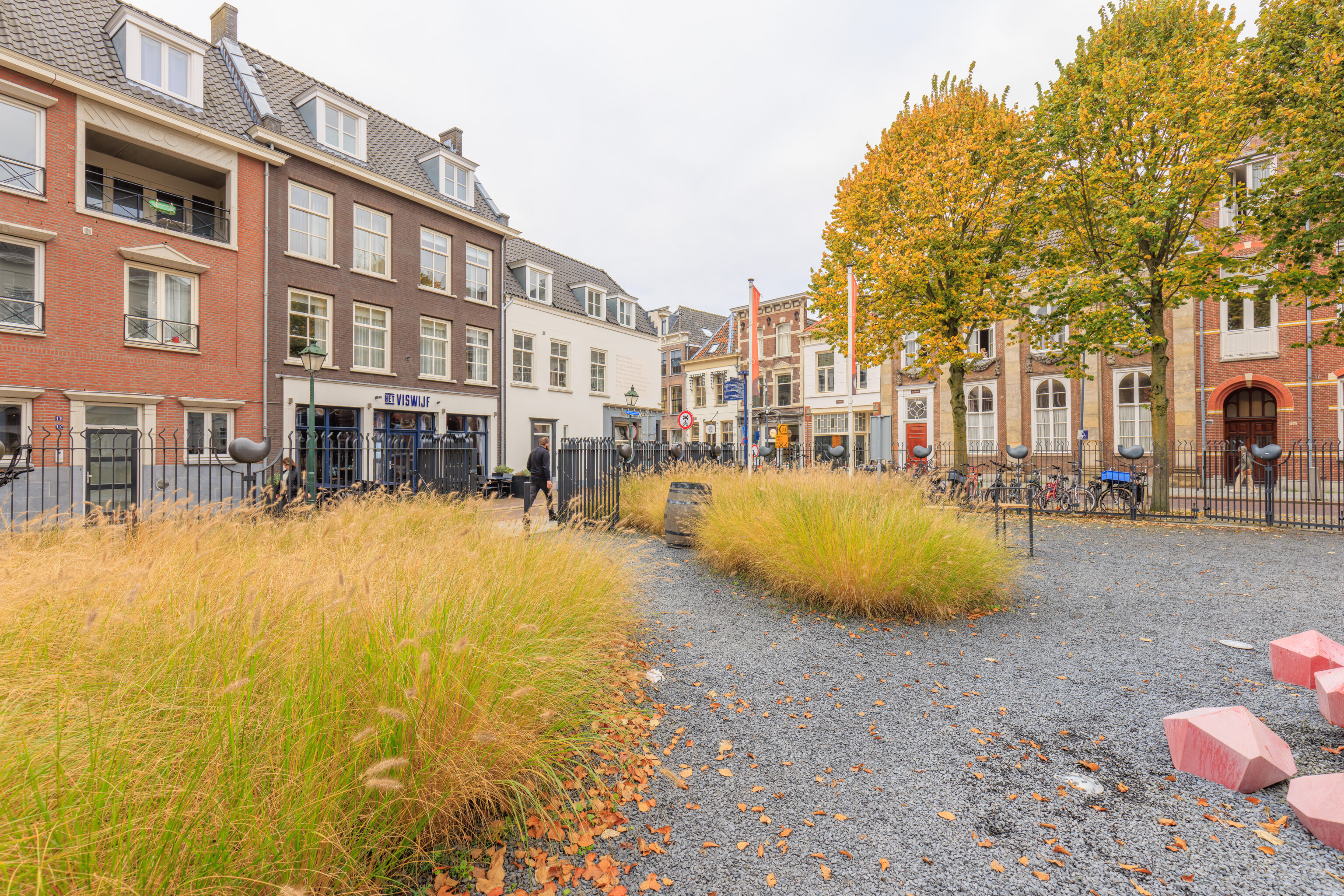
We headed back out at around 1:55pm as we were running out of time!
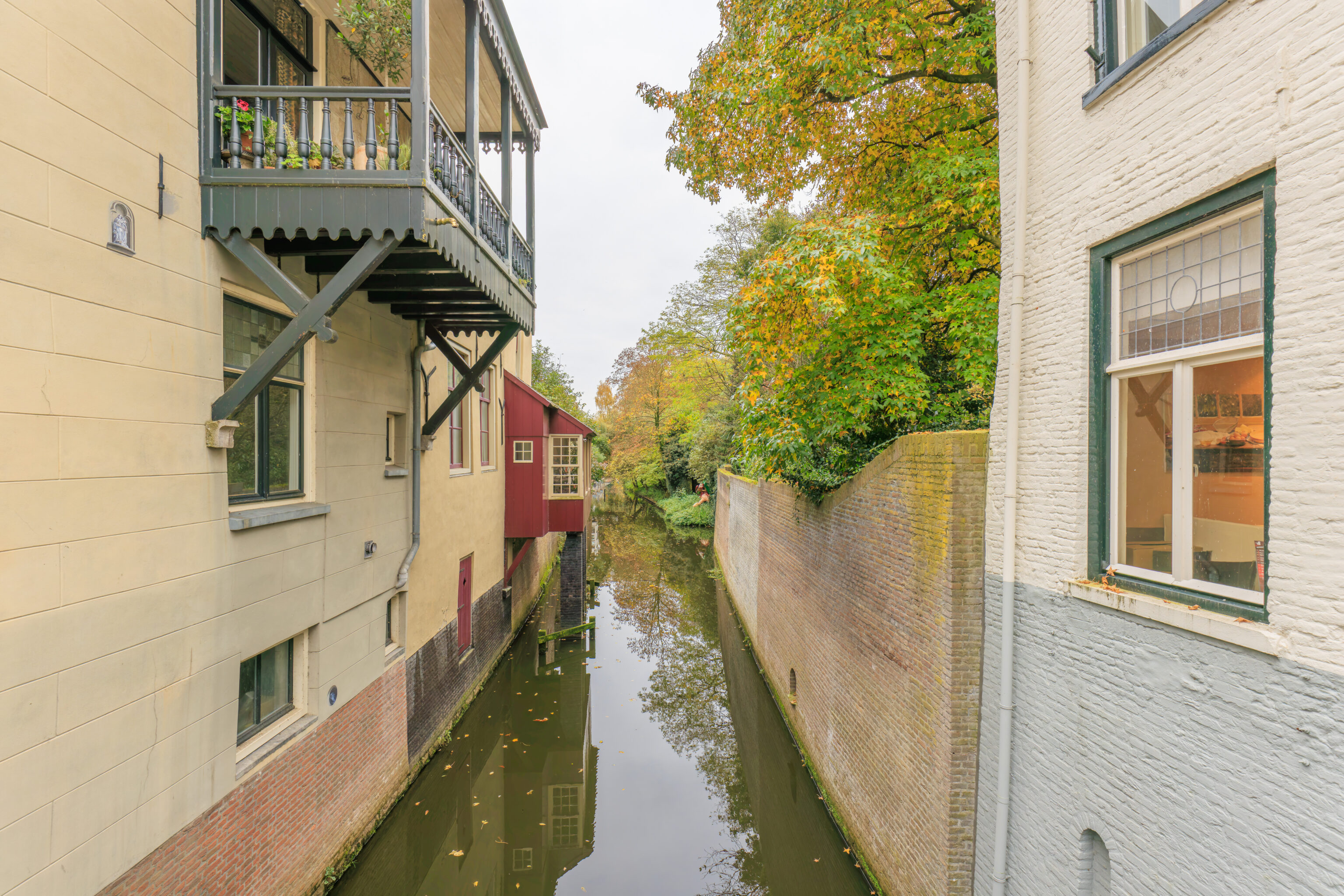
We started to walk back to the train station where we would meet up with our friend.
Sint Janskathedraalz
But first, we had just enough time for a quick visit to Sint Janskathedraal (St. John’s Cathedral).
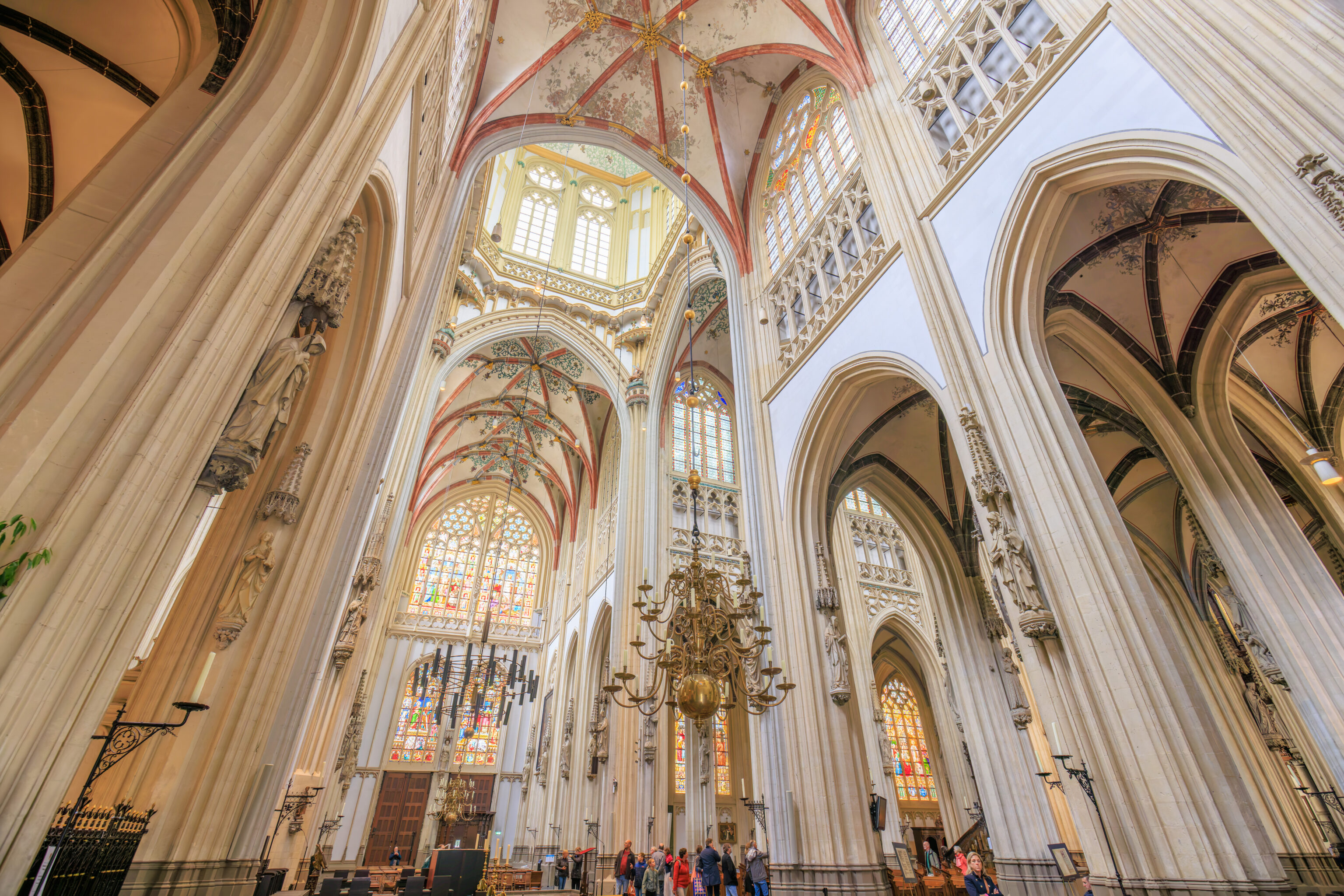
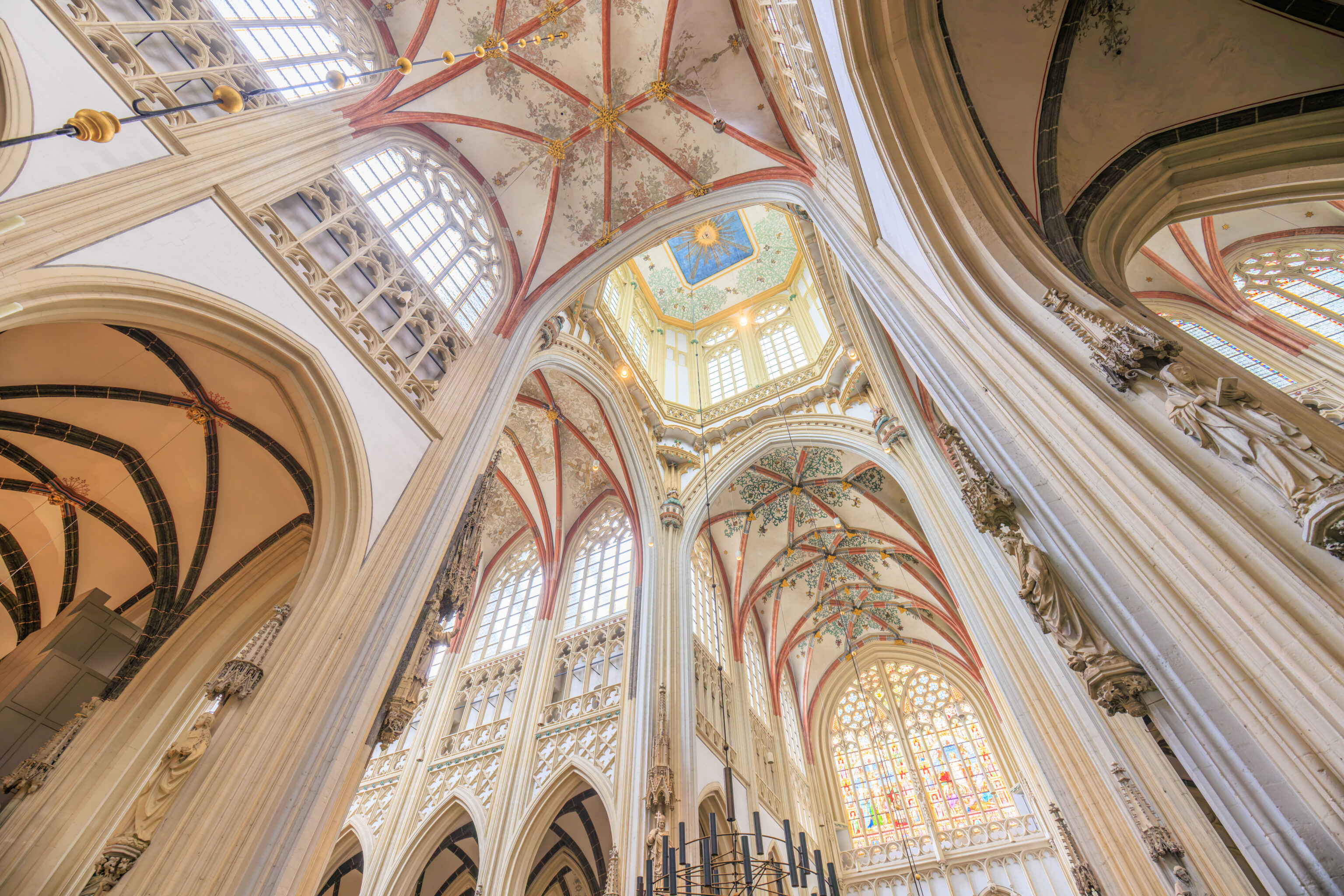
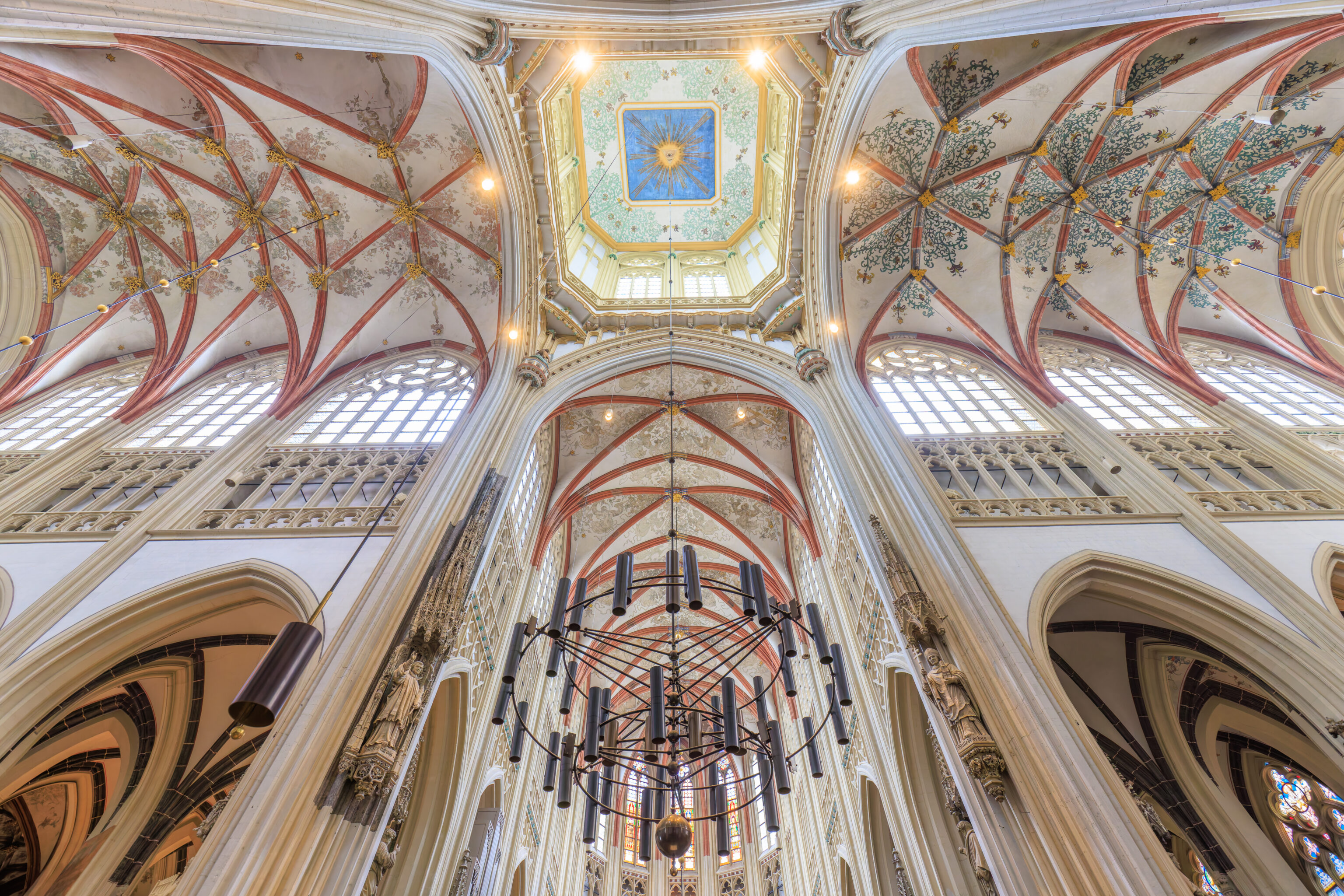
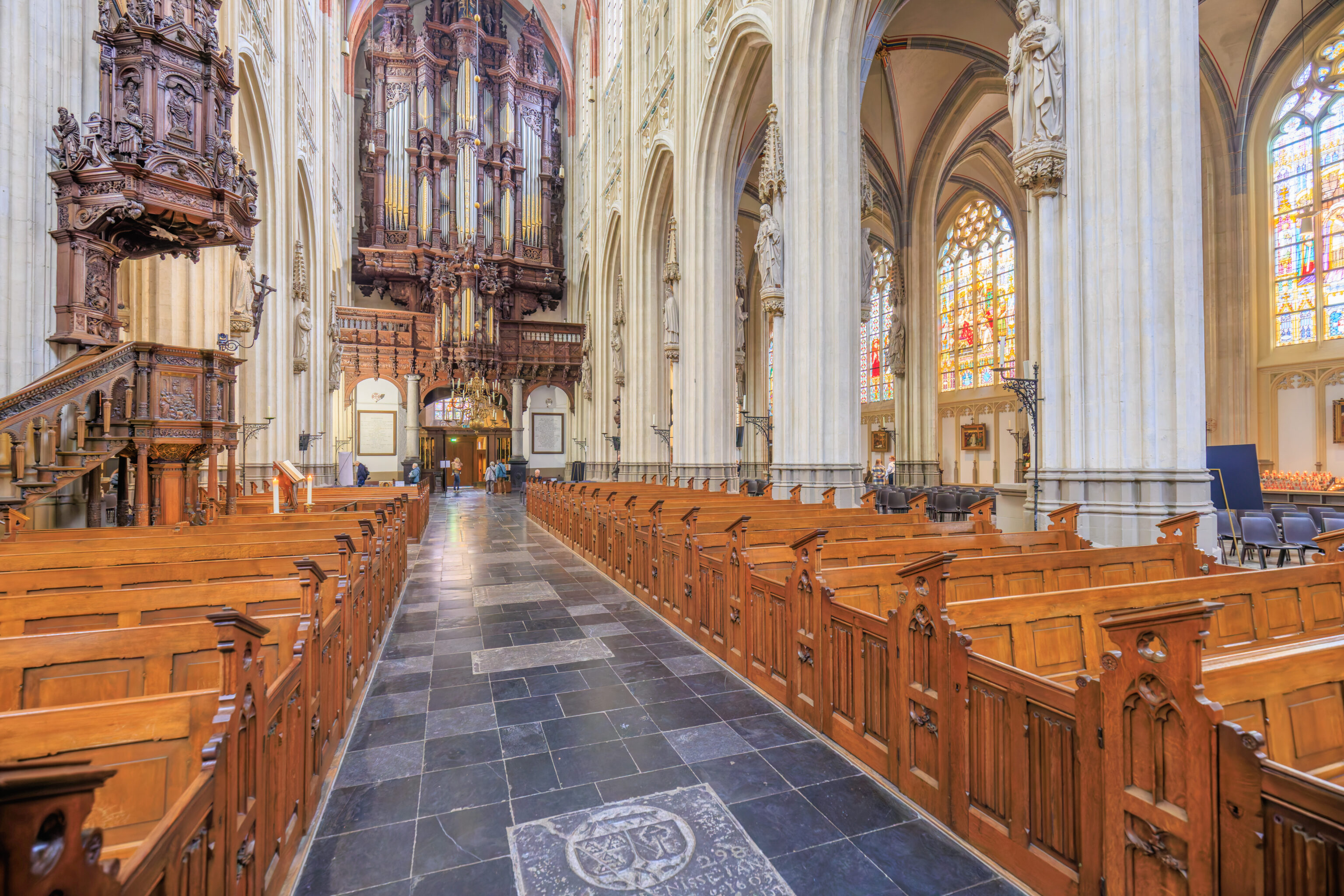
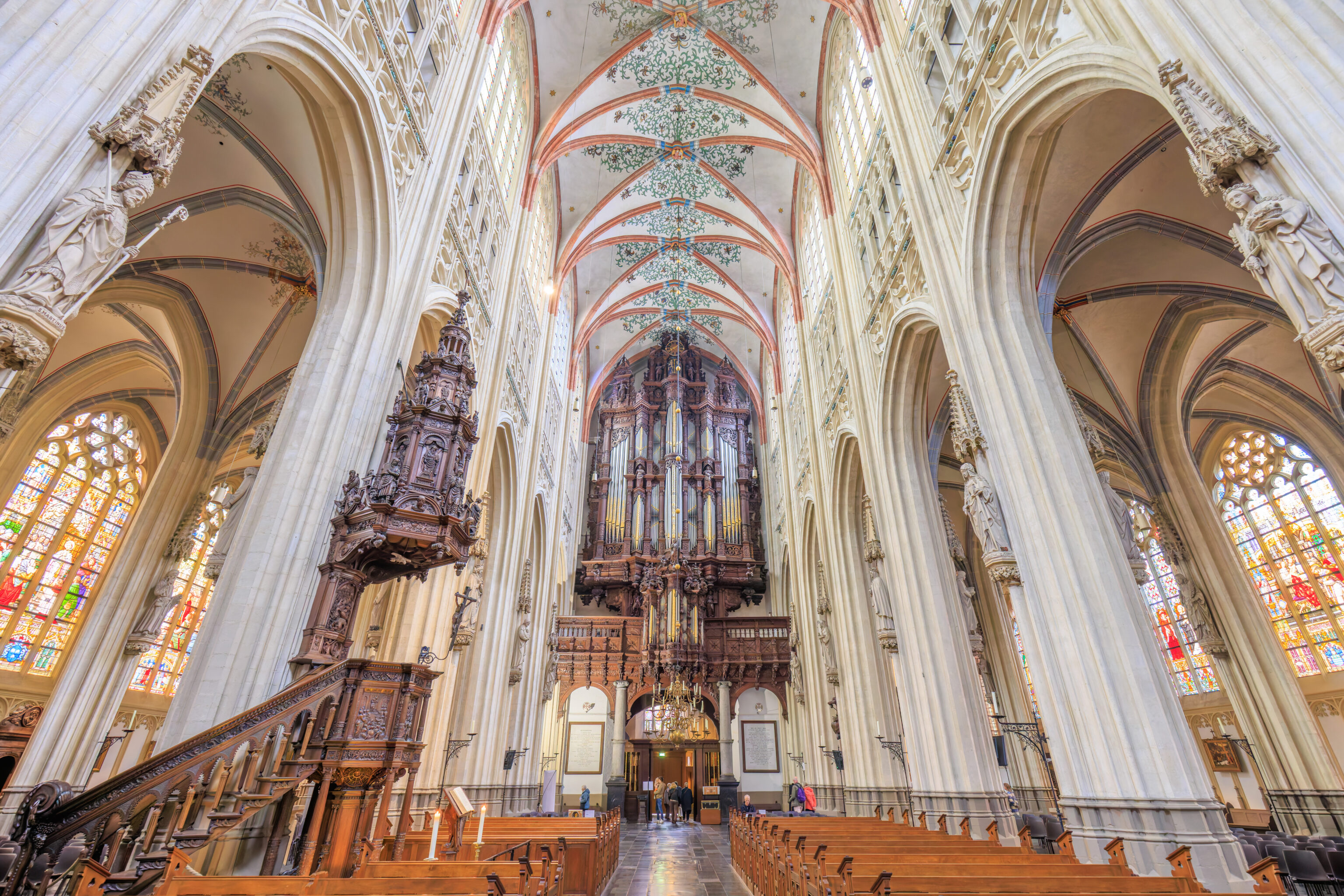
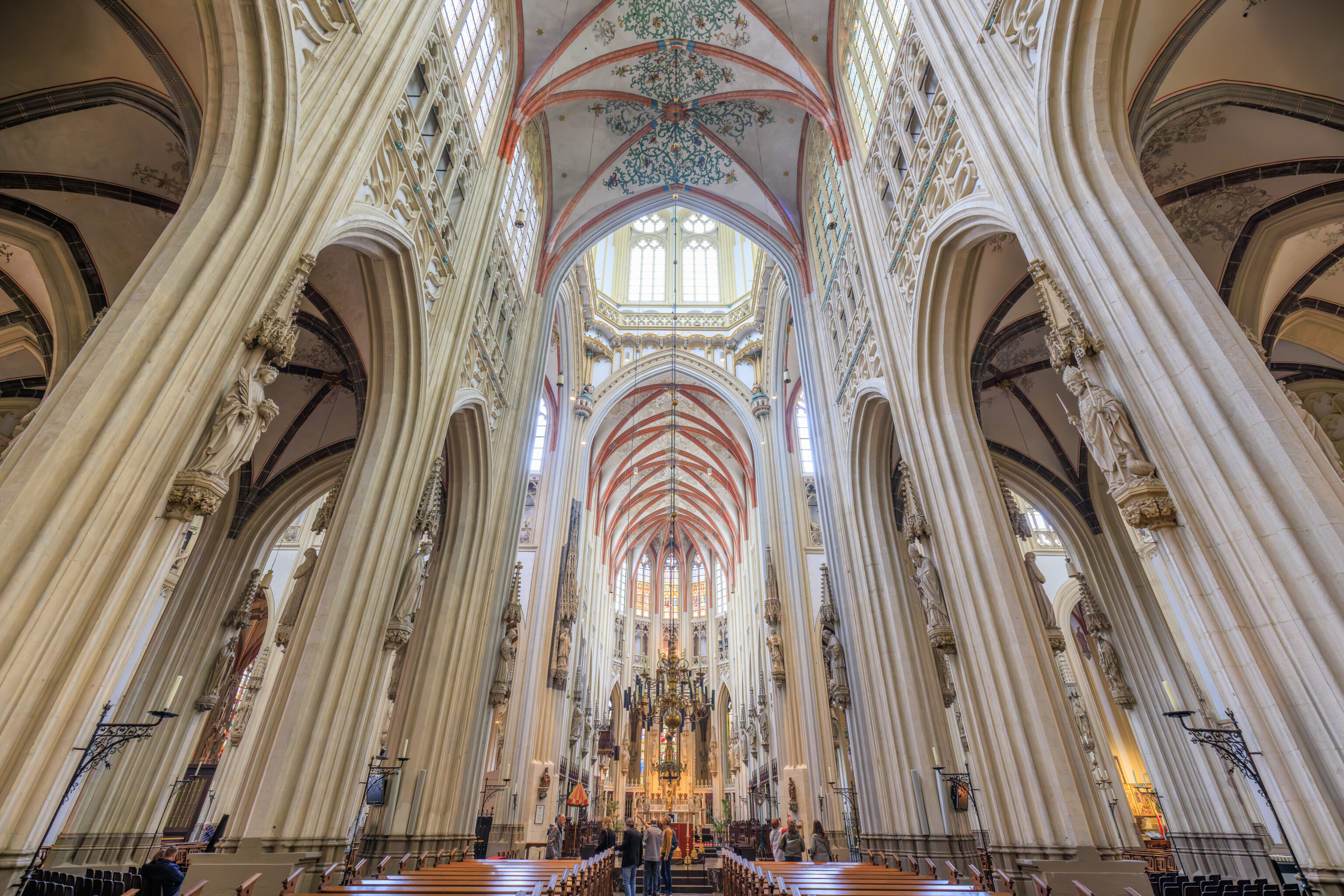
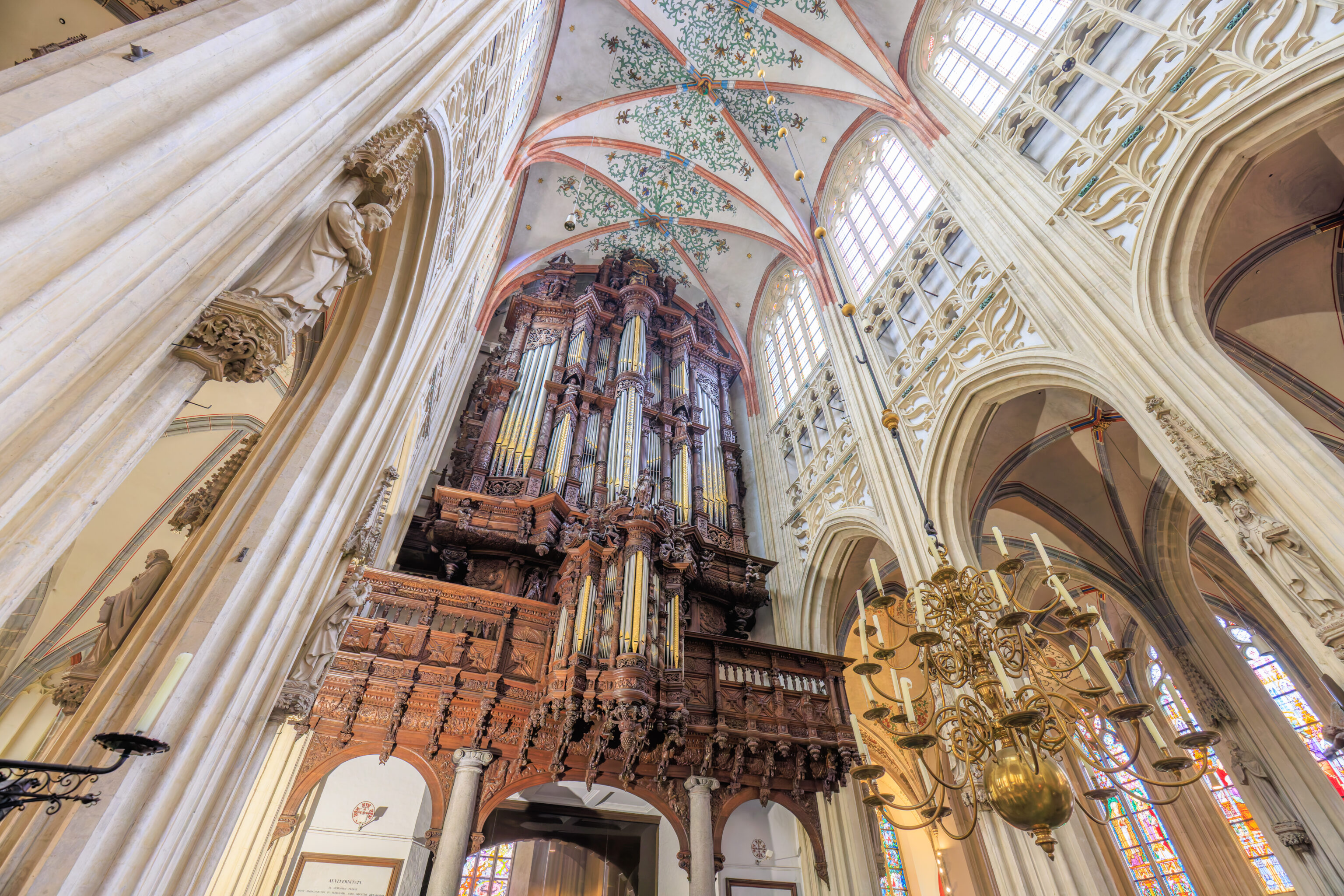
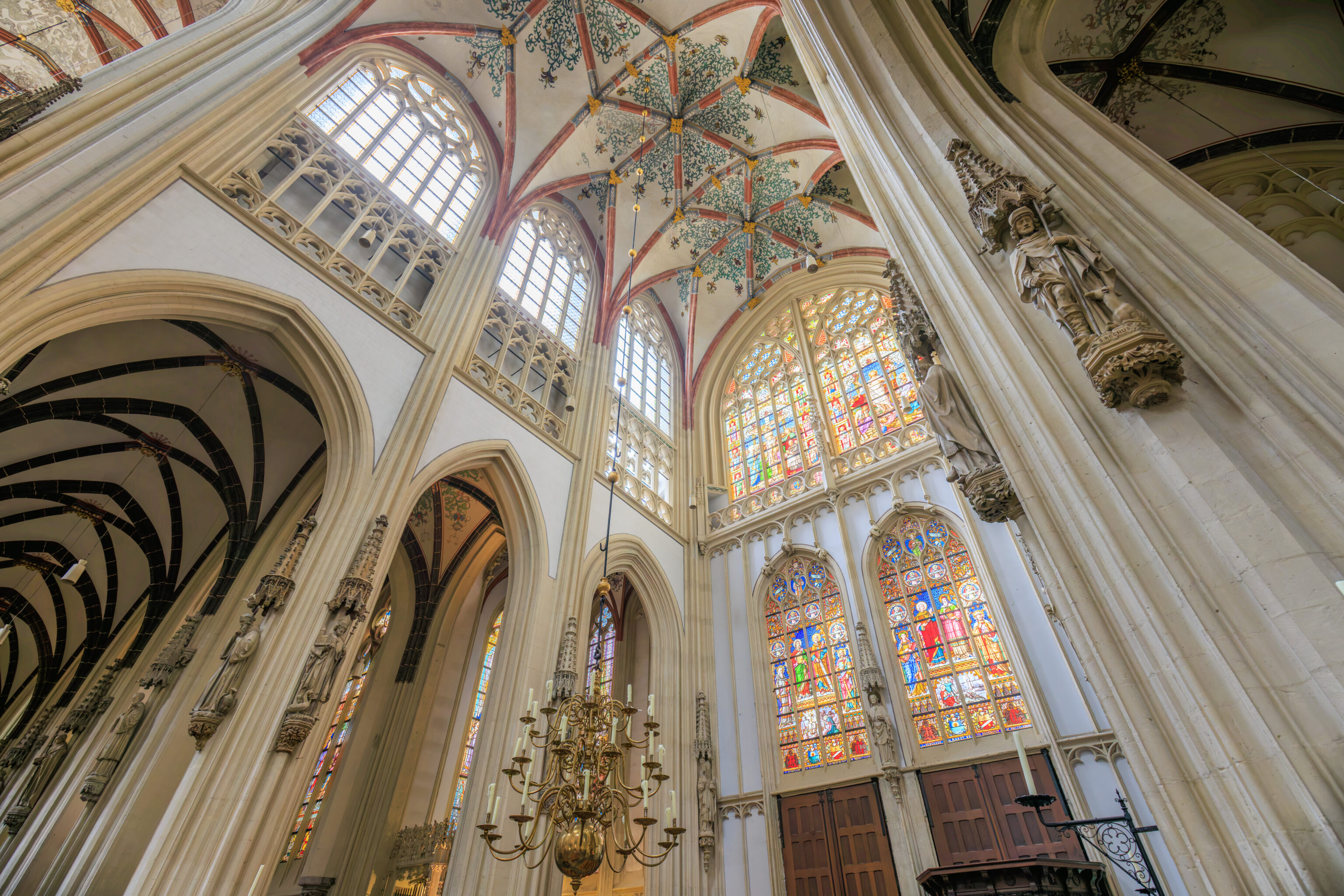
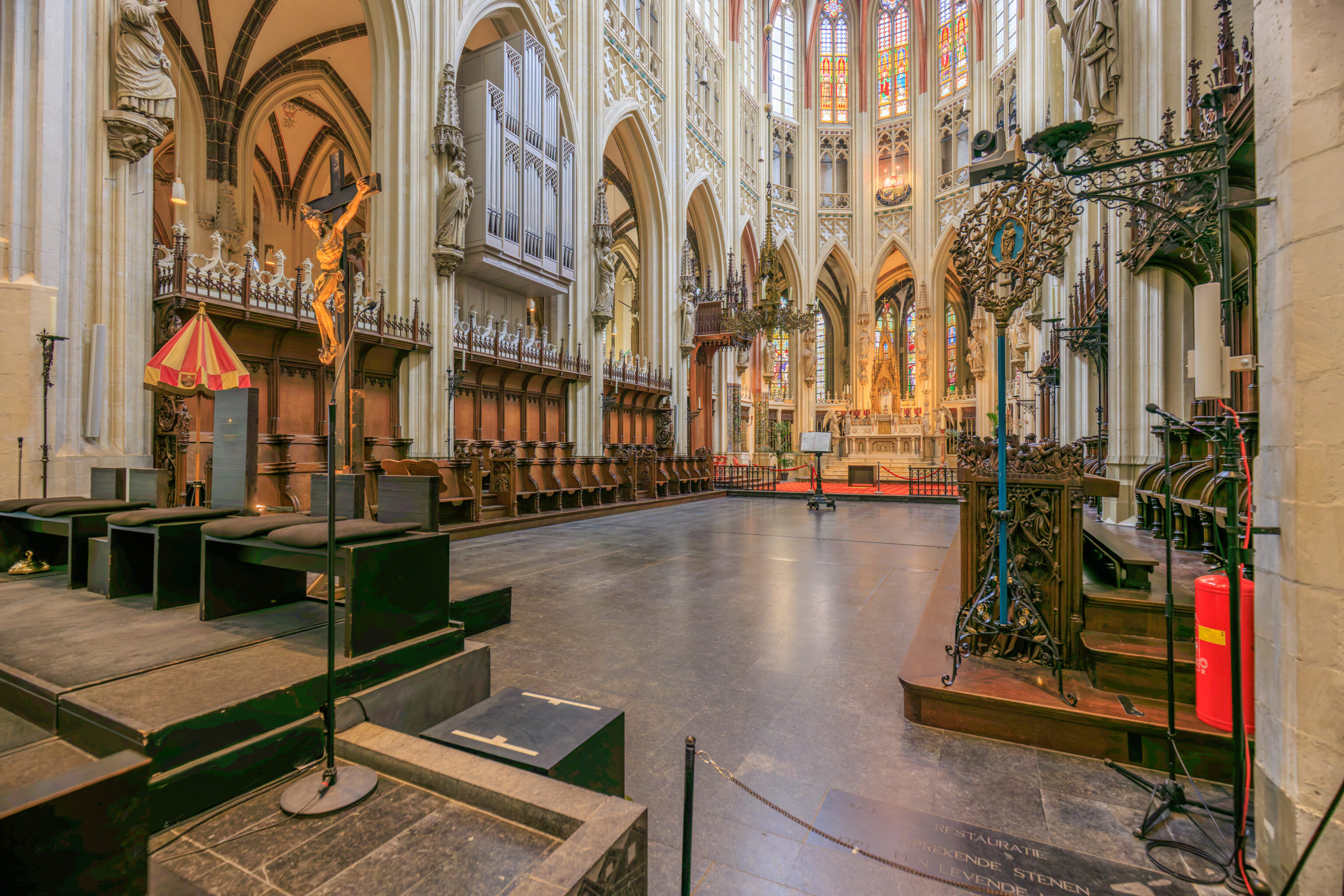
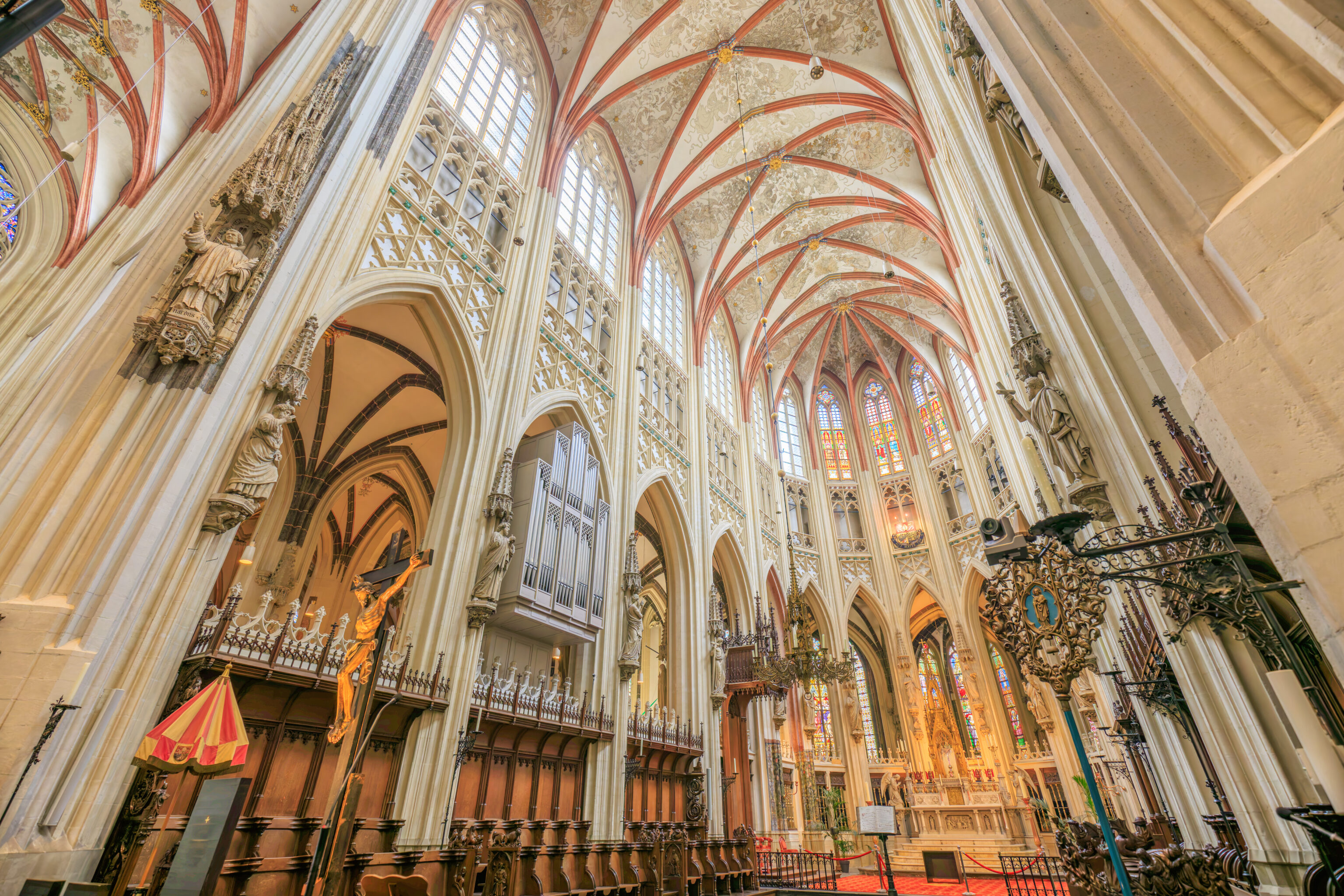
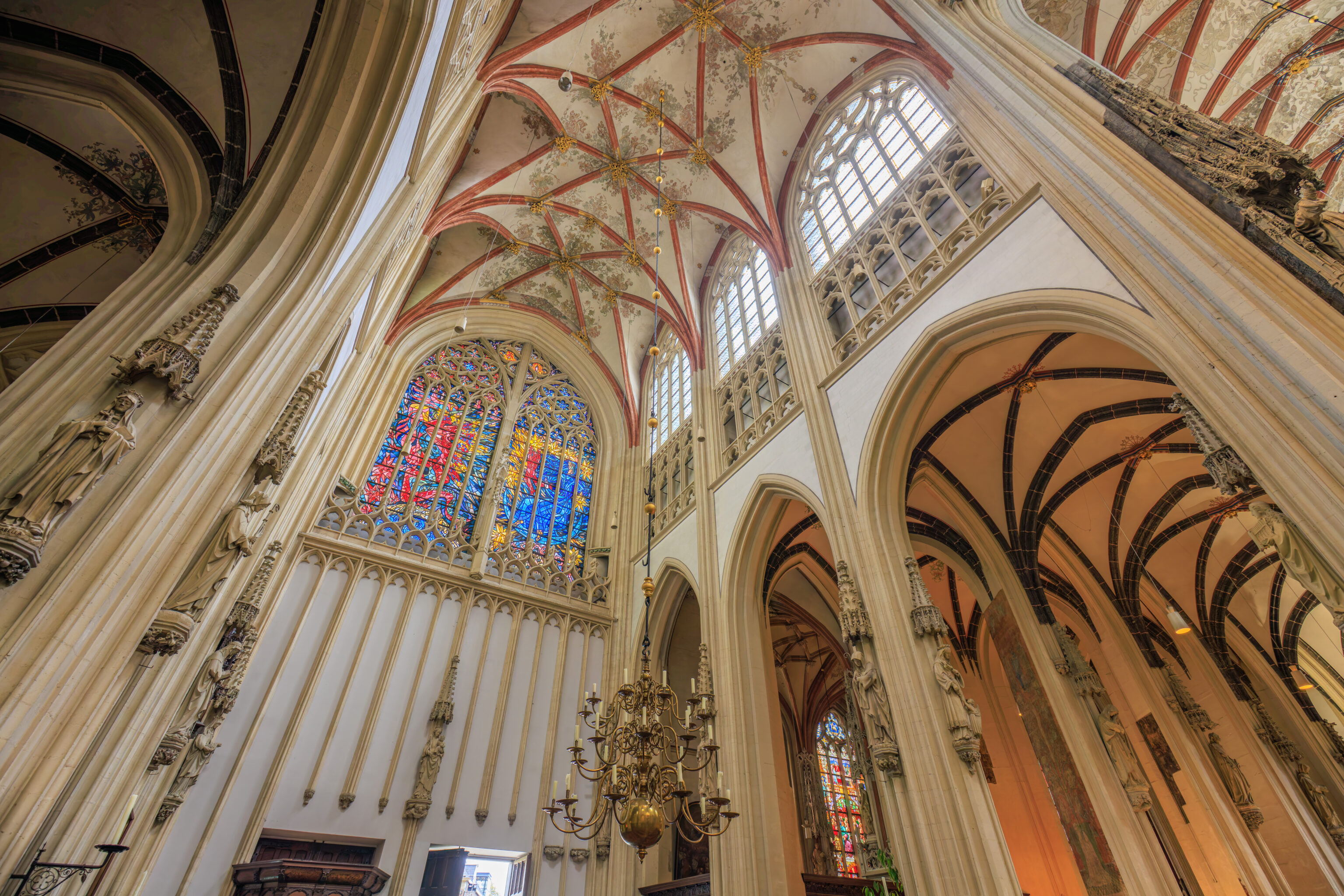
The interior of the cathedral was well decorated, though not nearly as elaborately as other cathedrals that we’ve been to.
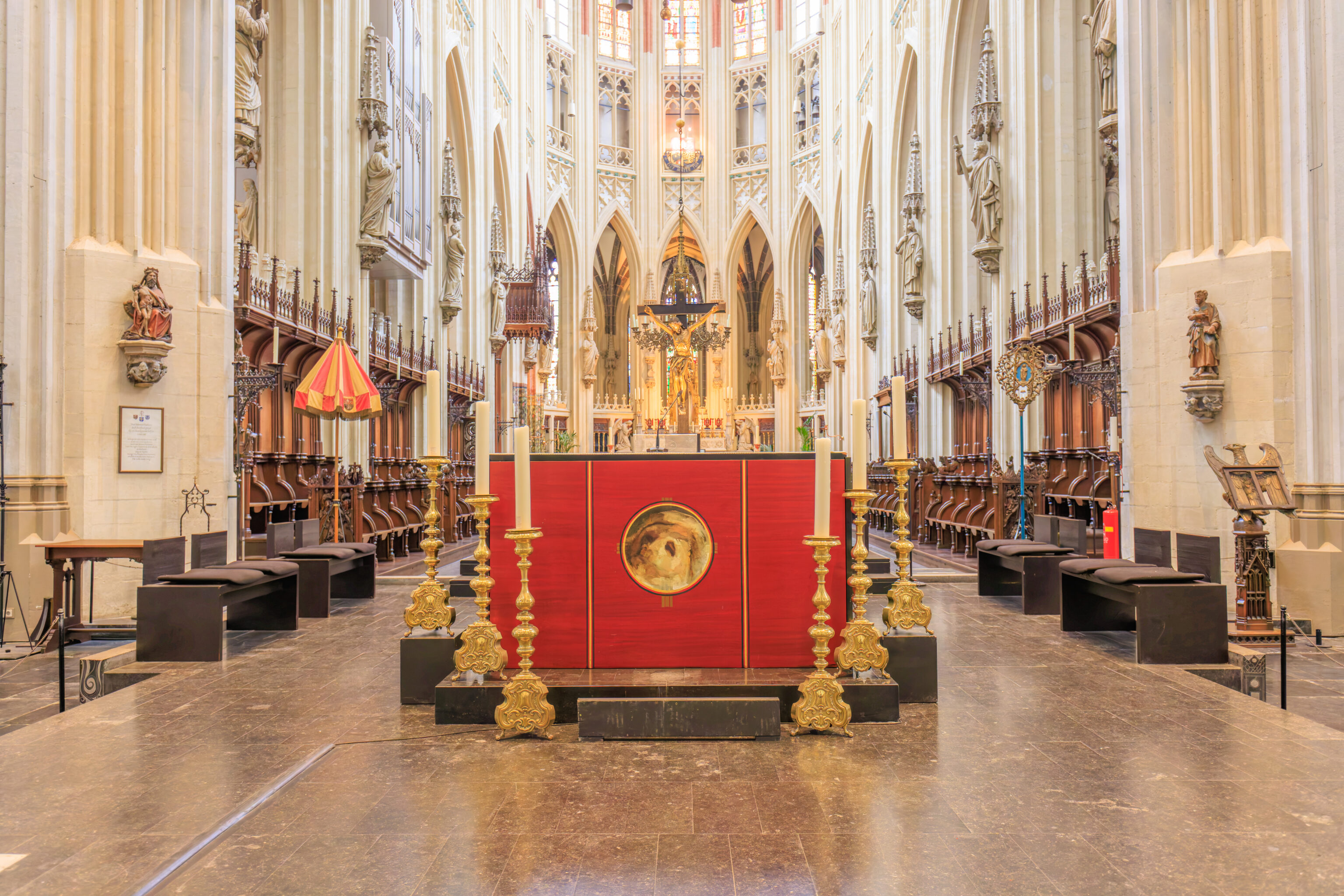
Not sure what the circular picture is supposed to depict?
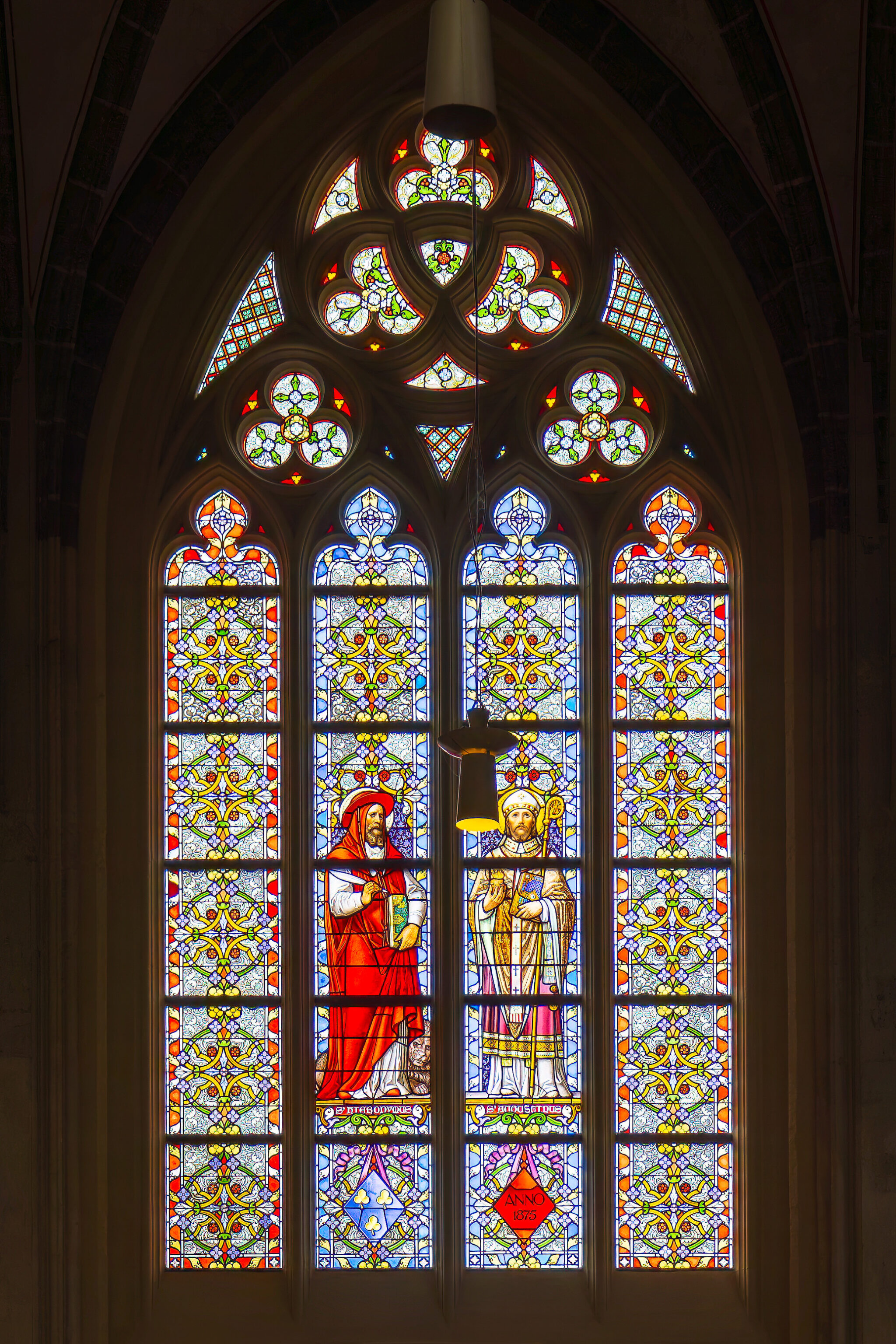
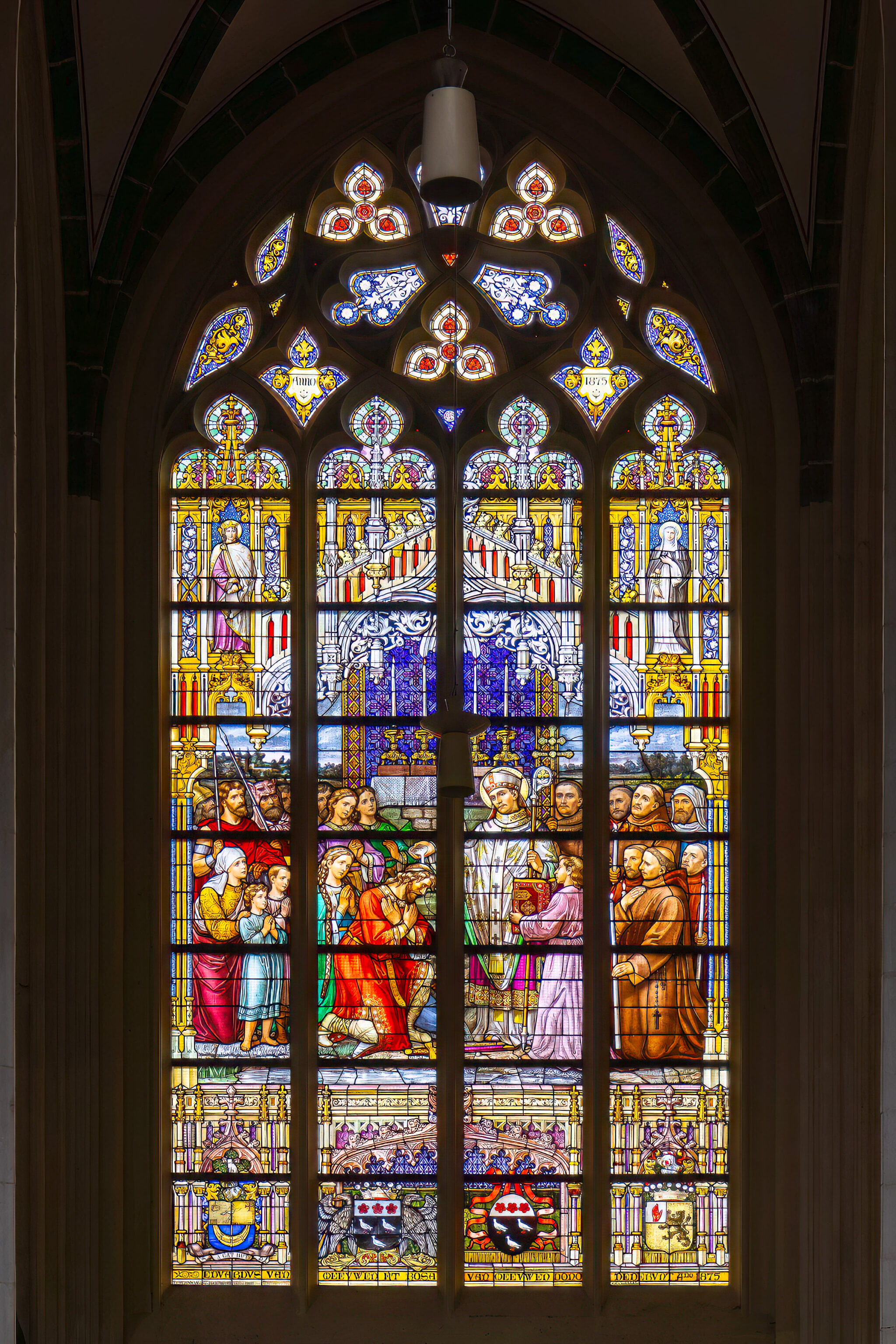
The cathedral has some stained glass windows, two of which we photographed.
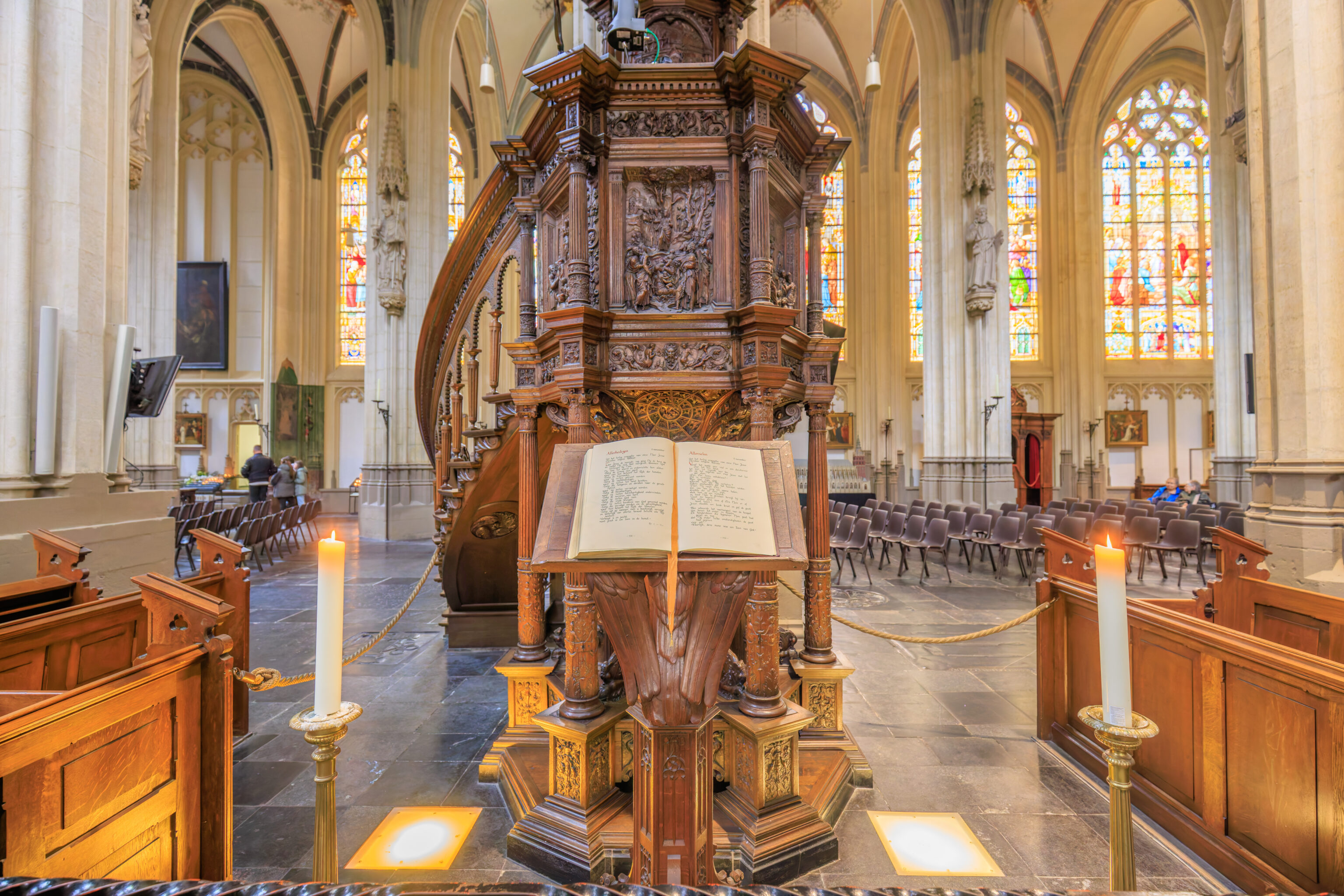
It’s all Dutch!
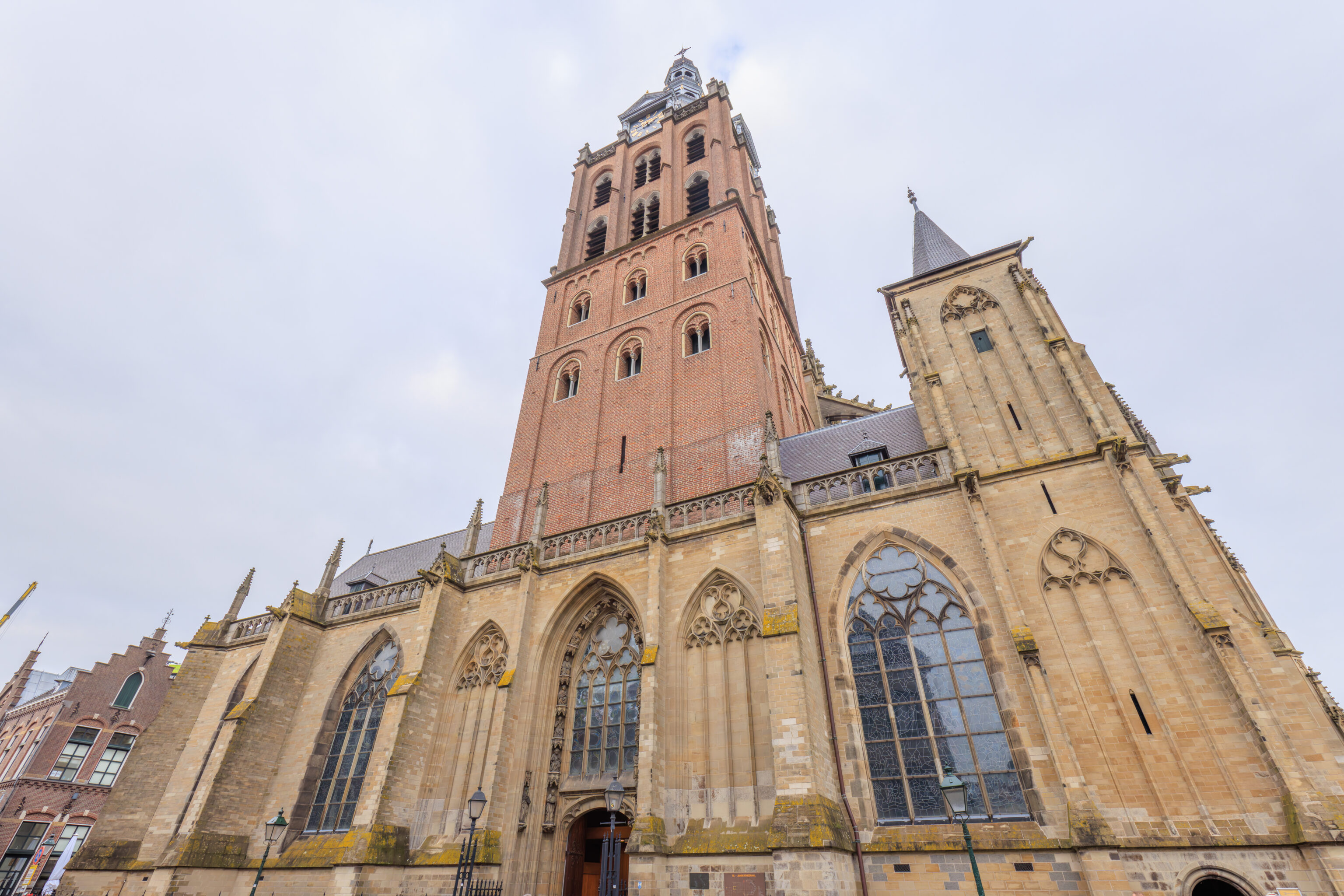
We spent just 15 minutes in the cathedral before heading out via the west side. While the building has a rather standard looking gothic appearance from the north side where we entered, it looks very different from here!
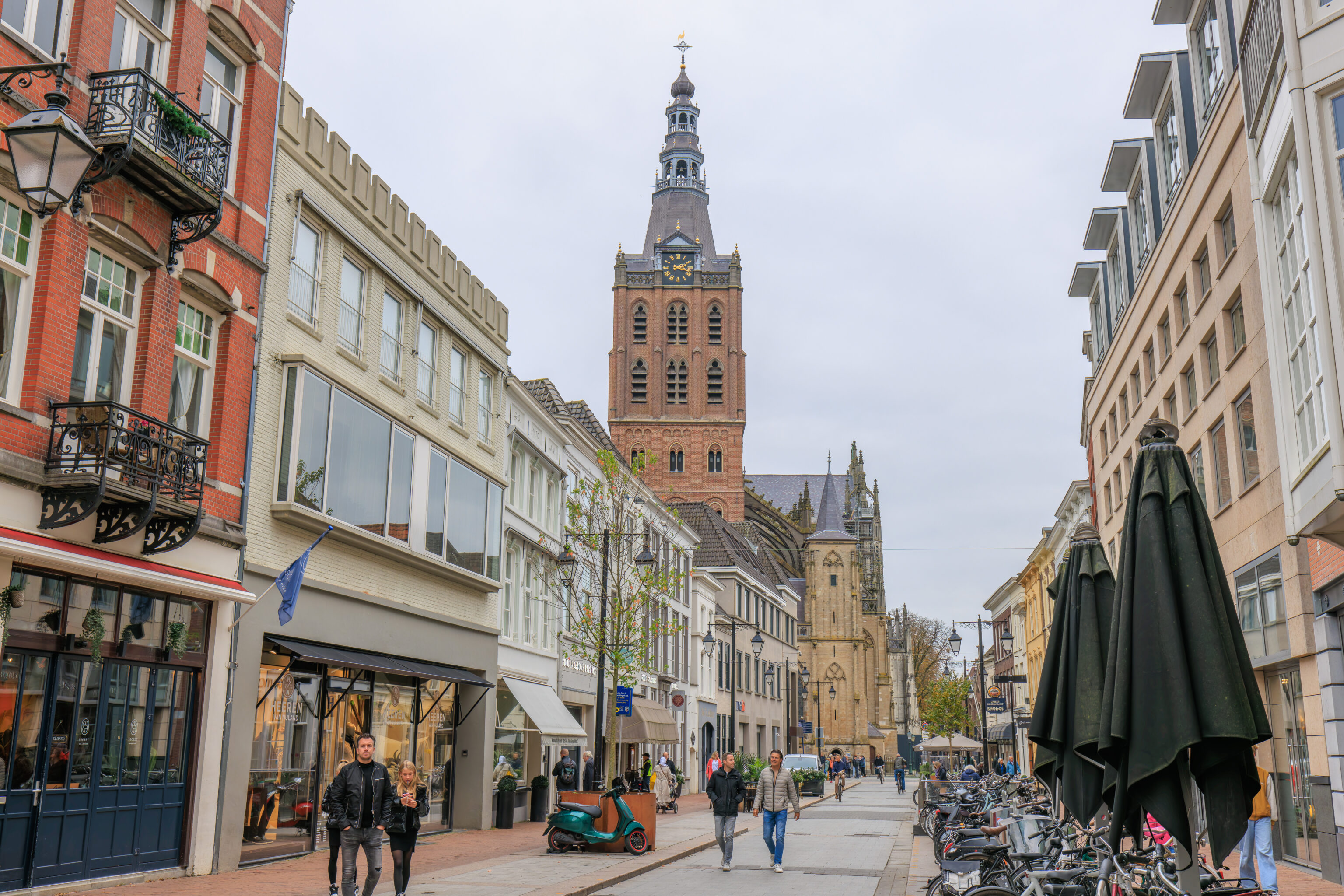
The brick tower really doesn’t fit in with the gothic design of much of the structure, some of which was visible as we walked further away to the west.
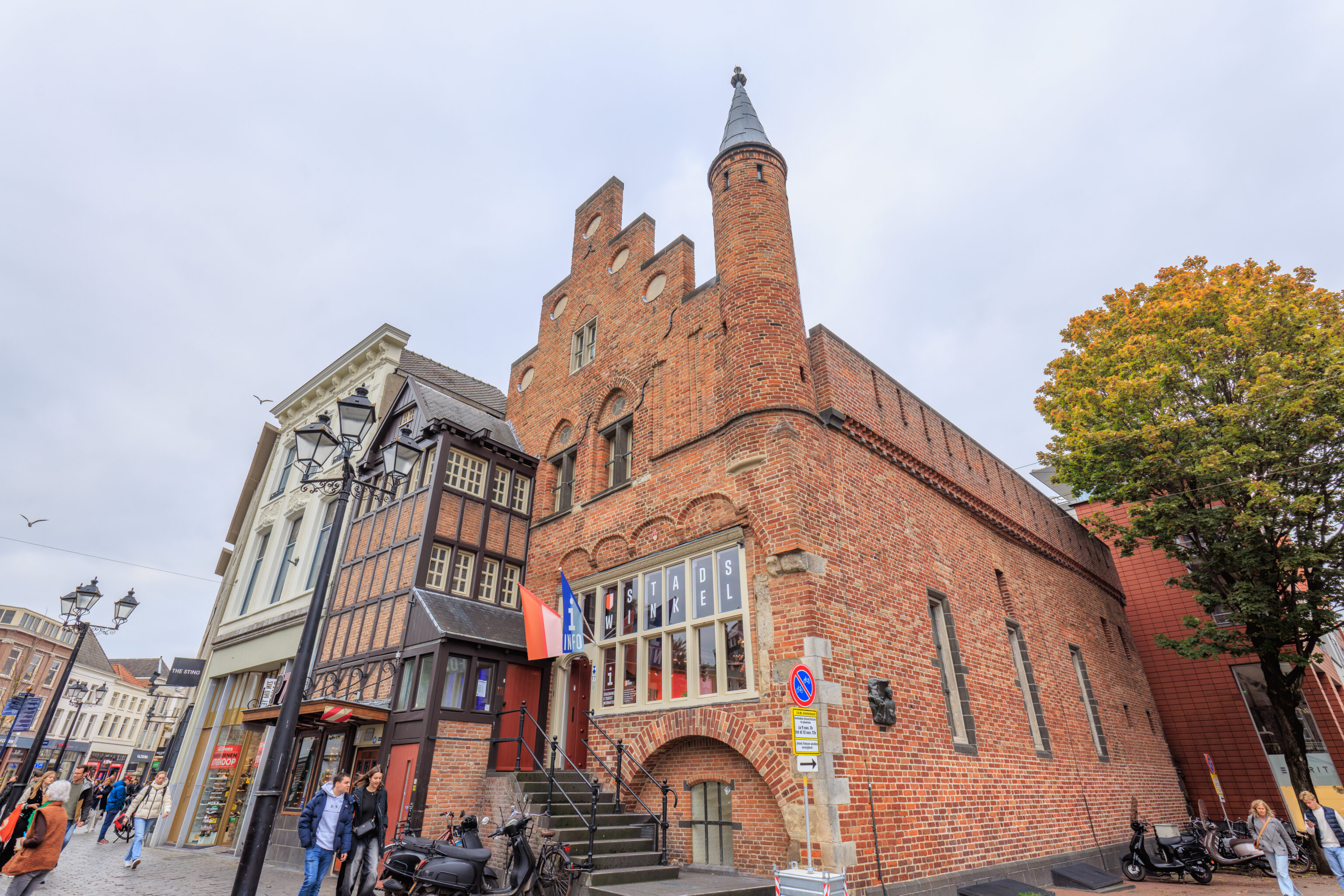
We passed by an information center on our way back to the train station. The building is interesting due to its one small turret. The text on the windows, stadswinkel (city shop), suggests that we could have bought Den Bosch merch here?
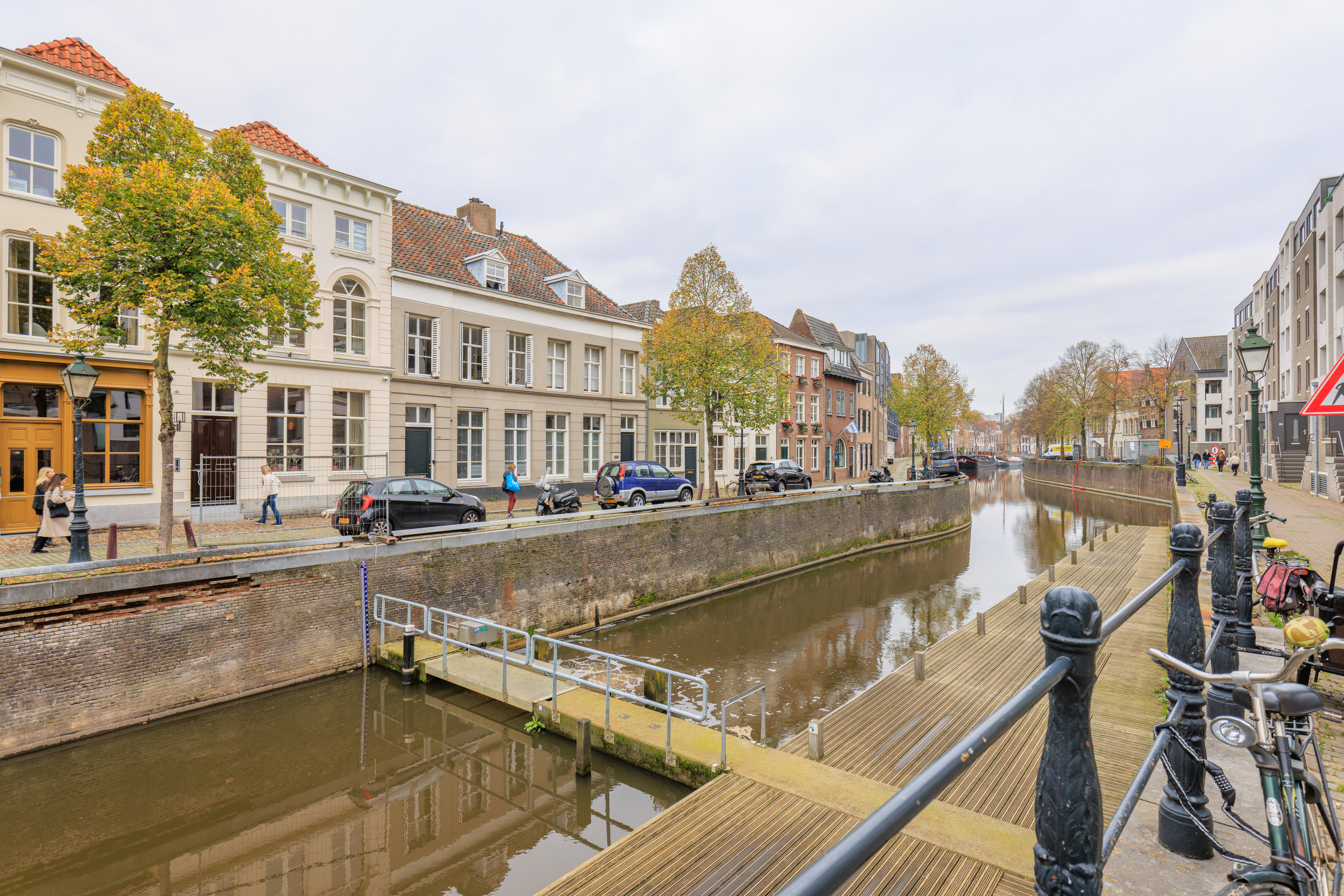
We took a different route back to the train station as before we were trying to locate the canal tour departure point. We passed by this canal lock, showing a bit of difference in the water levels on either side.
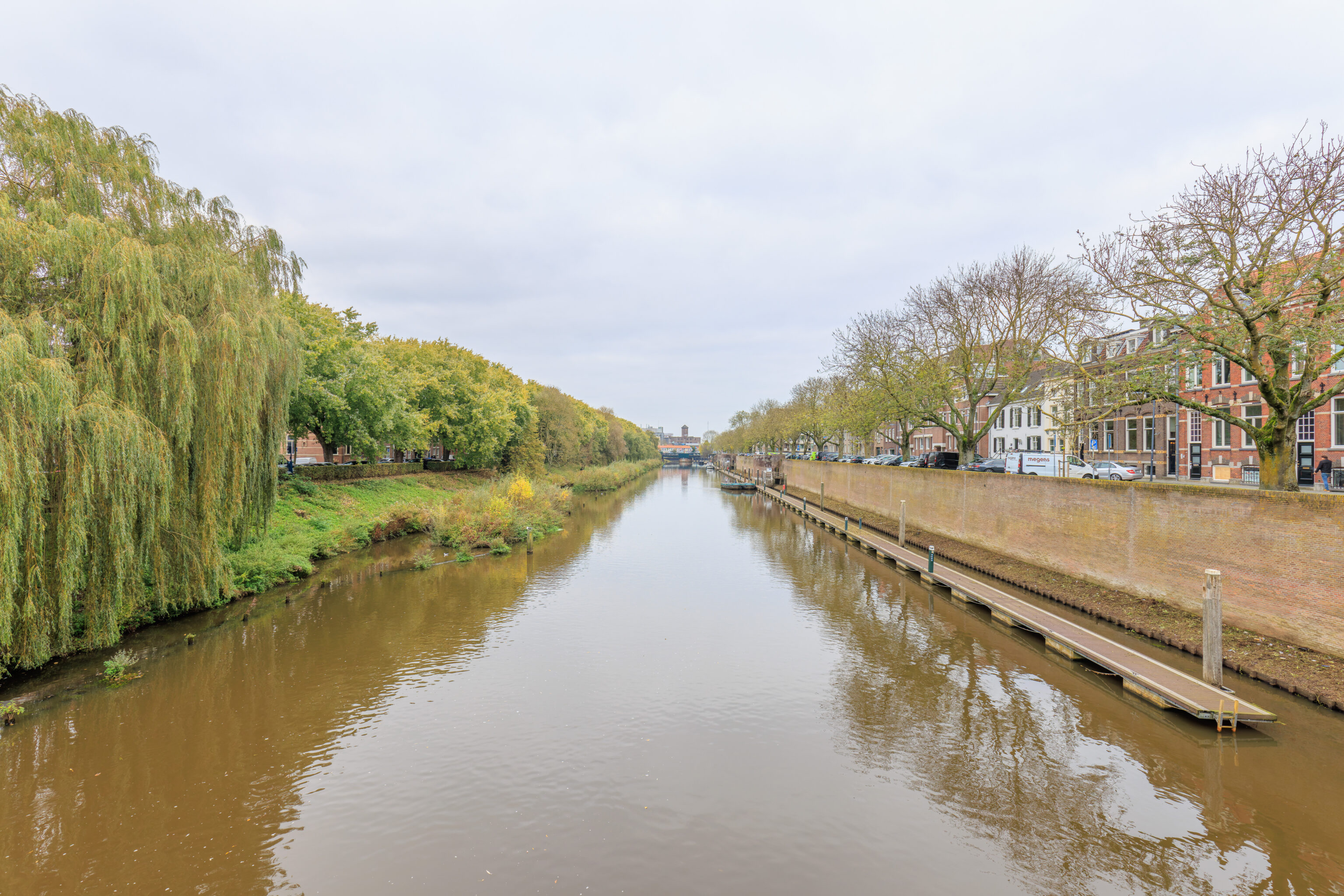
We crossed this bridge on the south side in the morning. This time, we crossed on the north side.
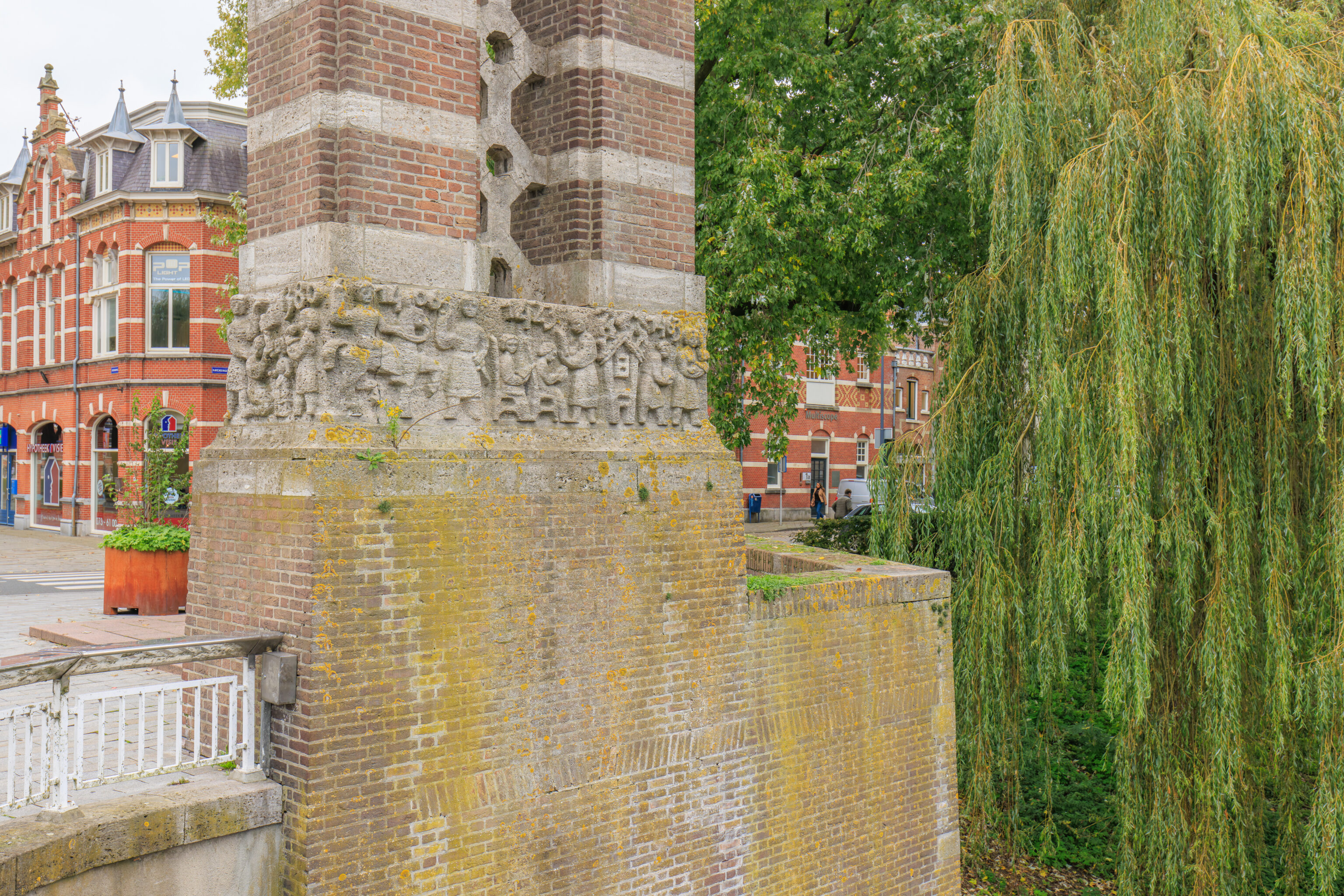
There were many people carved into this pillar at the west end of the bridge.
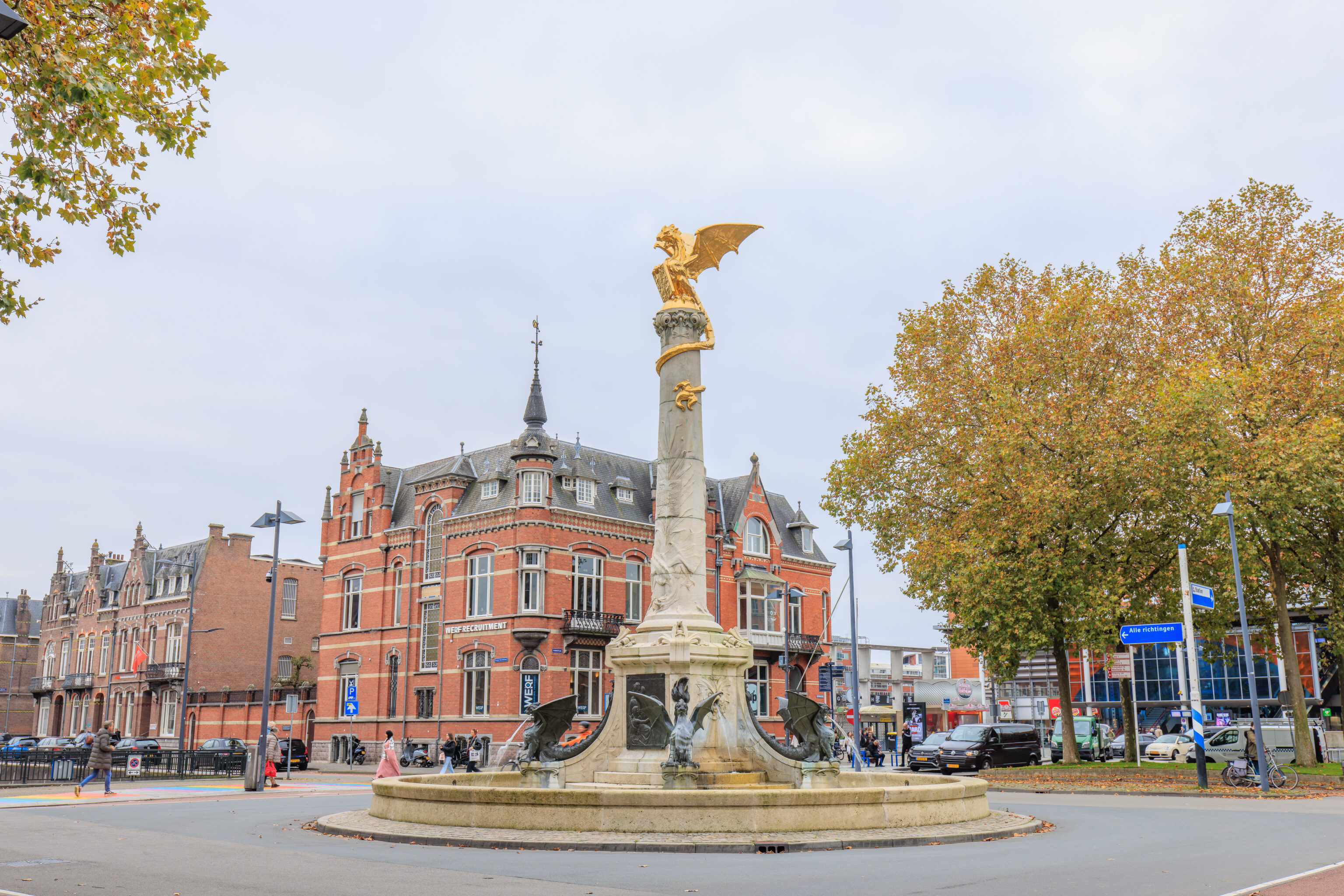
We passed by the dragon fountain again, but from the north instead of south.
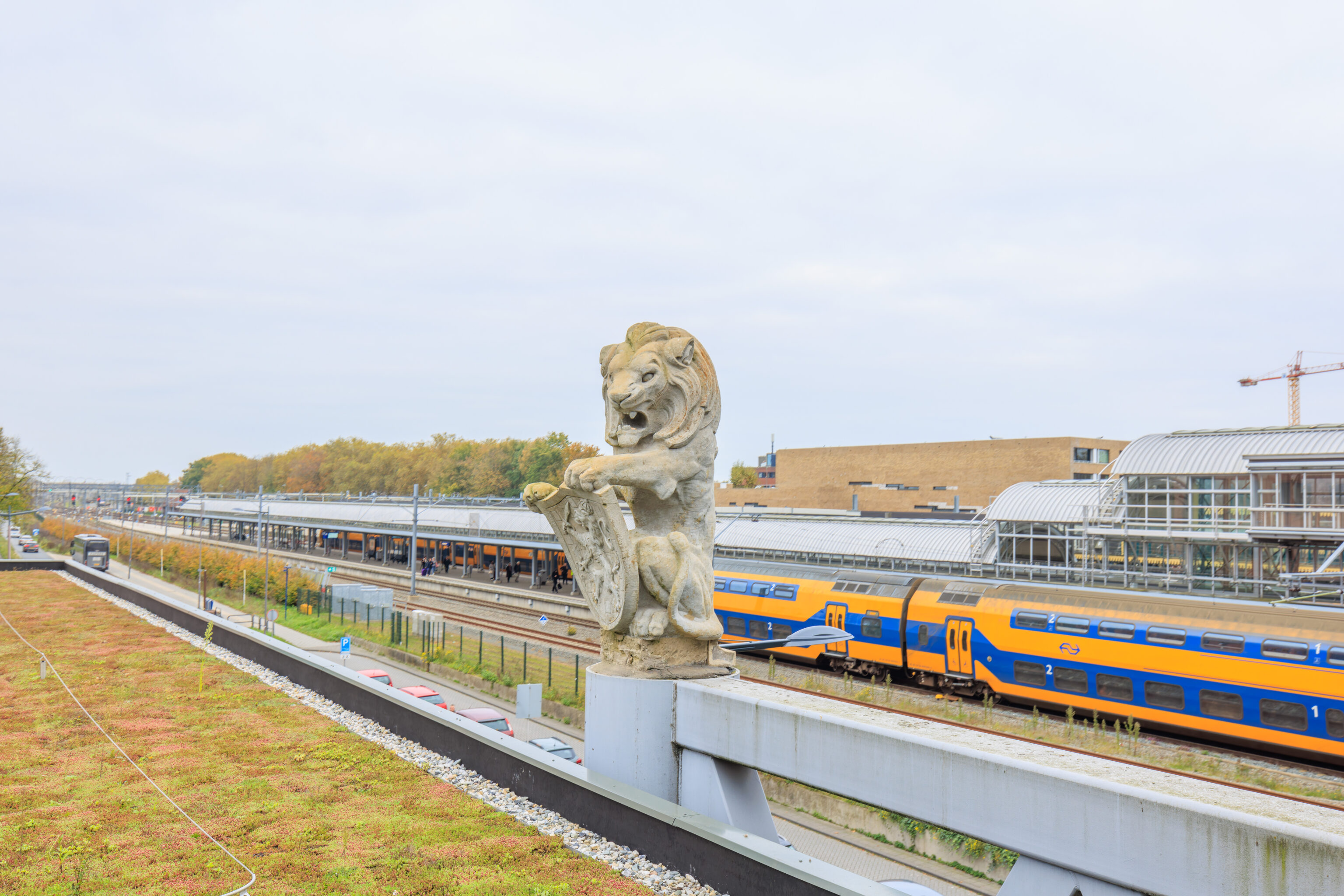
We passed through the train station, descending down an escalator on the west side of the station.
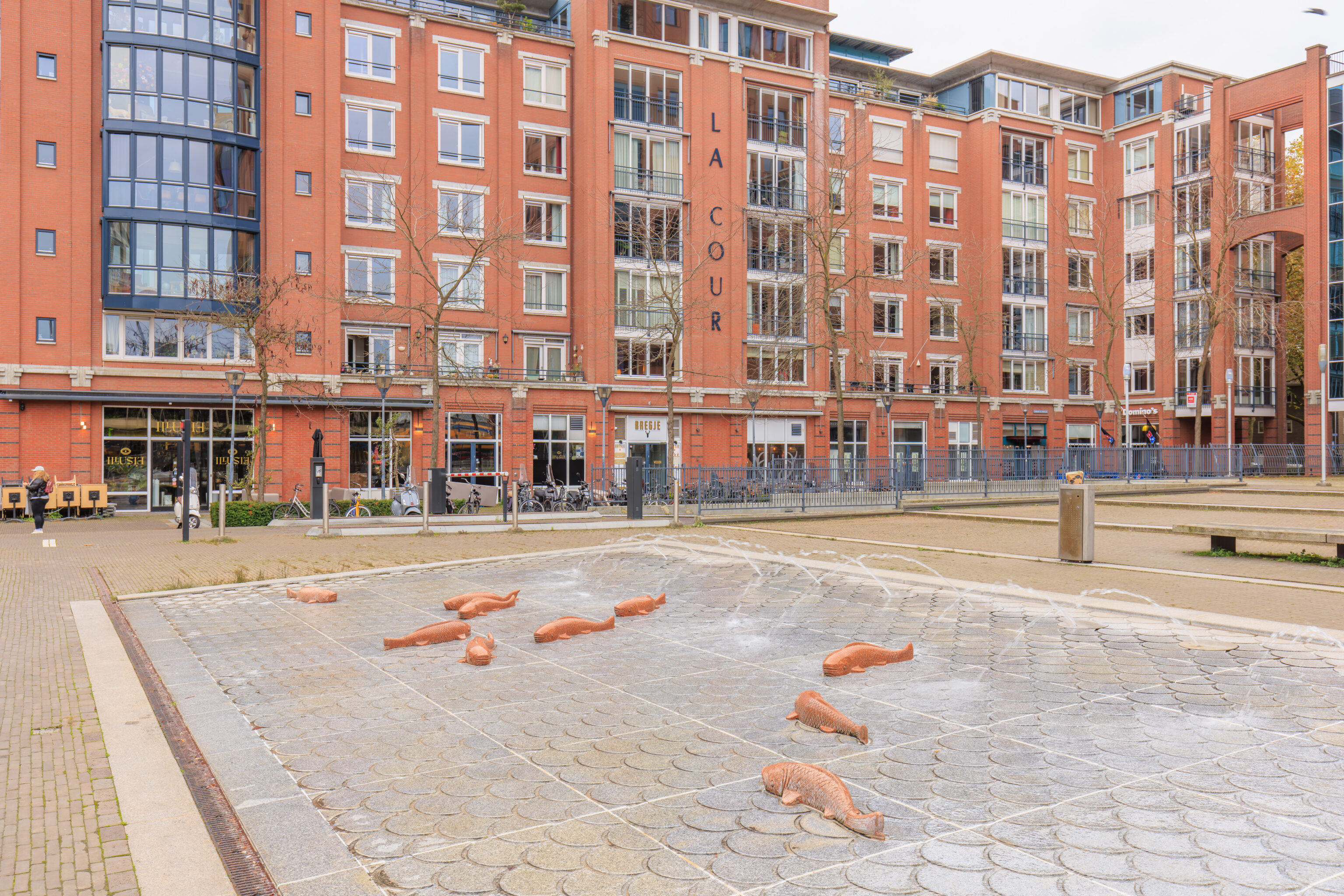
This small square is the Leonardo Da Vinciplein. This particular water feature is titled Vissen op het droge (Fishing on Dry Land) from 2011 and is credited to William Jans. There isn’t much about it online other than a reference to it being renovated in 2017. It shows up in a Dutch language Wikipedia page with a list of statues in the city.
We spent the rest of the day with our friend, returning here to the station in the evening to go back to Amsterdam. The train ended up being extremely crowded as the previous Intercity departure was cancelled. Other than that, and a bit of a wait for the tram to depart at Amstel Station, we made it back easily to the Apollo Hotel.
